War on Poverty
description: unofficial name for legislation first introduced by U.S. president Lyndon B. Johnson during his State of the Union address on January 8, 1964
223 results
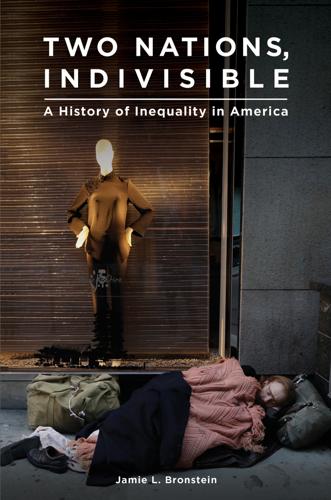
Two Nations, Indivisible: A History of Inequality in America: A History of Inequality in America
by
Jamie Bronstein
Published 29 Oct 2016
David Torstensson, “Beyond the City: Lyndon Johnson’s War on Poverty in Rural America,” Journal of Policy History vol. 25 no. 4 (2013): 587–613, at 593. 42. Ibid., 603. 43. Bailey and Duquette, “War on Poverty,” 360. 44. Quadagno, Color of Welfare, 57–58. 45. Lisa Gayle Hazirjian, “Combating NEED: Urban Conflict and the Transformations of the War on Poverty and the African American Freedom Struggle in Rocky Mount, North Carolina,” Journal of Urban History vol. 34 no. 4 (2008): 639–664, at 658. 46. Bailey and Duquette, “War on Poverty,” 367. 47. Bailey and Duquette, “War on Poverty,” 351; Robert Dallek, “Medicare’s Complicated Birth,” American Heritage vol. 60 no. 2 (2010): 28. 48.
…
Ultimately, federal expenditure on health, education, and welfare tripled.47 Finally, Congress and the Johnson administration in 1966 also expanded the scope of the minimum wage so that for the first time it applied to workers in industries doing more than $250,000 in business and to agricultural workers.48 ASSESSING THE WAR ON POVERTY Objectively, the War on Poverty was a success in the short run. The poverty rate in the United States declined from 19 percent in 1964 to its lowest point ever, 11 percent, in 1973.49 But while some of these programs were successful, they cost more than the public was willing to pay.50 The maximum tax rate for the highest earners was dropped from 91 percent to 70 percent, placing more of the burden of both the War on Poverty and the Vietnam War on the middle class.51 Johnson’s Great Society programs were also undermined by persistent racial divisions in the American working class.
…
By the 1960s, a concern with “pockets of poverty” in inner cities and Appalachia revived the discourse about inequality. Despite the expenses of a war in Vietnam, Democratic administrations pursued a “War on Poverty” that led to another period of policy experimentation. Medicare and Medicaid expanded the social safety net, and a number of community action agencies sought to involve poor people in providing their own services, but the characterization of the War on Poverty as a failure helped to stigmatize the poor. During the Nixon administration, the President’s Commission on Income Maintenance recommended a basic income guarantee for low-income Americans, the Family Assistance Plan.
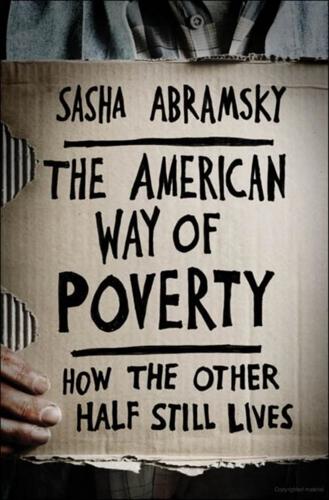
The American Way of Poverty: How the Other Half Still Lives
by
Sasha Abramsky
Published 15 Mar 2013
Department of the Treasury, 253 Utah, 178 Vasquez, Mary, 180–181, 182–183, 292 Veterans, 86 Victoria, Queen, 70 Village Academy experimental high school, Pomona, California, 20–22 Wage protection, 12 Wages, low, 180–183, 292–294. See also Earned Income Tax Credit; Living wage; Minimum wage Wagner Act, 83 Walker, Scott, 180 Wallace, Ginny, 18, 20, 126 Wallace, Henry, 73 Wallis, Jim, 121, 196 Walmart, 180–183, 295–296, 297 War on Poverty, 75, 77, 78, 81, 86, 101 failure of, 205–213 War on Poverty, new, 121, 196–197, 198 Warren, Elizabeth, 88, 325 Washington, D. C., 103, 127 Washington State, 149, 250 Wealth accumulation of, 64–65 concentration of, 26–27, 32–34, 53–54 and tax cuts for the wealthy, 207 and tax increases on the wealthy, 39–40, 82, 287–288 Weber, Max, 64 Welfare, 12, 44–45 barriers to accessing, 105 (see also under Social programs) and benefit cuts, 117 and benefit levels, decline in, 105–110 See also individual social programs; Safety net; Social programs Welfare system, history of, 66–82 Where Do We Go from Here: Chaos or Community (King), 79 Williams, Mark and Theresa, 169–170 Wisconsin, 180 Wisconsin Women’s Business Initiative (WWBI), 253 Women, 25, 82 Work trust fund, 201 Workers’ compensation, 71, 201 “Workfare for Food Stamps?”
…
But it did reflect a confidence in America’s innate sense of possibility; in an era of space travel and antibiotics, computers and robots, poverty was just one more frontier to be conquered, one more communal obstacle to be pushed aside. When it turned out to be an order of magnitude more complicated, Americans quickly grew tired of the effort. In 1968, four years after the War on Poverty was launched, Richard Nixon won election to the White House, in part by stoking popular resentment against welfare recipients. Twelve years after that, Ronald Reagan was elected president on a platform of rolling back much of the Great Society. Today, after four decades during which tackling economic hardship took a distant backseat to other priorities, one in six Americans live below the poverty line, their lives as constricted and as difficult as those of the men, women, and children who peopled the pages of The Other America in the Kennedy era.
…
“The most important accomplishment of this period was the elimination of purchase prices as a barrier to participation,” wrote the social scientist Dennis Roth in a history of the food stamp program commissioned by the Economic Research Service of the U.S. Department of Agriculture.8 LYNDON JOHNSON’S UNFINISHED WAR Although far from perfect, at its acme this inelegant safety net developed in the first three quarters of the twentieth century and, given a peculiar impetus by Johnson’s War on Poverty, did serve to limit hunger’s reach. In the early 1930s, when real per capita income in America had fallen by a third and when tens of millions of people had literally no income, New York City reported more than one hundred residents a year dying from hunger and related causes.9 Elsewhere, similar tales of starvation could be easily found.
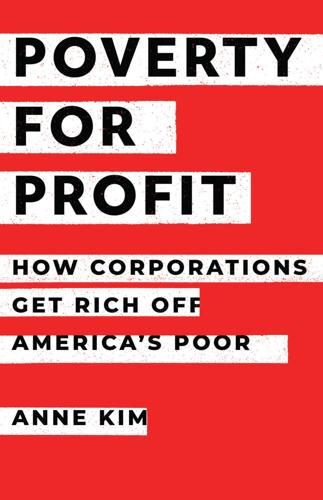
Poverty for Profit
by
Anne Kim
But the federal government has consistently failed to design effective programs or to maintain adequate oversight over funding and implementation—a situation that’s allowed the training industry’s mediocrity to go unchallenged. The first wave of programs began even before the War on Poverty, with the Manpower Development and Training Act of 1962 (MDTA). Its purpose was to “retrain workers whose skills had become outmoded or had been replaced by automation.”8 Two years later, with the launch of the War on Poverty, Congress passed the Economic Opportunity Act of 1964, which created the Job Corps and Neighborhood Youth Corps programs for young adults, as well as the Work Experience and Training Program for welfare recipients.9 In 1968, Congress created the Work Incentive program (WIN), popularly known as “workfare,” and in 1971, it passed the Emergency Employment Act, which authorized the creation of public jobs for the unemployed (in an echo of President Franklin D.
…
Work must be found for able-bodied but destitute workers.”33 Roosevelt went on to create the Works Progress Administration in 1935 (later renamed the Work Projects Administration [WPA] in 1939), which would ultimately employ more than 8.5 million Americans during its existence.34 (It would also inspire CETA.) Even President Lyndon B. Johnson’s War on Poverty was predicated on encouraging work and improving low-income Americans’ employability. Like FDR, Johnson generally eschewed the idea of public relief. On the morning of his State of the Union address in 1964—the day he declared war on poverty—Johnson told his advisors that “what we’re trying to do—instead of people getting something for nothing, we’re going to try to fit them where they can take care of themselves.… That’s our program.
…
But there are much more powerful forces at play that influence what kids want to eat, why schools might turn to outsourcing, and why big food companies control so much of the American diet. What’s happened with the national school lunch program is emblematic of Poverty, Inc.—the motive to profit can distort even the most well-intentioned of programs with the noblest of aims: feeding hungry kids. ConclusionWho’s Really Fighting the War on Poverty? Self-serving private interests have hijacked the war on poverty. Failures in governance and public policy have enabled predatory industries to thrive at the expense of low-income Americans and of taxpayer dollars. The complexity of the Earned Income Tax Credit (EITC), for instance, spawned tax-time profiteering. Welfare’s work requirements support a multitude of for-profit training providers offering dubious credentials and few pathways to real employment.

The Color of Money: Black Banks and the Racial Wealth Gap
by
Mehrsa Baradaran
Published 14 Sep 2017
The Wall Street Journal editorialized that the more civil rights laws were passed, the more violence ensued.97 If there was no way to fix poverty, the best that could be done was to contain it. Quickly, the War on Poverty morphed into the War on Crime.98 So fast was the transformation that the tools, bureaucracies, and funds allocated to the poverty war were instead used by police stations across the country to fight crime. Police departments began to fill the spaces meant for the War on Poverty. It was police who delivered food and toys to needy black families. Law enforcement would be the front line of the War on Poverty, and would thereby increase its presence in and surveillance of the black communities. This criminalization of black life would increase over the next several decades, but its seeds and structure were planted during the Johnson administration.99 The War on Crime would take a heavy toll on the black population, leading to the mass incarceration of black men and the further devastation of the black ghetto, and it began ironically as a response to the violent protests of an already desperate and impoverished community.
…
He had said at a conference in 1965 that the problem of black poverty “is practically the property of the federal government.” Hinton, From the War on Poverty to the War on Crime, 59. 93. Daniel P Moynihan, “The Negro Family: The Case for National Action,” U.S. Department of Labor, Office of Policy Planning and Research, 1965, https://www .dol.gov/oasam/programs/history/webid-moynihan.htm. 94. Ibid. 95. U.S. Congress, House Budget Committee Majority Staff, The War on Poverty: 50 Year Later, A House Budget Committee Report, March 3, 2014, http://budget .house.gov/uploadedfiles/war_on_poverty.pdf. 96. Katharine Beckett, Making Crime Pay: Law and Order in Contemporary American Politics (New York: Oxford University Press, 1997), 32. 97.
…
But the United States, at least under Johnson’s administration, never conceptualized the remedy for past wrongs in this way. Johnson did understand that poverty was the root cause of racial inequality. In his 1964 State of the Union address, President Johnson declared an “unconditional war on poverty." Johnson’s Great Society and War on Poverty programs, contained in the Economic Opportunity Act of 1964 (EOA), were the largest federal government economic measures since the New Deal. The Office of Economic Opportunity (OEO) would launch job-training programs, food and income assistance, and the early childhood program Head Start.
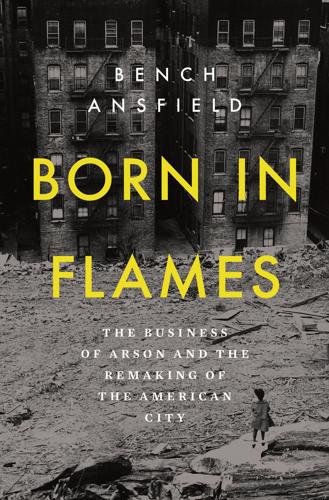
Born in Flames
by
Bench Ansfield
Published 15 Aug 2025
But its evolution from squatter to slumlord raises a number of questions about the role of CDCs in the late-twentieth-century city.34 * * * an accidental outgrowth of the federal War on Poverty, launched in 1964 by President Lyndon Johnson, the CDC model first emerged in reaction to the more radical and democratic currents within the federal anti-poverty program. The nation’s earliest CDC, the Bedford Stuyvesant Restoration Corporation, took form in 1967 when Central Brooklyn’s War on Poverty apparatus was subsumed by a neighborhood revitalization movement aligned with and shaped by Senator Robert F. Kennedy. Unlike the federally funded Community Action Program, which fanned the flames of radical protest, the Bedford Stuyvesant Restoration Corporation offered something more politically palatable: a bricks-and-mortar solution to the problem of urban disinvestment.
…
In this way, they played a key role in the financialization of affordable housing development.35 Much ideological diversity existed within the umbrella category of the community development corporation, but by the late 1970s, nearly all CDCs would distance themselves from the more radical mobilizations of the 1960s. Banana Kelly, for its part, defined its mission as a rejection of the War on Poverty paradigm. DeRienzo set Banana Kelly against groups that were “stuck in the past funded glory of the ‘War on Poverty’ programs” and “still funded through varied though diminishing government programs.” CDCs, in contrast, thrived in an era of retrenchment. By the mid-1970s, the CDC model had proven that it could grow well in the arid soil of austerity, and it branched out far beyond its Brooklyn roots.
…
To the extent that public discourse acknowledged the existence of an arson problem in the first half of the 1970s, the welfare arsonist was a convenient culprit at a time of welfare retrenchment. Even before Richard Nixon entered the White House in 1969, the brakes had already been slammed on the War on Poverty. The welfare arsonist emerged amid this great rollback of the welfare state, prefiguring the “welfare queen” rhetoric that would dominate domestic politics in the last decades of the century. Lamenting the Bronx’s large number of welfare recipients was a standard journalistic motif, and it almost always had racial intimations.
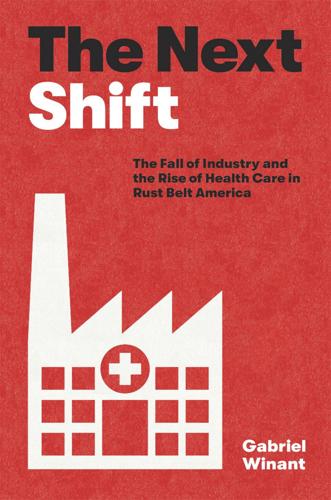
The Next Shift: The Fall of Industry and the Rise of Health Care in Rust Belt America
by
Gabriel Winant
Published 23 Mar 2021
Epperson, “Administering a Federal Policy: The Case of the Pittsburgh Poverty Program” (PhD diss., University of Pittsburgh, 1975), 57; Ferman, Challenging the Growth Machine. 69. “The War on Poverty in Pittsburgh,” p. 14, box 126, folder 2, RHWPA. 70. Lubove, Twentieth-Century Pittsburgh, vol. 1, 106; Tracy Neumann, Remaking the Rust Belt: The Postindustrial Transformation of North America (Philadelphia: University of Pennsylvania Press, 2016); Epperson, “Administering a Federal Policy,” 155–157; “The War on Poverty in Pittsburgh,” p. 37, box 126, folder 2, RHWPA. 71. Snow, “Dreams Realized and Dreams Deferred.” 72. Premilla Nadasen, “Expanding the Boundaries of the Women’s Movement: Black Feminism and the Struggle for Welfare Rights,” Feminist Studies 28, no. 2 (Summer 2002), 270–301. 73.
…
And across the entire deindustrializing world, a wave of welfare state expansion followed in the immediate aftermath, as governments responded to these demands and sought to manage the appearance of new forms of poverty amid the postwar plenty.36 In the United States, we have not understood this political phenomenon as a single event but rather know it as a sequence: the War on Poverty, the Great Society, the urban uprisings, the welfare rights and Black Power movements, the Young Lords, labor’s rank-and-file rebellion, the fiscal crisis of the state, and stagflation. As displacement widened from a phenomenon confined to African Americans and Latinos across northern cities and white people in discrete pockets during the 1950s and 1960s to a general malady of the working class in the 1970s and 1980s, the problem expanded gradually from one of impoverished areas to a full-blown macroeconomic crisis.
…
They struggled persistently, but they struggled for inclusion within the structure of the postwar liberal order—seeking Black men’s admission to a blue-collar breadwinner status that was itself entering crisis. Black workers’ movements were thus confined by the same material limits as the liberal state itself, requiring a healthy industrial economy generating jobs whose distribution could be contested. Mobilizing for Survival When Pittsburgh’s War on Poverty began in 1965, it was a top-down affair. The mayor’s office had begun preparation for the program months ahead of the passage of federal legislation. As resentment about the high-handedness of the urban renewal program had grown, the influx of federal funds seemed an opportunity to rebalance but preserve the city’s Democratic machine by incorporating neighborhood-level leadership.68 Administrators selected a group of neighborhoods to target—some of them largely Black neighborhoods like the Hill and Homewood, and others more racially integrated, such as Hazelwood—and began implementing their diverse agenda: job training, day care, home and family aid, and more.
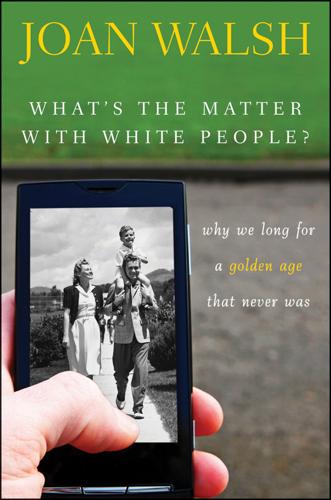
What's the Matter with White People
by
Joan Walsh
Published 19 Jul 2012
Martin Luther King Jr. being jailed in Alabama. The same month, September 1958, the devout Irish Catholic turned devout American socialist Michael Harrington would begin the US tour that inspired his searing exposé of the hidden poor, The Other America, which helped drive the Johnson administration’s War on Poverty. After getting married, my father went to work as a writer and an editor at the nation’s oldest and largest Catholic textbook company, William H. Sadlier (cofounded by novelist Mary Anne Sadlier, who wrote novels to instruct and uplift Irish Catholic immigrants and was considered an Irish American counterpart to Harriet Beecher Stowe).
…
The latter would turn out to be the road not taken, in any of the major attempts to address poverty and exclusion (black or otherwise) during the next fifty years. Lyndon Johnson would largely deliver on the first demand with the Civil Rights Act of 1964 and the Voting Rights Act of 1965, but his War on Poverty played at the margins of the labor market. At first, a strong and growing economy seemed to make concerns about jobs passé; unemployment was dropping. What few people noticed, though, was the decline in jobs for people without higher education, the result of automation and off-shoring. Johnson’s spending on the war would also make a big jobs initiative fiscally impossible.
…
Harrington and Moynihan proposed a public works program, which Wirtz supported. But the Labor Department’s public works jobs proposals all carried price tags of $3 billion to $5 billion; Johnson couldn’t spend anything like that, with war spending climbing. In fact, the budget he submitted for 1965, the year he launched the War on Poverty, actually contained a slight cut to poverty programs. Instead, he chose Sargent Shriver’s approach—”a hand up, not a handout”—with programs such as job training and education, legal services, and Head Start, intended to ready the poor to take advantage of opportunity, rather than creating opportunities for them.
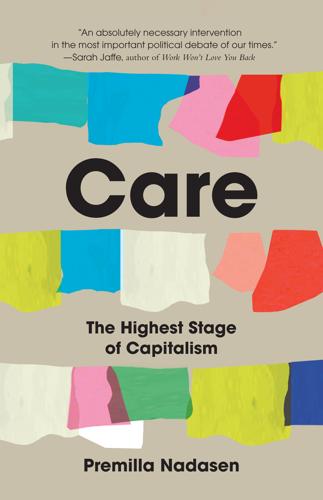
Care: The Highest Stage of Capitalism
by
Premilla Nadasen
Published 10 Oct 2023
The regulatory apparatus and labor legislation of the New Deal put a brake on radicalism and created new economic and political hierarchies because some workers benefited more than others. The removal of immigration quotas in 1965 was coupled with a new surveillance system on the southwest border.8 And president Lyndon Johnson’s War on Poverty contained the seeds that flourished into an expanded carceral state, as historian Elizabeth Hinton argues in From the War on Poverty to the War on Crime, through federal funding that facilitated the militarization of local police departments and cooperation between social service agencies and law enforcement.9 There is a perpetual tension between the good and the harm done by liberal reforms.
…
In the 1960s and 1970s, public housing residents in Baltimore, as historian Rhonda Williams has documented, took control of their housing complexes to use public housing as a platform for grassroots activism and to demand accountability from the government.55 Similarly, welfare recipients in Nevada, led by the formidable Ruby Duncan, used federal resources from the War on Poverty to “wage their own war on poverty” in the 1970s and 1980s, as Annelise Orleck has written.56 Domestic workers, welfare recipients, the Wages for Housework movement, and other radicals in the 1960s and 1970s were all organizing at a time when it seemed that the state could be leveraged. This was not born from naivete but from a thoughtfulness about the political possibilities before them.
…
I have a framed poster in my living room with a quote from Brazilian Archbishop Hélder Pessoa Câmara that reads: “When I give food to the poor, they call me a saint. When I ask why they are poor, they call me a Communist.” This is what happened with programs such as the New Deal in the 1930s and the War on Poverty in the 1960s. People (including poor people), often with federal dollars, started by making reforms in their own communities and ended by asking why inequality existed. But, as the character of the state changed, its carceral functions ballooned and welfare functions shrank. State resources became a grab bag for the political elite, and the potential for ordinary people to use state resources for radical transformation diminished.
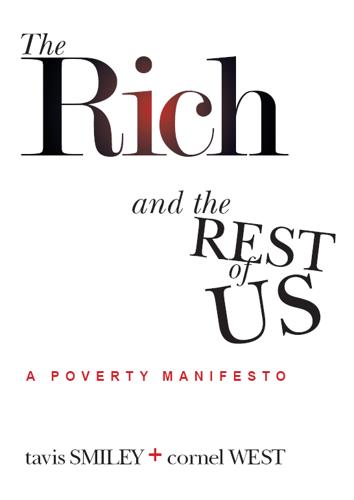
The Rich and the Rest of Us
by
Tavis Smiley
Published 15 Feb 2012
During Reagan’s two terms in the White House, which were boom times for the rich, the poverty rate in cities grew.”35 The goal here is not to solely criticize Reagan or Republicans. It is to chart the War on Poverty’s timeline and pinpoint the myopic moment when anti-poor rhetoric and subsequent legislation turned stereotypical, vicious, and punitive. Reagan was more than the general who waved the white flag of surrender in the War on Poverty; he actually initiated the “War on Welfare.” He was also the architect of “trickle-down” economics—a theory based on the false notion that tax policies that benefit the wealthy will magically lift the poor.
…
In the Census Bureau’s history of tracking poverty statistics, the Great Recession marked the fourth period of consecutive annual increases in 52 years. POVERTY TIMELINE Year Poverty Percent 1959 22.4 percent Official tracking of the country’s poverty rate begins 1964 19.0 percent President Lyndon B. Johnson declares “War on Poverty” 1969 13.7 percent Johnson’s Great Society efforts help reduce poverty 1973 11.1 percent National poverty rate at an almost 20-year low 1979 12.4 percent Vietnam War, Conservative backlash, poverty ticks up 1983 15.2 percent A recession from mid-1981 to late 1982 takes its toll on the poor 1989 13.1 percent Economy steadies, poverty rate drops in Ronald Reagan’s 2nd term 1992 14.5 percent Reagan drastically slashes government benefit programs, poverty rises 1993 15.1 percent Ten-year gains reversed; Poverty back to 1983 level 1994 14.5 percent Economy perks, poverty level slightly reduced 1996 13.7 percent Poverty rate drops, Clinton introduces drastic welfare reform efforts 2000 11.3 percent Poverty rates fall dramatically due mostly to the opulent 1990s 2007 12.5 percent Poverty ticks up, 37.3 million in poverty before the recession begins 2008 13.2 percent Another 2.5 million fall below the poverty line 2009 14.3 percent 6.3 million more in poverty since 2007 2010 15.1 percent The largest percentage of long-term poor in five decades Number in Poverty and Poverty Rate: 1959 to 2010 The biggest blows to the already shrinking middle class were record unemployment and a housing bubble that burst, resulting in the foreclosure of nearly 4 million homes.
…
Michael Harrington’s classic The Other America (1962) forced many Americans to grapple with the conundrum that a country celebrated for its opulence had such glaring income disparities.13 Harrington’s landmark study of poverty in America has been credited as the motivation behind President Johnson’s Great Society policies. Although it was President John F. Kennedy who first came in possession of the book, it was Johnson who used it as a guide for his self-proclaimed “War on Poverty” after Kennedy’s assassination. Harrington’s book was so influential that the Boston Globe and other newspapers wrote that Medicaid, Medicare, food stamps, and the expanded Social Security benefits were all traceable to The Other America.14 The number of families who earned enough to rise out of poverty peaked at 68 percent in 1969.

Make Your Own Job: How the Entrepreneurial Work Ethic Exhausted America
by
Erik Baker
Published 13 Jan 2025
Like McClelland’s trainings for aspiring entrepreneurs, the course sought to modify the language and narratives that participants deployed to describe themselves and the experience of the world, helping students over time to spontaneously use more “achievement words” and tell “stories of achievement.”37 These programs were merely among the most theory-laden of a vast patchwork of training programs that popped up during the War on Poverty to inculcate “entrepreneurial” habits of thought among the Black urban poor. A set of 1967 amendments to the Economic Opportunity Act, the legislative cornerstone of the War on Poverty, included two references to the importance of improving the “motivations” of the poor, and required federally-funded “special impact programs” to, “where feasible, promote the development of entrepreneurial and management skills.”38 As the historian Amy Offner has shown, the War on Poverty relied extensively on private business to implement its “manpower” training programs and other welfare initiatives, not out of simple expediency but in large part because of the influential example set by Third World development strategies that sought deliberately to use subcontracting to empower and embolden private-sector entrepreneurs.39 Peter Drucker, for one, was impressed by this aspect of the Johnson administration’s efforts, though by little else.
…
A set of 1967 amendments to the Economic Opportunity Act, the legislative cornerstone of the War on Poverty, included two references to the importance of improving the “motivations” of the poor, and required federally-funded “special impact programs” to, “where feasible, promote the development of entrepreneurial and management skills.”38 As the historian Amy Offner has shown, the War on Poverty relied extensively on private business to implement its “manpower” training programs and other welfare initiatives, not out of simple expediency but in large part because of the influential example set by Third World development strategies that sought deliberately to use subcontracting to empower and embolden private-sector entrepreneurs.39 Peter Drucker, for one, was impressed by this aspect of the Johnson administration’s efforts, though by little else. “The only part of the War on Poverty that is not hopelessly mired in confusion and splintering, the Job Corps, is largely run by private companies such as Litton, ITT, and Westinghouse,” he wrote in 1969. “Business has done far less badly than any other institution,” he claimed, when it came to “training hard-core unemployable Black teenagers for work and jobs.”40 As Drucker’s backhanded compliment suggests, the War on Poverty, like the rest of the Johnson administration’s domestic policy, was not rigidly committed to entrepreneurial doctrine, and the administration’s policymaking was the outcome of contestation and collaboration between rival ideological blocs.
…
In part this enthusiasm was due to the fact that many social scientists and policymakers came to share Drucker’s view that the War on Poverty’s public-sector initiatives were a complete failure, with whatever modicum of success the program enjoyed attributable to the resourcefulness of private-sector businesses. Waves of urban uprisings in the late 1960s proved beyond a doubt that the problem of poverty in the “inner city” retained its ferocity. Many observers understood the War on Poverty as a hybrid of an older, “big government” style of liberalism inherited from the New Deal and a newer, more experimental liberal embrace of privatization and business leadership; the manifest inadequacies of the existing program seemed to suggest that more experimentation was in order.

The Meritocracy Trap: How America's Foundational Myth Feeds Inequality, Dismantles the Middle Class, and Devours the Elite
by
Daniel Markovits
Published 14 Sep 2019
In his first State of the Union message, on January 8, 1964, President Johnson declared his now-famous “unconditional War on Poverty in America.” The most important thing to understand about the War on Poverty is that it reduced poverty. Victory was not complete, unconditional, or even sufficient, of course, and poverty remains real and scandalous. The War on Poverty stalled in the late 1970s, and poverty has worsened in recent years, as it always does following economic downturns. But the War on Poverty’s core achievements have more or less endured, including in the face of rising economic inequality. Even in the shadow of the Great Recession, poverty is by any measure both narrower and shallower than in the past, and abject poverty remains unrecognizably less broad or deep.
…
Fisher, “Estimates of the Poverty Population Under the Current Official Definition for Years Before 1959,” mimeograph, Office of the Assistant Secretary for Planning and Evaluation, U.S. Department of Health and Human Services, 1986. By one estimate: See Christine Ross, Sheldon Danziger, and Eugene Smolensky, “The Level and Trend of Poverty in the United States, 1939–1979,” Demography 24, no. 4 (November 1987): 589. War on Poverty: See, e.g., “Johnson State of Union Address Provides Budget $97.9 Billion, War on Poverty, Atomic Cutback,” New York Times, January 9, 1964, accessed August 11, 2018, www.nytimes.com/1964/01/09/archives/johnson-state-of-union-address-provides-budget-of-979-billion-war.html. Thorstein Veblen: John Patrick Diggins, Thorstein Veblen: Theorist of the Leisure Class (Princeton, NJ: Princeton University Press, 1999), 33, 135.
…
Values follow facts, and the new elite self-consciously embraces industry and understands itself as hardworking. Today, it is Bertie Wooster’s unapologetic unemployment that is difficult to imagine. Furthermore, economic inequality’s center of gravity has moved up the income scale. At midcentury, an urgent crisis led President Lyndon Johnson to declare a War on Poverty. Today, even as inequality increases, poverty is both rarer and less severe (although it of course endures). And whereas in the past, including at midcentury, inequality centered on the wretchedness and social exclusion of the poor, it now centers on the extravagance and privilege of the elite.

Utopia for Realists: The Case for a Universal Basic Income, Open Borders, and a 15-Hour Workweek
by
Rutger Bregman
Published 13 Sep 2014
Dauphin – the town with no poverty – was one of five guaranteed income experiments in North America. The other four were all conducted in the U.S. Few people today are aware that the U.S. was just a hair’s breadth from realizing a social safety net at least as extensive as those in most Western European countries. When President Lyndon B. Johnson declared his “War on Poverty” in 1964, Democrats and Republicans alike rallied behind fundamental welfare reforms. First, however, some trial runs were needed. Tens of millions of dollars were budgeted to provide a basic income for more than 8,500 Americans in New Jersey, Pennsylvania, Iowa, North Carolina, Indiana, Seattle, and Denver in what were also the first-ever large-scale social experiments to distinguish experimental and control groups.
…
Ten years later, a reanalysis of the data revealed that a statistical error had been made; in reality, there had been no change in the divorce rate at all.46 Futile, Dangerous, and Perverse “It Can Be Done! Conquering Poverty in America by 1976,” Nobel Prize winner James Tobin confidently wrote in 1967. At that time, almost 80% of Americans supported a guaranteed basic income.47 Years later, Ronald Reagan would famously sneer, “In the sixties we waged a war on poverty, and poverty won.” The great milestones of civilization always have the whiff of utopia about them at first. According to renowned sociologist Albert Hirschman, utopias are initially attacked on three grounds: futility (it’s not possible), danger (the risks are too great), and perversity (it will degenerate into dystopia).
…
Any further necessary funds can be raised by taxing assets, waste, raw materials, and consumption. Let’s look at the numbers. Eradicating poverty in the U.S. would cost only $175 billion, according to economist Matt Bruenig’s calculations.48 That’s roughly a quarter of U.S. military spending. Winning the war on poverty would be a bargain compared to the wars in Afghanistan and Iraq, which a Harvard study estimated have cost us a staggering $4–$6 trillion.49 As a matter of fact, all the world’s developed countries had it within their means to wipe out poverty years ago.50 And yet, a system that helps solely the poor only drives a deeper wedge between them and the rest of society.

The Vanishing Middle Class: Prejudice and Power in a Dual Economy
by
Peter Temin
Published 17 Mar 2017
Obama and, 25, 38, 81–84, 91, 96, 127, 175n12 poll taxes and, 58, 65 Reagan and, xii, 22–23, 35, 38, 44, 53, 83, 95, 104, 129, 142–143, 171n27 Republicans and, 19 (see also Republicans) Senate and, 19, 52–53, 59, 62–66, 72, 74, 80–84, 96–97, 107, 123 shopping and, 67–69 Southern Strategy and, 15, 27, 35, 81, 117, 142 state legislatures and, 19, 62–63, 95 Truman and, 81 Trump and, xii, 66, 81–82, 92, 154, 174n11 War on Drugs and, x, xv–xvi, 15, 27, 37–38, 53, 55, 104, 106, 110, 132 War on Poverty and, 17, 27, 126 Poll taxes, 58, 65 Pollution, 84 Popular vote, 62, 96 Poverty children and, 157 cross-country comparison and, 149 FTE (finance, technology, and electronics) sector and, 15 growing, 116 inner cities and, 13, 131–132 low-wage sector and, 27, 35, 39–40 persistent, 44 public education and, 116–117, 123–124, 126 War on Poverty and, 17, 27, 126, 168n2 Powell, Lewis ALEC and, 19 memo of, 83 neoliberalism of, 21 Memo of, 17–18, 77, 169n6 Nixon and, 27 U.S.
…
Reluctant to raise taxes soon after the Kennedy tax cut of the previous year and lacking congressional support as well, he overheated the economy and put great pressure on the value of the dollar, fixed at that time by the Bretton Woods system that regulated international commerce after the Second World War. The postwar dollar shortage turned into a dollar glut.1 President Nixon set himself up in opposition to Johnson. He won election to the presidency through a Southern Strategy that appealed to Southern racism and opposition to the Civil Rights Movement. He abandoned Johnson’s War on Poverty and declared a War on Drugs in 1971. He also abandoned the fixed exchange rate of the Bretton Woods system to deal with the strain on the dollar exerted by the expanding war in Vietnam.2 Nixon switched the United States to a floating exchange rate, transferring responsibility for the domestic economy from the federal government, which controls fiscal policy, to the Federal Reserve System, which controls monetary policy.
…
They were the heirs of slave owners who resorted to Jim Crow policies after Reconstruction ended to preserve their political power. Their policy was to maintain African Americans in the South in a subordinate position.1 The low-wage sector—like the FTE sector—was born in 1971 as President Nixon replaced Johnson’s War on Poverty with a new War on Drugs and appointed Lewis Powell to the Supreme Court. As the War on Drugs expanded in subsequent decades, it was enforced far more strongly for African Americans than for whites, becoming, in Alexander’s widely used term, the “New Jim Crow,” revamping and renewing the racist intent of the repressive old anti-black Jim Crow laws that followed Reconstruction in the South.

The New Class Conflict
by
Joel Kotkin
Published 31 Aug 2014
Dylan Matthews, “Poverty in the 50 Years since ‘the Other America,’ in Five Charts,” Wonkblog (blog), Washington Post, July 11, 2012, http://www.washingtonpost.com/blogs/wonkblog/wp/2012/07/11/poverty-in-the-50-years-since-the-other-america-in-five-charts. 89. Robert Samuelson, “How We Won—and Lost—the War on Poverty,” Real Clear Politics, January 13, 2014, http://www.realclearpolitics.com/articles/2014/01/13/how_we_won_--_and_lost_--_the_war_on_poverty_121197.html. 90. David Shipler, The Working Poor: Invisible in America (New York: Vintage, 2004), pp, 6–7. Chapter 5: Geography of Inequality 1. Encyclopæedia Britannica Online, s.v. “Vidal de La Blache, Paul,” http://www.britannica.com/EBchecked/topic/627886/Paul-Vidal-de-La-Blache. 2.
…
Dylan Matthews, “Poverty in the 50 Years since ‘the Other America,’ in Five Charts,” Wonkblog (blog), Washington Post, July 11, 2012, http://www.washingtonpost.com/blogs/wonkblog/wp/2012/07/11/poverty-in-the-50-years-since-the-other-america-in-five-charts; Mark Hugo Lopez and Gabriel Velasco, “Childhood Poverty Among Hispanics Sets Record, Leads Nation,” Pew Research Hispanic Trends Project, September 28, 2011, http://www.pewhispanic.org/2011/09/28/childhood-poverty-among-hispanics-sets-record-leads-nation. 12. Robert Samuelson, “How We Won—and Lost—the War on Poverty,” RealClearPolitics, January 13, 2014, http://www.realclearpolitics.com/articles/2014/01/13/how_we_won_—_and_lost_—_the_war_on_poverty_121197.html. 13. Glenn Hubbard, “The Unemployment Puzzle: Where Have All the Workers Gone?” Wall Street Journal, April 4, 2014. 14. Eurostat, “Euro Area Unemployment Rate at 12.0%,” news release, January 31, 2014, http://epp.eurostat.ec.europa.eu/cache/ITY_PUBLIC/3-31012014-AP/EN/3-31012014-AP-EN.PDF; Eurostat, “Labour Force Survey Overview 2012,” http://epp.eurostat.ec.europa.eu/statistics_explained/index.php/Labour_force_survey_overview_2012; Max Tholl, “Home Is Where the Hardship Is,” European, May 7, 2014, http://www.theeuropean-magazine.com/max-tholl—2/8433-europes-lost-generation. 15.
…
The emergence of a “politics of happiness,” as one British author puts it, has proven a boon for the public sector and those parts of the private sector that work with government.24 Just as the Second World War sparked the growth of federally funded science for defense purposes, the onset of the Great Society two decades later gave birth to what the socialist writer Michael Harrington would dub “the social-industrial complex.”25 Harrington, whose writings, notably The Other America, helped usher in the “war on poverty,” lived to witness the extraordinary expansion of the social welfare state. Between 1950 and 1980, social welfare spending grew twentyfold, ten times the rate of the population increase. Such spending may have ameliorated some of the worst results of poverty and discrimination, but Harrington perceived that the largest beneficiaries were not the poor but those—both inside and outside government—who serviced them.26 In essence, the private sector increasingly sought to make addressing social problems “the new business of business,” as one top IBM executive put it.
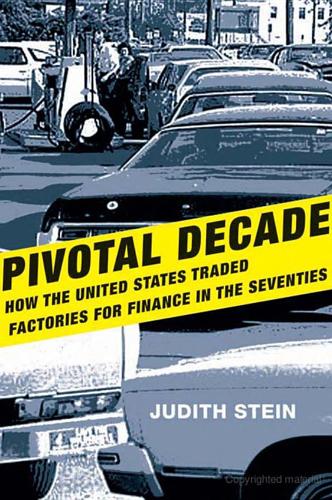
Pivotal Decade: How the United States Traded Factories for Finance in the Seventies
by
Judith Stein
Published 30 Apr 2010
In 1932, he thought that “the day is not far off when the economic problem will take the back seat where it belongs, and … the arena of the heart and head will be occupied where it belongs, or reoccupied by our real problems—the problems of life and of human relations, of creation and behavior and religion.”51 No longer did leaders accept the ancient nostrum that the poor will always be with us. Poverty was especially deviant in an affluent society. The Economic Opportunity Act of 1964, which launched Johnson’s so-called War on Poverty, aimed to eliminate “the paradox of poverty in the midst of plenty.” Affluence was as much an ideology as a description of U.S. society. Politicians and academics forgot that the non-poor included many who were non-rich. Workers’ incomes had dramatically increased after the war. The median family income for 1968 was $8,632, when it had been $3,031 in 1947.
…
And, only the first two parties have a Presidential candidate in the coming election. Millions of patriotic Democrats were disenfranchised in the takeover of their convention.”41 If Nixon knew he must fish in Democratic waters, McGovern floundered. He had replaced Eagleton with the popular Sargent Shriver, the brother-in-law of President Kennedy and former head of the War on Poverty. Shriver was an able campaigner, a Chicagoan, and friend of Mayor Daley, but the stench of the Eagleton affair could not be removed. The conscientious Larry O’Brien, even though denied his spot at the DNC, continued to work for the McGovern campaign. As if to confirm Reagan’s analysis, O’Brien noticed that nowhere did the word Democrat appear in McGovern’s campaign literature.
…
Congressman Ford had represented the area around Grand Rapids, in western Michigan. Well-liked by his peers in the Congress, he defeated Indiana’s Charles Halleck for minority leader in 1965, gaining the votes of liberal Republicans. Ford was more conservative than these backers. He had opposed the War on Poverty and supported the war in Vietnam. Nixon had wanted him to be his vice president in 1968, but Ford preferred to work instead toward becoming a future Speaker of the House. Nixon named him vice president after Spiro Agnew resigned.37 When Ford became president in August 1974, reducing inflation was at the top of his agenda, even though the rate had been falling the whole year while unemployment was rising.

Wealth and Poverty: A New Edition for the Twenty-First Century
by
George Gilder
Published 30 Apr 1981
Voltaire W Wachovia wage-and-price controls wage incentives wages minimum wage wage subsidies proposal Wall Street The Wall Street Journal Walras, Leon Walton, Sam Wang Laboratories Wanniski, Jude War Labor Board War and Peace (Leo Tolstoy) War Production Board War on Poverty Warsh, David Washington, D.C. Washington Mutual WASPs The Way the World Works (Jude Wanniski) wealth and the rich, attacks on material progress and mobility and wealth effects The Wealth of Nations (Adam Smith), wedge effect of taxes Wedgewood Benn, Welfare, demand reduction and fraud growth of history of housing ideology of inflation and recipients of in Massachusetts proper goal of reform of war on poverty and work requirement for welfare culture Welfare (Martin Anderson) West Africans West Indians Westinghouse, George White House widows Wildavsky, Aaron Wilshire Associates Wilson, David B.
…
Of course,” he notes, rather impatiently, “there are still exceptions,” but “their small number [as if exceptional riches could ever be commonplace] only proves the rule” of economic sclerosis.6 This mode of thinking also sometimes afflicts conservatives when they have been sufficiently trained in the social sciences. In the late 1970s, Martin Anderson, an economist who wrote speeches for both President Nixon and Ronald Reagan, began his book Welfare by declaring, “The ‘war on poverty’ that began in 1964 has been won.”7 He quoted the conclusion of Alice Rivlin, head of the Congressional Budget Office, that the combination of expanded welfare payments and in-kind benefits had effectively lifted all but a very small proportion (6.4 percent) of Americans above the poverty line.
…
Income distribution may indeed be skewed, conservatives could sing, but what other system in the history of the world—what system that continues to admit immigrants in huge numbers, what system that embraces some 300 million souls across a giant continent—could ever have succeeded in raising its lowest ranks of earners above a line of poverty that exceeded the median family income of the Soviet Union by perhaps $1,000 a year? Blacks may still be low on the pole of earnings, it is said, but even they have made great progress since the massive social programs of the 1960s were put into place. The war on poverty, we are to believe, has been won by income redistribution. Yet here again we see the blindness of the social scientist to realities that are blatantly evident to the naked eye. What actually happened since 1964 was a vast expansion of the welfare rolls that halted in its tracks an ongoing improvement in the lives of the poor, particularly blacks, and left behind—and here I choose my words as carefully as I can—a wreckage of broken lives and families worse than the aftermath of slavery.
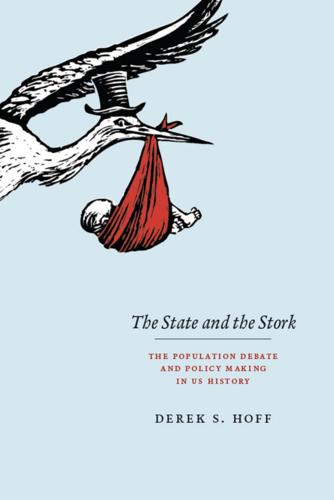
The State and the Stork: The Population Debate and Policy Making in US History
by
Derek S. Hoff
Published 30 May 2012
Had the leading economic policy makers of the early 1960s situated prevailing anti–population growth views within their Keynesian “new economics”—and had population activists engaged the new economics—the economic case against population growth might have survived the collision with the two diametrically opposed forces that eventually overwhelmed it: (1) a pervasive fear of ecological destruction by a “population bomb,” and (2) an ascendant adoration of population growth among economic conservatives. The Demographic Bubble, Structural Unemployment, and the War on Poverty Among domestic policy makers, the most pressing demographic topic was whether the large cohort of Americans born since World War II—the “demographic bubble”—posed a threat to the economy and high quality of life. Policy makers primarily thought about the bulging Baby Boom cohort in terms of its employment effects. The activist employment policies of the Kennedy and Johnson administrations and the War on Poverty’s emphasis on youth were in large measure an effort to respond to the demographic bubble.
…
President Johnson’s January 1964 economic message to Congress embraced the idea, warning of the combination of population increase and rising output per worker driven by automation.41 Apprehension of the structural unemployment resulting from the Baby Boomers turning eighteen was thus important to the general zeitgeist surrounding Johnson’s War on Poverty. More specifically, the Youth Corps reemerged in the 1964 Economic Opportunity Act, the legislative cornerstone of the Great Society.42 The War on Poverty emphasized youth not only because, as historian Irwin Unger wrote, it was “the group among the poor who seemed most salvageable and most promising,” but also because it was the group growing the fastest.43 Yet while the stress on the Baby Boom cohort’s employment prospects was easily translatable into public policies, it also conveyed the impression that the sum total of the “population problem” in the United States was managing the Baby Boom generation’s entrance into adulthood.
…
As always, the demographic debate was about more than birthrates and sheer numbers of people; made manifest in diverse policy discussions, it encapsulated several interconnected issues related to the age, geographical location, and racial distribution of the population. Disparate population concerns left their mark not only on the development of federal contraception policy—the era’s best-known “population policy”—but also on macroeconomic and employment policy, the “War on Poverty,” and immigration reform. Nervousness about the economic fortunes of Baby Boom- 136 chapter 5 ers—and the macroeconomic effects of the Baby Boom cohort—added momentum for the state to pursue a “high-pressure” economy managed along Keynesian lines, broadened the base of support for family planning programs, and ensured immigration reform was designed to not increase the total population.

Termites of the State: Why Complexity Leads to Inequality
by
Vito Tanzi
Published 28 Dec 2017
There would be the beginning of attacks on the certainty and on the trust that peoples had put in Keynesian countercyclical policies and in the benefits that had been expected to come from the larger role of the state in the economy, the role that had been introduced by President Johnson’s War on Poverty in the United States and by similar and, at times, more ambitious programs in other, especially European, countries. In future years some critics would point out that several trillion dollars had been spent fighting poverty in the United States, but, a half-century later, the official poverty rate in that country was still as high as it had been in the 1960s when the War on Poverty programs had been enacted. However, while the officially measured poverty rate in the United States had remained high, after some decline in the first few years immediately following the introduction of the War on Poverty, there are some reasons to believe that particular factors may have distorted the statistical results, thus hiding some of the progress that had been made on that score.
…
He was reported to have declared that “[he had] never known a man who was known as an economist and who understood so little economics,” as he believed that Beveridge did (cited in Wapshott, 2011, p. 227). In this Welfare Policies 43 he may have shared, to some limited extent, Keynes’s own view, in the judgment of the architect of the creation of the British welfare state. The “War on Poverty” in the United States, the social programs that were introduced by President Johnson some years later (in 1964), and similar programs introduced in France, in the Scandinavian countries, and in some other countries were all examples of the ongoing, dramatic changes in economic thinking that had taken place since the 1920s, and of the growing optimism about what could be achieved with government policies.
…
A growing number of economists had come to believe that democratically elected, benevolent governments, with significant public resources, aided by competent and honest bureaucracies, and advised by clever economists, would be able to deliver on this objective. It should be noted that, by this time, the governments of most advanced countries had extended the voting rights to most adult citizens including women. President Johnson’s War on Poverty had, to some extent, delivered on a wish expressed by President Franklin D. Roosevelt a couple decades earlier in a “fireside chat” in January 1944 (the year before his death). The fireside chat might in turn have been influenced, or inspired, by the Beveridge Report, of which President Roosevelt would have been aware.

Servant Economy: Where America's Elite Is Sending the Middle Class
by
Jeff Faux
Published 16 May 2012
They pushed for a minimum wage for all when virtually all union wages were well above the minimum, national health care when most union members had private health-care plans, workplace health and safety regulations when unionized members were most able to protect themselves, and the War on Poverty when most of their members were well above the poverty line. Unions were, as the saying went, “the people who brought you the weekend.” In the aftermath of John Kennedy’s assassination in 1963, Lyndon Johnson ushered in the Great Society, the New Deal’s second act. Within two years, Johnson had engineered Medicare, the Civil Rights Act, the Voting Rights Act, and the War on Poverty, which he confidently predicted would eliminate destitution in America within ten years. All of this would be painlessly and automatically financed by continual strong economic growth, because the progressive income tax brackets generated proportionally greater government revenues as people’s incomes rose.
…
As whites moved up the job and economic ladder, it created space for African Americans and other minorities to move into jobs and even neighborhoods that had excluded them in the past. Martin Luther King Jr. and other civil rights leaders argued that poverty was a burden on the whole economy and that when black workers earned more they spent more, generating more income for everyone. The civil rights movement and President Johnson’s War on Poverty program could not have achieved what they did without the expanding demand for workers and rising opportunities for everyone in the 1960s. There was backlash, of course, against racial integration, especially of schools and housing. The right wing smeared the civil rights movement as a communist conspiracy, but the movement persevered and ultimately prevailed.
…
This decision not to recommend a general tax increase in 1966 was the critical decision that set the economic system into a prolonged period of chaos, from which it has still not recovered.”5 Among those who immediately saw the danger was Martin Luther King Jr. As King understood, the issue was not just money. The United States lacked the moral and political capital to fight the War on Poverty at home and a war on Asian peasants in Vietnam. “The bombs in Vietnam explode at home—they destroy the dream and possibility for a decent America,” he said in 1967.6 Vietnam was “taking the black young men who had been crippled by our society and sending them 8,000 miles away to guarantee liberties in Southeast Asia which they had not found in southwest Georgia and East Harlem.”7 King was criticized by many liberals for endangering public support for domestic reform by linking it to foreign policy.
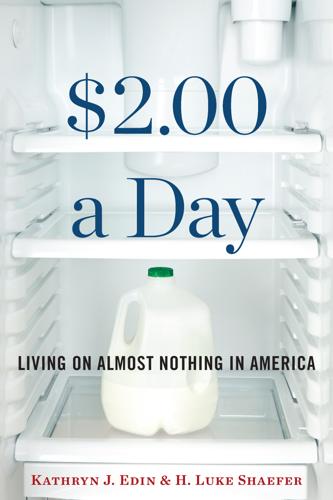
$2.00 A Day: Living on Almost Nothing in America
by
Kathryn Edin
and
H. Luke Shaefer
Published 31 Aug 2015
More programs targeting poor families were passed as part of Johnson’s Great Society and its War on Poverty than at any other time in American history. Congress made the fledgling Food Stamp Program permanent (although the program grew dramatically during the 1970s under President Richard Nixon) and increased federal funds for school breakfasts and lunches, making them free to children from poor families. Social Security was expanded to better serve the poorest of its claimants, Head Start was born, and new health insurance programs for the poor (Medicaid) and elderly (Medicare) were created. What the War on Poverty did not do was target the cash welfare system (by then renamed Aid to Families with Dependent Children, or AFDC) for expansion.
…
It was Wilson who first observed, famously, that a poor child fared worse when she grew up among only poor neighbors than she would have if she’d been raised in a neighborhood that included members of the middle class, too. Wilson argued that the reason poverty had persisted in America even in the face of the War on Poverty declared by President Lyndon Johnson in 1964 was that in the 1970s and 1980s, poor African Americans had become increasingly isolated, relegated to sections of the city where their neighbors were more and more likely to be poor, and less and less likely to find gainful employment. For Wilson, it was the rise of joblessness among a black “ghetto underclass” that had left poverty rates so stubbornly high despite billions spent on antipoverty efforts.
…
Shedding light on the lives of the poor from New York to Appalachia to the Deep South, Harrington’s book asked how it was possible that so much poverty existed in a land of such prosperity. It challenged the country to ask what it was prepared to do about it. Prompted in part by the strong public reaction to The Other America, and just weeks after President John F. Kennedy’s assassination, President Lyndon Johnson declared an “unconditional war on poverty in America.” In his 1964 State of the Union address, Johnson lamented that “many Americans live on the outskirts of hope—some because of their poverty, and some because of their color, and all too many because of both.” He charged the country with a new task: to uplift the poor, “to help replace their despair with opportunity.”

The View From Flyover Country: Dispatches From the Forgotten America
by
Sarah Kendzior
Published 24 Apr 2015
Shutdown furloughs may turn into layoffs, as elected officials, now marketing survival as the new American Dream, will assure us we did fine without them. The nonessential worker is the archetypal hire. Our worst-case scenarios are simply scenarios. Socioeconomic Astigmatism In 1964, President Lyndon B. Johnson declared a War on Poverty. Over the next half century, that war turned into a war on the poor. This war was once disguised as “compassionate conservatism” and debated with words like “responsibility” and “opportunity.” Compassionate conservatism assumed that we could take care of ourselves so we did not need to take care of each other.
…
After stating that the point of a college degree was not a “first job” but “a lifetime of citizenship, opportunity, growth and change,” she recounted her own experience. She wrote in a letter to The New York Times: I graduated from Bryn Mawr College in 1968, and my first job was working for the Department of Housing and Urban Development. My starting salary was low, but I was inspired by the civil rights movement and the War on Poverty to regard public service as an important calling. I went on to graduate school, joined the faculty at the University of Pennsylvania and ultimately became the president of Harvard University. Should Bryn Mawr have been judged based on what I was paid in my first year at HUD? Faust’s is an inspiring tale—and one beyond the comprehension of most young graduates in America today.
…
Perhaps that is why the city’s corporate venues—like its high-end golf club, hockey arena, football stadium, and over half of the city’s commercial and industrial users—still have their water running despite owing over $30 million, while its most impoverished residents have their water, and their rights, taken away. In Detroit, corporations are people. Their worth is unquestioned because it is measured in dollars. The worth of the residents of Detroit is measured in utility, and so their utilities are denied. War on Poverty Human rights may be guaranteed by law, but one’s humanity is never a given. The U.S. was built on the labor of slaves considered three-fifths of a person. Today, one’s relative humanity—and the rights that accompany it—is shaped by race, class, gender, and geography. Citizens may be subject to the same written laws, but they are not equally subject to the same punishments and practices.
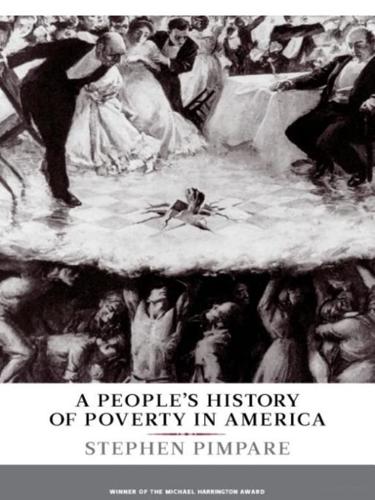
A People's History of Poverty in America
by
Stephen Pimpare
Published 11 Nov 2008
Not until discussion about AFDC and then the “welfare backlash” of the 1980s and 1990s do we again find African Americans incorporated in any substantive way into the narrative, and then it is largely as objects of white and elite animus.1 To use one crude measure, in the index of Michael Katz’s In the Shadow of the Poorhouse, which is among the most widely admired histories of American poverty and welfare (and rightly so), the first entry for “blacks” is on page 181, where they appear in a two-page discussion about housing, school segregation, and race riots (there is no listing for African Americans). The only other entries reference a handful of pages on blacks and the New Deal, the war on poverty, and AFDC—altogether, 7 pages in a text with 334, or 2 percent of the total.2 Walter Trattner’s From Poor Law to Welfare State does better, offering references to minister George Whitfield’s early efforts to bring slaves into his fold with free education programs (or, less charitably put, with efforts at indoctrination); discrimination against blacks in the early years of the antituberculosis campaigns; black infant mortality; African Americans and the formative juvenile justice system; and then to the New Deal, urban riots in the 1960s, and the civil rights movement, giving us indexed references to a total of 29 out of 395 pages of text, 7 percent of the total.
…
There is in each community a definite standard of living, and that charitable relief is concerned, not with raising or lowering it, but rather with eliminating the obstacles which particular individuals have in realizing the standard, and in securing the withdrawal from the industrial class of those who are unfit for a place in it. The WPA set its own line in 1937, as did a Joint Congressional Committee in 1949. CIO president Walter Reuther proposed a line of $3,000 in 1953, the amount coincidentally adopted a dozen years later by Lyndon Johnson to help measure the success of his war on poverty. In the same year, Rose Friedman of the conservative American Enterprise Institute argued for an alternative measure, one that would have been about 30 percent lower.11 Whether it’s Hull House’s efforts in the late 1800s and early 1900s (inspired, like Hunter, by Britain’s Charles Booth and Joseph Rowntree), or more recent attempts by economic historians to measure poverty in Revolutionary-era New England or the post–Civil War South, all efforts to establish an absolute poverty line should be viewed with suspicion, taken on their own terms, and judged to be, at best, reasoned estimates—a healthy skepticism we should also apply to our more recent, and supposedly more “scientific,” efforts.
…
Even in those states that passed maximum hour and other child-labor laws in the mid-1800s, little changed since such laws were rarely enforced. 61 Spargo, Bitter Cry of the Children, 172–73. 62 S.J. Kleinberg, “Children’s and Mothers’ Wage Labor in Three Eastern U.S. Cities, 1880–1920,” Social Science History 29, no. 1 (spring 2005): 45–76. 63 Kleinberg, Widows and Orphans First, 60. 64 Annelise Orleck, Storming Caesar’s Palace: How Black Mothers Fought Their Own War on Poverty (Boston: Beacon, 2005), 11. 65 Dodson, Don’t Call Us Out of Name. 5. Love: Women and Children First 1 Mark Robert Rank, One Nation, Underprivileged: Why American Poverty Affects Us All (New York: Oxford University Press, 2004); Mark R. Rank and Thomas A. Hirschl, “Welfare Use as a Life Course Event,” Social Work 47, no. 3 (July 2002).
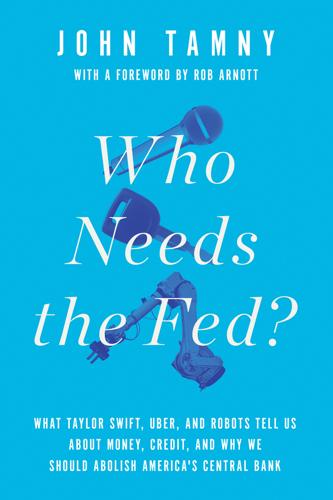
Who Needs the Fed?: What Taylor Swift, Uber, and Robots Tell Us About Money, Credit, and Why We Should Abolish America's Central Bank
by
John Tamny
Published 30 Apr 2016
And there lies the problem with federal spending on poverty, or government investments in ideas meant to cure its worst features. The powerful desire among outsiders to live in the United States is a certain signal that the War on Poverty was long ago won such that the spending isn’t necessary. Worse, all government programs develop constituencies. The jobs of individuals who vote are on the line. So even though the calculated rate of poverty4 is the same as it was when the war began, spending on that which, at least statistically, doesn’t work, and that really isn’t necessary, continues. In short, the alleged War on Poverty has failed, yet trillions continue to be spent on it. In the private sector such a war would have ended in bankruptcy long ago; that, or the strategy for fighting the problem would have long since changed.
…
When politicians spend, they have an unlimited source of funds—you, me, Michael Dell, and Larry Ellison—to tap. They can continue to support that which doesn’t work. Stated simply, businesses disappear on a daily basis, but government programs are generally forever. Since the federal government’s “War on Poverty” began, in the 1960s, more than $16 trillion has been spent on the battle.3 Yet, it seems that both liberals and conservatives miss the real story here. A more reasoned analysis, one driven by market signals, would strongly conclude that the United States conquered poverty back in the nineteenth century.
…
It exists to lend taxpayer funds to foreign companies interested in buying U.S. exports. Since reaching the White House, Obama has changed his position on the Bank. As of this writing, even a Republican-controlled Congress is still struggling to fully close this monument to crony capitalism. The existence of Ex-Im, along with the TVA and the War on Poverty, shows why supply-siders are so wrong when they sell income tax cuts to the political class as a way to get politicians more money to spend. That all three programs and subsidies still exist is a reminder that surging federal revenues morph into a major tax on future growth as politicians divine new ways to spend the money; the ideas hatched are exceedingly difficult to sunset.
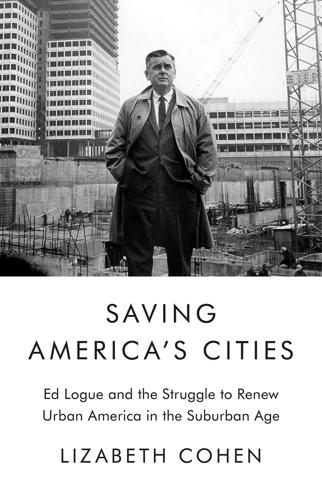
Saving America's Cities: Ed Logue and the Struggle to Renew Urban America in the Suburban Age
by
Lizabeth Cohen
Published 30 Sep 2019
That David Lilienthal, trained as a lawyer, headed both these innovative agencies testified to the increasing priority put on administrative skill rather than narrowly defined technical knowledge.48 Beyond the New Deal, World War II was pivotal in promoting more rational state planning and the greater administrative expertise needed to implement it. When Hubert Humphrey laid out a liberal social agenda for the United States in his 1964 book, War on Poverty, he urged a transfer of “our genius for planning and management,” which had successfully met wartime “attacks from both sides of the globe,” to “fight[ing] the war on poverty.”49 Logue shared Humphrey’s conviction. As early as 1948, in a speech to the American Veterans Committee, he said, “To some people, planning is a bogey; but all veterans are familiar with it; it operates on all levels, sometimes it is good and sometimes bad, but all of us would agree it is necessary.”50 Even as it became clear that a new kind of expert was emerging to oversee urban redevelopment, there was no common label for this budding role.
…
Experimenting with job training and placement, prekindergarten education, legal assistance, community schools and health centers, tutoring, adult literacy, juvenile delinquency prevention, and other programs, CPI was widely recognized as the incubator for many of the community action programs—such as the Job Corps, Head Start, and Neighborhood Legal Services—that would become signatures of President Lyndon Baines Johnson’s (LBJ) national War on Poverty by the mid-1960s. From its inception in 1962 until 1966, CPI was headed by Mitchell “Mike” Sviridoff, a pal of Logue’s going back to his union-organizing days at Yale.4 Born in the same working-class neighborhood of New Haven as Dick Lee, Sviridoff, like Lee, could not afford college upon graduating high school and so headed into the labor force, where he became a sheet metal worker on the assembly line of United Aircraft in Stratford, Connecticut.
…
Lee closed his statement to the commission with an exhortation to the entire nation to do more “to make our cities showplaces of democracy.”42 Harris, for his part, declared, “As long as we have officials sitting back drawing up plans for our neighborhoods,” they are not “involving the people like it’s supposed to be in a so-called democratic society.”43 President Johnson’s Community Action Program, the centerpiece of his War on Poverty, had raised democratic expectations even higher for Harris and his peers by requiring “maximum feasible participation” of citizens in formulating social programs. It is worth noting that another uninvited speaker at the hearings, a conservative New Haven resident named Stephen J. Papa, also called for more listening “to the people who know the needs of the people in New Haven” to stem the tide of the middle-class exodus to the suburbs.
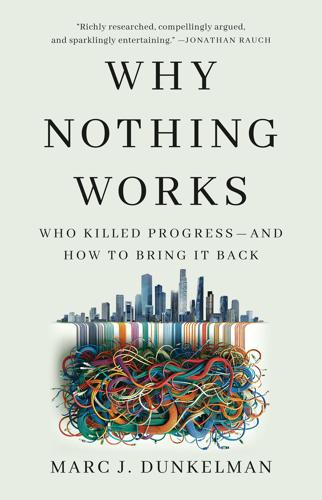
Why Nothing Works: Who Killed Progress--And How to Bring It Back
by
Marc J Dunkelman
Published 17 Feb 2025
Hackett, Led Efforts on Poverty and Juvenile Crime, Dies at 84,” New York Times, April 30, 2011. Daniel P. Moynihan, Maximum Feasible Misunderstanding: Community Action in the War on Poverty (New York: Free Press, 1969), 61–66. 7. James T. Patterson, Grand Expectations: The United States, 1945–1974 (New York: Oxford University Press, 1996), 464. This point of view was most pointedly argued by Walter Heller, who is often credited with convincing President Lyndon Johnson to pursue a war on poverty in the wake of Kennedy’s assassination. Nicholas Lemann, “The Politics of Poverty,” Atlantic, September 18, 2013. 8. Nicholas Lemann, “The Myth of Community Development,” New York Times, January 9, 1994. 9.
…
Ezra Klein and Alex Tabarrok, “A Critique of Government That Progressives—Myself Included—Need to Hear,” February 18, 2022, in The Ezra Klein Show, podcast, www.nytimes.com/2022/02/18/opinion/ezra-klein-podcast-alex-tabarrok.html. 98. Popular impressions are that the war on poverty failed, but many of the Hamiltonian programs worked to great effect. McPherson, A Political Education, 449–451. See also Christopher Jencks, “The War on Poverty: Was It Lost?” New York Review, April 2, 2015. 99. Lisa Mascaro and the Associated Press, “Trump White House Vets Have Far-Reaching Plans to Dismantle Federal Government: ‘We Have a Democracy That Is at Risk of Suicide,’” Fortune, August 29, 2023. 100.
…
School officials didn’t want federal bureaucrats layering new mandates onto federal money they now spent at their own discretion.18 For decades, progressivism had worked to build up an Establishment—and now the various beacons of that same Establishment, scattered as they were across the country, were intent on maintaining their fiefdoms, whatever the public interest. The Economic Opportunity Act that eventually passed Congress may not have comprised the whole of Johnson’s war on poverty. His expansive agenda featured a whole range of quintessentially Hamiltonian efforts—expanding Social Security, creating Medicare and Medicaid, establishing food stamps, federal aid for public schools, and more. But here, in this negotiation, he was quick to fold. The ironic upshot was that a centerpiece of Lyndon Johnson’s bill to fight poverty was fundamentally inimical to his Hamiltonian sensibilities.
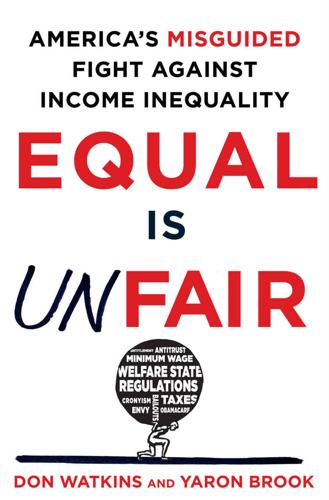
Equal Is Unfair: America's Misguided Fight Against Income Inequality
by
Don Watkins
and
Yaron Brook
Published 28 Mar 2016
On that issue, the Inequality Narrative has nothing to say. The Welfare State To credit the welfare state with creating a growing middle class requires us to ignore some basic facts of history. Until 1965, when Lyndon B. Johnson launched his so-called Great Society programs and the “War on Poverty,” the only significant welfare program was the Social Security Act of 1935, and it wasn’t until the end of the post-war era that a substantial number of Americans were receiving Social Security retirement checks.25 Moreover, the money paid out by Social Security could not have created or even expanded the middle class since Social Security payments were mainly financed by taxes on the middle class.
…
The effects of this inversion go far beyond stripping productive individuals of their wealth—although it’s disturbing how little that counts for today. It also discourages many people from even attempting to become self-supporting and self-directing. Nowhere are the welfare state’s corrosive effects on opportunity more clear than in its so-called War on Poverty. The list of anti-poverty programs is long, amounting to 126 separate programs at the federal level alone, including the Earned Income Tax Credit, Supplemental Security Income, food stamps, housing subsidies, work-training programs, child care subsidies, Medicaid, and much more. Spending on these and state and local programs is enormous, amounting to nearly $1 trillion a year.52 The first thing to observe about these anti-poverty programs is that they haven’t ended poverty—at least not poverty as the government defines it.
…
(The absolute poverty we see in Haiti and Uganda was eliminated in the West long before the welfare state. When we speak about poverty in advanced countries we are talking about relative poverty.) The official poverty measure shows that the poverty rate remains about where it was when Lyndon B. Johnson launched his War on Poverty in the mid-1960s. That is somewhat misleading, however. Experts are in general agreement that the government’s official poverty measure overstates poverty, and that better assessments suggest that poverty has been cut in half over the last fifty years.53 What’s more, most of the people the government classifies as “poor” live relatively comfortable lives.
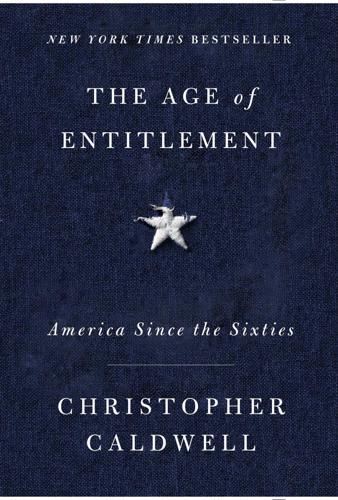
The Age of Entitlement: America Since the Sixties
by
Christopher Caldwell
Published 21 Jan 2020
They would swell: “Figure 20 B: Total Pell Grant Expenditures and Number of Recipients, 1977–78 to 2017–2018.” In Sandy Baum, Jennifer Ma, Matea Pender, and C. J. Libassi (New York: CollegeBoard, 2018), 27. According to one sympathetic account: Christopher Jencks, “Did We Lose the War on Poverty?—II,” New York Review of Books, April 23, 2015. Jencks cites a chapter by Bridget Terry Long in Legacies of the War on Poverty, edited by Martha J. Bailey and Sheldon Danziger (New York: Russell Sage Foundation, 2013). the largest collector of Pell Grant tuition: Tamar Lewin, “Report Finds Low Graduation Rates at For-Profit Colleges,” New York Times, November 24, 2010.
…
Costing trillions upon trillions of dollars and spanning half a century, it rivals, in terms of energy invested, the peopling of the West, the building of transcontinental railways and highways, the maintenance of a Pax Americana for half a century after World War II, or, for that matter, any of the wars the country has fought, foreign or civil. On top of those conflicts, the United States has had two massive domestic policy programs that mobilized public resources and sentiments so thoroughly that they were presented to the public as what the philosopher and psychologist William James called a “moral equivalent of war”: the War on Poverty in the 1960s and the War on Drugs in the 1980s and ’90s. Both were mere battlefronts in a larger struggle over race relations. The reinterpretation of America’s entire history and purpose in light of its race problem is the main ideological legacy of the last fifty years. The scholar Derrick Bell described the quarter-century after the Supreme Court’s school desegregation decision Brown v.
…
White House counsel Clark Clifford saw “a pattern for a kind of life that the people of all Southeast Asia can begin to enjoy . . . So what the president wants to make is a demonstration.” The sociologist and Johnson advisor Daniel Patrick Moynihan was eager to use the military draft as an engine of upward mobility for blacks and the poor. By the summer of 1966, it was evident that the two Johnson wars, on poverty and in Vietnam, were set to open up a vast deficit that would make inflation inevitable. Johnson, with his cabinet’s help, bought time with various accounting tricks and falsifications. A year later, McNamara, speaking privately to Tom Wicker of the New York Times, was unrepentant. “Do you really think,” McNamara asked, “that if I had estimated the cost of the war correctly, Congress would have given any more for schools and housing?”
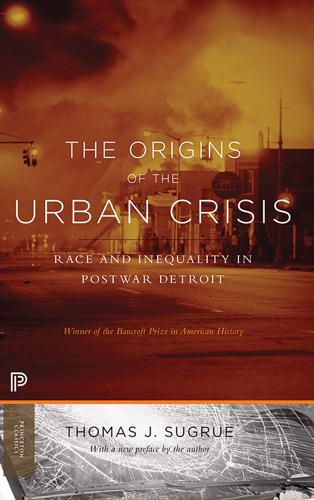
The Origins of the Urban Crisis
by
Sugrue, Thomas J.
Cavanagh’s election was almost accidental: he was supported by an unlikely alliance of African Americans and white neighborhood groups, both alienated (for different reasons) by Miriani’s equivocal, middle-of-the-road position on race and housing.8 Under Cavanagh, who astutely lobbied government officials for assistance, War on Poverty dollars flooded into Detroit. Detroit was second only to New York in the amount of federal dollars that it received in the 1960s. But officials channeled government assistance down familiar routes and established programs that did not fundamentally deviate from the limited agenda that social welfare, labor, and civil rights groups had set in the 1950s. By and large, War on Poverty programs embodied the conventional wisdom of mainstream economists and social welfare advocates, and focused on behavioral modification as the solution to poverty.
…
Jackson has argued in his seminal article on antipoverty policy in the 1960s, was that they “failed to eliminate income poverty or reduce income inequality [or] to increase the aggregate supply of jobs in urban and other labor markets.” The education, job training, and youth programs that were at the heart of the War on Poverty in Detroit were built on the same premises and suffered many of the same limitations as the previous generation of ad hoc programs. None responded adequately to deindustrialization and discrimination.9 Simultaneous with the organized protest of civil rights groups were spontaneous outbursts of violent resistance on the streets of Detroit.
…
“The close identification of the Democratic party with the cause of racial justice,” argues Allen Matusow, “did it special injury.”16 Jonathan Rieder contends that the 1960s rebellion of the “silent majority” was in part a response to “certain structural limitations of liberal reform,” especially “black demands” that “ran up against the limits of liberalism.”17 Wallace’s meteoric rise seems to sustain Thomas and Mary Edsall’s argument that the Alabama independent “captured the central political dilemma of racial liberalism and the Democratic party: the inability of Democrats to provide a political home for those whites who felt they were paying—unwillingly—the largest ‘costs’ in the struggle to achieve an integrated society.”18 The Edsalls, Rieder, and Matusow, although they correctly emphasize the importance of white discontent as a national political force, err in their overemphasis on the role of the Great Society and the sixties rebellions in the rise of the “silent majority.” To view the defection of whites from Democratic ranks simply as a reaction to the War on Poverty, civil rights, and black power movements ignores racial cleavages that shaped local politics in the north well before the tumult of the 1960s. Urban antiliberalism had deep roots in a simmering politics of race and neighborhood defensiveness that divided northern cities well before George Wallace began his first speaking tours in the Snowbelt, well before Lyndon Johnson signed the Civil Rights Act, well before the long, hot summers of Watts, Harlem, Chicago, Newark, and Detroit, and well before affirmative action and busing began to dominate the civil rights agenda.
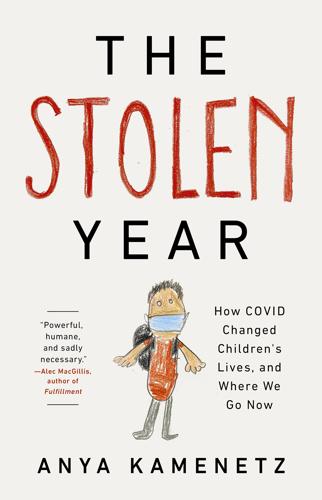
The Stolen Year
by
Anya Kamenetz
Published 23 Aug 2022
That was Dwight Macdonald writing in the New Yorker, in an influential review of Michael Harrington’s even more influential 1962 book The Other America. The book, a document of poverty in the midst of plenty, is credited in part with inspiring President Lyndon B. Johnson’s War on Poverty. Free school lunches were mandated in 1962 as part of that War on Poverty, which also introduced food stamps. But there was no federal funding to back up the free lunch mandate for four years after it first appeared. That came with the 1966 Child Nutrition Act. Federal War on Poverty programs required a national standard for determining who was poor. So it was that in the mid-1960s, home economist Mollie Orshansky invented the federal poverty line.
…
Serena had been a picky eater, fond of candy, and now there was no way to get her favorite things. As they saw these numbers coming in, hunger researchers and advocates felt like they were screaming into a void. Economist Diane Schanzenbach is a star in the world of child benefits. She’s done groundbreaking research on the introduction of food stamps as part of the War on Poverty in the 1960s and 1970s, demonstrating that it improved birth weights and lifetime health outcomes for children with access to the program before the age of five. And for little girls in particular, there was also a measurable impact on life outcomes: those with access to food aid as children were more likely to graduate high school, earned more, and were less reliant on public benefits as adults.
…
In the early 1970s, the nation had yet another kick at the Charlie Brown football of childcare. That was when Senator Walter “Fritz” Mondale, a liberal from Minnesota, introduced the Comprehensive Child Development Act. He was building on the success of Head Start, which had been introduced as part of the War on Poverty just a few years before. The proposal was for a national network of federally funded childcare centers open to all families on a sliding scale. “Because the focus was on children… I assumed this would not be a controversial bill,” Mondale recalled. Hahahaha, that’s a sweet thought, guy. It was the dawn of second-wave feminism.
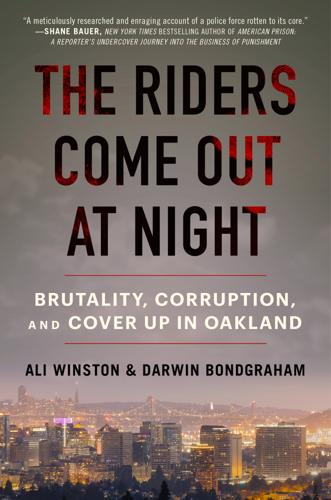
The Riders Come Out at Night: Brutality, Corruption, and Cover-Up in Oakland
by
Ali Winston
and
Darwin Bondgraham
Published 10 Jan 2023
Bob Distefano, “ ‘Action Jackson’—From Con to Counselor,” Oakland Tribune, March 21, 1970, 1. 41. “Panel Favors Police Review,” Oakland Tribune, February 24, 1966, 23E. 42. “Playing Political Games Won’t End Oakland’s War on Poverty,” editorial, Oakland Tribune, March 31, 1970, 16. 43. Bob Distefano, “Oakland War on Poverty Agency Doomed; Months Required for Successor,” Oakland Tribune, April 13, 1971, 1. 44. Elizabeth Hinton, From the War on Poverty to the War on Crime: The Making of Mass Incarceration in America (Cambridge, MA: Harvard University Press, 2016), 134–79. 45. Ward Churchill and Jim Vander Wall, The COINTELPRO Papers: Documents from the FBI’s Secret Wars Against Dissent in the United States (Cambridge, MA: South End Press, 1990), 129, 363. 46.
…
“Stories about ‘police brutality’ and ‘police harassment’ are common, yet the existing channels for filing complaints are seldom used.”41 The split on police oversight contributed to the eventual position taken by Oakland’s white power structure to run the federal government out of town. Oakland’s hostile approach to the War on Poverty foreshadowed the direction the United States would eventually take when it turned hard to the right during the administration of President Richard Nixon and rejected social and economic transformation that could structurally eliminate the root causes of crime. Instead, the country embraced police violence to contain poverty. One telling episode involved an East Bay congressman’s discovery that Panther Party cofounder Bobby Seale was employed by a North Oakland youth center, one of the War on Poverty programs. Federal officials quickly had Seale fired.
…
With millions of dollars in funding from Washington, they hired the chronically unemployed, formerly incarcerated, and disillusioned, paying them living wages to attend college and train for careers.40 At first, Mayor John Reading and a handful of other powerful Oakland conservatives were cautiously optimistic about the War on Poverty programs. His own philosophical view, Reading said in interviews, was that jobs were the solution to crime and civil unrest. If the federal government was footing the bill, all the better for Oakland’s taxpayers. However, it didn’t take long before the federally funded agencies conflicted with the city’s white leadership.
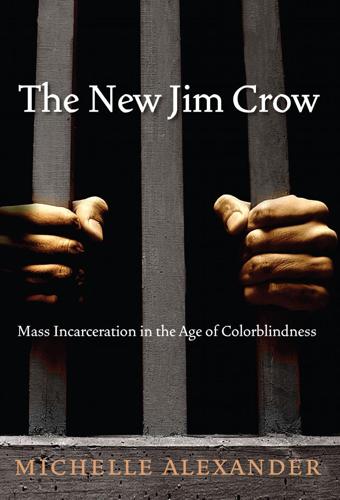
The New Jim Crow: Mass Incarceration in the Age of Colorblindness
by
Michelle Alexander
Published 24 Nov 2011
Black “welfare cheats” and their dangerous offspring emerged, for the first time, in the political discourse and media imagery. Liberals, by contrast, insisted that social reforms such as the War on Poverty and civil rights legislation would get at the “root causes” of criminal behavior and stressed the social conditions that predictably generate crime. Lyndon Johnson, for example, argued during his 1964 presidential campaign against Barry Goldwater that antipoverty programs were, in effect, anticrime programs: “There is something mighty wrong when a candidate for the highest office bemoans violence in the streets but votes against the War on Poverty, votes against the Civil Rights Act and votes against major educational bills that come before him as a legislator.”56 Competing images of the poor as “deserving” and “undeserving” became central components of the debate.
…
In the summer of 1963, he initiated a series of staff studies on those subjects. By the end of the summer, he declared his intention to make the eradication of poverty a key legislative objective in 1964.35 Following Kennedy’s assassination, President Lyndon Johnson embraced the antipoverty rhetoric with great passion, calling for an “unconditional war on poverty,” in his State of the Union Address in January 1964. Weeks later he proposed to Congress the Economic Opportunities Bill of 1964. The shift in focus served to align the goals of the Civil Rights Movement with key political goals of poor and working-class whites, who were also demanding economic reforms.
…
Douglas Massey and Nancy Denton’s book, American Apartheid, documents how racially segregated ghettos were deliberately created by federal policy, not impersonal market forces or private housing choices.79 The enduring racial isolation of the ghetto poor has made them uniquely vulnerable in the War on Drugs. What happens to them does not directly affect—and is scarcely noticed by—the privileged beyond the ghetto’s invisible walls. Thus it is here, in the poverty-stricken, racially segregated ghettos, where the War on Poverty has been abandoned and factories have disappeared, that the drug war has been waged with the greatest ferocity. SWAT teams are deployed here; buy-and-bust operations are concentrated here; drug raids of apartment buildings occur here; stop-and-frisk operations occur on the streets here. Black and brown youth are the primary targets.
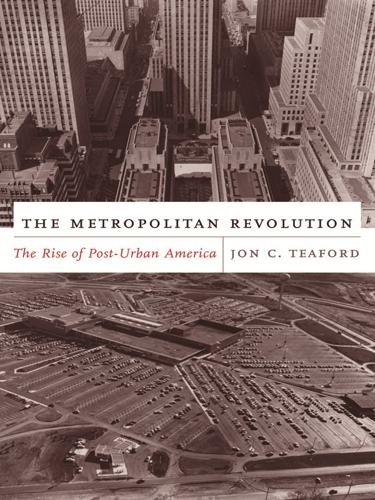
The Metropolitan Revolution: The Rise of Post-Urban America
by
Jon C. Teaford
Published 1 Jan 2006
Report of Commission on Civil Disorders, pp. 106–7, 115, 164. 66. Ibid., pp. 1, 407. 67. Ibid., pp. 134, 177. 68. Piven and Cloward, Regulating the Poor, p. 269. 69. Ralph M. Kramer, Participation of the Poor: Comparative Community Case Studies in the War on Poverty (Englewood Cliffs, N.J.: Prentice Hall, 1969), pp. 25, 31. 70. Daniel P. Moynihan, Maximum Feasible Misunderstanding: Community Action in the War on Poverty (New York: Free Press, 1970), p. 156. 71. Kramer, Participation of the Poor, p. 53. 72. Estelle Zannes, Checkmate in Cleveland: The Rhetoric of Confrontation During the Stokes Years (Cleveland: Press of Case Western Reserve University, 1972), p. 49. 73.
…
What was evident was that much of the central city was out of bounds to them. Newark and Detroit were no longer their cities. They belonged to rebellious blacks and thus were not desirable places to invest and live in or even to visit. Reinforcing the perception of rebellion were government-sponsored community action programs. In 1964 President Johnson launched his War on Poverty, a federal initiative to level the social and economic playing field in America. One vital element of the federal scheme was the community action councils, which were to guide the assault on poverty in poor neighborhoods throughout the nation. There was to be “maximum feasible participation” by the poor on these neighborhood councils.
…
There was to be “maximum feasible participation” by the poor on these neighborhood councils. In the minds of many Americans, the program was intended to empower the poor, specifically poor blacks, and enable them to seize control of their destinies from the prevailing white power structure. According to one contemporary observer, the federal bureaucrats in charge of the War on Poverty “operated on the assumption that the involvement of the poor in policy-making was necessary in order to redistribute power in the cities; without power redistribution, they believed, there would be no great improvement in the lot of the Negro poor.”68 The notion of a federally funded revolution understandably troubled many white central-city officials.

Empty Vessel: The Story of the Global Economy in One Barge
by
Ian Kumekawa
Published 6 May 2025
BACK TO NOTE REFERENCE 32 See Naomi Murakawa, The First Civil Right: How Liberals Built Prison in America (New York: Oxford University Press, 2014); Hinton, From the War on Poverty to the War on Crime. BACK TO NOTE REFERENCE 33 George L. Kelling and James Q. Wilson, “Broken Windows: The Police and Neighborhood Safety,” The Atlantic (March 1982). BACK TO NOTE REFERENCE 34 Ibid. BACK TO NOTE REFERENCE 35 Wilson advocated divestment from social welfare programs and investment in law enforcement that would focus on deterrence and the prevention of potential crime. Hinton, From the War on Poverty to the War on Crime, 185–87; Vitale, City of Disorder, 46–49.
…
BACK TO NOTE REFERENCE 7 Stephen Ward, “Troop Barge to Be US Prison,” The Independent, August 15, 1987. BACK TO NOTE REFERENCE 8 Douglas Martin, “Prison Barge Arrives at East River Pier; City to Seek Another,” The New York Times, October 27, 1987. BACK TO NOTE REFERENCE 9 Elizabeth Hinton, From the War on Poverty to the War on Crime: The Making of Mass Incarceration in America (Cambridge: Harvard University Press, 2016), especially chapter 9. See also Clarence Taylor, Fight the Power: African Americans and the Long History of Police Brutality in New York City (New York: New York University Press, 2018).
…
Flowe, Uncontrollable Blackness: African American Men and Criminality in Jim Crow New York (Chapel Hill: University of North Carolina Press, 2020). BACK TO NOTE REFERENCE 11 Today the corresponding figure has risen to about two-thirds of the prison population. See Hinton, From the War on Poverty to the War on Drugs, 310 and the rest of chapter 9. David Garland, The Culture of Control: Crime and Social Order in Contemporary Society (Chicago: University of Chicago Press, 2002), 14; Michael Tonry, Malign Neglect: Race, Crime and Punishment in America (New York: Oxford University Press, 1996).
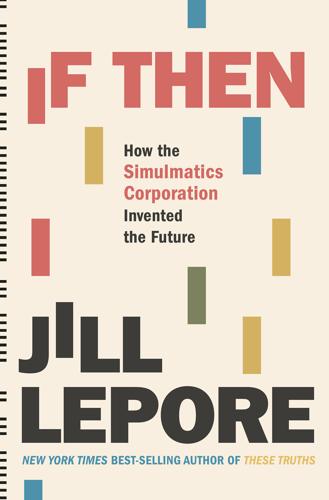
If Then: How Simulmatics Corporation Invented the Future
by
Jill Lepore
Published 14 Sep 2020
And see, broadly, Malcolm McLaughlin, The Long Hot Summer of 1967: Urban Rebellion in America (New York: Palgrave Macmillan, 2014). Claude Brown and Arthur Dunmey, “Harlem’s America,” New Leader, September 1966. For a brilliant reconstruction and discussion of the relationship between the war on poverty and the war on crime, including the emphasis on prediction in both efforts, see Elizabeth Hinton, From the War on Poverty to the War on Crime: The Making of Mass Incarceration in America (Cambridge, MA: Harvard University Press, 2017). Especially useful is ELG, “Statement to Stockholders, September 20, 1966,” in which Greenfield notes the growth of the company between 1965 and 1966 and explains, “The seeds of our future growth were already germinating in 1964.
…
“We have talked long enough in this country about equal rights for all Americans, whatever their race or color,” he said, his voice rising. Congress interrupted him with applause. “We have talked for one hundred years or more. It is time now to write the next chapter, and to write it in the books of law.”9 Johnson would pledge to create a Great Society. He would announce a war on poverty. He sought federal aid for public education, and for the care of the sick and the poor and the old, with the establishment of Medicare and Medicaid. Johnson was a legislative mastermind. “Kennedy couldn’t have gotten the Ten Commandments through Congress,” Johnson later scoffed, privately. Johnson’s program was not Kennedy’s program; compared to Johnson, Kennedy was a conservative.
…
The violence lasted for six nights and involved an astonishing thirty-five thousand people. A thousand people were injured. Thirty-four were killed. “If I’ve got to die, I ain’t dying in Vietnam,” said one protester. “I’m going to die here.”8 Lyndon Johnson shepherded the passage of the 1964 Civil Rights Act and the 1965 Voting Rights Act, declared a War on Poverty, and planned to build a Great Society, with federal aid for economic development. Conservatives read the riots as an indictment of everything he had done and hoped to do. Greenfield had a plan of his own, Claude Brown told the Senate. Greenfield had the idea that there were mathematical geniuses all over Harlem, in every ghetto in the country, kids who were running numbers games, hustlers with a natural aptitude for business.
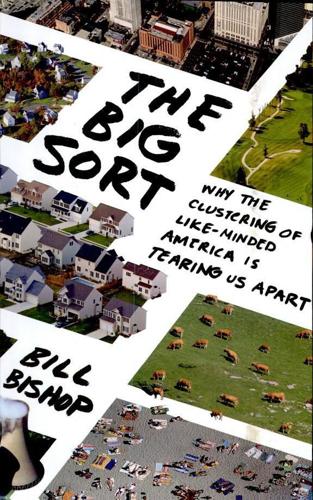
The Big Sort: Why the Clustering of Like-Minded America Is Tearing Us Apart
by
Bill Bishop
and
Robert G. Cushing
Published 6 May 2008
On the first day of school in the fall of 1965, Gene Roberts of the New York Times reported that southern educators "said it was the biggest day of integration in the Souths history."38 On January 25, LBJ proposed a budget containing what the New York Times described as the "biggest expansion of domestic welfare and educational programs since the New Deal of the nineteen thirties."39 Two months later, Johnson signed the bill creating the Appalachian Regional Commission, the first, but certainly not the last, War on Poverty bill to reach the president that year. The first children entered Head Start in May. In 1965, "for the first time since the Great Depression, the federal government began to exert a strong and direct influence on the arts," wrote Julia Ardery, as Congress created both the National Endowment for the Arts and the National Endowment for the Humanities.40 Johnson could control Congress, but he couldn't contain the conflict in Vietnam or the American South.
…
Professor Ivor Crewe was Carteresque when he testified that "there is no doubt that distrust and alienation has risen to a higher level than ever before."60 When Americans looked within their own history to explain this change in the national psyche, they latched on to nouns: Watts, My Lai, Watergate, Stagflation, Monica, Enron, Katrina. But, as Dalton explained, nouns don't tell the story. People, places, and events familiar to Americans wouldn't cause trust to decline in countries with wildly different political histories. Why Bill Clinton Didn't Declare a War on Poverty The loss of faith in public institutions has been the "key change in American public opinion over the last 40 years," Vanderbilt University political scientist Marc Hetherington concludes. The decline in trust placed Democrats at a permanent disadvantage, one that both diminished their chances for winning elections and hogtied their efforts to govern.61 President John Kennedy had been able to proclaim a "New Frontier" and President Lyndon Johnson could declare a "Great Society" because Americans trusted government.
…
In the new political climate, they proposed solutions to public problems that were to be carried out by a government that most people—even Democrats—no longer trusted to act in society's best interest. Hetherington points out that Bill Clinton was not so different from Johnson in his background or his politics. Both had grown up poor in the South. Both were presidents during economic expansions. Both had partisan advantages in Congress. But whereas Johnson declared the War on Poverty, Clinton announced that the "era of big government is over." What separated Johnson's administration from Clinton's wasn't the power of the right wing, the reticence of business, or Democratic perfidy, Hetherington argues. The difference was that people trusted government in 1965 and they didn't in 1993.62 Hetherington found the perfect example of the Democrats' dilemma.
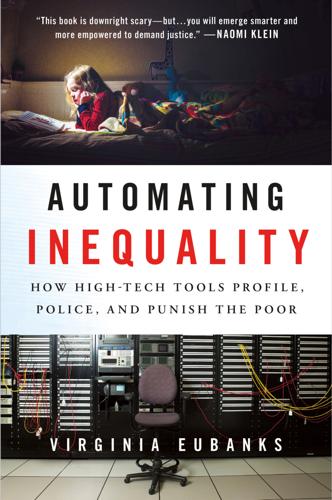
Automating Inequality
by
Virginia Eubanks
We won’t need government at all. Troubling this vision of a government governing best by governing least is the fact that, historically, we have only made headway against persistent poverty when mass protest compelled substantial federal investment. Many of the programs of the Social Security Act, the GI Bill, and the War on Poverty suffered from fatal flaws: by excluding women and men of color from their programs, they limited their own equalizing potential. But they offered broadly social solutions to risk and acknowledged that prosperity should be widely shared. The very existence of a social safety net is premised on an agreement to share the social costs of uncertainty.
…
In a letter to supporters, King warned that the Poor People’s Campaign was America’s “last chance” to arouse its “conscience toward constructive democratic change.”3 Instead, by 1976, the digital poorhouse had emerged and a movement to restrict the rights of poor families was sweeping the country. The combination of more restrictive rules, faster processing, less human discretion, and more complete surveillance shredded our already inadequate social safety net. The Congress used the cost of the war in Vietnam to rationalize dismantling War on Poverty programs. The peacetime GI Bill, public service jobs, and minimum guaranteed income called for by the Poor People’s Campaign never materialized. * * * Today, these goals still sometimes feel hopelessly out of reach. But if we are serious about dismantling the digital poorhouse—and ending poverty—we could do worse than to start with this list of 50-year-old demands.
…
Jackson, Larry R., and William A. Johnson. “Protest by the Poor: The Welfare Rights Movement in New York City.” New York: RAND Institute, 1973. Katz, Michael B. In the Shadow of the Poorhouse: A Social History of Welfare in America. New York: Basic Books, 1996. ________. The Undeserving Poor: From the War on Poverty to the War on Welfare. 1st ed. New York: Pantheon Books, 1990. Katz, Michael B., and the Committee for Research on the Urban Underclass Social of the Science Research Council . The “Underclass” Debate: Views from History. Princeton, NJ: Princeton University Press, 1993. Kennedy, Howard. “Policy Due on ‘Night Raid’ Checking of Welfare Cases,” LA Times, Feb. 18, 1963, 1.
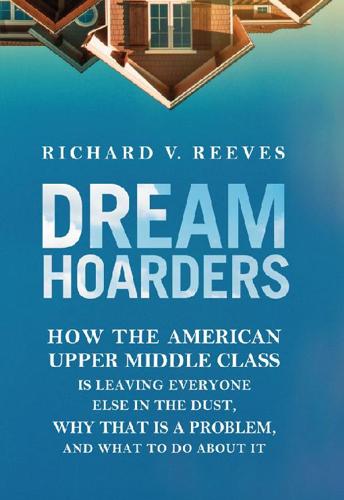
Dream Hoarders: How the American Upper Middle Class Is Leaving Everyone Else in the Dust, Why That Is a Problem, and What to Do About It
by
Richard V. Reeves
Published 22 May 2017
“WE ARE THE 20 PERCENT”: THE MONEYED UPPER MIDDLE CLASS The American conversation about economic inequality has two dominant motifs. The first is the persistence of poverty, even in a country that a hundred years ago W. E. B. Du Bois labeled “a land of dollars.”8 Nobody can plausibly suggest that the War on Poverty was won: 15 percent of Americans remain in poverty, according to official estimates.9 But nor can anyone sensibly suggest that the War on Poverty was lost, either. The poverty rate has dropped by 7 percent since 1959, largely as a result of increased government transfers to those with low incomes. The fairest conclusion is a draw. The second theme, especially salient in recent years, is the extraordinary gains of those at the very top—variously the “upper class,” the “super-rich,” the “top 1 percent.”
…
See also Children’s advantages; Inequality gap; Inheritance of status; Market meritocracy; Opportunity hoarding; Sacrifices required Upstream, 126 Vance, J. D., 75–76, 120 Van Hollen, Chris, 1–2 Venator, Joanna, 126 Vocational education, 50 Vonnegut, Kurt, 78 Wage inequalities, 26–27. See also Income inequality Waldfogel, Jane, 45 Waldman, Paul, 2 Walker, Darren, 145 War on Poverty, 22 Washbrook, Liz, 45 West, Darrell, 135 White anxiety, 3 Williams, Bernard, 81–82 Winship, Scott, 66–67 Wolff, Edward, 26 Women. See Gender Yale University, 109, 120 Young, Michael, 11–12, 29, 78–80 Zhang, Kan, 34 Z-lists, 112–13 Zoning. See Exclusionary zoning

Good Economics for Hard Times: Better Answers to Our Biggest Problems
by
Abhijit V. Banerjee
and
Esther Duflo
Published 12 Nov 2019
John Steinbeck’s brave Okies fleeing the Dust Bowl are a staple of high school classes. Franklin D. Roosevelt’s New Deal marked the beginning of an era where poverty was seen as something society could fight, and beat, with government intervention. This continued until the 1960s, culminating in Lyndon B. Johnson’s “war on poverty.” But when growth slowed and resources were tight, the war on poverty turned into war on the poor. Ronald Reagan would return time and again to the image of the so-called welfare queen, who was black, lazy, female, and fraudulent. The model for this was Linda Taylor, a woman from Chicago who had four aliases and was convicted of $8,000 in fraud, for which she spent several years in prison.
…
In 2018, President Trump’s Council of Economic Advisers issued a report advocating a work requirement as a condition of eligibility for the three major noncash assistance programs: Medicaid, SNAP (food stamps), and rental assistance.18 In June of 2018, Arkansas became the first state to implement a work requirement for Medicaid adults. Interestingly, the Council of Economic Advisers’ main argument was no longer that the war on poverty had failed but, on the contrary, that “our war on poverty is largely over and a success.” The report argued that “the safety net—including government tax and [both cash and non-cash] transfer policies—has contributed to a dramatic reduction in poverty [correctly measured] in the United States. However, the policies have been accompanied by a decline in self-sufficiency [in terms of receipt of welfare benefits] among non-disabled working-age adults.
…
This was one and a half years longer than onetime billionaire capitalist hero Charles Keating, the central figure in the most famous corruption scandal of the Reagan era (the Keating Five scandal), and the related savings and loans crisis that was to cost taxpayers over $500 billion in bailout money. In a new twist, the moral turpitude of the poor was now presented as the consequence of welfare itself. In 1986, Reagan famously declared the war on poverty lost. It was welfare that made us lose the war, by discouraging work and encouraging dependency, which led to the “crisis of family breakdowns, especially among the welfare poor, both black and white.”14 In a radio address to the nation on February 15, 1986, Reagan declared: We’re in danger of creating a permanent culture of poverty as inescapable as any chain or bond; a second and separate America, an America of lost dreams and stunted lives.

Dopesick: Dealers, Doctors and the Drug Company That Addicted America
by
Beth Macy
Published 4 Mar 2019
The region was still referred to as the coalfields, even though coal-mining jobs had long been in steep decline. It had been three decades since President Lyndon Johnson squatted on the porch of a ramshackle house just a few counties west, having a chat with an unemployed sawmiller that led him to launch his War on Poverty, which resulted in bedrock social programs like food stamps, Medicaid, Medicare, and Head Start. But poverty remained very much with the coalfields the day Stallard had his first brush with a new and powerful painkiller. Whereas half the region lived in poverty in 1964 and hunger abounded, it now held national records for obesity, disability rates, and drug diversion, the practice of using and/or selling prescriptions for nonmedical purposes.
…
The miners had portions of their pay deducted from their salary to build the clinic in 1973. They’d also organized bake sales and talent shows, and spent years soliciting donations, many of the efforts shepherded by a trio of plucky nuns who’d migrated to the region a decade earlier, heeding LBJ’s and Robert Kennedy’s call to help Appalachia fight the War on Poverty. Nicknamed the Nickel and Dime Clinic, it was literally built by coal miners and community activists, people who chipped in every penny of their spare change. These weren’t simply Van Zee’s patients who were showing up in the ER; they were also dear friends, many of them descendants of the coal miners whose pictures lined his exam-room walls.
…
“I said, ‘Look, I’m an Appalachian scholar, and my family goes back here forever, and I take tremendous insult,’” she recalled. She stormed out with the others, and the newspaper ad never ran. * The next day Friedman gathered with Richard Stallard and other law enforcement officers at Kathy’s Country Kitchen in the Lee County seat. Sister Beth Davies, the pluckiest of the three nuns who had answered the War on Poverty call, was in attendance. So was pharmacist Greg Stewart, a miner’s son whose parents had personally helped build the St. Charles clinic. When Stewart filled OxyContin prescriptions, he begged his customers to lock their medication up. He’d already been the victim of two robbery attempts, including one by the son of a neighboring hair-salon owner who crawled in through the ceiling vents connecting the salon to Stewart’s store.
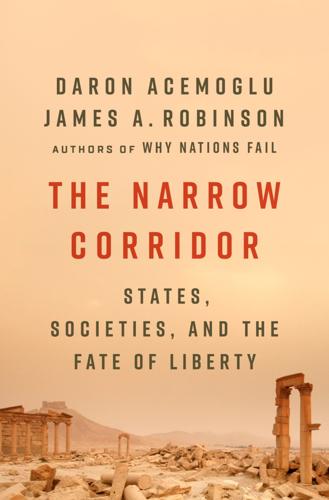
The Narrow Corridor: States, Societies, and the Fate of Liberty
by
Daron Acemoglu
and
James A. Robinson
Published 23 Sep 2019
FDR also signed the National Labor Relations Act of 1935 and created an elaborate bureaucracy to enforce this law, investigating whether firms were in compliance and bringing lawsuits against them if they weren’t (even though, as we have seen, later legislation such as Title VII of the Civil Rights Act eschewed this approach and went back to the public-private partnership model). An equally significant expansion of the role of the federal state in the economy was spearheaded by President Johnson’s “Great Society” program. Johnson introduced the central tenet of the program, the “War on Poverty,” in his 1964 State of the Union address by stating, “This administration today, here and now, declares unconditional war on poverty in America.” The War on Poverty too was a response to social changes, driven by both high rates of poverty that had long existed in many parts of the United States and the growing disparities between whites and blacks who had come to form a majority in many neighborhoods in inner cities.
…
Though society’s mobilization has triggered a spectacular growth in the capacity of the federal state, the architecture of the Constitution continued to influence the way that some of these programs were developed as well as their outcomes (Ronald Reagan quipped about the War on Poverty that “the federal government declared war on poverty, and poverty won”). Consider, for example, FDR’s flagship Social Security Act. Until the New Deal the United States had failed to develop any broad-based social insurance policy while Britain had started to move in that direction in 1906 and Germany even earlier in the 1880s.
…
Nor should we be surprised that this public-private partnership model hasn’t worked well for providing a social safety net to poor Americans. As society became more mobilized and assertive, the American Leviathan has sometimes been induced to step in with programs such as President Johnson’s “War on Poverty” to fill this void, but this has often been an incomplete effort. Perhaps paradoxically, we’ll also see that this path of the American Leviathan has had another important unintended consequence: the lack of effective monitoring of state activities in some crucial dimensions. Hemmed in by the straitjacket imposed by the Federalists’ compromises and the public-private partnership model, the American state could not deal through legitimate channels with the increasingly complex security challenges posed by the Cold War and the recent rise in international terrorism.

Don't Burn This Book: Thinking for Yourself in an Age of Unreason
by
Dave Rubin
Published 27 Apr 2020
By 1918 Wilson had banned any criticism of the government via the controversial Espionage and Sedition Acts. Jump forward to 1964 and the biggest congressional opposition to the Civil Rights Act came from Democrats. The following year, President Lyndon B. Johnson, a Democrat, launched his War on Poverty, which was billed as correcting racially related poverty. At this time, the out-of-wedlock birth rate was 25 percent among blacks (according to the Office of Policy Planning and Research). In 2015 it was 77 percent. Dr. Thomas Sowell described this phenomenon by saying, “The black family, which had survived centuries of slavery and discrimination, began rapidly disintegrating in the liberal welfare state that subsidized unwed pregnancy and changed welfare from an emergency rescue to a way of life.”
…
ABC, 148–49, 149–50 abortion, 45–49 compromise between individual rights and government role and, 49 genesis of life and, 46 left’s fetishizing of, 46 public rights versus governmental role, 48–49 survival rates of premature babies, 48 time limits for, 47, 48 Abriss, Erik, 154 Act for America, 133 admitting you don’t know something, 172–75 Adorno, Theodor, 67 Advocate, The, 85 Affleck, Ben, 18–20 Affordable Care Act (ACA), 102 Afghanistan, 70 African Americans intact families and, 91–93 systemic racism and, 89–92, 97–100 welfare state and, 92 Alain de Lille, 202 alcohol, 33–34 algorithmic manipulation of news intake, 163 Ali, Ayaan Hirsi, 6–7, 133–35 Amazon, 142 American Civil Liberties Union, 50 American Conservative Coalition, 110 American dream, as non-discriminatory, 146–47 American Revolution, 131 anti-Semitism, 108 Argentina, 101 Asian Americans, 143 Aslan, Reza, 155 assault rifles, 106 automation, 66 avoidance behavior, 129 “Baby, It’s Cold Outside” (song), 198 Backer, Benji, 110 balanced life, tips for living, 204–6 Banaji, Mahzarin, 98 Baquet, Dean, 158 Barre, Siad, 133 Bercovici, Jeff, 161 Berger, Joseph, 79–80 Bergman, Ben, 161 Berlatsky, Noah, 154 Birth of a Nation, The (film), 112 Black Hebrew Israelites, 153, 154 blatant falsehoods, 163 Block, Hyman, 137 Boghossian, Peter, 87 Booker, Cory, 155–56 books, 164 Boothe, John Wilkes, 112 borders, 40–41 Boston Tea Party, 131 Bouyeri, Mohammed, 134 Brampton, Sally, 203 Brown, Danielle, 26 Bunch, Sonny, 199 Bureau of Labor Statistics, 104 Bush, George W., 70, 131–32 Buttigieg, Pete, 159 BuzzFeed, 9, 21–22, 60, 149 Cain, Caleb, 159, 161, 162 cancel culture, 85 Capehart, Jonathan, 154 capitalism, 141–42 Carlson, Tucker, 122–24 Carnevale, Anthony, 104 “Cashing in on the Rise of the Alt-Right” (Harkinson), 77 catastrophizing, 196–97 CBD (cannabidiol), 33 CBS, 149–50 Chabloz, Alison, 52 character assassination, 16–17 Charlesworth, Tessa, 98 Charlie Hebdo terrorist attack, 20–21 China, 139–40 Churchill, Winston, 203 Civil Rights Act of 1964, 38, 112 Clarkson, Kelly, 198 classical liberalism, 7–8, 28, 29–71 abortion and, 45–49 definition, 30 drugs and, 32–36 economics and, 62–67 foreign policy and, 67–71 free speech and, 50–54 gay marriage and, 37–39 gun control and, 54–58 historical proponents of, 30–31 immigration and, 39–45 individual rights, protection of, 30–31 political language of, 96 stereotypes, neutralization of, 31 tolerance of opposing viewpoints and, 37–39 trans issues and, 59–62 class warfare, 65 Clinton, Hillary, 42, 113 CNN, 10, 21–22, 148–49, 150 Covington story and, 153, 155 Jussie Smollett news story and, 157 Russian Hoax and, 158 college professors, left-wing political brainwashing by, 151 comedy, 187–90 coming out, 3–5 Confederate flag, 112 conservatives political language of, 96 pro-life position of, 49 Cook, Tim, 146 Covington story scandal, 152–55 crack, 34–35 Cruz, Nikolas, 58 culture war, 197–201 Cuomo, Andrew, 156 Daily Beast, The, 149 Daily Show, The (TV show), 62–63, 134–35 Daily Signal, The, 92 Damore, James, 25–26 Daniels, Jessie, 92 Darcy, Oliver, 161 David and Goliath story, 183 debt, government, 66 Declaration of Independence, 31, 144 Deconstructing Harry (film), 4 defensive gun use, lives saved from, 106 DeFranco, Philip, 159, 160–61 DeGeneres, Ellen, 146 Democratic Party, historical background of Civil Rights Act, opposition to, 112 Confederate flag, creation of, 112 Dred Scott ruling and, 111 Ku Klux Klan, formation of, 111–12 Lincoln assassination and, 112 opposition to Thirteenth, Fourteenth and Fifteenth Amendments, 112 school choice, opposition to, 113 War on Poverty and, 112 Democrats = good, Republicans = bad myth, 111–13 Demos, 101 denial, 12 digital journalism, 151 discrimination, 83 Dred Scott ruling, 111 dressing as the person you want to be, 175–79 drugs, 32–36 alcohol, 33–34 government role, 34–36 marijuana, 33 nicotine, 33 Schedule I controlled substances, 34–35 state versus federal issue, 36 taxation and, 35 Dunham, Lena, 127 economic issues, 62–67 government debt, 66 government size and spending, 64 minimum wage, 62, 65–66 tax rates, 64–65 unpaid internships, 62–63 welfare, 66 Economist, The, 80 Ehrlich, Paul, 108 Elder, Larry, 87–95 “An Empirical Analysis of Racial Differences in Police Use of Force” (Fryer), 98 environmental issues, 108–10 extreme weather, 109 food shortage, 108–9 polar bears, 110 Equality Act of 1974, 38 Evans, Chris, 127 Evergreen State College, 22, 23 extreme weather, 109 Facebook, speech guidelines of, 53 fact checking, 8, 87–113 Democrats = good, Republicans = bad myth, 111–13 Elder interview and, 87–95 environmental issues, 108–10 gun control, 105–6 hate crimes, 107–8 learning and growing when faced with new facts, 94–95 nuclear family, importance of, 91–93 political languages, recognizing, 95–97 slow thinking, practicing, 96–97 systemic racism, 89–92, 97–100 wage gap, 103–5 war on women, 100–103 fake news, 9–10, 148–65 algorithmic manipulation of news intake, 163 blatant falsehoods, 163 categories of, 162–63 college professors, left-wing political brainwashing by, 151 Covington story scandal, 152–55 curating list of trusted journalists who operate in good faith, 163–64 distrust of media, 162 gut instinct, following your, 164 historical background, 149–51 institutional, 163 Jussie Smollett news story, 155–57 narrative-driven, 162 political activism and propagandism by journalists, 151–52 proprietors of, examples of, 148–49 Roose’s hit piece blaming Rubin and others for radicalizing youth, 159–62 Russian Hoax and, 157–58 family, 91–93, 112–13 Family Guy (TV show), 189 fatherless children, 91–92 Feinstein, Dianne, 44 Ferguson, Niall, 134 Field of Dreams (film), 177 Fifteenth Amendment, 112 First Amendment free speech rights, 14, 50–54 Fonda, Jane, 103 food shortage, 108–9 foreign policy, 67–71 peace through strength strategy, 67–68 red line in Syria, failure to enforce, 68 troop withdrawals, 70 Ukraine, NATO’s failure to help, 69 Forrest, Nathan Bedford, 111–12 Fourteenth Amendment, 112 Fox News, 150 France, 69, 141 free speech, 50–54, 207 combating conspiracy theories and bad ideas with, 50–51 comedy and, 189 as essential to civilized society, 52 exceptions specified by Supreme Court, 50 hate speech laws and, 52 Kaepernick’s kneeling for national anthem and, 53–54 progressive policing of, 52–53 free thinking, 7–8, 28, 29–71.
…
Transgender Survey, 61 Uygur, Cenk, 16 Vaidhyanathan, Siva, 161 van Gogh, Theo, 134 Vice, 60 victimhood culture, 83, 139, 145 Vietnam, 132 Vila, Bryan J., 98–99 Virtue of Nationalism, The (Hazony), 40 virtue signaling, 127–28 Vox, 9, 149, 159 Vulture, 154 wage gap, 103–5 wake-up call, embracing, 7, 12–28 Affleck’s attack of Harris and Maher on Real Time with Bill Maher, 17–20 author’s wake-up call, 14–22 Charlie Hebdo attack and left’s response, 20–22 Damore’s memo at Google, left’s response to, 25–26 fear of fallout from, 13 independent thinking and, 28 leftism and liberalism, distinguished, 13–14 presumptions, overcoming, 14–15 problem, admitting there’s a, 12 rejection by left, sense of community and other benefits of, 27–28 Shepherd accused of being transphobic, 24–25 truth and reality, embracing, 12–13 Weinstein, and silencing of dissent by left, 22–24 The Young Turks, character assassination of Webb by, 16–17 Waking Up: A Guide to Spirituality Without Religion (Harris), 17–18 Walmart, 65–66 Ware, Bonnie, 195–96 War of the Worlds (radio broadcast), 198 War on Poverty, 112–13 war on women, 100–103 custody of children in divorce, men versus women, 102 homicide rates and, 101 incarceration rates of women versus men, 102 longevity, 102 online trolling by women versus men, 101–2 Selective Service registration not required for women, 102 taxes paid, men versus women, 102–3 university attendance, rates of, 100–101 wage gap myth, 103–5 Washington Post, The, 99, 149 Covington story and, 153, 154 Jussie Smollett news story and, 157 Waters, Maxine, 156 weather, extremes in, 109 Webb, David, 16–17 Weinstein, Bret, 6–7, 22–24 Weinstein, Eric, 162–63 welfare, 66 Wen, Leana, 47 Western values, hatred for.
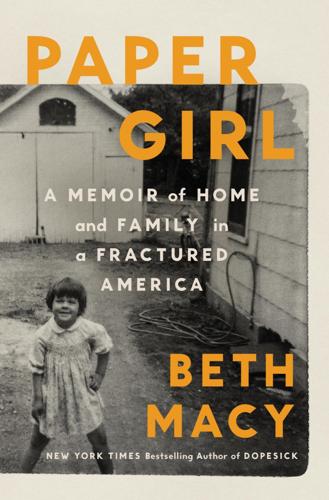
Paper Girl: A Memoir of Home and Family in a Fractured America
by
Beth Macy
Published 6 Oct 2025
When you consider that the government recoups the money spent on a typical Pell grantee, through taxes on their increased earnings, in just ten years,[10] the gutting of Pell’s purchasing power is extremely shortsighted. But the plundering of this federal program, birthed in the last gasp of America’s War on Poverty, is also rarely discussed. * * * — America’s student-loan debt machine is now larger than Americans’ combined credit-card debt.[11] Think about how many college graduates have amassed five- and six-figure student-loan debts, and yet a third still earn less than half the nation’s median wage.[12] While economists argue that a four-year degree is still the best long-term path forward,[13] only half of Americans participate in any form of higher ed at all.
…
As our chartered Greyhound rolled into West Virginia, I closed my eyes and held my breath, hoping that something cellular inside me would be changed. * * * — Little did I understand that politicians on both sides were actively promoting programs to ensure it would not be my last trip across state lines. An outgrowth of LBJ’s War on Poverty, access to higher education for poor kids was spurred by America’s need to remain competitive in a rapidly globalizing world. Back then the government took a more active role in training its workforce; it did not just leave things to the market’s invisible hand. A few years before my Washington field trip, a quirky, blue-blooded Rhode Island senator named Claiborne Pell designed what he called the “G.I.
…
See also rural populations sovereign citizens, 194–95, 206, 208, 296 Urbana, 44, 144, 157 whites, 80–81 pornography, 56, 114, 122, 306 poverty, 23, 44, 46, 53, 82, 86, 194, 275 absenteeism and, 214 children in, 9, 11, 39, 66, 72–73, 103–4, 158, 278 cognitive capacity and, 190 family, 79, 117 Macy, Beth, with, 7–8, 66 trauma and, 179, 216 War on Poverty, 12, 40 The Power Worshippers (Stewart), 196 press releases, newspaper, 8, 63, 116, 223 “pride paradox,” shame and, 186 prison, 64, 82, 114, 198, 209, 216, 292, 309. See also jail privatization, of education, 10, 196, 198 production (manufacturing) industry, 8–9, 29, 74–75, 149, 200, 203, 212, 294 with employee absenteeism, 187–88 Grimes Manufacturing, 26, 33, 40, 47, 49, 72, 156, 157, 167, 232, 278 layoffs, 46–47, 70, 157, 182 wages, 91, 202 propaganda, 15, 45, 118 Proud Boys, 225, 273 PTSD, 209, 296, 303 publishers, newspapers, 32, 55–56, 63 purchasing power, Pell Grants, 12, 43, 46, 48, 48, 78, 83, 200 Putin, Vladimir, 63 Q Qaddafi, Muammar, 181, 183 QAnon conspiracy theories, 169, 172–75, 178, 183–84, 282 supporters, 62–63, 107, 169, 172–75, 177–78, 194, 255 Quakers, 30 Queenie (fire department dog), 228 queer community, 54, 87, 113, 120, 196, 270, 305 gay pride, 99, 173, 284 with homophobia, 16, 110–11, 136, 140, 158, 169, 207, 266–67, 291 LGBTQ and, 110, 140, 158, 197, 256, 290 nonbinary people, 238–39 same-sex marriage, 52, 141, 155, 158, 165, 185, 284, 298 race, 80, 110, 184, 197 interracial relationships, 32–33, 169–70, 170, 224–25, 227–28 people of color, 186, 228, 305 R racial replacement, 176, 187, 307 racism, 16, 80, 172, 273, 293–94, 307 African Americans and, 90, 107, 118, 148, 150–53, 163, 168, 228–29, 255 lynchings, 32, 224–25, 227–28 white supremacy, 168, 176, 207, 228 Rader, Jan, 104–5 radicalization, 46, 64, 121, 186, 288 rage, 24, 113, 153, 257 rape, 32, 181, 225, 228, 264, 282 rational thinking, as privilege, 185 readiness scores, School Report Card, 200 reading lists, dumbed down, 90 Reagan, Ronald, 79–82, 85, 117, 160, 179, 233 real estate, 28, 144, 154 Reconstruction, 185 Reed, Ralph, 255 Reeves, Scott, 224–25 Refugee and Immigration Services, 302 refugees, 91, 302, 303–4 Reisinger, Lori, 67, 68, 217 relationships, poverty and, 275 religion, 56, 64, 74, 88, 125, 165, 183 Christianity, 119–20, 136–37, 140, 161–62, 255–56, 267 Christian nationalism, 81, 117, 160, 184, 196, 254–57 in education, 196–97, 258, 291, 308 Pentecostal church, 49–52, 115–17, 119–20, 128, 135–37 QAnon instead of, 62, 174 sexual abuse and, 121, 122, 130 reporters, 58, 63, 150, 256, 257, 298 demonization of, 57, 176, 177, 295 Macy, Beth, as, 8, 11, 13, 14, 35–36, 51, 53–55, 114, 156, 210 Monaghan as former, 15, 179, 180, 273–74, 307 Republican Party, 57, 81, 118, 151, 195, 252, 299 Christian extremists infiltrating, 160, 255–56 corruption scandal, 176–77 education and, 12, 45, 197 QAnon devotees in, 172 U.S.

Nixonland: The Rise of a President and the Fracturing of America
by
Rick Perlstein
Published 1 Jan 2008
Practically, it was a president’s duty, honoring his pledge to defend the Constitution against enemies foreign and domestic, to volunteer the army. Since 1964, when riots wracked Harlem, Lyndon Johnson had been agonizing about riots, how to stop them, what they meant, how to keep them from wrecking his war on poverty—and why his war on poverty wasn’t preventing the riots. Asked at his July 18 news conference for his “views on what happened in New Jersey in the last couple of days,” he launched into his standard peroration about the healing power of antipoverty programs—prefacing his remarks with the absurd claim “I don’t think I have any more information on it than you have.”
…
The anguished cries of liberals masked the magnitude of their retreat: that their dreams of warring on poverty had once been so much grander than $40 million for rats. Johnson had never seen the political squeeze coming. “Push ahead full tilt,” he had said on one of his first days as president, when his new economic adviser told him President Kennedy had been considering a poverty initiative—a program on which President Kennedy was proceeding exceedingly cautiously, for fear of offending middle-class whites. Now, middle-class whites were indeed sorely offended by the War on Poverty. Lyndon Johnson’s poverty programs were doing, after all, what they were supposed to be doing: redistributing wealth, and thus redistributing power.
…
The income of nonwhites had started rising faster than the income of whites, and though the gap was not nearly closed, many whites’ incomes were beginning to stagnate, even, in real terms, to fall. The War on Poverty came out of their hard-earned tax dollars—draining money, some whites thought, toward ungrateful rioters. Who still demanded their welfare checks. A White House study found that three-fourths of white Bostonians thought most welfare cases were fraudulent. Backlash against the War on Poverty had always been latent. Civil rats showed that backlash to now be mature—as, in places such as Detroit, the races made ready for war. A local black nationalist minister, Albert Cleage, observed to a reporter that the shooting ranges were packed and the city was way behind in processing gun registrations.

When Work Disappears: The World of the New Urban Poor
by
William Julius Wilson
Published 1 Jan 1996
A study relying on longitudinal data (data collected on a specific group over a substantial period) found that the persistently poor families (defined as having family incomes below the poverty line during at least eight years in a ten-year period) in the United States tended to be headed by women, and that 31 percent of all persistently poor households were headed by nonelderly black women. This is a startling figure when you realize that, according to the 1990 census, African-Americans account for just over 12 percent of the entire U.S. population. As Kathryn Edin has pointed out, “More children are poor today than at any time since before Lyndon Johnson’s War on Poverty began three decades ago. Children living in households headed by single mothers are America’s poorest demographic group. This fact is not surprising, since single mothers who work seldom earn enough to bring their families out of poverty and most cannot get child support, medical benefits, housing subsidies, or cheap child care.”
…
In 1978, the French social scientist Robert Castel argued that the paradox of poverty in affluent American society has rested on the notion that “the poor are individuals who themselves bear the chief responsibility for their condition. As a result, the politics of welfare centers around the management of individual deficiencies.” From the building of almshouses in the late nineteenth century to President Johnson’s War on Poverty, Americans have failed to emphasize the social rights of the poor, “rights whose interpretation is independent of the views of the agencies charged with dispensing assistance.” Data from public opinion polls support this argument. They indicate that Americans tend to be far more concerned about the duties or social obligations of the poor, particularly the welfare poor, than about their social rights as American citizens.
…
Illinois Job Gap Project, Center for Urban Economic Development, University of Illinois, Chicago. Case, Anne C, and Lawrence F. Katz. 1990. “The Company You Keep: The Effects of Family and Neighborhood on Disadvantaged Youth.” Working paper no. 3705, National Bureau of Economic Research, Cambridge. Castel, Robert. 1978. “The ‘War on Poverty’ and the Status of Poverty in an Affluent Society.” Actes de la recherche en sciences sociales 19 (January): 47–60. Center on Budget and Policy Priorities. 1995a. “Is the EITC Growing at a Rate That Is ‘Out of Control’?” Washington, D.C., May 9. ———. 1995b. “The Earned Income Tax Credit Reductions in the Senate Budget Resolution.”
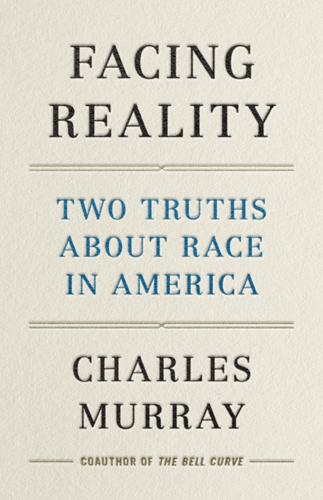
Facing Reality: Two Truths About Race in America
by
Charles Murray
Published 14 Jun 2021
Because we have not talked openly about group differences, we have kidded ourselves that the differences are temporary and can be made to go away. The next big push, whether it takes the form of No Child Left Behind in 2001 or a campaign to root out systemic racism in 2021, will change things. We’ve been saying that since the War on Poverty in 1965. It has allowed us to evade our moral obligation to treat others as individuals even though mean differences between groups are a reality and will be with us indefinitely. I’ve been having conversations about that moral obligation for decades. It has been disquieting to see how few people can make themselves confront it.
…
Scholastic Aptitude Test (SAT); comparative results; g-loading in; opposition to self-esteem Silicon Valley Skidmore College slavery social justice Spearman, Charles Stanford-Binet Intelligence Scales stereotype threat Sullivan, Andrew systemic racism; in hiring, ; and polarization; in policing Taleb, Nassim Tax Cuts and Jobs Act (2017) teachers: certification of; performance ratings Trump, Donald Tucson, AZ 23andMe universities: IQ distribution in; self-censorship at; see also college admissions University of Southern California Urbana, IL U.S. Army U.S. Constitution U.S. Department of Education U.S. Department of Labor U.S. Medical Licensing Exam (USMLE) US News U.S. Office of Education Vox War on Poverty Washington, D.C.: crime rates in; socioeconomic differences in Washington Post Wechsler Adult Intelligence Scale Wechsler Intelligence Scale for Children Weiss, Bari White guilt White privilege Wilson, James Q. “woke” politics Woodcock-Johnson Tests of Cognitive Abilities World War I World War II Yale University Yglesias, Matthew z-scores Zucker School of Medicine A NOTE ON THE TYPE FACING REALITY has been set in Monotype Bulmer.

Work Won't Love You Back: How Devotion to Our Jobs Keeps Us Exploited, Exhausted, and Alone
by
Sarah Jaffe
Published 26 Jan 2021
That often meant nonprofit work—giving money, taking up party politics, or, for those with real money, setting up their own foundations. 27 Foundations weren’t the only source of funding for nonprofits doing community work in the 1960s and 1970s. President Lyndon Johnson’s Great Society, following on the heels of the New Deal, aimed to carry out a “War on Poverty” by many different means, and one of them was distributing government money directly to nonprofit groups, including Planned Parenthood. The money even came with requirements that the poor participate in the War on Poverty. That requirement placed money in the hands of organizations to hire workers from the communities they served, jobs directly with municipal governments but also with activist groups newly flush with funding—and for a while, at least, some of those groups used that money to make trouble.
…
After World War II, historians Eileen Boris and Jennifer Klein wrote, the job was reshaped into something that “took place in the home but performed the public work of the welfare state,” and as countries face an “elder boom” in the coming decades, these jobs will continue to proliferate. 24 The work of caring for the ill and elderly was something that, before the Depression, had been done in the family, by private charity (often the church), or relegated to the workhouse or poorhouse. New Deal relief programs turned such care into a distinct profession, as much to create work for women as to fulfill needs. The War on Poverty in the 1960s expanded the program, and then it grew further in the 1970s, as the disability and elder rights movements organized for home-based assistance as an alternative to institutions. Funding, bumped up in the 1960s, began to be sliced back in response to economic crises in the 1970s, however. 25 For many years, home care was dominated by Black women, and they had to constantly struggle against the assumption that they were simply state-funded maids.
…
It is this last factor that has remained contentious over the years as competing administrations have changed their interpretation of this ruling to apply to interns. How far outside the normal run of business must training be in order to count as training and not simply unpaid work? 17 Internships continued to spread during the 1960s and 1970s, starting when Lyndon Johnson’s War on Poverty pumped money into work-based learning programs, and young, politically involved people sought opportunities to put their values to work. Congress reorganized yet again, expanding the range of subcommittees and staffers, attracting a new wave of nonprofits, lobbyists, and others seeking to influence policy—and stocking up on ambitious, cheap young interns.

The Third Pillar: How Markets and the State Leave the Community Behind
by
Raghuram Rajan
Published 26 Feb 2019
President Lyndon Johnson, who had lived among, and worked with, the poor during his youth and through the Depression years, provided persuasive leadership. The political attractiveness of targeting the votes of blacks who had migrated from southern agricultural jobs for the industrial jobs in northern cities gave politicians the incentive to follow.17 Congress enacted a radical set of government- and community-based programs intended to wage war on poverty and make the United States into Johnson’s Great Society. Funding was increased significantly for welfare, especially for the indigent elderly, for health care (including Medicare for the elderly and Medicaid for the poor), and for education—the Elementary and Secondary Education Act of 1965 was reauthorized by President Bush as the No Child Left Behind Act of 2001, and by President Obama as the Every Student Succeeds Act in 2015.
…
Moreover, it was not clear whether the objective of community engagement was to organize a new power structure for the community, confront the existing power structure, or extend or assist the existing power structure.18 At any rate, the programs did not sit well with existing structures and interests, and did not draw in those in the community with sensible ideas of how to raise economic opportunity. Traditional political leadership, intent on protecting its turf, pushed back on community involvement, while neighborhood activists fought any structure that was not their own. Almost inevitably, the War on Poverty became more top-down than bottom-up, and failed to sustain enthusiasm even among initial supporters like Dr. King, who wanted more comprehensive, coordinated action. As the Vietnam War consumed President Johnson’s political energies, some of the innovative spending was repurposed to support the war effort.
…
Unfortunately, as the 1960s ended, and just as governments had promised their citizens a substantial share of the high anticipated future growth, growth suddenly proved much harder to generate. There were plenty of proximate causes: rising inflation in the United States as spending on the Vietnam quagmire added to the new social spending promised in the War on Poverty; the subsequent breakdown of the Bretton Woods system of fixed exchange rates as the United States abandoned the international convertibility of the dollar into gold; the tripling of oil prices as OPEC tested its powers after the Yom Kippur war broke out . . . But perhaps the most obvious reason was that the gains from the Second Industrial Revolution had largely played out.
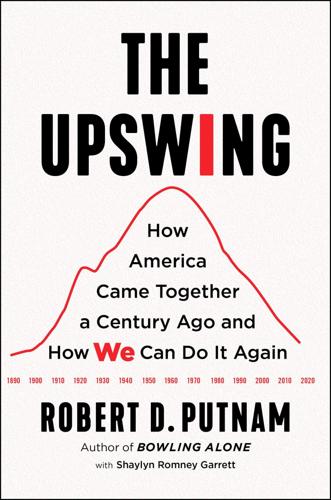
The Upswing: How America Came Together a Century Ago and How We Can Do It Again
by
Robert D. Putnam
Published 12 Oct 2020
That spending (in effect, transferring money from younger people to older people) has made the age distribution of income more egalitarian, mostly ending the scourge of elderly poverty that in the 1960s outraged social reformers like Michael Harrington, author of The Other America. However, that new spending has not had such a marked effect on the class distribution of income, which also concerned Harrington.106 The only battle of the War on Poverty that was won was the War on Elder Poverty. These transfers have not much narrowed the gap between the top 1 percent and the bottom 50 percent. “The bottom half of the adult population has thus been shut off from economic growth for over 40 years, and the modest increase in their post-tax income has been absorbed by increased health spending,” conclude economists Piketty, Saez, and Zucman.107 One way to see this skewing of the American welfare state over the last half century is to compare the average monthly “welfare” benefit per family with the average monthly Social Security benefit for a retired worker and spouse, as shown in Figure 2.16.
…
You ask a voter who calls himself a conservative what he thinks I am and he says I’m a conservative.”37 That was partisan politics at low tide. Buoyed by his landslide victory in 1964, LBJ moved to the left on issues of race and inequality, beginning to open an ideological divide that would widen steadily for the next half century. Nevertheless, across LBJ’s far-reaching Great Society initiatives (the War on Poverty, Civil Rights, Voting Rights, Medicare/Medicaid, federal aid to education, and immigration reform—the very issues at the core of intense party polarization in our own period, a half century later), all major bills were supported by majorities or substantial minorities within both parties. On average, these bills were supported by 74 percent of congressional Democrats and 63 percent of congressional Republicans, a fact forgotten by later Republicans who would rail against the leftist extremism of the Great Society programs.38 Behind the scenes LBJ cooperated with Senator Everett Dirksen, the titular head of congressional Republicans, just as he himself had done with Ike a decade earlier.
…
With the advent of Reaganism, however, the Republicans became steadily more skeptical about environmentalism, a trend capped by their leaders’ uncompromising denial of climate science in the twenty-first century. Education: Roughly 40 percent of Republicans in the House and Senate had voted alongside roughly 80 percent of Democrats in favor of the landmark Elementary and Secondary Education Act of 1965, part of LBJ’s War on Poverty. But as the issue of school desegregation heated up and free market orthodoxy permeated the Republican Party in the 1980s, the two parties began to divide on the issue of public vs. private or charter schools, a division that would remain into the next century. Eventually, even a technical debate about reading pedagogy between “phonics” and “whole language” approaches became the subject of the party-inflected “Reading Wars.”54 So the renewed party polarization of the last half century began with race—the one constant and central conflict in American history—but polarization soon came to be about much more than race.55 By the years of Obama and Trump, bipartisanship in Congress had become virtually nonexistent; on six major votes of this period, the administration received support from 95 percent of their own party, but only 3 percent of the opposition.56 Statistically speaking, party polarization was rapidly approaching mathematical perfection.
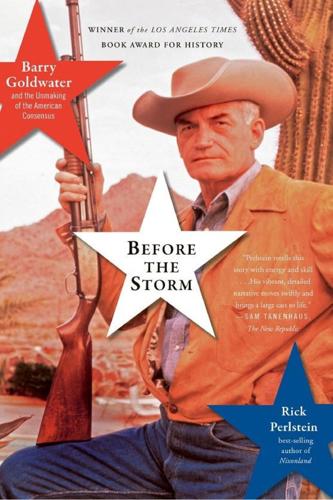
Before the Storm: Barry Goldwater and the Unmaking of the American Consensus
by
Rick Perlstein
Published 17 Mar 2009
He steered the tax cut through the Senate 77 to 21 in February. Federal budget deficits were now, officially, a good thing. Then there was that other quintessential LBJ answer to the confident spirit of his age. A week earlier, Peace Corps chief Sargent Shriver had arrived back from a monthlong trip to the news that he was to direct a “war on poverty.” The confidence that growth could cure all ills was secure enough for the Democrats’ 1960 platform drafters to declare “the final eradication” of poverty “within reach.” Wary of turning off middle-class voters in 1964, Kennedy had let Heller toil away at such a plan so long as he made sure they also did something for the suburbs, where all agreed the 1964 election would be decided.
…
The Economic Opportunity Act, coordinated by a new Office of Economic Opportunity and capitalized at $962.5 million, was presented to Congress on March 16 via a special message from the President. (The riposte from Barry Goldwater was immediate: “Under the enterprise system,” America was already winning the War on Poverty, he said; federal welfare was leading to rates of fraud of 50 percent or more; the idea that people cannot find jobs because of insufficient education is “like saying that people have big feet because they wear big shoes. The fact is that most people have no skills, have no education for the same reason—low intelligence or low ambition.”)
…
Letters and numbers darkened his presentations: RS-70 and B-70 (bomber programs the Pentagon was scrapping); A-11 (a plane Lyndon Johnson claimed was a new fighter but Goldwater said was really just a reconnaissance plane); TFX (a fighter General Dynamics was building in Lyndon Johnson’s Texas despite the brass’s insistence it could be built better and more cheaply in California); 1970 (by which time a bomber gap would turn “the shield of the Republic into a Swiss cheese wall”). He attacked Johnson’s poverty program, which, since Johnson had cleverly named it the War on Poverty, made it look like Goldwater was rooting for poverty to win. He did little better with another new theme: Vietnam. Johnson said American involvement was the same as it had been a decade before. Goldwater implored his listeners to acknowledge that America was in a war in Vietnam. U.S. News had printed letters from a flier killed in action, Captain Edward G.

The Fourth Revolution: The Global Race to Reinvent the State
by
John Micklethwait
and
Adrian Wooldridge
Published 14 May 2014
By the 1970s the American government seemed to be failing at everything it touched—wars (Vietnam), the economy (stagflation), crime (the drug epidemic), social cohesion (the culture wars). Even Europe’s love affair with the welfare state was beginning to sour. This was a time of strikes, energy crises, and riots. It was also a time when the modish ideas of the 1960s, such as comprehensive education in Britain or the “war on poverty” in America, got “mugged by reality,” in Irving Kristol’s classic phrase. Worse, the welfare state was failing in its core functions—in the ideas that the Webbs and their disciples had trumpeted. R. H. Tawney had promised that, under the welfare state, Britain “would cease to be the rule for the rich to be rewarded, not only with riches, but with a preferential share of health and life, and for the penalty of the poor to be not merely poverty, but ignorance, sickness and premature death.”13 Yet in the 1970s the gap between Britain’s upper and lower social classes in terms of age-adjusted mortality was more than twice as large as it had been in the 1930s.14 The upper classes continued to be fitter and taller than the lower classes—3.2 centimeters taller, to be exact—as well as richer.15 In America even the architects of the “war on poverty” admitted that “unprecedented generosity . . . had not made much of a dent in the poverty, dependency, delinquency, or despair against which the 1964 war had been declared.”16 Many of the 1960s reforms aimed at producing equality of results, rather than just equality of opportunity, were producing very unegalitarian results, especially in education.
…
Tawney had promised that, under the welfare state, Britain “would cease to be the rule for the rich to be rewarded, not only with riches, but with a preferential share of health and life, and for the penalty of the poor to be not merely poverty, but ignorance, sickness and premature death.”13 Yet in the 1970s the gap between Britain’s upper and lower social classes in terms of age-adjusted mortality was more than twice as large as it had been in the 1930s.14 The upper classes continued to be fitter and taller than the lower classes—3.2 centimeters taller, to be exact—as well as richer.15 In America even the architects of the “war on poverty” admitted that “unprecedented generosity . . . had not made much of a dent in the poverty, dependency, delinquency, or despair against which the 1964 war had been declared.”16 Many of the 1960s reforms aimed at producing equality of results, rather than just equality of opportunity, were producing very unegalitarian results, especially in education.
…
Göran’s hospital, Stockholm, 171–72, 177, 183 San Bernardino, Calif., 16 bankruptcy of, 14, 128–29 Sanders, Harland, 185 San Francisco, Calif., 210, 218 Sarkozy, Nicolas, 12, 16 Sberbank, 153 Scandinavia, 166 aging population of, 174, 178, 183–84 failure of traditional welfare state in, 175–76 fiscal reform in, 174 pensions in, 171, 173, 184 reinvention of welfare state in, 169–78, 183–84, 186–87, 212, 265–66 social mobility in, 174 women in labor force of, 174 scarcity, democracy and, 247–48 Schmidt, Eric, 210–11 School Medical Service, 62 Schopenhauer, Arthur, 60 Schuck, Peter, 132 Schwarzenegger, Arnold, 125, 129 Securities and Exchange Commission, 72, 73 security: balance between freedom and, 230–31 Fourth Revolution and, 232 as primary duty of nation-state, 29, 30, 32, 37, 39, 181, 222, 268 Ségolène Royal, 194 September 11, 2001, terrorist attacks, 98, 230 Serco Group, 213, 214 sexual equality, 169 shale oil, 236 Shaw, George Bernard, 67–68, 232 Shenzhen, China, 161, 217 Sherman, Alfred, 93 Shetty, Devi, 201–2, 203, 205, 242–43 Sidgwick, Henry, 57, 58 Siedentop, Larry, 251 Silicon Valley, 105, 127 Silk Road, 152 Singapore, 18, 133–34, 144, 145, 155 as authoritarian, 135, 136, 137 as business friendly, 137 civil service of, 138–39 economic success of, 135 as elitist, 135, 136, 138–39 ethnic tensions in, 139–40 as model for Asian state, 4, 17, 134, 142 as night-watchman state, 140 small government of, 135, 140 social insurance model of, 140–41, 242, 243 social safety net in, 140 Singh, Manmohan, 96 Sloan, Alfred, 189, 190 Smartest Kids in the World and How They Got That Way, The (Ripley), 207 Smith, Adam, 43, 224, 237 Snowden, Edward, 230–31 social contract, 8–9, 16, 32, 34, 42, 222, 241 Social Contract, The (Rousseau), 44 social Darwinism, 59–60 Social Democratic Party, Swedish, 170, 175 social insurance, social assistance vs., 140–41, 142, 242 socialism, 59, 67, 96, 134, 224, 268–69 in Sweden, 169 Socialist Case, The (Jay), 77 Social Security, 120, 123, 242 disability insurance of, 244 social services, 68, 69, 74 as rights, 74–75 South Africa, 153, 252, 254 Southey, Robert, 224–25 South Korea, 142–43, 155 Soviet Union, 71, 73, 247 collapse of, 64, 176, 253 as failed state, 90–91 Spain, 130 Spanish Armada, 30–31, 36 special-interest groups, 16–17, 90, 111–15, 178, 200, 223, 239, 247, 251, 257, 258, 269 Spencer, Herbert, 59, 60, 66, 92 Stalin, Joseph, 67, 71 Starr, Kevin, 108 state, Asian model of, 133–66 aging populations as strain on, 164–65 as authoritarian, 136 in China, 1–5, 136–37, 145, 149, 152, 156 as competition for Western state model, 17, 163–64, 247 democracy in, 17 as elitist, 136 improved government as goal of, 137, 165–66 innovation in, 165 meritocracy in, 156–63, 164, 254 nationalism and, 136, 137 Singapore as inspiration for, 4, 17, 134, 142 small-government ideology of, 187 spread of, 144 technology and, 165 welfare state in, see welfare state, Asian model of state, Western model of, 3–5 Asian-state model as competition for, 17, 163–64, 247 Baumol’s disease and, 19, 109–11, 174, 178–79, 183, 222 California as exemplar of failures of, 106–7 crime and, 181–82 decline of public services in, 16 deficit spending in, 14, 100, 118–22, 177, 231–32 democracy as central tenet of, 5, 8, 16–17, 22–23, 136, 141, 221 efficiency in, 18–21, 37, 89, 187, 198–99, 213, 233, 247, 255 equality and, 221 Fourth Revolution in, see Fourth Revolution freedom as central tenet of, 8, 23, 46, 68–69, 222 ideological debate over, 222 as instrument of civilization, 22 interest groups and, 16–17 lack of innovation in, 19–20 liberal revolution in, see liberal state nation-state revolution in, see nation-state old and well-off as primary beneficiaries of public spending in, 122–24 opportunities for reinvention of, 18 outdated systems in, 108–9 proliferation of regulation in, 116–18 proper role of, 21, 28 rights of citizens in, 9 social contract in, 8–9, 16, 32, 34, 42, 222, 241 Thatcher-Reagan half-revolution in, see Thatcher-Reagan revloution welfare-state revolution in, see welfare state, Western model of see also government state capitalism: in China, 64, 149–56, 234 corruption in, 154 as global phenomenon, 152–53, 155, 234–35 innovation suppressed by, 155 investor mistrust and, 154 productivity and, 154, 285 in Russia, 153, 154 State-Owned Assets Supervision and Administration Commission (SASAC), 151, 154 state-owned enterprises (SOEs), 150–52, 154–55, 156 statism, 60–61, 67, 71, 72 elitism and, 77–78 Stein, Herbert, 13 Steinberg, Darrell, 129 sterilization, compulsory, 78 Steuerle-Roeper index, 195 Stewart, Jon, 228 Stigler, George, 84 subsidies, 185, 234, 237–38 sugar industry, 238 Suleiman the Magnificent, 35 Summers, Larry, 110 sunset clauses, 118, 246, 266 Supreme Court, U.S., 226, 240, 250 Sweden, 90, 184 average income in, 173 “black-of-night” banking crisis in, 175–76 blending of capitalism and socialism in, 186 education in, 171, 176–77, 215 fiscal reform in, 170 health care in, 98, 171–73 health registries in, 172, 183, 209 pension system in, 171, 184, 242 privatization in, 236 public debt of, 170–71 public spending in, 169–70 reinvention of welfare state in, 170–71, 212, 265–66 socialism in, 169 Swift, Jonathan, 227 Tawney, R.H., 61, 69, 78, 79, 87 taxes, taxation, 116, 127 consumption, 123–24 obfuscation and, 121–22 U.S., 82, 116–17, 121, 237, 240–41 Taylor, A.J.P., 9 Taylor, Matthew, 210 Teach for America, 216 Tea Party, 63, 243 technocrats, 76–77, 259, 260, 266, 267 technology, 165, 174 as agent for small government, 178 business sector and, 191 crime and, 181–82 education and, 179–80 Fourth Revolution and, 18, 19–20, 233, 266–67 government and, 200, 207–11 health care and, 183, 208–9 war and, 182 Temple, Frederick, 58 Tennessee Valley Authority, 73, 236 Terror (1792–93), 46 Thailand, 142–43 Thatcher, Margaret, 8, 28, 81, 88, 91–92, 97, 130, 133, 181 economic policy of, 93–94 Falklands War and, 94 free-market theory and, 93 Thatcher-Reagan revolution, 106, 177 big government as target of, 82 Friedman and, 8, 28, 82, 97, 100 global spread of, 96 Hayek’s influence on, 92 as incomplete, 8, 82, 97–101, 246, 269 privatization and, 94–95, 234 small-government ideology of, 91–92, 93, 128 Thick of It, The (TV show), 227 Thiel, Peter, 207 Think Long Committee, 129 Thirty Years’ War, 34, 38 Thomas, Norman, 82 Thomas Aquinas, Saint, 29 Thucydides, 250 Tiananmen Square protest, 142 Tilly, Charles, 39 Timbro, 131, 175 Tocqueville, Alexis de, 54–55, 222, 226, 250–51, 252, 256, 267 totalitarianism, 71 Toyoda, Kiichiro, 201 Transparency International, 148 Treasury, U.S., 143 Trevelyan, Charles, 52–53 Tsinghua University, 157 Tullock, Gordon, 84 Tunisia, 253 Turkey, 13, 254 Turner, Ted, 238 tyranny of the majority, 226, 250, 255 unemployment insurance, 123, 244, 245 unfunded liabilities, 14, 119, 120, 129, 130, 232, 245–46, 264, 265 unions, public-sector: innovation blocked by, 20 pay and benefits of, 113–15, 119–20 political power of, 112–15 Unirule Institute of Economics, 154 United Nations, 76, 265 United States: affirmative action in, 79 antiliberal discourse in, 95–96 big government in, 71–72 checks and balances system in, 226, 250, 255–56, 265 China contrasted with, 147, 153 crony capitalism in, 237–38, 246 deficits and deficit spending in, 14, 97, 100, 120, 231, 241 democracy’s failures in, 254–59 education reform in, 212, 214–15 elitism in, 162 entitlements in, 241–42 expanding role of government in, 62, 77 falling crime rate in, 181 financial liabilities of, 15–16, 119–20 financial services industry in, 239 fiscal uncertainty in, 12, 255 government bloat in, 9, 98, 177 in Iraq War, 143 local government in, 217 money politics in, 256–58 national debt of, 120, 241–42 political polarization in, 100, 125–26, 164, 255, 256 postwar era in, 78 privatization in, 234–37 public pessimism in, 11, 126 public spending in, 9, 261 small-government model in, 54–55 state capitalism in, 235–36 taxes in, 82, 116–17, 121, 237, 240–41 Webbs and, 71 welfare reform in, 95 Universal Declaration of Human Rights, 265 Uppsala, University of, 78 Urban Institute, 185 utilitarianism, 49, 57, 58 Van Reenen, John, 191 Veep (TV show), 227 VisionSpring, 203 Voegeli, William, 115 voting rights, 7, 9, 51 voucher systems, 171, 176–77, 220 Wade, John, 49 Wallas, Graham, 77 Wallgren, Britta, 172 Wall Street Journal, 90 Wang Jisi, 164 war, technology and, 182 war on poverty, 87, 88 war on terror, 98, 143 Warren, Earl, 105–6, 124–25 Washington, D.C., 210 Washington, George, 250 Washington consensus, 8, 96, 142, 164 Washington Post, 86 Webb, Beatrice and Sidney, 7, 27–28, 64, 66, 68, 71, 74, 75, 87, 116, 134, 140, 219, 268 collectivism as principle of, 68 as creators of welfare state, 65 eugenics endorsed by, 67–68 national minimum concept of, 68, 69 Stalin admired by, 67 statism and, 67 Weibo, 161 Weiner, Anthony, 227–28 welfare state, Asian model of, 164–65 health-care spending in, 142 social insurance as basis of, 140–41, 142, 242, 243 spending on, Western model vs., 142 welfare state, Western model of, 7–9, 65–80, 88, 221 aging population and, 15, 122–23, 124, 165, 174, 178, 183–84, 232, 241–42 as “all-you-can-eat” buffet, 17, 137, 140, 183, 241 creation of, 27–28, 263, 268–69 dependency and, 129–30 education in, 68, 69 elitism and, 77–78 entitlements in, see entitlements equality and, 68–69, 74, 79, 222 in Europe, 75 expanding public sector in, 76 failure of egalitarian policies in, 87–90 fraternity and, 74, 79 government bloat in, 9–11, 18–19, 89–90, 98, 177, 222–23, 227, 229–30, 231, 233 inefficiency in, 89, 229 interest groups in, 90 Lee Kuan Yew’s criticism of, 17 middle class in, 17, 88, 122 national minimum and, 68, 69 Nordic reinvention of, 169–78, 183–84, 186–87, 212, 265–66 overreaching by, 87, 176, 222, 229–30, 233, 264, 265, 268, 269 perverse incentives created by, 89 poverty and, 68 social assistance as basis of, 140, 142 social services and, 68, 69, 74 as threat to democracy, 22, 142 as threat to freedom, 22, 74, 222 Webbs as creators of, 65, 220 Wells, H.G., 66 Wen Jiabao, 162 Westminster model, 54 When China Rules the World (Jacques), 163 Whitaker, Jeremiah, 34 “Why I Am Not a Conservative” (Hayek), 85 Wilders, Geert, 259 Will, George, 30 Willetts, David, 124 William III, King of England, 43 Williamson, John, 8, 163–64 Wilson, James Q., 198 Wolfson Institute of Preventive Medicine, 209 Woolf, Virginia, 28–29 World Bank, 76 Asian financial crisis and, 143 World Economic Forum, 146, 148 World Forum on Democracy, 252 World Health Organization, 201 World on Fire (Chua), 143 World Trade Organization, 260 World War II, 73–74, 232 Wukan, China, 160 Xi Jinping, 133, 145, 148, 161, 164, 165 Xilai, Bo, 154, 162 Xinmin Weekly, 162 Yang Jianchang, 159–61 Yeltsin, Boris, 253 Ye Lucheng, 151 Yes, Minister (TV show), 194 Yongle, Emperor of China, 36 youth, public spending as biased against, 124 Zakaria, Fareed, 143 Zhang Weiwei, 164 Zheng He, 36 Zingales, Luigi, 128, 239 Zuma, Jacob, 254
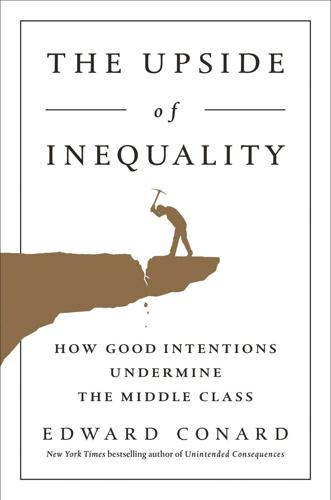
The Upside of Inequality
by
Edward Conard
Published 1 Sep 2016
Michael Tanner and Charles Hughes, “The Work Versus Welfare Trade-Off: 2013,” Cato Institute (2013), http://object.cato.org/sites/cato.org/files/pubs/pdf/the_work_versus_welfare_trade-off_2013_wp.pdf. Robert Rector and Rachel Sheffield, “The War on Poverty After 50 Years,” Heritage Foundation (2014), http://www.heritage.org/research/reports/2014/09/the-war-on-poverty-after-50-years. 20. “Current Population Survey,” U.S. Census Bureau, tabulation of data by Sentier Research, accessed November 2015. 21. “Social Spending During the Crisis: Social Expenditure (SOCX) Data Update 2012,” Organisation for Economic Co-operation and Development, 2012, http://www.oecd.org/els/soc/OECD2012SocialSpendingDuring TheCrisis8pages.pdf.
…
Differences in the workforce participation rates of able-bodied adults are alarming. Growth in unproductive behavior, such as out-of-wedlock births among lower-wage workers, is worrisome. Lack of increase in the work effort of poor, able-bodied workers, despite increases in social spending, is discouraging. One can’t help but wonder if the “War on Poverty” caused more able-bodied poverty than it cured. Solutions to Poverty Are Likely to Be Prohibitively Expensive That said, it’s likely to be quite expensive to put able-bodied but reluctant workers to work. It costs far more than just their wages to hire lower-skilled and less-productive workers, especially people who are reluctant to work.

The Rise and Fall of the Neoliberal Order: America and the World in the Free Market Era
by
Gary Gerstle
Published 14 Oct 2022
Lyons, The Uneasy Partnership: Social Science and the Federal Government in the Twentieth Century (New York: Russell Sage Foundation, 1969); Alice O’Connor, Poverty Knowledge: Social Science, Social Policy, and the Poor in Twentieth-Century U.S. History (Princeton, NJ: Princeton University Press, 2002); Romain D. Huret and John Angell, The Experts’ War on Poverty: Social Research and the Welfare Agenda in Postwar America (Ithaca, NY: Cornell University Press, 2018); Michael A. Bernstein, A Perilous Progress: Economists and the Public Purpose in Twentieth-Century America (Princeton, NJ: Princeton University Press, 2001); Carter, The Price of Peace; Andrew Jewett, Science, Democracy, and the American University: From the Civil War to the Cold War (New York: Cambridge University Press, 2012); Wendy L.
…
(New York: Oxford University Press, 2005), 342–379. 49.On the rise of the carceral state, see Ruth Wilson Gilmore, Golden Gulag: Prisons, Surplus, Crisis, and Opposition in Globalizing California (Berkeley: University of California Press, 2007); Heather Thompson, “Why Mass Incarceration Matters: Rethinking Crisis, Decline, and Transformation in Postwar American History,” Journal of American History 97 (December 2010), 703–734; Heather Thompson, Blood in the Water: The Attica Prison Uprising of 1971 and Its Legacy (New York: Pantheon Books, 2016); Michelle Alexander, The New Jim Crow: Mass Incarceration in the Age of Colorblindness (New York: New Press, 2010); Robert Perkinson, Texas Tough: The Rise of America’s Prison Empire (New York: Henry Holt, 2010); Marie Gottschalk, The Prison and the Gallows: The Politics of Mass Incarceration in America (New York: Cambridge University Press, 2006); Marie Gottschalk, Caught: The Prison State and the Lockdown of American Politics (Princeton, NJ: Princeton University Press, 2015); Elizabeth Hinton, From the War on Poverty to the War on Crime: The Making of Mass Incarceration in America (Cambridge, MA: Harvard University Press, 2016); Hinton, America on Fire; Julilly Kohler-Hausmann, Getting Tough: Welfare and Imprisonment in 1970s America (Princeton, NJ: Princeton University Press, 2017); Robert T. Chase, We Are Not Slaves: State Violence, Coerced Labor, and Prisoners’ Rights in Postwar America (Chapel Hill: University of North Carolina Press, 2019); Loïc Wacquant, Punishing the Poor: The Neoliberal Government of Social Insecurity (Durham, NC: Duke University Press, 2009); Loïc Wacquant, Prisons of Poverty (1999; Minneapolis: University of Minnesota, 2009). 50.
…
Chase, We Are Not Slaves: State Violence, Coerced Labor, and Prisoners’ Rights in Postwar America (Chapel Hill: University of North Carolina Press, 2019); Loïc Wacquant, Punishing the Poor: The Neoliberal Government of Social Insecurity (Durham, NC: Duke University Press, 2009); Loïc Wacquant, Prisons of Poverty (1999; Minneapolis: University of Minnesota, 2009). 50.“The American Underclass,” Time, August 29, 1977, 14–15. 51.Ken Auletta, The Underclass (New York: Random House, 1982). On alternative ways of understanding urban poverty and crime in 1980s America, see Michael B. Katz, The Undeserving Poor: From the War on Poverty to the War on Welfare (New York: Pantheon Books, 1989); Michael B. Katz, ed., The “Underclass” Debate: Views from History (Princeton, NJ: Princeton University Press, 1993); William Julius Wilson, The Truly Disadvantaged: The Inner City, the Underclass, and Public Policy (Chicago, IL: University of Chicago Press, 1987); Thomas J.

City: Urbanism and Its End
by
Douglas W. Rae
Published 15 Jan 2003
Asbell, “Dick Lee Discovers How Much Is Not Enough.” 53. See Marris and Rein, Dilemmas, esp. 25 –26. 54. See Wolfinger, Politics of Progress, 198. 55. “Community Action Policy Review” (New Haven: CPI, 1965). 56. See Miller, Fifteenth Ward and the Great Society, chaps. 3 –6. 57. Edgar Cahn and Jean Cahn, “The War on Poverty: A Civilian Perspective,” Yale Law Journal 73, no. 8 (1964). 58. Asbell, “Dick Lee Discovers How Much Is Not Enough.” 59. Ibid. 60. In 1966, CPI staffer Peter Almond would report: “They would call meetings, at which their programs were discussed. There was never, at least at any meetings I ever attended, any opening where the citizen’s word would have any kind of direct and obvious impact. . . .
…
And that is where CPI and the city and the mayor are failing, as far as I’m concerned.” Quoted in Powledge, Model City, 143. 61. Robert Giaimo, “Investigation into the Operation of Community Progress, Inc.” (Washington, D.C.: Congressional Record, 1968). 62. Howard Shuman, “Behind the Scenes and Under the Rug,” Washington Monthly, 1969. 63. “Old Industrial City Wages Dramatic War on Poverty,” Trenton Sunday Times Advertiser, July 12, 1964. Quoted in Powledge, Model City. 64. Although this quote is often repeated in the secondary literature, I have been unable to find a primary source for it. 65. Quoted in Powledge, Model City, 149. 66. All quotations and facts in this section are taken from stories in the New Haven Register for August 20, 21, and 22, 1967. 67.
…
New Haven: A Guide to Architecture and Urban Design. New Haven: Yale University Press, 1976. Bucki, Cecelia. Bridgeport’s Socialist New Deal, 1915 –36. Urbana: University of Illinois Press, 2001. Burnham, Daniel H., and Edward H. Bennett. Plan of Chicago (1909). New York: Princeton Architectural Press, 1993. Cahn, Edgar, and Jean Cahn. “The War on Poverty: A Civilian Perspective.” Yale Law Journal 73, no. 8 (1964). Cain, John F. “The Influence of Race and Income on Racial Segregation and Housing Policy.” In Housing Desegregation and Federal Policy, edited by John M. Goering, 99–118. Chapel Hill: University of North Carolina Press, 1986. Calder, Isabel MacBeath.
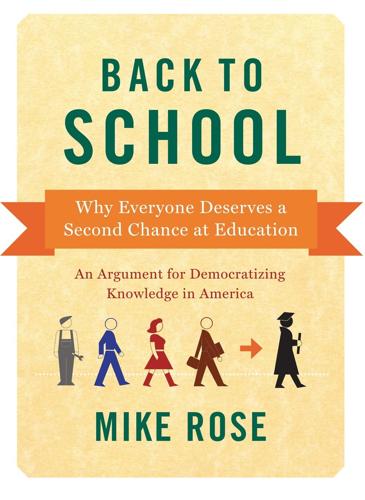
Back to School: Why Everyone Deserves a Second Chance at Education
by
Mike Rose
Published 17 Sep 2012
I’m going to fast-forward through my undergraduate English major (that English teacher had turned me on to literature, and, besides, he was an English major) and zoom across a subsequent year of a doctoral program in English—which turned out to be too removed from the work of the world for me. Looking to ground myself and make a living, I found the Teacher Corps, a War on Poverty program that placed prospective teachers in lowincome schools. That was my introduction to teaching and education, and after Teacher Corps I would go on to work for eight more years in a community college and in a range of programs for special populations: from traffic cops and parole aides to returning Vietnam veterans.
…
Cronbach, “Beyond the Two Disciplines of Scientific Psychology,” American Psychologist, vol. 30, 1975, 116–126. 140 “As Bill Gates said . . .‘drill in’ on that skill.”: Marketplace Life, Interview with Bill Gates, February 28, 2011. www .marketplace.org/topics/life/importance-teachers-education. 141 “We have here the makings in education . . . ”: Michael B. Katz, The Undeserving Poor: From the War on Poverty to the War on Welfare (New York: Pantheon, 1990). 205 NOTES Chapter 6 147 The Physical Environment: “This section draws on . . .”: C. Carney Strange and James H. Banning, Educating by Design: Creating Campus Learning Environments That Work (San Francisco: Jossey-Bass, 2001). 170 “. . . undergraduate curriculum from the 1950s.”: Frederick Rudolph, Curriculum: A History of the American Undergraduate Course of Study Since 1636 (San Francisco: Jossey-Bass, 1978). 173 “The sociologist James Rosenbaum . . .”: James E.
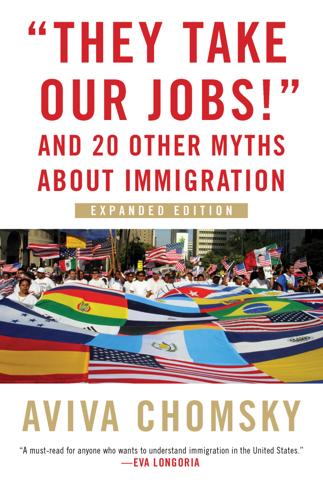
"They Take Our Jobs!": And 20 Other Myths About Immigration
by
Aviva Chomsky
Published 23 Apr 2018
In broad terms, this has meant privatizations, a shift away from government regulation of industry, cutbacks in government services, and a free trade agenda that has pushed other governments—especially Third World governments—to follow these same policies in more extreme ways. Domestically, this process has been described as a retreat from the mid-century redistributive government role embodied in the New Deal and the War on Poverty. Although those programs are associated (rightly) with the Democratic Party, the Democrats of the late twentieth and early twenty-first centuries have retreated from the social welfare orientation of their predecessors, at least at the national level. Internationally, the new consensus is sometimes (not very accurately) called globalization.
…
In the 1950s, sterilization, “preponderantly aimed at African American and poor women, began to be wielded by state courts and legislatures as a punishment for bearing illegitimate children or as extortion to ensure ongoing receipt of family assistance.”10 Sterilization rates rose again, especially after the War on Poverty in the 1960s introduced federally funded sterilizations through Medicaid and the Office of Economic Opportunity, leading to what one analyst called “widespread sterilization abuse” during the 1960s and ’70s. Between 1960 and 1974 over 100,000 sterilizations were carried out annually.11 The Indian Health Service began providing family planning services in 1965.
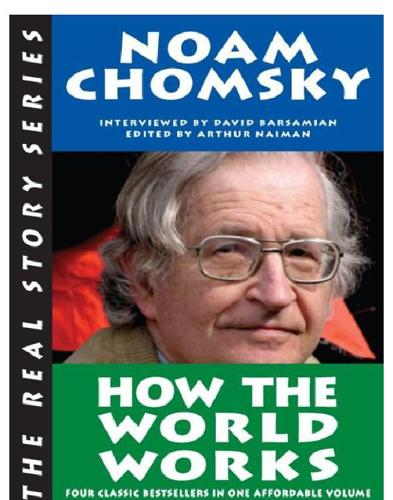
How the World Works
by
Noam Chomsky
,
Arthur Naiman
and
David Barsamian
Published 13 Sep 2011
During the Depression, there was again a live union movement in Flint, and popular rights were again extended. But the business counterattack began right after the Second World War. It took a while this time, but by the 1950s, it was getting somewhere. It slowed somewhat in the 1960s, when there was a lot more ferment—programs like the War on Poverty, things coming out of the civil rights movement—but by the early 1970s, it reached new heights, and it’s been going pretty much fullsteam ever since. The typical picture painted by business propaganda since the Second World War—in everything from television comedies to scholarly books—has been: We all live together in harmony.
…
See poverty population control populism, phony Port-au-Prince (Haiti) Port of Spain (Trinidad) Portuguese empire collapse postmodernism potato famine in Ireland poverty among children in NYC in Brazil democracy vs. in Eastern Europe economic recovery and in Haiti in India vs. US in Latin America shantytowns and slums in US US pacification of the poor War on Poverty welfare Powell, Colin power generation, alternatives for power, speaking truth to preaching to the choir “preferential option for the poor,” Preston, Julia PRI (Institutional Revolution Party) prisoner’s dilemma prisoners of war prison labor, Chinese prisons privatizing Social Security process patents vs. product patents “profits” now called “jobs,” programmers, Indian Progressive Caucus Progressive Policy Institute progress, signs of, (and not) Prohibition propaganda.
…
See Soviet Union Ustasha US Trade Representative (USTR) panel Vaid, Urvashi Vancouver (BC) Vanguard Party (USSR) Vanity Fair Vatican Vermont victims, worthy vs. unworthy Viet Minh Vietnam bombing of Boston Globe on war Chomsky’s visit to Japanese investment in “nation building” in New York Times on NY Times on Pentagon Papers NY Times on war “peace treaty” with punished by US after war state terror in Vietnam syndrome Vietnam War domino theory and ensuring service role as reason for US-blocked peace attempts US cruelty afterwards US escalation of US goals achieved in US rationale for “vile maxim” of the “masters,” village self-government in India violence Virtual Equality “vital center, the,” von Humboldt, Wilhelm VW (Volkswagen) Wall Street Journal war criminals war on drugsSee also drugs War on Poverty Washington Institute for Near East Studies Washington Post wealth weapons manufacturers Webb, Gary Weizmann, Chaim Welch, John welfare for corporations in Kerala opposition to Reagan’s racist take on rich people on wages raised by welfare capitalism welfare states needed for democracy in Sweden well-being, consumption vs.
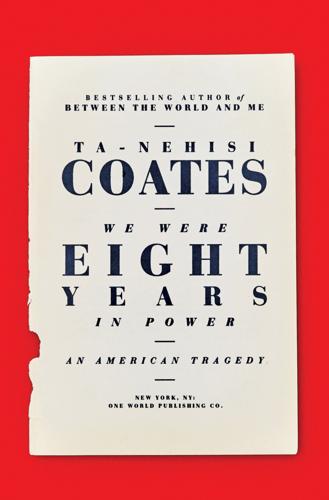
We Were Eight Years in Power: An American Tragedy
by
Ta-Nehisi Coates
Published 2 Oct 2017
He believed in the marriage of government and social science to formulate policy. “All manner of later experiences in politics were to test this youthful faith.” Moynihan stayed on at the Labor Department during Lyndon B. Johnson’s administration, but became increasingly disillusioned with Johnson’s War on Poverty. He believed that the initiative should be run through an established societal institution: the patriarchal family. Fathers should be supported by public policy, in the form of jobs funded by the government. Moynihan believed that unemployment, specifically male unemployment, was the biggest impediment to the social mobility of the poor.
…
He began pushing for a minimum income for all American families. Nixon promoted Moynihan’s proposal—called the Family Assistance Plan—before the American public in a television address in August 1969, and officially presented it to Congress in October. This was a personal victory for Moynihan—a triumph in an argument he had been waging since the War on Poverty began, over the need to help families, not individuals. “I felt I was finally rid of a subject. A subject that just…spoiled my life,” Moynihan told The New York Times that November. “Four—long—years of being called awful things. The people you would most want to admire you detesting you. Being anathematized and stigmatized.
…
The decline of law and order “can be traced directly to the spread of the corrosive doctrine that every citizen possesses an inherent right to decide for himself which laws to obey and when to obey them.” The cure, as Nixon saw it, was not addressing criminogenic conditions, but locking up more people. “Doubling the conviction rate in this country would do far more to cure crime in America than quadrupling the funds for [the] War on Poverty,” he said in 1968. As president, Nixon did just that: During his second term, incarceration rates began their historic rise. Drugs in particular attracted Nixon’s ire. Heroin dealers were “literally the slave traders of our time,” he said, “traffickers in living death. They must be hunted to the end of the earth.”
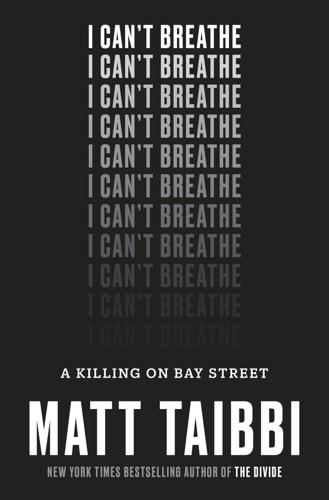
I Can't Breathe
by
Matt Taibbi
Published 23 Oct 2017
Just as the Codes appeared after the end of slavery and the fall of Reconstruction, Broken Windows grew out of a brief but powerful moment of racial reconciliation in the sixties: the end of segregation, the passing of civil rights laws, and the launching of Lyndon Johnson’s War on Poverty. The Great Society programs that came out of that War on Poverty set into motion a series of unintended consequences. The assistance programs always had a strong bureaucratic and even punitive element. The government created armies of inspectors and social workers who, in the process of administering public assistance, got involved in regulating every aspect of life in poor black neighborhoods.
…
The ensuing series of legislative programs passed included Medicare, Medicaid, the Civil Rights Act, the Voting Rights Act, the Food Stamp Act, even the Public Broadcasting Act that created PBS. The Great Society was to domestic politics what the moon program was to the military-industrial complex, an audacious long shot. The very phrase “War on Poverty” conjured images of the unity and collective determination America had employed to defeat the Nazis. These programs were never meant to be an expensive Band-Aid used to maintain a perpetual uncomfortable détente between rich and poor, black and white. They were designed to wipe out divisions and inequities and leave one prosperous, integrated people standing at war’s end.
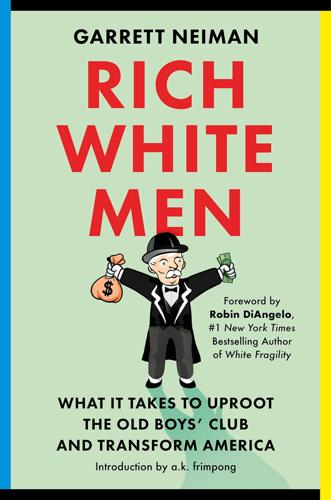
Rich White Men: What It Takes to Uproot the Old Boys' Club and Transform America
by
Garrett Neiman
Published 19 Jun 2023
Between the 1940s and 1960s, poverty rates stayed relatively flat. Then they dropped again after the 1960s’ War on Poverty, which introduced new programs and reduced poverty rates to their current levels. The state of poverty hasn’t changed much since: as many Americans live in poverty today as in the 1960s. If there is one thing America ought to have learned about eradicating poverty over the past century, it is that government transfers are the only proven way to significantly reduce poverty rates. Substantial drops in poverty rates followed the New Deal and War on Poverty, both of which were major government-led initiatives that put more money in impoverished people’s pockets.
…
Each of these proposals has some drawbacks, and—as megainvestors have told me—unexpected things happen anytime billions of dollars are invested anywhere. What I’m trying to emphasize with these examples is that it is possible to end poverty in America; that if addressing wealth inequality became a priority, this nation has more than enough resources to launch a war on poverty that actually wins. One reason why I feel so much urgency about abolishing poverty is that countless impoverished Americans ultimately end up somewhere even more inhumane than a high-poverty neighborhood: prison. Instead of investing in abolishing poverty, America’s leaders have invested in the prison industrial complex, which is plagued by brutal conditions that normalize sexual assault and murder.
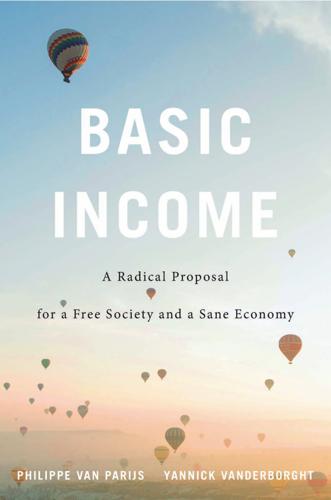
Basic Income: A Radical Proposal for a Free Society and a Sane Economy
by
Philippe van Parijs
and
Yannick Vanderborght
Published 20 Mar 2017
The negative income tax, in his view, should replace the bulk of AmerÂ�iÂ�ca’s welfare programs. We have a maze of detailed governmental programs that have been justified on welfare grounds—Â� though typically their product is “Â�illfare”: public housing, urban renewal, old-Â�age and unemployment insurance, job training, the host of assorted programs Â�under the mislabeled “war on poverty,” farm price supports, and so on at incredible length.â•‹.â•‹.â•‹.╋╉The Negative Income Tax would be vastly superior to this collection of welfare meaÂ�sures. It would concentrate public funds on supplementing the incomes of the poor—Â�not distribute funds broadside in the hope that some Â�will trickle down to the poor.67 Friedman, however, did not Â�favor just any negative income tax.
…
Tobin developed his proposal inÂ�deÂ�penÂ�dently of Friedman’s: “At some point [in the 1960s] I became aware of Friedman’s proposal, but I thought it was confined to a negative income tax rate equal to the lowest income tax bracket tax rate, and that Â�didn’t seem to me to offer substantial help” (Tobin 2001). But he is likely to have been inspired by other proposals such as the “negative rates taxation” proposed by Robert J. Lampman (1965), according to Tobin (New York Times, March 8, 1997) “the intellectual architect of the war on poverty.” 77. Tobin 1965, 1968. 78. “The essential characteristic of demogrants is that the payment is made to all families in the potential eligible group, regardless of income” (Tobin et al. 1967: 161 fn 4). The term “demogrant” was commonly used in the 1960s to refer to “a payment made to all persons above or below a certain age, with no other eligibility conditions except perhaps residence in the country” (Burns 1965: 132).
…
“L’allocation universelle à l’épreuve de la Théorie de la justice.” Documents pour l’enseignement économique et social 106: 71–110. Preiss, Joshua. 2015. “Milton Friedman on Freedom and the Negative Income Tax.” Basic Income Studies 10(2): 169–191. Quadagno, Jill. 1995. The Color of Welfare: How Racism Undermined the War on Poverty. New York: Oxford University Press. Québec solidaire. 2014. Plateforme électorale. Elections 2014. Montréal: Québec solidaire. Quinn, Michael. 1994. “Jeremy Bentham on the Relief of Indigence: An Exercise in Applied Philosophy.” Utilitas 6(1): 81–96. Raes, Koen. 1985. “Variaties op een thema.
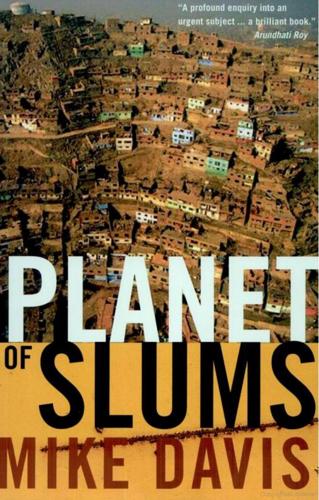
Planet of Slums
by
Mike Davis
Published 1 Mar 2006
Soft Imperialism Since the mid-1990s the World Bank, the United Nations Development Program, and other aid institutions have increasingly bypassed or short-circuited governments to work directly with regional and neighborhood non-governmental organizations (NGOs). Indeed, the NGO revolution - there are now tens of thousands in Third World cities has reshaped the landscape of urban development aid in much the same way that the War on Poverty in the 1960s transformed relations between Washington, big city political machines, and insurgent innercity constituencies.17 As the intermediary role of the state has declined, the big international institutions have acquired their own grassroots presence through dependent NGOs in thousands of slums and poor urban communities.
…
In a review of recent studies, including a major report by the London-based Panos Institute, Rita Abrahamsen concludes that "rather than empowering 'civil society,' the PRSP process has entrenched the position of a small, homogeneous 'iron triangle' of transnational professionals based in key government ministries (especially Finance), multilateral and bilateral development agencies and international NGOs."19 What Nobel laureate Joseph Stiglitz in his brief tenure as chief economist for the Bank described as an emerging "post-Washington Consensus" might be better characterized as "soft imperialism," with the major NGOs captive to the agenda of the international donors, and grassroots groups similarly dependent upon the international NGOs.20 For all the glowing rhetoric about democratization, self-help, social capital, and the strengthening of civil society, the actual power relations in this new NGO universe resemble nothing so much as traditional clientelism. Moreover, like the community organizations patronized by the War on Poverty in the 1960s, Third World NGOs have proven brilliant at coopting local leadership as well as hegemonizing the social space traditionally occupied by the Left Even if there are some celebrated exceptions - such as the militant NGOs so instrumental in creating the World Social Forums - the broad impact of the NGO/ "civil society revolution," as even some World Bank researchers acknowledge, has been to bureaucratize and deradicalize urban social movements.21 18 Sebastian Mallaby, The World's Banker: A Story of Failed States, Financial Crises, and the Wealth and Poverty of Nations, New York 2004, pp. 89-90, 145. 19 Rita Abrahamsen, "Review Essay: Poverty Reduction or Adjustment by Another Name?
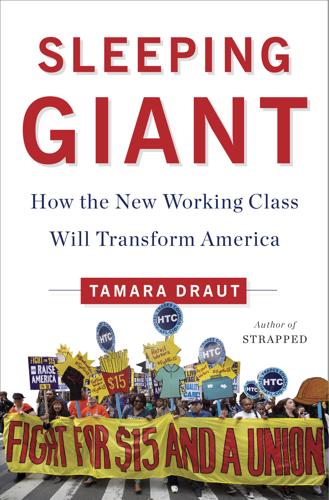
Sleeping Giant: How the New Working Class Will Transform America
by
Tamara Draut
Published 4 Apr 2016
In addition to the mythical “welfare queen” with “eighty names” and “twelve Social Security cards,” whose tax-free income alone was “over $150,000,” Reagan described the criminal as “a staring face—a face that belongs to a frightening reality of our time: the face of the human predator.”48 He promised to crack down on crime by bringing more federal resources to bear on the problem—law and order being the one exception to a rigid intolerance for government spending. As neighborhoods in our greatest cities cried out for help in dealing with the spasms of joblessness and a rising drug trade, there was no New Deal. Or new War on Poverty. There was a war on drugs. And it was, and still is, being waged with near impunity in black and brown communities.49 Today 2.2 million people are incarcerated in prisons or jails, up from just 350,000 in 1980.50 A full 60 percent of incarcerated individuals are people of color, and two-thirds of all people in prison for drug offenses are people of color.
…
In this country, you can succeed if you get educated and work hard. Period. Period.”14 In 2012, O’Reilly listed what he called the “true causes of poverty” as “poor education, addiction, irresponsible behavior, and laziness.”15 In 2014, during the week that marked the fiftieth anniversary of LBJ’s War on Poverty, O’Reilly again said that “true poverty” “is being driven by personal behavior,” which included, according to him, “addictive behavior, laziness, apathy.”16 Why does what Bill O’Reilly thinks and communicates to his audience matter? Because his is the most viewed cable news show, regularly drawing in between 2 and 3 million viewers each night.
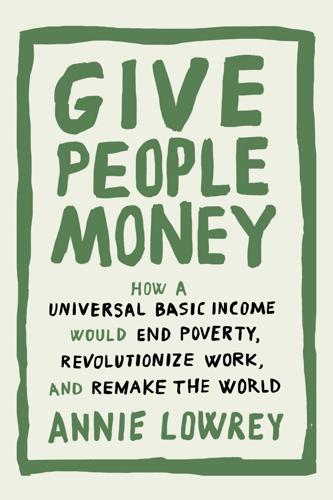
Give People Money
by
Annie Lowrey
Published 10 Jul 2018
Roosevelt enacted the New Deal, boosting infrastructure investment, launching public-works programs, reforming the banking sector, and so on. The Social Security Act of 1935 provided “old age payments,” and the government set up the Aid to Dependent Children program that later became welfare. Three decades later, Lyndon Johnson led another dramatic expansion of this safety net as part of his civil rights–era “unconditional war” on poverty. “Many Americans live on the outskirts of hope—some because of their poverty, and some because of their color, and all too many because of both,” he told a joint session of Congress at his 1964 State of the Union. “One thousand dollars invested in salvaging an unemployable youth today can return $40,000 or more in his lifetime.”
…
“American social programs”: Frances Fox Piven, “Why Welfare Is Racist,” in Race and the Politics of Welfare Reform, ed. Sanford F. Schram, Joe Brian Soss, and Richard Carl Fording (Ann Arbor: University of Michigan Press, 2010), 323. even wealthy black individuals: Richard Rothstein, “Modern Segregation” (presentation to the Atlantic Live Conference, Reinventing the War on Poverty, Washington, DC, Mar. 6, 2014), http://www.epi.org/publication/modern-segregation/. “on explicit condition that no sales be made to blacks”: Richard Rothstein, “School Policy Is Housing Policy: Deconcentrating Disadvantage to Address the Achievement Gap” in Race, Equity, and Education: Sixty Years from Brown, ed.

The Broken Ladder
by
Keith Payne
Published 8 May 2017
So, in a 1963 paper, Orshansky proposed that researchers might define poverty by taking the second least expensive meal plan and multiplying its cost by three. Enough, in that formulation, would be defined as being just able to feed your family and cover basic expenses. Incomes that fell below that number would be considered below the poverty line. In 1964 Lyndon Johnson declared the “War on Poverty.” Because the administration lacked an official metric to define who was poor, it decided to adopt a version of the “Orshansky index” to determine who was eligible for government benefits and who was not. Mollie Orshansky was as surprised as anybody about this decision. She had developed her method to help researchers measure poverty and never meant for it to be used to determine who received benefits.
…
Senate, 110–11 Utah, 51–52, 119, 147, 208 values, 15, 60, 62, 80, 159, 167–68, 171, 212, 217–19 “veil of ignorance” concept, 25–27 Venkatesh, Sudhir, 58–59, 72 Vermont, 51, 119, 147, 175 violence, 48, 59, 119, 128, 147, 168, 207 visual illusions, 35, 88 system, 35, 137–40, 144 Vohs, Kathleen, 217 voting, 100–103, 105–8, 110–12, 156, 172–73 Wake Forest University, 129–30 Wall Street Journal, 182 Wansink, Brian, 36–37 War on Poverty, 32 Washington, 175 wealth, 12, 47, 89, 205 in ancient times, 20, 22–23 distribution, 10, 26–27 and the future, 63–64, 201–2 gap, 3–4, 7–9, 23, 52–54, 72, 137, 156–59, 199, 202–3, 208 and happiness, 204 and health, 48–49, 114, 116 and life expectancy, 117 measuring it, 33–34, 46, 75 perceptions of, 33–35, 39, 47, 54, 70–71 redistribution of, 103–6, 108–10 and reducing inequality, 213–16 and religious faith, 148–51 what it looks like, 52–53, 55 See also feeling: rich; material: wealth Wealth of Nations, The (Smith), 34 wealthy countries, 4, 48–50, 114–15, 117, 149, 204–5 Wegner, Daniel, 147 welfare programs, 32, 94, 98, 103–4, 106, 108, 170–74, 207, 218–19 What’s the Matter with Kansas?
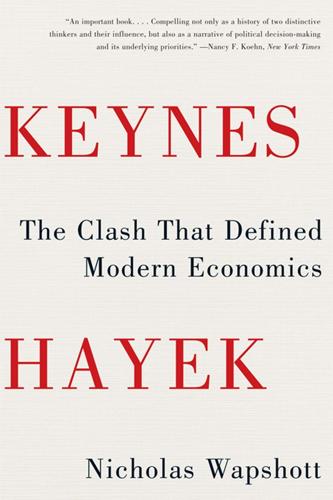
Keynes Hayek: The Clash That Defined Modern Economics
by
Nicholas Wapshott
Published 10 Oct 2011
As Arkansas representative Wilbur Mills66 recalled, “Johnson always was a spender, in a sense, different from Kennedy. He thought that you could always stimulate the economy better through public spending than you could through private spending.”67 Johnson’s program was as radical as anything Franklin Roosevelt had attempted. He extended civil rights to African-Americans, embarked on a “war on poverty” through federal entitlements, and instituted Medicare to give health care to everyone over age sixty-five and Medicaid for those who could not afford health insurance. The 1960s was a decade of unparalleled wealth. Whereas the 1950s had been years of widespread affluence, the 1960s made the average worker comfortably well-off.
…
Oral history interview with Leon Keyserling by Jerry N. Hess, Washington, D.C., May 10, 1971, p. 94. 46 Walter Wolfgang Heller (1915–87), chair of economics at the University of Minnesota. Helped design the Marshall Plan of 1947 that reinvigorated Europe after World War II. Suggested to Lyndon Johnson the “War on Poverty.” 47 Kermit Gordon (1916–76), later president of the Brookings Institution who oversaw the first budget of Johnson’s Great Society. 48 John F. Kennedy, “State of the Union Message to Congress,” February 2, 1961, The American Presidency Project, http://www.presidency.ucsb.edu/ws/index.php?
…
M., 140 Tooke, Thomas, 74 “total effective circulation,” velocity as, 104–5 totalitarianism, xiii, 87, 91, 144–45, 150–51, 193–205, 218–19, 221, 241, 266, 287, 288–90 Tract on Monetary Reform, A (Keynes), 23, 24, 32, 41, 53, 115, 286 trade: —balance of, 32, 144, 245 —cycles of, 110–11, 112 —exports vs. imports in, 32, 131, 245 —free, 35–36, 61–62, 82–83, 144, 243, 267, 272 —global, 4 —Keynes’s views on, 61–64, 82–83, 86, 131 —money supply and, 73 —prices and, 23, 24 —tariffs on, 61–64, 82–83, 86, 247 trade unions, 33, 38, 39–40, 60, 187, 247, 268 Treasury, British, xii, 7–11, 24, 32, 57–58, 60–61, 62, 72, 82–83, 85–87, 129, 149–50, 191, 193 Treasury, U.S., 163, 236, 242–43, 280, 281 Treatise on Money, A (Keynes), 31, 53–57, 59, 66, 67, 70, 71, 75, 87–122, 123, 127–28, 132, 139, 146, 168, 172, 174, 317n trench warfare, 4, 6–7 “trickle-down” effect, 262–63 Trinity College, 5, 67 Truman, Harry S., 229, 230, 231, 274 trust funds, 52, 57–58 trusts, 166, 222, 244 Turati, Filippo, 114 unemployment: —benefits paid for (“dole”), 57–58, 60, 61, 134, 199–200, 237, 253, 283–84, 291 —consumer spending and, 81–82 —currency rates and, 31–32, 38–40, 56, 85–87 —economic impact of, 81–82, 85, 131, 133 —in Great Britain, 38, 56, 57–58, 81–82, 85–87, 128, 134, 178–79, 189, 191, 203, 260 —Hayek’s views on, xiii, 2, 70–71, 77–78, 108, 110, 143–44, 178, 184–85, 187, 194–95, 198–99, 257 —inflation and, 131, 159, 232, 238–39, 244, 263, 271 —job creation programs for, 49, 52, 57–58, 70–71, 129–30, 133, 134, 150–51, 163, 184–85, 187, 189, 228–30, 241–42, 272, 280 —Keynes’s views on, 2, 31–32, 52, 55, 56, 57–58, 70–71, 77–78, 81–82, 85, 94, 110, 123–24, 125, 127, 128, 129–37, 143–46, 148, 149–51, 153, 154–64, 170, 184–85, 187, 194–95, 198, 226, 296 —natural level of, 249 —prices and, 26, 41, 229–30 —public spending and, 26, 33–34, 49, 50, 77–78, 85, 260 —taxation and, 130, 163, 191 —in U.S., 128, 157, 170, 178–79, 199, 228–30, 232, 236–46, 251, 253, 261, 277, 282, 283 —wage levels and, 148 United Nations, 228, 229 United States: —banking system of, 28, 41, 84–85 —capitalism in, 46, 144–46 —domestic programs of, 157–70, 202, 205, 228, 231–32, 240, 248, 253, 256, 320n —economy of, 46, 52–53, 62, 106, 111, 141–42, 188–90, 228–46, 253–55, 261–65, 269–72 —foreign aid of, 136, 228 —Hayek’s influence in, xiii–xiv, 201–11, 234, 246, 247–65, 267–74 —inflation rate of, 230, 232, 236, 238–39, 242–46, 248, 251, 255, 261–62, 263, 267, 271 —infrastructure of, 159, 163, 189, 281 —interest rates in, 232, 235, 236, 246, 277, 280, 282, 284 —Keynesianism in, 146–47, 154–70, 188–90, 228–46, 276–84 —military spending of, 190, 231–34, 237, 241, 261, 264, 274, 276–78 —national security of, 233–34, 237, 276–77 —space program of, 234, 237 taxation in, 231, 262–63 —unemployment rate in, 128, 157, 170, 178–79, 199, 228–30, 232, 236–46, 251, 253, 261, 277, 282, 283 —Versailles Treaty and, 4–5, 155–57 —welfare programs in, 240, 264 —in World War II, 189–90, 229, 234 University of Chicago Press, 194, 201–2, 212, 216, 247 utilities, 291 utopias, 290–91, 292 value: —of currency, 22–23 —determination of, 5, 22–23 —of equipment (depreciation), 105–6, 118–19 —of goods, 74–75, 101, 117 —monetary, 22–23, 74–75, 120–21, 161 Vanity Fair, 157 “velocity of circulation,” 26, 33, 104, 136 Versailles Treaty, xii, xiii, 3, 4–5, 8–14, 17, 28, 56, 68, 84, 136, 137, 155–57, 158, 189 Vienna, xi–xiii, 1–3, 15–16, 17, 18–21, 27, 29–30, 40, 44, 111, 145, 214–15 Vienna, University of, 3, 15, 19, 20–22, 140 Vietnam War, 241 Viner, Jacob, 216, 221–22, 329n Volcker, Paul, 246, 261, 263, 286 voluntary savings, 104, 107 von Szeliski, Victor, 164 voting rights, 140 wages, 32, 38–39, 60, 63, 118, 119–20, 134, 135, 148, 188, 241 —controls on, 243–44 —increases in, 118, 119–20, 134 —production costs and, 119–20 Walras, Léon, 74 war debt, 4–5, 8–14, 21–22, 31–32, 84, 155–57, 206 warfare, 4, 137, 138, 190–92, 194, 229, 231–34 war on poverty, 240 war on terror, 276–78 “War Potential and War Finance” (Keynes), 191–92 Watergate scandal, 244 wealth accumulation, 56–57, 117–20, 127, 143–44, 149–50, 222, 241, 279, 287 Wealth of Nations, The (Smith), 218 Webb, Beatrice, 24, 64 Webb, Sidney, 24 Weber, Max, 21, 304n Wedgwood, Veronica, 212, 329n weights and measures, 201 Weimar Republic, 9 welfare state, 199–200, 201, 222, 227, 233, 234–35, 240, 249–50, 253, 258–61, 264, 267, 288–89, 295 Westminster Abbey, 226 wholesale prices, 62 “Why I Am Not a Conservative” (Hayek), 220 Wicksell, Knut, 42, 43, 48, 55, 74, 91, 100, 103, 120 “widow’s cruse,” 127 Wieser, Friedrich von, 20, 21–22 Wilhelm II, Emperor of Germany, 9 William Volcker Charities Fund, 211, 216, 218 Wilson, Woodrow, 4–5, 11, 28, 155–57, 161 Winant, John, 226 Wittgenstein, Ludwig, 3, 114, 300n Wolfson, Adam, 288–89, 292 Woolf, Leonard, 53, 226 Woolf, Virginia, 5, 53, 301n Wootton, Barbara, 202–3, 320n, 326n “Working of the Price Mechanism in the Course of the Credit Cycle, The” (Hayek), 76–78 World Bank, 136, 193 WorldCom, 278 World War I, 3–5, 16, 19–20, 22, 55–56, 68, 69, 72, 84, 155–57, 189 World War II, 136, 189–92, 229, 234 Wright, Quincy, 85 Yale University, 271 Yom Kippur War, 244 Yugoslavia, 16, 17 Zionism, 158 More praise for KEYNES HAYEK “An essential primer on the two men who shaped modern finance.”
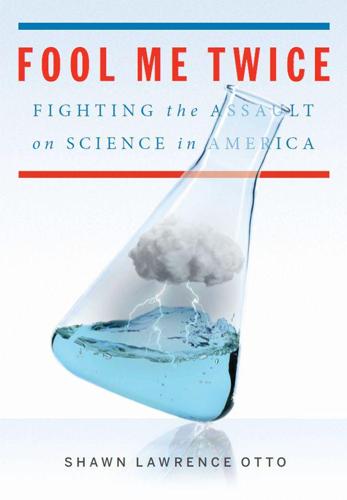
Fool Me Twice: Fighting the Assault on Science in America
by
Shawn Lawrence Otto
Published 10 Oct 2011
At its peak, the Apollo Program would employ some 400,000 people.5 There were just two problems: We didn’t have a clue about how to do it, and we didn’t have the money either, with the country in a major recession and federal tax revenues down. To make matters worse, Kennedy’s inspirational ideas for domestic policy were getting shot down. He had painted a grand vision of the New Frontier and the War on Poverty, but he couldn’t get Congress to pay for a major expansion of social programs, at least not yet. But if a program were tied to the cold war, he thought he could get Congress to support it like they had the National Interstate and Defense Highways Act five years before and the National Defense Education Act of 1958.6 Apollo could be a bold new vision and a jobs program, an economic stimulus with benefits.
…
The cultural anxiety was so high by then that the very idea of Russians crawling all over the Moon caused a visceral reaction in many Main Street Americans. Kennedy thought he had a winner. But once the budget numbers came back, they showed that the program would cost almost $20 billion over eight years, eating up all the discretionary funds that Kennedy needed for his War on Poverty. If he wanted Apollo, he would likely have to sacrifice everything else. He began looking for a way out. He realized that if he took away the cold-war justification, he’d lose the support of fiscal conservatives, and he could use that loss to move the deadline back indefinitely by defunding it.
…
See also specific name V Vaccination debate, 151–55, 178–79 Value on ecosystem, 259 Values war, 111, 163–66, 171 Varmus, Harold, 8–9, 19 Vaughn, Lewis, 136 Velocity-distance relationship, 69 Vioxx (rofecoxib) lawsuit, 17 Vitalism, concept of, 118–19 Vonnegut, Kurt Jr., 97–98 “Vulgar induction,” 194–95, 289 W Wakefield, Andrew, 152, 154 War on Poverty, 95 Washington, George, 22, 90–91 Watson, James, 78 Watts, Anthony, 201 Weapons of mass destruction, 11. See also Atomic bomb Webber, Michael, 274–76, 289 Welles, Orson, 144 Western Christianity, 41–43 Westphal, Scott, 184, 299 Whitfield, Ed, 218–19 Willer, Robb, 283–85 Williams, Brian, 286 Wilson, Edward O., 4, 129 Wilson, Robert, 309–11 World War II, 73–79 Wundt, Wilhelm, 117 Y Yellow journalism, 150–51 Z Zakir, Waseem, 195 Mention of specific companies, organizations, or authorities in this book does not imply endorsement by the author or publisher, nor does mention of specific companies, organizations, or authorities imply that they endorse this book, its author, or the publisher.
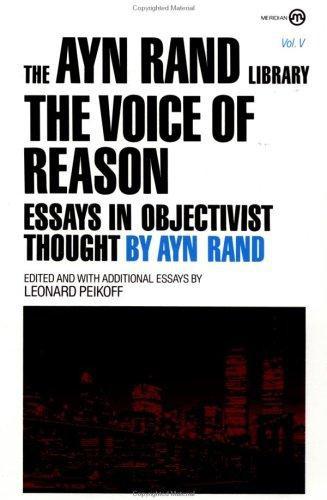
The Voice of Reason: Essays in Objectivist Thought
by
Ayn Rand
,
Leonard Peikoff
and
Peter Schwartz
Published 1 Jan 1989
Ask yourself: what is the moral and intellectual state of a nation that gives a blank check on its wealth, its work, its efforts, its lives to a “yearner” and “dreamer,” to spend on lost causes? Can anyone feel morally inspired to live and work for such a purpose? Can anyone preserve any values by looking at anything today? If a man who earns his living hears constant denunciations of his “selfish greed” and then, as a moral example, is offered the spectacle of the War on Poverty—which fills the newspapers with allegations of political favoritism, intrigues, maneuvering, corruption among its “selfless” administrators—what will happen to his sense of honesty? If a young man struggles sixteen hours a day to work his way through school, and then has to pay taxes to help the dropouts from the dropout programs—what will happen to his ambition?
…
Poverty is not a mortgage on the labor of others—misfortune is not a mortgage on achievement—failure is not a mortgage on success—suffering is not a claim check, and its relief is not the goal of existence—man is not a sacrificial animal on anyone’s altar or for anyone’s cause—life is not one huge hospital. Those who suggest that we substitute a war on poverty for the space program should ask themselves whether the premises and values that form the character of an astronaut would be satisfied by a lifetime of carrying bedpans and teaching the alphabet to the mentally retarded. The answer applies as well to the values and premises of the astronauts’ admirers.
…
The response of Congress to Apollo 11 included some prominent voices who declared that NASA’s appropriations should be cut because the lunar mission has succeeded.(!) The purpose of the years of scientific work is completed, they said, and “national priorities” demand that we now pour more money down the sewers of the war on poverty. If you want to know the process that embitters, corrupts, and destroys the managers of government projects, you are seeing it in action. I hope that the NASA administrators will be able to withstand it. As far as “national priorities” are concerned, I want to say the following: we do not have to have a mixed economy, we still have a chance to change our course and thus to survive.
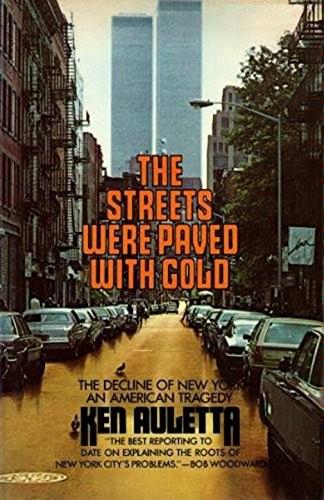
The Streets Were Paved With Gold
by
Ken Auletta
Published 14 Jul 1980
Cavanagh, Jr., who meekly recited a six-minute message for the benefit of two Board of Estimate members. Wagner still proposed to close the gap by issuing short-term notes. It amounted, he said, to “borrow now, repay later.” The Mayor’s message echoed the boundless optimism and rhetoric of the day: “I intend that we shall press ahead with the war on crime, the war on poverty, the war on narcotics addiction, the war on slums, the war on disease and the war on civil ugliness.” Such “wars” cost money, and the Mayor presented a record $3.87 billion budget—up $514,299,699—plus a first-time fiscal trick to pay for it. Unlike subsequent mayors, Wagner did not hide his tricks.
…
While the game was divorced from rules, it was not divorced from the political ethos of the time. The public was demanding, expecting, more. In truth, it would have been difficult, even if New York had enjoyed strong leadership, to have cut the city’s budget. The sixties saw Mayor Wagner pledge a local war on poverty. President Kennedy promised Camelot. President Johnson promised both guns and butter. Mayor Lindsay promised Fun City. Martin Luther King had a dream. The Great Society was going to transform slums into Scarsdales, Vietnam into Ohio. Public expectations rose. Cities seethed with rage when the inflated promises of the Great Society and New Frontier were not met, and City Hall tried to step into the breach.
…
.…” “Hell, five years ago all the so-called ‘budgetary gimmicks’ were being called genius,” Lindsay’s former chief of staff, Jay Kriegel, told writer Harry Stein. “It wasn’t Lindsay, it was the times.” And the times were optimistic. John Kennedy kicked off the decade of the sixties promising to “get this country moving again.” Lyndon Johnson’s first State of the Union message, in 1964, announced “a national war on poverty. Our objective: total victory.” Vietnam was to preserve the world for democracy. When John Lindsay captured the mayoralty in 1965, Newsweek’s cover story rhapsodized that his campaign was “the most important political operation in America today.…” In addition to optimism, the sixties featured social upheaval.

Multitude: War and Democracy in the Age of Empire
by
Michael Hardt
and
Antonio Negri
Published 1 Jan 2004
In other cases, the metaphorical discourse of war is invoked as a strategic political maneuver in order to achieve the total mobilization of social forces for a united purpose that is typical of a war effort. The war on poverty, for example, launched in the United States in the mid-1960s by the Johnson administration, used the discourse of war to avoid partisan conflict and rally national forces for a domestic policy goal. Because poverty is an abstract enemy and the means to combat it are nonviolent, the war discourse in this case remains merely rhetorical. With the war on drugs, however, which began in the 1980s, and more so with the twenty-first-century war on terrorism, the rhetoric of war begins to develop a more concrete character. As in the case of the war on poverty, here too the enemies are posed not as specific nation-states or political communities or even individuals but rather as abstract concepts or perhaps as sets of practices.
…
As in the case of the war on poverty, here too the enemies are posed not as specific nation-states or political communities or even individuals but rather as abstract concepts or perhaps as sets of practices. Much more successfully than the war on poverty, these discourses of war serve to mobilize all social forces and suspend or limit normal political exchange. And yet these wars are not so metaphorical because like war traditionally conceived they involve armed combat and lethal force. In these wars there is increasingly little difference between outside and inside, between foreign conflicts and homeland security. We have thus proceeded from metaphorical and rhetorical invocations of war to real wars against indefinite, immaterial enemies.

The Cigarette: A Political History
by
Sarah Milov
Published 1 Oct 2019
Beginning in the mid-1960s, institutions themselves began to yield to the participatory ideal. The 1964 Wilderness Act was the first piece of federal legislation to require participation by citizens’ groups in proposals for wilderness designations.36 And the mandate of “maximum feasible participation” of poor people in designing the War on Poverty’s Community Action Programs suggested the potency of the participatory ideal. Of course, neither tobacco interests nor their allies in Congress would cede ground to this broadened conception of the public when it was articulated in front of regulatory agencies and in the courts. Regulating after the Report The Surgeon General’s Report triggered an equal and opposite reaction from Congress and the Federal Trade Commission (FTC).
…
For example, the 1967 Air Quality Act provided for citizen participation in public hearings, offering encouragement to neighborhood groups across the country. And the 1970 Clean Air Act encouraged grassroots involvement in policymaking, requiring that states hold public hearings on proposed environmental laws so that citizen groups could present testimony.85 From the War on Poverty’s Community Action Agencies to city-based experiments in community policing to the advisory committees of the Occupational Safety and Health Administration (OSHA), state regulations began to open to new constituencies in dramatic ways that reflected an expanding conception of the public. These experiments in openness were never as accessible as their architects intended.
…
SCRAP, 187–188 Van den Haag, Ernest, 219 The Ventilator, 176–177 Verband der Zigarettenindustrie, 89 Village Voice, 194 Virginia, 31–32, 82 Volpe, John, 168 Voting Rights Act, 153 Wallace, Henry C., 33–36, 46–48, 52, 55, 57, 60, 62, 319n50 Wall Street Journal, 61, 169, 218 Wanamaker, John, 25 warehouses, 30, 44, 72–74, 113, 199 War on Poverty, 125, 186 Warren, Earl, 130 Warren, Robert Penn, 11–12, 37 Warsaw Uprising, 83 Washington Post, 140, 148, 164, 171, 225–226, 242–243, 247–248, 255, 257, 282, 284 Watergate, 173, 242, 247 Watts, Glenn, 233 Waxman, Henry, 247–248, 262–263, 279–280, 283–284, 288–289 WCTU (Women’s Christian Temperance Movement), 24–25, 27, 142–143 W.

Reskilling America: Learning to Labor in the Twenty-First Century
by
Katherine S. Newman
and
Hella Winston
Published 18 Apr 2016
The silver lining to these Cold War obsessions was the National Defense Education Act of 1958, which supported a massive investment in higher education through loan programs that fostered college enrollments, especially in defense-oriented fields, from foreign languages and area studies to engineering and mathematics. The vocational education section of the bill focused on training individuals for highly skilled technical occupations such as computer programming and aircraft mechanics, which were vital to national defense. Vocational Education and the War on Poverty The common purpose of the second wave of vocational education and its allied programs of apprenticeship had emphasized the needs of the labor market for skilled workers as well as the manpower requirements of war production. In the 1960s, a new mission emerged that had little to do with either of these goals.
…
community and technical colleges and credentials and debates over decentralization of employer ties to schools and funding and funding and, Germany German dual system German dual system, in US high school high-school, vs. general education hiring biases and history of improving and expanding Japan and manual training movement and mathematics and modernizing obstacles to rebranded as CTE standardized tests and workforce needs and Vocational Education Act (1963) vocational teachers Vocational Training Act (Germany) Volkswagen (VW) Coaching wages and incomes apprenticeships and community colleges and Germany and protection of South and wait staff Waitz, Martin Walker, Scott Walmart War on Poverty Washington, Booker T. Washington State Web developers “We’d Love to Hire them, But…” (Kirschenman and Neckerman) welding Wentworth Institute of Technology West Virginia white-collar work White House Fact Sheet (1992) Whittier Regional Vocational Technical High School Williams, Keith Williams, Nigeria Wilson, William Julius Wisconsin Wolf, Stephan Wolfsburg Works Council workers’ councils Workforce Innovation and Opportunity Act (WIOA, 2014) World War I World War II writing skills Yale University Youssef, Said Youth Apprenticeship, American Style conference (1990) youth apprenticeship programs.
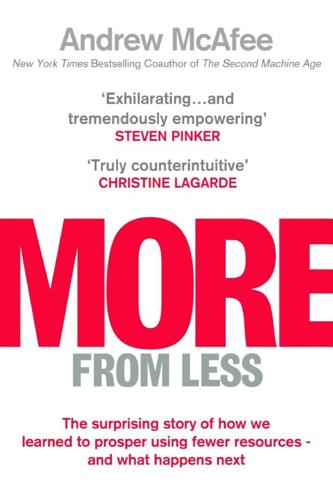
More From Less: The Surprising Story of How We Learned to Prosper Using Fewer Resources – and What Happens Next
by
Andrew McAfee
Published 30 Sep 2019
The nineteenth-century British economist and philosopher Henry Sidgwick is usually credited with introducing the concept of externalities. They were originally called spillovers. Later economists apparently decided that that term was too clear and stopped using it in favor of the more opaque word externalities. II. As we’ll see in chapter 11, the Chinese war on poverty has also been hugely successful. III. Monsanto began to acquire its bad name in the 1960s and 1970s when it (along with other chemical companies) produced Agent Orange, a powerful herbicide that was widely used by the US military during the Vietnam War. Agent Orange caused serious health problems in humans.
…
A graph created by Max Roser clearly reveals the “miracle” Smith was talking about, and how right he was that the improvement is without precedent. The graph doesn’t show the percentage of people living in poverty, but instead something even more important: the total number of extremely poor people on earth. World Population Living in Extreme Poverty, 1820–2015 The World’s War on Poverty The total number of poor people in the world peaked right at the time of the first Earth Day in 1970, then started to slowly decrease. But the real miracle came when this happy decline accelerated during the twenty-first century. In 1999, 1.76 billion people were living in extreme poverty. Just sixteen years later, this number had declined by 60 percent, to 705 million.

The Challenge for Africa
by
Wangari Maathai
Published 6 Apr 2009
DEALING WITH MALARIA AND DEPENDENCY In January 2005, I attended the World Economic Forum, a gathering of heads of state, entrepreneurs, economists, and public figures that is held every year in Davos, Switzerland. In one session, I listened as then Tanzanian president Benjamin Mkapa addressed the theme “Funding the War on Poverty” on a panel that included President Luiz Inácio Lula da Silva of Brazil; Domenico Siniscalco, Italy's then minister of economy and finance; Gordon Brown, then the UK's chancellor of the exchequer; American economist Jeffrey Sachs; and Bill Gates, the founder of Microsoft.1 President Mkapa made a passionate appeal for the global North (the wealthy, industrialized countries, which are mainly located in the northern hemisphere) to cancel the debts that his country owed, which, he said, severely hampered his government's ability to make investments in public health, including, for example, providing bed nets to protect Tanzanian children from malaria-infected mosquitoes.
…
Indeed, at the end of his speech, President Mkapa had gotten to the heart of the need for Africa's leaders to commit to serving their peoples and to practicing better governance for their peoples' benefit: Now for our own, let me say: I don't want to be putting the developed countries on the dock. We [Africans] also have a task, we also have a challenge; because we also have a capacity to some extent of funding the war on poverty ourselves: organizing our economies, organizing our revenue collection systems, organizing our own budgeting, being more accountable and transparent. Those we can undertake. A combination of those reforms I think would see a tremendous, truly predictable advance in the war against poverty. President Mkapa knew what the right actions were.

The Gods of New York: Egotists, Idealists, Opportunists, and the Birth of the Modern City: 1986-1990
by
Jonathan Mahler
Published 11 Aug 2025
What about the failing schools, the neglected neighborhoods, the easy accessibility of crack, the racist drug policies that were sending scores of Black men to prison every day, the lack of jobs for those without college degrees, the deep cuts to the nation’s social welfare programs? Why a war on drugs, not a war on poverty? “Tell us the whole story,” wrote Earl Caldwell of the Daily News, one of only a handful of Black columnists in the city’s mainstream media. “Tell us about the neighborhoods where these kids live. Tell us something of the kind of home situation these kids have. Don’t keep that a dirty little secret….
…
While there, he had gotten involved in the local Civil Rights Movement. He dropped out after two years, returned to New York, and threw himself into community activism, labor organizing, and eventually, politics. He organized migrant workers on Long Island, helped implement programs created under President Lyndon Johnson’s War on Poverty, and ran campaigns for aspiring district leaders, state assemblymen, and members of Congress. He fought for causes as well as candidates: In 1980, he led the unsuccessful effort to stop Koch from closing Harlem’s Sydenham Hospital. He was a natural coalition-builder who made it his business to know everyone, from the city’s most radical Black nationalists to its Jewish labor leaders to its reporters.
…
Regis, 253 Staten Island, 166, 368, 382 Statue of Liberty, 59–62 Stavis, Roger, 85, 250–51 Stein, Andrew, 369 Steinbrenner, George, 367 Stephney, Bill, 297, 298–99 Stern, Henry, 99–100, 264, 269–70 Stern, Leonard, 326 Stevenson, Adlai, 18 Stewart, Michael, 12, 66–67, 103, 116, 273, 291 Stewart, Moses, 374–75, 375, 377–78, 380, 383, 389, 393, 404 stock market, 8, 24, 182–87 Stone, Oliver, 201 Stone, Roger, 156, 171–72, 174, 185, 199, 285 Stonewall Inn, 139 Stop the Church, 390–92, 397 Streisand, Barbra, 142 strikes, 61 Styron, Tom, 48 subways Disciples of Justice, 160 Goetz case, 11, 144–48, 153–55 graffiti, 12, 24, 66 Guardian Angels patrols, 145–46 protester shutdowns, 206–7 Sullivan & Cromwell, 32 Sullivan, Stephen, 68–69 Surrender Dorothy, 277–78 Sutton, Percy, 322 Sydenham Hospital, 110, 327 Sylvester, Curtis, 111 T tabloid media, 13, 37–39, 404–5 Tabor, Timothy, 134, 136–37, 148–49 Taj Mahal (Trump’s), 155–57, 179–82, 253–54, 295, 296, 323, 347, 394–95, 400, 404 Talese, Gay, 22 Tammany Hall, 125 Tate, Greg, 86, 214, 299 Tavern on the Green, 322 tax abatement programs, 24, 30, 89, 93–94, 95–96, 150–52 taxes, 8, 10, 24, 389 Taylor, Elizabeth, 55 Television City, 150–51, 366 “The Tell-Tale Heart” (Poe), 266 theater, 141 32-degree policy, 28–29, 34–35 Thornburgh, Dick, 309 Till, Emmett, 159 TKO Promotions, 230–31 Tompkins Square Park, 67–68, 280–83, 285–86, 287–88, 332–33, 362–63, 400, 405 Tour de Trump, 347 Townsend, Alair, 151–52 Travelers Hotel, 237 Trinity Church, 143 Troy, Matty, 27 Trudeau, Garry, 174 Trump, Donald The Art of the Deal, 173–74, 185, 199–202, 209–10, 284 Atlantic City casinos, 98, 155–57, 179–82, 186, 200, 253–54, 294–96, 323–26, 347–49, 394–95, 400 Black Monday crash, 184–86 Central Park Five ads, 3, 343–44, 345, 352, 399 Cohn and, 92–93, 100, 210 Eastern Air Lines acquisition, 294–95 education, 91 family background, 90–91 FBI investigation, 231 fear of AIDS, 100 Giuliani and, 352, 368, 403–4 Grand Hyatt audit, 396–97 Ivana and, 94, 97, 181, 196–97, 210, 252–53, 395 King and, 180–82, 233 Koch and, 95–96, 99–100, 149–53, 173, 179 lawsuits, 92–93, 96, 324 Marla Maples and, 196–97, 210, 253, 284–85, 324, 395, 400 media coverage and appearances, 95, 97, 99, 150, 153, 171–72, 174, 184–86, 199–200, 211, 218, 252, 285, 367–68, 404 Party on the Pond, 90, 100 Plaza negotiations, 251–53 political ambitions, 174, 185–86 Rainbow Room reopening, 196–97, 210, 395 real estate development, 93–100, 150–51, 366–68 Republican National Convention, 283–85 Sharpton and, 181, 358 Stone and, 156, 171–72, 174, 185, 199 tax abatements, 89, 93–94, 95–96, 150–52 Tour de Trump, 347 Wollman Rink project, 90, 99–100, 326 Trump, Donald, Jr., 395 Trump, Fred, 91–92, 93 Trump, Ivana, 94, 97, 172, 181, 196–97, 210, 252–53, 395 Trump City, 366–68 Trump Management, 91 Trump Organization, 91–92, 97, 200, 254, 296, 367 Trump Plaza, 156, 180, 233, 323, 324, 395 Trump Princess, 284 Trump Shuttle, 294–95 Trump Tower, 10, 95–97, 156, 200, 251–52, 284, 344, 367 Trump Village, 91–92 Trump’s Castle, 97, 156, 181, 253 Tubman, Harriet, 342 Turks, Willie, 291 Turner, Nat, 298 Tweed, Boss, 23, 125 Tweed Courthouse, 23 21 Club, 9 Tyson, Mike, 180–82, 201, 233, 241, 251, 288 U Umbrella House, 362 underclass, 80 Union Square Cafe, 9 United Auto Workers, 204 United for Israel, 369 Universal Pictures, 273 Unocal Corporation, 137, 148 Usry, James, 157 V Vanderbilt, Cornelius, 93 Vann, Albert, 109 vigilante crime, 11, 144–48, 153–55 Village Independent Democrats, 125 The Village Voice, 86–87 voting rights, 109, 131 W Wade, Jerry “the Peddler,” 281, 282 Waldenbooks, 199, 200 Waldorf-Astoria, 352 Wall Street, 8, 11, 12, 13, 24, 76–77, 143, 182–87, 216, 331, 389, 405 Wall Street (film), 201 The Wall Street Journal, 37 Wall Street’s Watergate, 136 Walters, Barbara, 181 Waples, Gregory, 154–55 Wappingers Falls, 224–25 War on Drugs, 70, 166, 244 War on Poverty, 327 Ward, Benjamin Bumpurs shooting, 68–69 Byrne shooting, 243–45 commissioner appointment, 66–67 Davis case, 102–4, 333 “Day of Mourning and Outrage” protests, 134 education, 63–64 family background, 63 government jobs, 65–66 Harlem mosque incident, 64–65 Hawkins funeral, 384–85 Hawkins shooting, 371–73 Hinnant case, 316 Howard Beach incident, 113–14, 120–22 Howard Beach protests, 205–6 Koch criticism, 256, 376–77 media coverage and appearances, 333 NYPD rise, 64 physical appearance, 63 resignation, 332–34, 384–85 Rikers Island scandal, 68 secret surveillance operations, 161–62 threats against, 372 Tompkins Square Park riots, 283, 285–86, 332–33, 362–63 war on drugs, 63, 67–68, 70–71, 166–67, 385 Wards Island, 33, 317, 340 Warhol, Andy, 55 Washington Square Park, 32 Washington Temple, 105 Wedtech Corporation, 279 Weeksville, 63 Weichselbaum, Joey, 97 Weinberg, Jay, 97 Weinberg, Sheldon, 97 “welfare queens,” 51 Wenders, Wim, 350, 360 West Side Highway, 6 West Village, 143, 330 Western Union, 7 Westheimer, Ruth, 60 Westpride, 150 Wharton School of Finance and Commerce, 91, 97, 202 White & Case, 350 White, Armond, 358 Wigton, Richard, 134, 136–37, 148–49 “wilding,” 338 Williams, Saul, 235 Williams, Winston, 291 Wilson, Howard, 227 Winfrey, Oprah, 181 Wiseman, Carter, 150 WLIB, 5, 103, 131, 145, 162, 232, 235–36, 257, 258, 265, 273, 275, 291, 297 Wojnarowicz, David, 302 Wolfe, Tom, 175, 183 Wollman Rink, 90, 99–100, 152, 153, 326 Wolper, David, 59 Women in Love (Lawrence), 138 Wonder, Stevie, 289 World Financial Center, 10 Wright, Jim, 200 X X, Malcolm, 64, 109, 214, 298, 300, 342, 379 Y Yo!

Utopias: A Brief History From Ancient Writings to Virtual Communities
by
Howard P. Segal
Published 20 May 2012
Even the belated discovery of poverty in Appalachia and other predominantly white areas, as detailed in Michael Harrington’s The Other America (1963), could not diminish this utopian optimism that economists could attain affluence for all. If anything, the Council of Economic Advisors under both Growing Expectations of Realizing Utopia 101 President Kennedy and President Johnson believed in their ability to develop policies to help to eradicate poverty, a belief expanded by Johnson with his “War on Poverty.” Similarly, sociologist Daniel Bell’s influential The End of Ideology (1960), even though it was misread as endorsing this consensus over the end of strongly ideological politics in affluent America, nevertheless gave enormous intellectual legitimacy to it. Furthermore, the purported consensus on America’s present and future was now traced to the nation’s past by influential historians such as Daniel Boorstin in The Genius of American Politics (1953) and David Potter in People of Plenty: Economic Abundance and the American Character (1954).
…
W. 165 TVA and the Tellico Dam, 1936–1979: A Bureaucratic Crisis in PostIndustrial America (Wheeler, McDonald) 111 Twenty Thousand Leagues Under the Sea (Verne) 8 Twitter 193 Two Cultures, The (Snow) 113– 114, and engineering 121 Unabomber 84 “underdeveloped” or “Third World” 102, 105, 172 Union Carbide 253 United Kingdom 151 Fabianism in 20 286 Index relationship with the United States 114 utopianism in 24 and wind power 151 United Nations International Year of Cooperatives 64 United Society of Believers in Christ’s Second Appearing see Shakers United States 187 “aging or declining era” 237 America as “Second Creation” 81–85 America as utopia 10, 24–25, 74–78, 188–189 American “exceptionalism” 89 attitudes toward inventors, engineers and scientists 157–160 attitude toward rulers 159 attitudes toward technological progress 78, 82, 84, 116 citizens’ demand for separation from external world 122 Civil War 76, 77 concept of System 78 exportation of science and technology 102–103, 109–110 fairs 36, 37 gap between science and public beliefs 116–117 immigration 77–78 imperialism 9 influence of European utopianism 76 moral superiority 11 nature of Americaness 78–79 and nuclear plants 142–156 “nuclear renaissance” 154 and Old World 74 “positive thinking” 168 potentiality of utopia in 75–76 reconceptualization of America 78 religious beliefs 11–12 science and technology 108–109 sense of identity 77 technology and opportunism 75, 77 2011 earthquake 153 United States and digital literacy 210 United States Constitution 74, 93 utopianism and contemporary disorder 93 utopianism 5, 24–32, 24 views of industrialization and technology 83, 84 see also technological utopia Universal Declaration of Human Rights 1948 252 universal rights 252 Universal Studios 36 universities 130, 204, 207, 213, 214 Kellogg Commission 215, 216 and “power of knowledge” 104 and TQM 217 see also electronic campus University of California 112 Berkeley, protests at 111 University of Illinois 207, 210 University of Maine System 208 University of Phoenix 210, 210, 211 urban crises 115 “urbanization” 31 utilitarianism 62 utopias: defined 1, 5–7 alternative energy 150–151 American 24–32, 89–96 artifacts and utopia 196, 243, 252 attitudes toward utopia 124, 192, 242–244 background to 50ff in China and Japan 17–21 contemporary utopias 194–199 creation of 13 critics of utopia 48ff, 74ff, 123–131 critiques 169–173, 243 and cyberspace 198–199 declining faith in 158 digital utopianism 154 and dystopias 5, 216, 244 educational 205, 206–213 and electrification 94 expectations of achievability 50–51, 248–249 failures of 186 as fantasies 251 feasibility of establishment 13–14 forecasters’ claims 160–169 future of utopias 255, 234ff genres of utopianism 24ff and globalization 253–254 high-tech 1, 2, 16, 118, 162, 163, 172, 186, 210, 214–215, 253, 255 negative components 165–166, 167–168 inherent impracticality of 123 intent of utopias 7, 205 internal criticism 28 Kellogg Commission’s utopianism 213–217 Latin American utopias 21–23 literary accounts 1–2, 47–50, 54–55 location of 13 Index 287 utopias (Continued) and megaprojects 139–142 and millenarian movements 8–9 minor utopias 251, 252–253 and modernization 105–106 and “near future” 164, 186 necessity for ability to change 5, 251 non-utopianism 7, 147, 252 non-Western utopianism 16–23, 196, 243 nuclear power 146, 153–154, 156 ongoing significance of utopia 241–255 origin of term 5, 48 overdetailed descriptions 250–251 print and utopianism 217–222 and real world 1, 5–6, 7, 12–13, 244–245 reflecting societies 1, 31 and religion 9–12, 56 and science fiction 8–9, 199–201 and scientific and technological plateau 67, 234–241 significance of utopianism 241–255 significance of utopian writers 95–96 skepticism toward 2 and social media 193–194 spiritual qualities and formal religion 9–12 spread of utopias 16–17 technological utopias 3, 32, 34, 53ff, 99, 102, 107, 109, 202, 247, 253 potential failure of 187 tradition of 188–189 timescale of utopias 13–11 288 Index true and false utopias 5–6, 7, 106 utopia and history 244–245 utopian communities’ political viewpoint 25 utopian writings 47, 254 utopianism and availability of choice 123 utopias and role of women 25, 63, 90–92, 173 utopias, millenarianism and science fiction 8–9 and virtual reality 255 Western utopias 16, 242, 250, 252 see also particular authors, Best and Brightest, Edutopia, Pansophists, Shakers, Technocracy, World’s fairs utopian communities 194–198, 247 and France 2 negative aspects 254–255 quasi-utopian societies 201 religion-based 2, 10 utopian settlements, US 98 Utopian Socialist Society, Venezuela 79 Utopia (New York Library exhibition catalog) 245 Utopia (Thomas More) 5, 13, 23, 47, 48, 123, 242, 244 Utopia or Oblivion: The Prospects for Humanity (Fuller) 14, 164, 207, 248 Utopia Road, Southern California 2 Utopia, Texas, United States 2 Utopia: The Search for the Ideal Society in the Western World (exhibition, New York Public Library) 242–245 utopianism (movement) 5, 100–101, 245, 247, 250, 254 Utopianism: A Very Short Introduction (Sargent) 16 utopians 98, 161, 186–192 Utopias (beer) 3, 249 Utopias in Conflict: Religion and Nationalism in Modern India (Embree) 171 Veblen, Thorstein 97, 106, 216 Venezuela 23, 189 Venter, Craig 127 Vergil 47 Vermont Yankee Nuclear Plant 145, 148, 154 Verne, Jules 7, 8 Vernon, Vermont, United States 145, 147–148 Vietnam War 104–105, 111, 112, 115, 158, 159, 160, 245 Vincenti, Walter 52, 121 virtual governments 250 virtual reality 255 “virtual school” 206 “vision thing” (H. W. Bush) 241–242 Visual Factory, The 212 von Braun, Wernher 9 Wallingford, Connecticut 28 “War on Poverty” 101 War Stars: The Superweapon and the American Imagination (Franklin) 141–142 water power 150 Watergate scandal 158, 159 Watt, James 8 We (Zamyatin) 123, 166 Webber, Melvin 112 Weinberg, Alvin 106, 107–108, 109, 110, 114, 122 Wells, H. G. 9, 35, 240, 251 Wen Jiabao, Prime Minister 38 Western ethnocentrism and industrialisation 169–170 Westinghouse, George 157 What Will Be (Dertouzos) 164 Wheeler, William Bruce 111 Whewell, Rev.
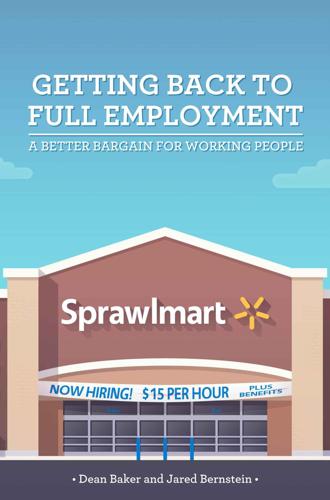
Getting Back to Full Employment: A Better Bargain for Working People
by
Dean Baker
and
Jared Bernstein
Published 14 Nov 2013
“A Rising Natural Rate of Unemployment: Transitory or Permanent?” Report No. 11-160/3. The Netherlands: Tinbergen Institute. Holtz-Eakin, Douglas. 1992. “Public-Sector Capital and the Productivity Puzzle.” Working Paper No. 4122. Cambridge, MA: National Bureau of Economic Research. Holzer, Harry. 2013. “Workforce Development Programs.” In Legacies of the War on Poverty, ed. Martha J. Bailey and Sheldon Danziger, 121-151.New York, NY: Russell Sage Foundation. Johnson, Clifford M., Amy Rynell, and Melissa Young. 2010. “Publicly Funded Jobs: An Essential Strategy for Reducing Poverty and Economic Distress Throughout the Business Cycle.” Paper prepared for the Georgetown University and Urban Institute Conference on Reducing Poverty and Economic Distress after ARRA, January 15.
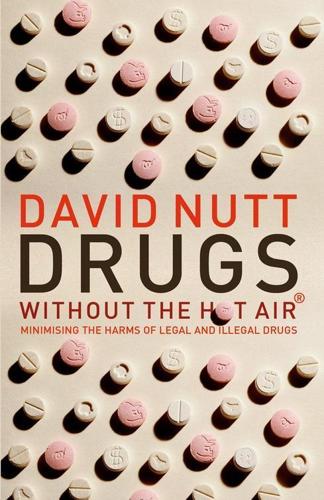
Drugs Without the Hot Air
by
David Nutt
Published 30 May 2012
In order to fight and defeat this enemy, it is necessary to wage a new, all-out offensive.” Richard Nixon, 1971. In 1971, President Nixon gave a speech in which he declared that the USA was facing a “national emergency”, and that drug addiction was “public enemy number one”. This was the beginning of the “War on Drugs”, a term coined as a reference to President Lyndon Johnson’s “War on Poverty”, (which has been about as unsuccessful as the “War on Drugs” and the “War on Terror” which followed it). The word “war” in this case was oddly appropriate, as the “drug abuse emergency” Nixon referred to was largely taking place amongst the US Army in Vietnam, where drug-taking was very prevalent.
…
view=Binary 168. www.guardian.co.uk/world/2010/mar /05/korean-girl-starved-online-game 169. www.drugabuse.gov/sites/default/files/ sciofaddiction.pdf 170. info.cancerresearchuk.org/prod_consump/ groups/cr_common/@nre/@sta/documents/ generalcontent/crukmig_1000ast-2989.xls 171. www.pnas.org/cgi/doi/10.1073/pnas.1119598109 172. www.guardian.co.uk/society/2010/oct/ 31/race-bias-drug-arrests-claim 173. www.nytimes.com/2011/06/17/opinion/ 17carter.html 174. www.guardian.co.uk/politics/2007/feb/ 11/uk.drugsandalcohol1 175. www.ukcia.org/research/ ProjectionsOfImpactOfRiseInUse/ ProjectionsOfImpactOfRiseInUse.pdf 176. www.beckleyfoundation.org/2011/11/19/ public-letter-in-the-times-and-guardian-calling-for-a-new-approach 177. www.homeoffice.gov.uk/drugs/drug-law/ 178. www.time.com/time/world/article/ 0,8599,1887488,00.html 179. www.apa.org/science/programs/ conference/2011/harwood.ppt 180. www.msnbc.msn.com/id/35914759/ns/business-world _business/t/wachovia-settle-drug-money-laundering-case 181. www.dailymail.co.uk/news/article-435393/ Exclusive-Cameron-DID-smoke-cannabis.html 182. www.lawrencephillips.net/ Decision_conferencing.html Index Page numbers in bold indicate definitions. 12-step programme, 1, 2 5HT2A receptors and psychedelics, 1 acamprosate, 1 acetylcholine receptors, 1 ACMD, 1, 2, 3, 4, 5, 6, 7, 8, 9, 10, 11, 12, 13, 14, 15, 16, 17, 18, 19, 20, 21, 22 cannabis report, 1 drugs ranked, 1 expert panel for MCDA, 1 purpose, 1 ranking procedure, 1 ranking, limitations, 1 ranking, reaction to, 1 ranking, results, 1 ranking, weights, 1 sacked from, 1 website, 1 acquisitive crime, 1, 2, 3 Portugal, 1 UK statistics, 1 activate, 1 acute, 1 Adams, Tony, 1, 2 addiction, 1 alcohol, Tony Adams, 1 Amy Winehouse, 1, 2 benzodiazepines, 1 brain mechanisms, 1 curing, 1 diagnosing, 1 dynamics and, 1 gambling, 1 habits and, 1 history, 1 kinetics and, 1 memories in, 1, 2, 3 neurotransmitters and, 1 painkillers, to, avoiding, 1 Pete Doherty, 1 preventing, 1 protective factors against, 1 Ritalin and, 1 treatment difficult, 1 treatment with psychedelics, 1 treatment, Alcoholics Anonymous, 1 treatment, evaluating, 1 treatment, future, 1 treatment, pharmacological substitutes, see pharmacological substitutes treatment, Portuguese experiment, 1 treatment, psychological, 1 withdrawal and, 1 addictive personality, 1, 2 protective factors, 1 addictiveness crack, 1 routes of use, 1 smoking, 1 tolerance and, 1 withdrawal and, 1 adenosine coffee produces, 1 receptors, 1 ADHD, 1, 2, 3 Ritalin treatment for, 1 Advertising Standards Authority, 1 advice on drugs, 1 aerobatics, 1 aerosols, see solvents agonist, see also antagonist and pseudo-antagonist, see also full and partial agonists full, 1 partial, 1 agoraphobia and alcohol, 1 AIDS, see HIV/AIDS Ainsworth, Bob, and decriminalisation, 1 Al Qaeda drugs money, 1 alcohol, 1, 2 addiction, 1 addiction endorphins, 1 agoraphobia and, 1 ALDH2 enzyme, 1, 2 alternatives, 1 anxiety and, 1 availability, 1 binge drinking, 1 cirrhosis and, 1, 2 cocaethylene, 1, 2 cocaine combined with, 1 dependence treatment, 1 depressant, 1 endorphins and, 1 ethnic groups, ALDH2 and, 1 GHB treatment for, 1 harms reduction, 1 health priority, 1 inverse agonist, 1 mixing with drugs, 1, 2, 3, 4, 5 price, 1 PTSD, and, 1 road safety, 1 smuggling, 1 sport, drugs in, 1 treatment in Italy and Austria, 1 treatment, LSD in, 1 withdrawal, 1, 2, 3 withdrawal, benzodiazepine treatment for, 1 withdrawal, ibogaine treatment for, 1 alcohol policy, drinks industry, 1 alcoholics anxiety disorders, 1, 2 dopamine receptor, 1 Alcoholics Anonymous, 1, 2, 3, 4, 5, 6 ALDH2 enzyme and alcohol, 1, 2 allergic reaction, 1 Alpert, Richard, 1 Alpha receptors, 1 alternative approach, legislation, 1 licensed drug premises, 1 licensed drug sales, 1 alternatives for farmers, 1 alternatives to War on Drugs, 1 Portuguese approach, 1 Ameisen, Olivier, 1 amines, 1 amitriptyline, 1 amphetamines, 1 child soldiers given, 1 performance enhancers, 1 stimulant, 1 war, in, 1 amputation of limbs from smoking, 1 anabolic, 1 anabolic steroids, 1, 2, 3 corticosteroids, difference, 1 effects, 1 harms, 1 harms reduction, 1 HIV/AIDS, treatment in, 1 overdose, unlikely, 1 performance enhancers, 1 sex hormones, 1 suicide and, 1 uses, 1 anabolic-androgenic steroids, 1 anadenanthera peregrina, 1 analgesic-induced headaches, 1 analogues, synthetic, 1 ancient Greece Elysian Fields, 1 mushrooms, 1 Andes, cocaine in, 1 androgenic, 1 anhedonia, 1 antagonist, 1, 2, 3 vaccines, anti-drug, 1 anthrax, 1 anti-drug vaccines, 1 anti-inflammatory, corticosteroids, 1 anti-stress corticosteroids, 1 antibody for cocaine overdose, 1 antidepressants, 1 how they work, 1 tricyclic, 1 anxiety addiction and, 1 alcohol and, 1 benzodiazepines for, 1 cannabis and, 1 depressants for, 1 disorder in alcoholics, 1, 2 GABA receptors, low levels, 1 neurotransmitters and, 1 new drugs for, 1 panic attacks, 1 PTSD, in, 1 reduction in terminal illness, 1 treatment outcomes, 1 treatment, SSRIs, 1 archery, 1 ASA, 1 asphyxiation from solvents, 1 aspirin, 1 side effects, 1 aspirin, side effects, 1 Ativan, 1 atom bomb, spiritual antidote to, 1 attention deficit hyperactivity disorder, see ADHD auditory effects, schizophrenia, 1 Australia, decriminalisation of drugs in, 1 ayuesca, psychedelic, 1 baby, starved by parents, 1 baclofen, 1 bagging, route of use, 1 ban, temporary order, 1 banisteriopsis caapi, 1 banks, money-laundering, 1 barbiturates, 1, 2, 3 PTSD, and, 1 suicide, 1 Barcelona, 1 battle fatigue, 1, see also PTSD BCS, see British Crime Survey benefits cannabis, 1 mephedrone, 1 psychedelics, 1 Benzedrine, 1, 2 benzodiazepines, 1, 2 addiction, 1 alcohol treatment, in, 1 benefits, 1 depressant, 1 endogenous, 1 GABA receptors, 1 harms, 1 how they work, 1 Librium, 1 overdose, safer, 1 physical dependence, 1 rebound less likely, 1 side effects, few, 1 suicide and, 1 withdrawal, 1 benzylpiperazine, 1 Bernays, Edward, 1 beta blockers in sport, 1 Betts, Leah, 1, 2 bhang, 1, 2 binge cocaine, 1 drinking, 1, 2, 3 LSD, impossible, 1 tolerance and, 1 treatment, 1 Bird, Sheila, Professor, 1 bladder, ketamine, 1 Blair, Tony, 1 blind trial, 1 Bolivia, 1, 2 coca, 1, 2 bong, 1 brain addiction mechanisms, 1 default mode, 1 brain chemicals, 1 receptors, 1 Brain Science, Addiction and Drugs programme, 1 dispense with care scenario, 1 high performance scenario, 1 neighbourhood watch scenario, 1 treated positively scenario, 1 Brake, Tom, MP, 1 Breakdown Britain, 1, 2 British Aerobatic Association, 1 British Crime Survey, 1 Brokenshire, James, 1 bromides, PTSD, and, 1 bubbles, see mephedrone buprenorphine, 1, 2 advantages, 1 blocks on-top heroin use, 1 early problems, 1 effects, 1 heroin susbstitute, 1 how it works, 1 morphine alternative, 1 opioid, 1 origin, 1 partial agonist for heroin, 1 pharmacological substitute, as, 1 bupropion, 1 burglary, 1, 2 Burrows, David, 1 butane, see also solvents, 1 Bwiti cult, 1 BZP, 1 caffeine Coca-Cola, 1 coffee, 1 stimulant, 1 withdrawal, 1, 2 calmness, drugs for, 1 Camden, 1 “Cameron approach”, 1 Cameron, David, MP, 1, 2, 3, 4, 5 Cameroon, 1 Campral, 1 cancer, see also terminal illness ecstasy in treating, 1 cannabis, 1, 2 ACMD report, 1 anxiety and, 1 as medicine, historical, 1 as medicine, present, 1 benefits, 1 cluster headache and, 1 decriminalisation of drugs, 1 different forms compared, 1 downgrading, 1, 2 farmers required to grow, 1 gateway to more harmful drugs, 1 harms, 1 harms, compared to prison, 1 hemp, 1 heroin instead of, 1 multiple sclerosis and, 1, 2, 3 munchies, the, 1 psychoactive ingredient, 1 re-upgraded, 1 receptors, 1, 2, 3, 4 routes of use, 1 schizophrenia, 1, 2 terminal illness, for, 1 therapeutic drug, as, 1 tinctures, 1 upgrading, 1, 2 cannabis indica, 1 Carlin, Eric, 1, 2 Carnage UK, 1 Carter, Jimmy, 1 Case for Heroin, The, 1 catechol O methyl transferase, see COMT cathinones, 1 banned, 1 naphyrone, 1 synthetic, 1 CBD, 1, 2, 3 CBT, 1, 2 Celera Genomics and genetic sequencing, 1 Celexa, 1 Centre for Social Justice, 1 Champix, 1 Champs Elysees, 1 chemicals, brain, 1 chewing, routes of use, 1 Chief Medical Officer, 1 child soldiers given amphetamines, 1 children advice to, 1 age to advise at, 1 Chinese, alcohol and, 1 cholecystokinin, 1 chronic, 1 cigarettes advertising, 1 generic packaging, 1 invention, 1 labelling, 1 wars, in, 1 Cipramil, 1 cirrhosis, 1 cirrhosis and alcohol, 1, 2 cirrhosis and khat, 1 citalopram, 1 civil liberties, 1 Clarke, Ken, 1 Class of drug, see also downgrading, see also upgrading too high, perverse consequences, 1 kinetics affect, 1 prison sentences by, 1 purpose, 1 reviewing, 1 social context and, 1, 2 classification of harms, 1, 2 climate change, 1, 2 Clinton, Bill, 1 clonidine, 1 clostridium, 1 cluster headache cannabis and, 1 psychedelics for, 1, 2 CMO, see Chief Medical Officer CNN, 1 co-ingestants, 1, 2 coca, 1 Bolivia, 1, 2 Coca-Cola and caffeine, 1 Coca-Cola and cocaine, 1 cocaethylene, 1 cocaine, see also crack, 1, 2 addiction endorphins, 1 alcohol combined with, 1 binge, 1 Coca-Cola, 1 cocaethylene, 1, 2 crack compared, 1 crop destruction, 1, 2, 3 deaths in drugs war, 1 effects, 1 environmental damage, 1 farmers, 1 freebase is crack, 1 history, 1 how it works, 1 hydrochloride, 1 insecticide, as, 1 international damage, 1 manufacturing process, 1 nose, 1 overdose mechanism, 1 overdose, antibody for, 1 political damage, 1 powder, 1 rainforests affected, 1, 2 routes of use, 1, 2 stimulant, 1 vaccine, anti-, 1 wine, see Vin Mariani Cockburn, Joslyne, 1 codeine, 1, 2, 3, 4, 5 cough medicine, removed, 1 headaches induced, 1 opioid, 1 coffee adenosine, produces, 1 caffeine, 1 cognition enhancer, as, 1 effects, 1 history, 1 how it works, 1 origin, 1 coffee shop model, Netherlands, 1, 2 cognition enhancer coffee as, 1 cognition enhancers, 1 common, scenario, 1 economic divide, 1 exams, in, 1 memory and, 1 modafinil, 1 uses, 1 cognitive behavioural therapy, see CBT Colombia, 1, 2 Columbus, Christopher, 1 compensating farmers, 1 COMT dopamine and, 1 noradrenaline and, 1 pain sensitivity, 1 types, 1 consent, see, informed consent contraceptive pill, 1 Convention on Psychotropic Substances, 1 corruption, 1 corticosteroids anabolic steroids, difference, 1 muscle wasting with, 1 cortisol, 1 cost crime, drug-related, 1 drug habits, of, 1 War on Drugs, 1 cot death, see Sudden Infant Death Syndrome cough medicine, codeine removed, 1 Counterblast to Tobacco, 1 crack, see also cocaine, 1 addictiveness, 1 cocaine compared, 1 dopamine receptors and, 1 harms, 1 kinetics, 1 origin, 1 purity, 1 routes of use, 1 vaporisation temperature, 1 craving, 1 creativity enhanced by psychedelics, 1 CRF, 1 crime, see also acquisitive crime drug-related, cost, 1 statistics, 1 Crimean War, cigarettes in, 1 criminalisation effects, 1 of sick end disabled, 1 smoking, 1 supply reduction, 1 criteria for harms, 1, 2 crop destruction, 1 cocaine, 1 crop destruction, cocaine, 1 cultural context, see social context curing addiction, 1 cycling, 1 D-cycloserine, 1, 2 Daily Mail, the, 1, 2, 3 DALY, 1 DARE programme, 1 costs, 1 does not work, 1 data set, minimum required, 1 day with drugs, 1 day without drugs, 1 decriminalisation of drugs Ainsworth, Bob, 1 Australia, 1 cannabis, 1 legalisation differs, 1 Mowlam, Mo, 1 Portugal, 1, 2, 3 UK independence party, 1 UN Conventions and, 1 default mode of brain, 1 Delgarno, Phil, 1 demand reduction statistics, 1 War on Drugs, 1 demographic imbalance, 1 demographic shifts, 1 dependence, see physical dependence, psychological dependence depressants, 1, 2 alcohol, 1 anxiety, for, 1 benzodiazepines, 1 “downers”, 1 GHB, 1 depression psilocybin, 1 vicious cycle, 1, 2 designer drugs mephedrone, 1 problems legislating for, 1 development of new drugs, 1 impediments, 1 social implications, 1 War on Drugs hinders, 1 diabetes, 1 diabetes, dietary treatment, 1 diabetes, insulin treatment, 1 diagnosing addiction, 1 dietary treatment, diabetes, 1 DIMS, Netherlands, 1, 2 disability-adjusted life year, 1 discriminatory policing, 1 disease, infectious, War on Drugs and, 1 disease-modifying agents, 1 dispense with care scenario, 1 disrepute, law into, 1 dissuasion board, 1 diverting prescription drugs, 1, 2, 3, 4, 5, 6 Ritalin, 1 DMT, see also ayuesca, 1 psychedelic, 1 Doblin, Rick, 1 Doherty, Pete, 1, 2 Doll, Richard, 1, 2 Donaldson, Sir Liam, 1 Doors of Perception, The, 1 dopamine, 1 COMT and, 1 levels in withdrawal, 1 nicotine withdrawal, in, 1 receptors, 1, 2, 3, 4, 5, 6, 7 receptors in alcoholics, 1 receptors vicious cycle, 1 receptors, crack and, 1 receptors, methamphetamine and, 1 receptors, monkey, 1 receptors, stimulants and, 1 reuptake, 1 reuptake inhibitor, Ritalin, 1 reward chemical, 1 tobacco releases, 1 transporters, 1 double-blind trial, 1 down-regulating receptors, 1, 2 downgrading ecstasy recommendation, 1, 2 cannabis, 1, 2 purpose, 1 Drake, Sir Francis, 1 drinking, routes of use, 1 drinks industry alcohol policy, 1 misleading messages, 1 driving, drugs and, 1 Drone, see mephedrone drug, 1 defined, 1 efficacy, 1 Drug Abuse Resistance Education, see DARE Drug Information and Monitoring System, see DIMS, Netherlands drug ranking, Netherlands, 1 drug tourism, 1 drug trials informed consent, 1 drug trials, informed consent, 1 drug-related factors, 1 drugs, see also performance enhancer anti-insect defence, 1 Classes, see Class of drug daily cycle, 1, 2 different forms, why, 1 evolution, 1 future developments, 1 harms related to physical form, 1 history, 1 mixing, 1 mixing with alcohol, 1, 2, 3, 4, 5 mixing, dangers, 1, 2, 3 mixing, speedballs, 1 neurotransmitters, mimic, 1 performance enhancing, see performance enhancers plant origin, 1 prescription, see prescription drugs profit margin, 1 psychedelic, see psychedelics reasons for taking, 1 sport, in, see sport, drugs in why people take, 1 withdrawal, 1 drugs in war, 1 amphetamines, 1 morphine, 1 prevalent, 1 recovery from, 1 unsanctioned, 1 Drummond, Colin, 1 Duncan Smith, Iain, 1 Dutch, see Netherlands Dutch courage, 1 dynamics, 1 addiction and, 1 mephedrone, 1 dynorphins, 1 dyslexia, 1 early-onset Parkinson’s, 1 Easter Parade, 1 eating overdose, increases risk of, 1 routes of use, 1, 2 economic divide and cognition enhancers, 1 economic growth low, scenario, 1 slower, scenario, 1 strong, scenario, 1 ecstasy, 1, 2 cancer, and, 1 dangers of, 1 death from, 1 downgrade recommended, 1, 2 effects, 1 empathy, first called, 1 harms, 1, 2 media reaction, 1 Parkinson’s and, 1 precautions, water, 1 properties, 1 PTSD, and, 1, 2 serotonin and, 1 withdrawal, 1 education, immediate downsides, about, 1 efficacy of a drug, 1 Egypt, 1 electron, 1 Elysian Fields, 1 Elysian fields, 1 empathogenic, 1 empathogens, 1 empathy, see ecstasy emphysema, 1 endocannabinoid system, 1, 2 endocannabinoids, 1 endogenous benzodiazepines, 1 endorphins, 1, 2, 3, 4, 5, 6, 7, 8, 9 alcohol addiction, 1 alcohol and, 1 cocaine addiction, 1 heroin addiction, 1 receptor and heroin, 1 receptors, 1, 2, 3, 4 reward chemical, 1 endoscopies, 1 endozapines, 1 energisation effect, suicide, 1 enkephalins, 1 entheogenic, 1, 2, 3 environmental damage, cocaine, 1 Environmental Protection Agency, 1 enzymes, 1 ephedra, 1 ephedrine, 1 epidemic, mental-health, 1 epilepsy, 1, 2 equasy, 1 defined, 1 equine addiction syndrome, see equasy ergotamine and Salem witch trials, 1 ergotamine, LSD derived from, 1 Estimating Drug Harms: A Risky Business, 1 ether, 1 ethical issues, genetic sequencing, 1 ethnic groups, ALDH2 and alcohol, 1 Eton, David Cameron at, 1 evidence-based policy, 1, 2, 3, 4, 5 evolution of drugs, 1 exams, cognition enhancers in, 1 experimentation, delay to reduce harms, 1 farmers alternatives for, 1 cannabis, required to grow, 1 coca, 1 compensating, 1 Pakistan, alternatives for, 1 supporting, 1 Thailand, alternatives for, 1 unequal trade terms, 1 flumazenil, 1 flumazenil as tracer, 1 fluoxetine, 1 fly agaric mushrooms, 1 flying, drugs and, 1, 2 fMRI, 1 Foresight programme, 1 pharmaceutical industry, 1 stakeholders, 1 Frank Statement to Cigarette Smokers, 1 freebase, 1 freedom to choose addiction and, 1 impact on others, 1 objective information required, 1 Freud, Sigmund, 1, 2, 3, 4, 5 Freudian psychoanalysis, 1 Frischer, Martin, 1 full agonist, 1 heroin, for, 1 functional MRI, 1 future drugs, 1 issues, 1 GABA glutamate, blocked by, 1 memory formation, 1 receptors, 1, 2, 3, 4, 5, 6, 7, 8, 9, 10, 11, 12 GABA receptors anxiety and, 1 benzodiazepines, 1 neuroimaging, 1 overdose, 1 tolerance and, 1 withdrawal and, 1 Gabon, 1 Gaedecke, Friedriche, 1 gambling addiction, 1 gangs, Vietnamese, 1 ganja, 1 gap between neurons, see synapse gateway to more harmful drugs cannabis, 1 prison, 1 GBL, 1, 2, 3, 4 generic packaging, cigarettes, 1 genetic sequencing, 1 Celera Genomics, 1 ethical issues, 1 risks, 1 Geneva International Convention on Narcotics Control, 1 genotyping, see genetic sequencing GHB, 1, 2, 3, 4, 5, 6, 7, 8 alcohol treatment, in, 1 dangers, 1 depressant, 1 tolerance to, 1 Gilmore, Sir Ian, 1 Gin Craze, 1, 2, 3 glue, see solvents glutamate GABA, blocks, 1 memory formation and, 1 receptors, 1 grey campaigners, 1 Guardian, the, 1, 2, 3, 4, 5 Gucci, profit margin, 1 Guinea Bissau, 1 Guinea-Bissau, 1 Guinea-Bissau, collapsing, 1 Guy’s and St Thomas’ Hospital, 1 habits and addiction, 1 haemoglobin, 1 half-life, 1 hallucinations, 1, 2, 3, 4, 5, 6 schizophrenia, 1 Hargreaves, Patrick, 1 harms 16 types, 1 9 types, 1, 2 anabolic steroids, 1 cannabis, 1 classification, 1, 2 crack, 1 ecstasy, 1, 2 kinetics affect, 1 measuring, 1 measuring, political reaction, 1 measuring, purpose, 1 mephedrone, 1 others, to, 1 psychedelics, 1 related to form of drug, 1 routes of use, 1 users, to, 1 harms reduction alcohol, 1 alcohol alternatives, 1 alcohol availability, 1 alcohol binge drinking, 1 alcohol dependence, 1 alcohol price, 1 alcohol priority, 1 alcohol, road safety, 1 anabolic steroids, 1 delay experimenting, 1 smoking ban, 1 smoking restrictions, 1 War on Drugs, 1 Harrods sold cocaine and heroin, 1 Harvard, Leary Timothy at, 1 hash, skunk, compared, 1 headaches, see also cluster headache analgesic-induced, 1 codeine-induced, 1 Hearst, William Randolph, 1 hemp, 1 hepatitis, injecting, risk, 1, 2 heroin, 1, 2, 3, 4 £300/week, 1 £500/week, 1 addiction endorphins, 1 addiction, Pete Doherty, 1 buprenorphine blocks on-top use, 1 cannabis, instead of, 1 endorphin receptor targeted, 1 full agonist for, 1 methadone and withdrawal, 1 methadone blocks on-top use, 1 morphine alternative, 1 Netherlands, in, 1 opioid, 1 opium, from, 1 origin of name, 1 overdose, benzodiazepines and, 1 painkiller, as, 1 painkiller, is most effective, 1 partial agonist for, 1 pharmacological substitutes, 1 prisoners overdose on, 1 receptors affected, 1 synthesised 1874, 1 therapeutic, as, 1 treatment for, 1 treatment with heroin itself, 1 treatment, British model, 1 treatment, Switzerland, 1 withdrawal, 1 heroin susbstitute buprenorphine, 1 methadone, 1 high performance scenario, 1 history cocaine, 1 coffee, 1 drugs, 1 LSD, 1 tobacco, 1 HIV/AIDS anabolic steroids treatment, 1 injecting, risk, 1, 2, 3 reduced, Portuguese experiment, 1 Russia, 1 TurBo-HIV, 1 Hofmann, Albert, 1 Holland, see Netherlands Holmes, Sherlock, 1 Home Secretary, see also Johnson, Alan, see also Smith, Jacqui, 1, 2 horse tranquilliser, 1 horse-riding ecstasy, comparison, 1, 2 Parkinson’s and, 1 huffing, route of use, 1 Human Genome Project, 1 Human Rights Watch, 1 Huxley, Aldous, 1, 2 hydrochloride, cocaine, 1 hydrochlorides, vaporisation temperature, 1 hypertension, rebound and, 1 hyponatraemia, 1, 117 ibogaine, 1, 2 addiction treatment, in, 1 as wit hdrawal treatment, 1 psychedelic, 1 ibuprofen, 1 imipramine, 1 impotence, 1 India Kerala and opiates, 1 morphine as painkiller, 1 Indian Hemp Drugs Commission report, 1 informed consent NHS, 1 informed consent, drug trials, 1 inhaling routes of use, 1 inhaling, routes of use, 1 initial misery with SSRIs, 1 injecting dangers of, 1 hepatitis risk, 1, 2 HIV/AIDS risk, 1, 2, 3 other risks risk, 1 routes of use, 1 insecticide cocaine as, 1 mephedrone, 1 insects, drugs defend against, 1 insulin treatment, diabetes, 1 international damage from cocaine, 1 Inuit, alcohol and, 1 inverse agonist, 1 ISCD, 1, 2, 3, 4, 5, 6, 7, 8, 9 foundation, 1 minimum dataset, 1 website, 1 isotope, see radioactive isotope Jackson, Toby, 1 jail, see prison Johnson, Alan, 1, 2, 3, 4, 5 Johnson, Lyndon, 1 Just Say No, 1 Kerala opiates policy, 1 ketamine, 1, 2 bladder, 1 Class, 1 don’t mix, 1 side effects, 1 tolerance, 1 ulcerative cystitis, 1 Vietnam, in, 1 khat, 1, 2 cirrhosis and, 1 mules, 1 perverse consequences if banned, 1 stimulant, 1 kicking the habit, derivation, 1 kids, see children kinetics, 1 addiction and, 1 Class and, 1 crack, 1 harms and, 1 mephedrone, 1 routes of use, and, 1 King Charles II, 1 King James I, 1 King Philip II, 1 King, Les, 1 Kleps, Arthur, 1 knowledge nomads, 1 Koller, Karl, 1 Korea, 1 Korean couple starve baby, 1 Lansley, Andrew, 1 laudanum, 1, 2 law brought into disrepute, 1 law, patent, 1 League of Nations, 1 Leary, Timothy, 1 LSD, 1 mushrooms, magic, 1 psilocybin, 1 legal high, 1, 2, 3, 4, 5, 6 legalisation v decriminalisation, 1 legislation alternative approach, 1 designer drugs, 1 libertarians, 1, 2 Rand, Ayn, 1 liberty caps, 1 Librium alcohol withdrawal, for, 1 benzodiazepines, 1 licence to take psychedelics, 1 licensed drug premises, 1 licensed drug sales, 1 lifespan reduction, smoking, 1 lime, 1 London School of Economics, 1 LSD, 1 discovery, 1 ergotamine, derived from, 1 history, 1 psychedelic, 1 psychiatry and, 1 recreational drug, origins, 1 Saskatchewan hospital, 1 therapeutic, as, 1, 2 LSD – The Problem Solving Psychedelic, 1 LSE, 1 lung cancer Rand, Ayn, 1 smoking, causes, 1 tobacco industry response, 1 lymphocytes, 1 lysergic acid, 1 lysergic acid diethylamide, see LSD M-cat, see mephedrone magic mushrooms, see mushrooms magnetic resonance imaging, 1 Mail on Sunday, the, 1 Major, John, 1 MAPS, 1 Maria, Antonio Maria, 1 Mariani wine, see Vin Mariani Mariani, Angelo, 1, 2 Marsden, John, 1 MCDA, 1 ACMD expert panel, 1 defined, 1 MDMA, see ecstasy Measham, Fiona, 1, 2 measuring harms, see harms, measuring media, ecstasy, and, 1 Medicare, 1 Medicines Act, 1 Medicines and Healthcare products Regulatory Agency, 1 memories addiction, in, 1, 2, 3 phobias and, 1 pleasure-seeking and, 1 PTSD, in, 1 stressful, benzodiazepines for, 1 memory and cognition enhancers, 1 memory formation cannabis impairs, 1 GABA, and, 1 glutamate and, 1 neurotransmitters and, 1 mental performance improvement, see cognition enhancers mental-health epidemic, 1 “meow meow”, see mephedrone mephedrone, 1, 2 banned, 1 banned, why, 1 benefits, 1 designer drugs, 1 dynamics, 1 harms, 1 insecticide, as, 1 kinetics, 1 nicknames, 1 origin, 1 plant food, 1 Scunthorpe Two, 1, 2 serotonin and, 1 stimulant, 1 suicide and, 1 mescaline, 1 Huxley, Aldous, 1 psychedelic, 1 met-met COMT type, 1 methadone, 1, 2 blocks on-top heroin use, 1 effects, 1 full agonist for heroin, 1 heroin susbstitute, 1 heroin withdrawal, avoids, 1 how it works, 1 opioid, 1 origin, 1 overdose risk with heroin, 1 pharmacological substitute, as, 1 problems, 1 withdrawal, 1 methamphetamine, 1 dopamine receptors and, 1 stimulant, 1 Mexico, 1, 2 violence in, 1 MHRA, 1 mind-manifesting, 1, 2 minimum data set required, 1 minimum data set, withdrawal and, 1 minimum dataset, 1 Minister for Crime Prevention, 1 Misuse of Drugs Act, 1, 2, 3 ACMD and, 1 cathinones ban, 1 correct operation, 1 mephedrone ban, 1 purpose, 1 suggested change, 1, 2 unfit for purpose, 1 mixing drugs or alcohol, see drugs, mixing Mixmag magazine, 1, 2 modafinil, 1, 2, 3 cognition enhancers, 1 exams, in, 1 Mogadon, 1 money-laundering, 1, 2 banks, 1 Panama, 1 monkeys, dopamine receptors, 1 Monroe, Marilyn, suicide, 1 Moore v Regents of the University of California, 1 moral issues, 1 morphine, 1, 2, 3 buprenorphine alternative for, 1 chronic pain for, 1, 2, 3 dose inadequate, Ukraine, 1 heroin alternative for, 1 not available, India, 1 opium, from, 1, 2 wars, in, 1 Mowlam, Mo, 1 MRI, 1 MS, see multiple sclerosis mules harm to, 1 imprisonment, 1 khat, 1 Mullis, Kary, 1 multi-criteria decision analysis, see MCDA Multidisciplinary Association for Psychedelic Studies, see MAPS multiple sclerosis cannabis and, 1, 2, 3 Sativex and, 1 munchies, the, 1 muscle tremor, 1 muscle wasting, corticosteroids, 1 muscle, drugs to increase, 1 mushrooms, 1, 2 ancient Greece, 1 effects, 1 fly agaric, 1 Netherlands, from, 1 psychedelic, 1 why banned in UK, 1 nalmefene, 1, 2 naltrexone, 1, 2 naphyrone, 1 narcostates, 1 National Addiction Centre, 1 National Health Service, see NHS National Union of Students, 1 Native American Church, 1, 2, 3 Native Americans, 1 alcohol and, 1 natural opiates, 1 needle exchange beneficial effects, 1, 2 none in Russia, 1 neighbourhood watch scenario, 1 Netherlands coffee shop model, 1, 2 little heroin use, 1 mushrooms, magic, 1 Netherlands drug ranking study, 1 neuroimaging, 1 GABA receptors, 1 neuron, 1, 2 neurotransmitters, see also endorphins, see also receptor, 1, 2, 3, 4, 5, 6, 7, 8, 9, 10 addiction and, 1 anxiety and, 1 drugs mimic, 1 memory formation and, 1 on/off switch, 1, 2, 3 new drugs, see development of new drugs New York Times, The, 1, 2 NHS, 1, 2 informed consent, 1 NIAAA website, 1 nicotiana tabacum, 1 nicotine dopamine and withdrawal, 1 schizophrenia and, 1 vaccine, anti-, 1 withdrawal, 1, 2 nicotinic acid diethylamide, 1 NIDA website, 1 Nixon, Richard, 1, 2, 3 No. 10 Downing Street Strategy Unit, 1, 2 Freedom of Information Act, 1, 2 noradrenaline, 1, 2, 3, 4, 5, 6, 7, 8 COMT and, 1 norepinephrine, see noradrenaline North Battleford, see Saskatchewan hospital nose, cocaine, 1 Nutt, David Radio 1 interview, 2 sacked from ACMD, 1 Obama, Barack, 1, 2, 3 Observer, the, 1 oestrogen sex hormone, 1 Olympic Games, drugs in, 1 on-top use buprenorphine blocks heroin, 1 methadone blocks heroin, 1 on/off switch, neurotransmitters, 1, 2, 3 opiates, 1 natural, 1 overdose, 1 opioids, 1, 2 buprenorphine, 1 codeine, 1 heroin, 1 methadone, 1 synthetic, 1 opium heroin from, 1 morphine from, 1, 2 opium trade, 1 Orford, Jim, 1, 2, 3 overdose anabolic steroids, unlikely, 1 benzodiazepines, safer, 1 cocaine, mechanism, 1 death in Shetlands, 1 death rare in cannabis, LSD, 1 eating increases risk, 1 from chewing impossible, 1 GABA receptors, 1 heroin, benzodiazepines and, 1 low risk in heroin treatment, 1 methadone and heroin, risk, 1 opiates, harms, 1 prisoners on heroin, 1 psychedelics, impossible, 1 purity variation and, 1, 2 SSRIs, safer, 1, 2 tolerance as protection, 1 overshoot, 1 epilepsy, in, 1 oxycodone, 1 pain sensitivity and COMT, 1 painkillers, 1 addiction to, avoiding, 1 heroin, 1 heroin is most effective, 1 terminal illness, 1 under-prescribed, 1 paint, see solvents Pakistan, farmers, alternatives for, 1 palliative-care movement, 1 Panama, money-laundering, 1 panic attacks, 1 paracetamol, 1 paracetamol, side effects, 1, 2 Parkinson’s early onset, 1 ecstasy and, 1 horse-riding and, 1 smoking and, 1 paroxetine, 1 partial agonist, 1 buprenorphine, 1 heroin, for, 1 withdrawal, 1 patent law, 1 peer pressure, 1, 2 Pemberton, John, 1 pentathlon, 1 performance enhancers, see also cognition enhancers, 1 amphetamines, 1 anabolic steroids, 1 muscle/power, for, 1 personal and biological factors, 1 personal interactions, vicious cycle, 1 Peru, 1 perverse consequences Class, too high, 1 government policies, 1 international policies, 1 khat ban, 1 prohibition, 1 smoking ban, none, 1 War on Drugs, 1 Pervitin, 1, 2 PET, 1 PET camera, 1 PET scan, 1 peyote psychedelic, 1 pharmaceutical industry, 1 Foresight programme, 1 pharmacological substitutes, 1 agonists, full, 1 agonists, partial, 1 buprenorphine, 1 heroin, for, 1, 2 methadone, 1 treatment with, 1 pharmacological treatments antagonist, 1 disease-modifying agents, 1 pseudo-antagonist, 1 pharmacology, 1 phenylalanine and phenylketonuria, 1 phenylketonuria, 1, 2 phenylketonuria and phenylalanine, 1 phobias memories and, 1 treating, 1 physical dependence, benzodiazepines, 1 plant food, see mephedrone plant origin of drugs, 1 policing, discriminatory, 1 political damage from cocaine, 1 poly drug users, see also drugs, mixing, 1, 2, 3, 4 Pope Leo XIII, Vin Mariani, and, 1 Portman Group, 1, 2, 3 Portugal decriminalisation of drugs, 1, 2 Portuguese experiment addiction treatment, 1 HIV/AIDS reduced, 1 positron, 1 positron emission tomography, see PET post-traumatic stress disorder, see PTSD postsynaptic neuron, 1 power, drugs to enhance, 1 prednisolone, 1 Premier League, 1 prescription drugs, 1 diversion, see diverting prescription drugs presynaptic neuron, 1 preventing addiction, 1 Prime Minister, 1, 2, 3 prison annual cost, 1 drug free policy, 1 gateway to more harmful drugs, 1 harms, compared to cannabis, 1 heroin v cannabis, 1 reoffending rate, 1 statistics, 1 suicide in, 1 prison sentences by drug Class, 1 prisoners ex, unemployment rate, 1 overdose on heroin, 1 problem solving and psychedelics, 1 Proceeds of Crime legislation, 1 profit margin drugs, 1 Gucci, 1 prohibition, 1 perverse consequences, 1 repeal, 1 protective factors against addiction, 1 protein production, 1 Prozac, 1 pseudo-antagonist, 1 psilocybe semilanceata, 1 psilocybin, 1, 2, 3, 4, 5, 6 addiction treatment, in, 1 depression, 1 Leary, Timothy, 1 psychedelics, see also LSD, 1, 2, 3 5HT2A receptors and, 1 ayuesca, 1 benefits, 1 cluster headache, for, 1, 2 creativity enhanced, 1 defined, 1 DMT, 1 harms, 1 how they work, 1 ibogaine, 1 licences for taking, 1 LSD, 1 mescaline, 1 mushrooms, 1 origin of name, 1 other, 1 other, effects, 1 overdose, impossible, 1 peyote, 1 problem solving, 1 PTSD, and, 1, 2 serotonin receptor, 1 therapeutics, as, 1 vasoconstrictor effect, 1 psychiatry and LSD, 1 psychoactive ingredient in cannabis, 1 psychonauts, 1 psychopharmacology, 1, 2 psychotria viridis, 1 PTSD, 1, 2, 3, 4, 5 alcohol and, 1 barbiturates in treating, 1 bromides in treating, 1 ecstasy in treating, 1, 2 memory in, 1 psychedelics in treating, 1, 2 suicide, 1 treatment, 1 war, in, 1 purity variation and overdose, 1, 2 Purple Hearts, 1 Queen Victoria, 1 Vin Mariani, and, 1 quid, 1 Radio 4 interview, D Nutt, 1 radioactive isotope, 1 rainforests and cocaine, 1, 2 Ramsey, John, 1 Rand, Ayn, lung cancer, 1 ranking drugs, see ACMD, ranking RAVE act, 1, 2, 3 reasons for taking drugs, 1 rebound, 1 receptors, 1, 2, 3 5HT2A, in psychedelics, 1 acetylcholine, 1 adenosine, 1 Alpha, 1 brain chemicals, 1 cannabis, 1, 2 dopamine, 1, 2, 3, 4, 5, 6, 7 dopamine, stimulants and, 1 down-regulating, 1, 2 endorphin, 1, 2, 3, 4 GABA, 1, 2, 3, 4, 5, 6, 7, 8, 9, 10, 11, 12 glutamate, 1 heroin and, 1 number of, 1, 2 serotonin, 1, 2, 3 targeted by drug, 1 tolerance and, 1 recreational drugs defined, 1 improved synthetic, 1 recurrence, 1 Reducing Americans’ Vulnerability to Ecstasy Act, see RAVE Act Reid, John, MP, 1 relapse, 1 rates of, 1 reducing risk of, 1 stress-induced, 1, 2 triggers, 1 reoffending rate of prisoners, 1 research new drugs, 1 War on Drugs hinders, 1 restless legs, 1 reuptake, see also SSRIs blocking, 1 dopamine, 1 dopamine, cocaine blocks, 1 ecstasy blocks, 1 serotonin, 1 serotonin, ecstasy blocks, 1 sites, 1, 2, 3 reward chemicals, 1 Reynolds, JR, Queen Victoria’s physician, 1 Ricaurte, George, 1 risks genetic sequencing, of, 1 higher for young people, 1 surgery, statistics, 1 Ritalin, 1, 2, 3, 4, 5, 6 addiction and, 1 ADHD, in treating, 1 case study, 1 children and, 1 diversion, 1 dopamine reuptake inhibitor, 1 side effects, 1 rituals, 1 shamanic, 1 road traffic accidents, 1, 2, 3 Rohypnol, 1 rosewater, 1 routes of use, 1 addictiveness and, 1, 2 bagging, 1 cannabis, 1 chewing, 1 cocaine, 1, 2 crack, 1 drinking, 1 eating, 1, 2 harms, 1 huffing, 1 inhaling, 1, 2 injecting, 1 kinetics, 1 rubbing, 1 smoking, 1, 2 snorting, 1 speed of different, 1 spraying, 1 rubbing, routes of use, 1 Runciman report, 1, 2, 3 Runciman, Viscountess, 1 Russia, HIV/AIDS uncurbed, 1 safety ratio, 1 Salem witch trials, ergotamine and, 1 Sami, 1 Sandoz, 1 Sare, Jeremy, 1 Saskatchewan hospital and LSD, 1 Sativex, 1, 2, 3 multiple sclerosis and, 1 scenarios, future, 1 schizophrenia auditory effects, 1 cannabis, 1 cannabis, and, 1 hallucinations, 1 nicotine and, 1 skunk, 1 skunk, and, 1 voices, hearing, 1 Schofield, Penny, 1 school, drugs and, 1 Scunthorpe Two, 1, 2, 3 secondary smoking, 1 selective serotonin reuptake inhibitors, see SSRIs sentence, no effect on cannabis use, 1, 2 serotonin, 1, 2, 3, 4, 5, 6, 7, 8, 9, 10, 11, 12, 13, 14 ecstasy and, 1 mephedrone and, 1 receptors, 1, 2, 3 receptors, psychedelics and, 1 reuptake, 1 Seroxat, 1 sertraline, 1 set, 1 set and setting, 1 setting, 1 setting, set and, 1 sex hormones anabolic steroids, 1 oestrogen, 1 testosterone, 1, 2, 3 shamanic rituals, 1 shell shock, 1, see also PTSD shooting, see injecting, 1 shoplifting, 1 Siberia, 1 side effects benzodiazepines, 1 ketamine, 1 Ritalin, 1 SSRIs, 1 stimulants, 1 Sierra Leone, child soldiers, 1 Simpson, Tommy, 1 Single Convention on Narcotic Drugs, 1, 2, 3 Bolivia and, 1 decriminalisation and, 1 Portugal and, 1 Singleton, Nicola, 1 skin infections, 1 skunk, 1 hash, compared, 1 schizophrenia, 1, 2 sleeping pills, 1, 2 insomnia research, 1 Smith, Jacqui, MP, 1, 2, 3, 4, 5, 6 Smith, Nicholas, 1, 2, 3 smoking, see also nicotine, see also tobacco, 1 addictiveness, 1 amputation of limbs from, 1 ban, 1 ban, objections, 1 ban, results, 1 benefits, 1 criminalisation, 1 harms reduction, 1, 2 labelling, 1 lifespan reduction, 1 lung cancer, causes, 1 Parkinson’s and, 1 promoted as healthy, 1, 2 restrictions, 1 routes of use, 1, 2 secondary, 1 social context, 1 withdrawal, 1, 2 smoking ban no perverse consequences, 1 smuggling alcohol, 1 tobacco, 1, 2 snorting, routes of use, 1 social context and Class of drug, 1, 2 social context of smoking, 1 social factors, 1 social implications of new drugs, 1 soldiers, see drugs in war solvents asphyxiation, 1 dangers of, 1 speed of different routes of use, 1 speed of offset, 1 speed of onset, 1 speedballs in Vietnam, 1 spice, 1 Spiegelhalter, David, 1, 2 spiritual antidote to atom bomb, 1 sport, drugs in, see also performance enhancers, 1 alcohol, 1 beta blockers, 1 calmness, for, 1 non performance-enhancing, 1 Olympic Games, 1 withdrawal, 1 spraying, routes of use, 1 SSDS, see sudden sniffing death syndrome SSRIs, 1, 2, 3, 4, 5, 6, 7 how they work, 1 miserable initially, 1 overdose, safer, 1, 2 rebound less likely, 1 side effects, few, 1 street value, none, 1 suicide and, 1, 2 suicide rate lowered, 1 withdrawal, 1 stereotypy, 1 steroids, see also anabolic steroids, corticosteroids stimulant, 1 Stevens, Alex, Professor, 1 Stewart, Hester, 1 stimulants, 1, 2, 3 amphetamine, 1 caffeine, 1 cocaine, 1 dopamine receptors and, 1 khat, 1 mephedrone, 1 methamphetamine, 1 side effects, 1 steroids, 1 tobacco, 1 “uppers”, 1 street value, SSRIs, none, 1 stress hormones, 1 substance P, 1 substitute prescribing, 1 substitutes, see pharmacological substitutes Subutex, 1 Sudden Infant Death Syndrome, 1 sudden sniffing death syndrome, 1 suicide anabolic steroids and, 1 barbiturates, 1 benzodiazepines and, 1 energisation effect, 1 Marilyn Monroe, 1 mephedrone contributed to, 1 prison, in, 1 PTSD, 1 SSRIs and, 1, 2 SSRIs lower rate, 1 Sun, the, 1 supply reduction, criminalisation and, 1 Surgeon General, US, 1 surgery, risk statistics, 1 Switzerland, heroin treatment, 1 synapse, 1 synthetic analogues, 1 synthetic opioids, 1 synthetic recreational drugs, 1 Taylor, Polly, Dr, 1 TB, see tuberculosis teeth, bad, 1 Temperance Movement, 1 temporary banning orders, 1 terminal illness anxiety reduction, 1 cannabis for, 1 heroin for, 1 morphine in, 1, 2, 3 painkillers, 1 painkillers not given, 1, 2, 3, 4 preparation for, with LSD, 1, 2 War on Drugs, 1 testosterone withdrawal, 1 testosterone sex hormone, 1, 2, 3 Thailand, farmers, alternatives for, 1 Thatcher, Margaret, 1 THC, 1, 2, 3, 4 content, cannabis forms, 1 therapeutic drug cannabis as, 1 heroin, as, 1 LSD as, 1 psychedelics as, 1, 2 thrombosis, 1 Times, The, and heroin, 1 tinctures, cannabis, 1 tobacco, see also smoking, 1 benefits, 1 dopamine, releases, 1 harms, 1 history, 1 ritual function, 1 routes of use, 1 smuggling, 1, 2 stimulant, 1 tobacco industry distorted evidence, 1 lung cancer, response to, 1 resistance to health measures, 1 tolerance addictiveness and, 1 bingeing and, 1 defined, 1 GABA receptors and, 1 GHB, to, 1 ketamine, 1 mechanism, 1 overdose protection, as, 1 receptors and, 1 Tour de France, 1 toxicology, 1 tracer, 1 flumazenil, 1 transporters, 1, 2 dopamine, 1 treated positively scenario, 1 treatment, see addiction treatment tricyclic antidepressants, 1 tuberculosis, 1 TurBo-HIV, 1 Turkey, 1 UK independence party, decriminalisation of drugs, 1 Ukraine, morphine dose inadequate, 1 ulcerative cystitis, ketamine-induced, 1 UN Office on Drugs and Crime, see UNODC unemployment rate, ex-prisoners, 1 unlearning and phobias, 1 UNODC, 1 upgrading cannabis, 1, 2 purpose, 1 uppers, 1 vaccines, anti-drug, 1 antagonist, 1 cocaine, 1 nicotine, 1 val-met COMT type, 1 val-val COMT type, 1 valeda, 1 Valium, 1, 2 vandalism, 1 vaporisation temperature crack, 1 hydrochlorides, 1 varenicline, 1 vasoconstriction, psychedelics, 1 veins, damaged, 1 vicious cycle depression, 1, 2 dopamine receptors, 1 personal interactions, 1 withdrawal, 1 Vietnam drug-taking prevalent, 1 ketamine used, 1 LSD and anti-war movement, 1 speedballs, 1 statistics for drugs, 1 Vietnamese gangs, 1 Vin Mariani, 1, 2, 3 Pope Leo XIII, 1 Queen Victoria, 1 visual distortions, 1, 2, 3 voices, hearing, schizophrenia, 1 Wachovia bank money-laundering investigation, 1 Wainwright, Louis, 1, 2, 3 war American Civil, 1 cigarettes in, 1 Crimean, 1 Franco-Prussian, 1 PTSD in, 1 War on Drugs, 1 aims, 1 alternatives, 1 cost, 1 crime, increases, 1 demand reduction, 1 disease, infectious, 1 diverts attention, 1 harms reduction, 1 ineffective, report on, 1 perverse consequences, 1 research, hinders, 1 terminal illness, 1 War on Poverty, 1 War on Terror, 1 war, drugs in, see drugs in war wash up, 1 water overdrinking, dangers of, 1 when taking ecstasy, 1 weed, 1 weights in ACMD ranking, 1 Wellbutrin, 1 West Africa, 1 White, Kelli, 1 WHO, 1, 2 International Classificn. of Diseases, 1 smoking statistics, 1 William of Orange, 1 Williams, Tim, 1 wine, cocaine, see Vin Mariani Winehouse, Amy, 1, 2 Winstock, Adam, 1 winter sports, 1 withdrawal, 1 addiction and, 1 addictiveness and, 1 alcohol, 1, 2, 3 alcohol, benzodiazepines for, 1 benzodiazepines, 1 caffeine, 1, 2 defined, 1 dopamine levels, 1 drugs, 1 ecstasy, 1 GABA receptors and, 1 heroin, 1 ibogaine treatment for, 1 methadone, 1 methadone avoids heroin, 1 minimum data set and, 1 nicotine, 1, 2 partial agonist, 1 physical, 1 psychological, 1 smoking, 1, 2 sport, drugs in, 1 SSRIs, 1 testosterone, 1 vicious cycle, 1 World Health Organization, see WHO Wynder, Ernst, 1 Xanax, 1 young people, risks higher for, 1 Zoloft, 1 Copyright Published by UIT Cambridge Ltd.

We Are All Fast-Food Workers Now: The Global Uprising Against Poverty Wages
by
Annelise Orleck
Published 27 Feb 2018
Her previous books include Common Sense and a Little Fire: Women and Working-Class Politics in the United States (1995/2017), Soviet Jewish Americans (1999), Storming Caesars Palace: How Black Mothers Fought Their Own War on Poverty (2005), and Rethinking American Women’s Activism (2014). She is the coeditor of The Politics of Motherhood: Activist Voices from Left to Right (1997) and The War on Poverty, 1964–1980: A New Grassroots History (2011). She teaches at Dartmouth College in the departments of History; Women’s, Gender, and Sexuality Studies; and Jewish Studies. Born and raised in Brooklyn, New York, she lives in Thetford Center, Vermont, with her partner, journalist Alexis Jetter.

Stakeholder Capitalism: A Global Economy That Works for Progress, People and Planet
by
Klaus Schwab
Published 7 Jan 2021
This explosion of widespread wealth, which was accompanied by a baby boom, allowed countries to further strengthen their social security systems and education, health care and housing policies. In America, President Lyndon Johnson announced a Great Society program.41 It aimed at eliminating poverty and racial issues through initiatives such as the War on Poverty, introduced health programs such as Medicare and Medicaid, and mandated the building of many new schools and colleges, as well as the establishing of grants and a Teacher Corps. In Europe, the welfare state was introduced, with often universal free health care, free education, and state-subsidized housing.
…
See Stakeholder capitalism “21st century socialism,” 225 U UAE, 181 Uber (US), 187, 238, 241 Uganda, 70 Uggla, Ane Mærsk Mc-Kinney, 204 Ukrainian gig workers, 240, 243 Ungor, Murat, 222 United Kingdom (UK) Brexit vote (2016) in, 80 erosion of the political center in, 80 First Industrial Revolution (19th century) in the, 56, 71, 108, 116, 119, 130–134 first wave of globalization (19th century–1914), 102–105 Luddites (19th-century England), 115 polarizing labor politics in the, 122–123 stakeholder model driving economic policies (1980s) of, 14 vote for right-wing populist parties (2000, 2017–2019), 84fig wealth inequality turn of the 20th century in, 104 United Nations Climate Change Conference (COP21) [2015], 150 Earth Summit (Rio de Janeiro, 1992), 150 Environmental International Resources Panel, 49 Food and Agricultural Organization (FAO), 50 global government role of, 196 Intergovernmental Panel on Climate Change (IPCC), 51, 149 as an international community stakeholder, 178 IPBES report (2019), 51 IPCC global warming report (2018), 51 Migration Agency (IOM), 52 Paris Agreement (2015) framework by the, 150, 165, 182, 183, 189, 198 Sustainable Development Goals, 189, 206, 207, 250 Water agency, 49–50 World Meteorological Organization, 51 United States Black Lives Matter movement in the, 186 comparison of labor approach in Denmark vs., 117–120, 123 dropping voter turnover and social unrest in the, 188 erosion of the political center in, 80 First Industrial Revolution (19th century) in the, 132–134 gig workers making less in the, 238 government debt of the, 30–31 health coverage disparities in the, 43 high cost of health care in the, 227, 231, 232 history of income inequality in the, 34–36, 38–39fig, 88–89 as ill-prepared for the COVID-19 pandemic, 186 Marshall Plan to rebuild European economy by the, 6–7 9/11 terrorist attacks against, 17, 18 Pearl Harbor attack against, 17 polarizing labor politics in the, 122–123 post-war baby boom in, 8 See also California; New York City; US economy Universal basic income (UBI), 239 Universal Postal Union, 197, 198 “The Universal Purpose of a Company in the Fourth Industrial Revolution” (Davos Manifesto 2020), 191–192 University of Chicago (Chicago School), 14, 136, 140 University of Kharkiv, 22 University of Leuven, 243 University of Liverpool, 224 University of Reading, 224 Upwork (US), 237, 240 Urbanization metatrend, 159–160 Urban Radar (US), 163 US Business Roundtable, 250 US dollar currency, 31 US economic policies overly focused on GDP growth, 25 stakeholder model driving 1980s, 14 US economy economic boom (1945–1970s) of the, 8 economic development curve (1920s), 23 Federal Reserve interest rates (2009–2019), 31 See also Big Tech; United States US government bonds, 31 Utomo, William, 94–95, 96, 114 Utomo, Winston, 94–95, 96 V Value creation company aim to generate profits and, 179 environment, social, and governance (ESG) objectives of, 185, 193 Stakeholder Capitalism Metrics to measure stakeholder, 193, 214–215 stakeholder capitalism's appropriate measurement of, 185 stakeholder model beliefs on sharing and, 184–185 The Value of Everything (Mazzucato), 184 Vanderbilt, Cornelius, 132 Venezuela, 225 The Verge, 239 Vestager, Margarethe, 211 Vietnam economy ongoing through COVID crisis, 109 IT and Internet revolution role in expanding economy of, 137 predicted economic growth (2020–2021) in, 65–66 state capitalism model of, 173 tech unicorns of, 66, 67fig Volksparteien (Germany), 80, 83 W Wage “decoupling” practice, 34 Walesa, Lech, 83 Wall Street Journal “Competition is for Losers” editorial (Thiel), 208–209 on lower global GDP growth, 25 on rising global debt (2020), 28 Ward, Barbara, 11 Warner, Charles Dudley, 133 War on Poverty, 135 Warren, Elizabeth, 127, 128 Warsaw Pact, 77 Washington Post, 121, 221 Water resources microplastics pollution of, 50 UN Water agency on state of, 50 Waze app (Israel), 33 Wealth inequality consequences of increasing, 42–43 First Industrial Revolution (19th century) and, 132–134 health, social mobility, and, 41–46 as higher than income inequality, 41 the one percent and, 41–42 United Kingdom turn of the 20th century, 104 World Inequality Lab (WIL) on India and China's, 72–73fig See also Income inequality; Inequalities Wealth Project, 191 Weiszacker, Richard von, 76–77 West Berlin (West Germany), 75–77, 88, 89 West Germany Berlin Wall (1961–1989) dividing East and, 75–77, 88, 89 Marshall Plan to rebuild, 6–7 reconstruction of post-war society and, 8 reunification of East and, 17, 78 ruined post-World War II economy of, 4–5 Wirtschaftswunder (economic miracle) [1945–early 1970s], 8 Works Council Act (1952) of, 10 See also East Germany; Germany West Java entrepreneur story (2012), 93–94 WhatsApp (US), 211 Wheatley, James, 27 Windows Media Player (Microsoft), 139 Wipro [India], 68 Wired magazine, 59, 128, 149, 242 Wirtschaftswunder (German economic miracle) [1945–early 1970s], 8 Wolf, Martin, 62 Women as effective government leaders during COVID-19 pandemic, 224 increased education and labor-force participation of, 9 political issue of gender representation of, 188–189 Women's liberation trends (21st century), 9–10 Wood, Alex, 242 Works Council Act (1952) [Germany], 10 World Bank creation of the, 6 on education levels in Africa and South Asia (2018), 44 GDP measure used by, 24 on Indonesia's prudent economic management, 98 lack of representation evidenced in, 197 World Economic Forum advocating long-term perspective by companies, 250 Centre for the Fourth Industrial Revolution (San Francisco, 2017) of the, 144 CEO Climate Leaders group at the, 167 climate change solutions sought by, 162, 164–165 COVID-19 pandemic accusations against, 87 Davos Manifesto (1973), 13–14, 88, 213 Davos Manifesto (2020), 191–192, 213 European Management Forum forerunner of, 11, 15 facilitating German reunification process, 78 Global Competitiveness Index and Inclusive Development Index of, 189, 190 global membership (1980s) of the, 15 Global Risks annual report by the, 52 Global Shapers network of, 245, 246 Global Social Mobility index (2020), 43–44 on global warming (1973), 47 International Business Council of the, 193, 214, 249 Internet Agenda of the, 246 Jack Ma as “Young Global Leader,” 128 on pension savings gap, 32–33 presentation on societal unrest to, 85–86 Stakeholder Capitalism Metrics initiative, 193, 214–215, 249, 250–251 World Economic Forum Annual Meetings (Davos) Annual Meeting in New York (2002), 17–18 Benioff's comments on need to shift toward stakeholder model, 201 the first European Management Forum (1971), 11, 88 Greta Thunberg's speech (2019) at, 53, 147, 149–150, 168, 250 Marc Benioff's speech on capitalism (2020) during, 164, 211 Net-Zero Challenge invitation to participates in, 162 Peccei's keynote speech (1973) at, 13, 47, 52 as platform for German reunification process (1990), 78 viritual meeting (2020) during COVID-19 pandemic, 250 World Health Organization (WHO) proposed integrating antitrust measures into, 142 on public health care spending, 32 on unsafe air of polluted cities (2019), 72 World Inequality Lab (WIL), 72–73fig World Inequality Report (2018), 38, 138fig World Meteorological Organization, 51 World Trade Organization (WTO) Appellate Judges of the, 197 China's membership in, 18, 59, 64 as an international community stakeholder, 178 World War I ending first wave of globalization, 105 Germany's “Never Again War” rallying cry after, 4 technology as destructive power during, 134 Treat of Versailles (1919) ending, 5–6 World War II division of East and West Germany after end of, 75–76 global economic development following end of, 3, 7–11, 251 low GDP at end of the, 105 Pearl Harbor attack against US, 17 ruinous state of Germany by end of, 4 “Stunde Null” (or “Zero Hour”) [May 8, 1945] ending, 5 tanks and planes technologies during, 134 Wozniak, Steve, 126, 128 Wu, Tim, 126–127, 128, 137, 139, 140, 145 X Xi Jinping, 62, 100, 184 Y Yang, Andrew, 239 Yellow Vests (Gilets Jaunes) protests (France), 86–87, 195 Yom Kippur War, 12 Yoshida Shigeru, 8 YouGov–Bertelsmann globalization poll (2018), 97 Youth for Climate movement (2017) [France], 86 Z Zambia, 64 Zeppelin (German manufacturer), 4 Zermatt (Switzerland), 51–52 ZF (Zeppelin Foundation), 6–9, 16, 18 Zhangjiang hi-tech zone (Shanghai, China), 61 Zhongguancun neighborhood (Beijing, China), 61 ZIP codes, 3 ZTE (China), 55, 60 Zuckerberg, Mark, 128, 212 Zucman, Gabriel, 41, 127 WILEY END USER LICENSE AGREEMENT Go to www.wiley.com/go/eula to access Wiley’s ebook EULA.
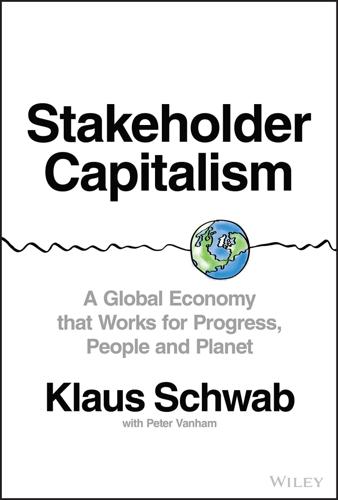
Stakeholder Capitalism: A Global Economy That Works for Progress, People and Planet
by
Klaus Schwab
and
Peter Vanham
Published 27 Jan 2021
This explosion of widespread wealth, which was accompanied by a baby boom, allowed countries to further strengthen their social security systems and education, health care and housing policies. In America, President Lyndon Johnson announced a Great Society program.41 It aimed at eliminating poverty and racial issues through initiatives such as the War on Poverty, introduced health programs such as Medicare and Medicaid, and mandated the building of many new schools and colleges, as well as the establishing of grants and a Teacher Corps. In Europe, the welfare state was introduced, with often universal free health care, free education, and state-subsidized housing.
…
See Stakeholder capitalism “21st century socialism,” 225 U UAE, 181 Uber (US), 187, 238, 241 Uganda, 70 Uggla, Ane Mærsk Mc-Kinney, 204 Ukrainian gig workers, 240, 243 Ungor, Murat, 222 United Kingdom (UK) Brexit vote (2016) in, 80 erosion of the political center in, 80 First Industrial Revolution (19th century) in the, 56, 71, 108, 116, 119, 130–134 first wave of globalization (19th century–1914), 102–105 Luddites (19th-century England), 115 polarizing labor politics in the, 122–123 stakeholder model driving economic policies (1980s) of, 14 vote for right-wing populist parties (2000, 2017–2019), 84fig wealth inequality turn of the 20th century in, 104 United Nations Climate Change Conference (COP21) [2015], 150 Earth Summit (Rio de Janeiro, 1992), 150 Environmental International Resources Panel, 49 Food and Agricultural Organization (FAO), 50 global government role of, 196 Intergovernmental Panel on Climate Change (IPCC), 51, 149 as an international community stakeholder, 178 IPBES report (2019), 51 IPCC global warming report (2018), 51 Migration Agency (IOM), 52 Paris Agreement (2015) framework by the, 150, 165, 182, 183, 189, 198 Sustainable Development Goals, 189, 206, 207, 250 Water agency, 49–50 World Meteorological Organization, 51 United States Black Lives Matter movement in the, 186 comparison of labor approach in Denmark vs., 117–120, 123 dropping voter turnover and social unrest in the, 188 erosion of the political center in, 80 First Industrial Revolution (19th century) in the, 132–134 gig workers making less in the, 238 government debt of the, 30–31 health coverage disparities in the, 43 high cost of health care in the, 227, 231, 232 history of income inequality in the, 34–36, 38–39fig, 88–89 as ill-prepared for the COVID-19 pandemic, 186 Marshall Plan to rebuild European economy by the, 6–7 9/11 terrorist attacks against, 17, 18 Pearl Harbor attack against, 17 polarizing labor politics in the, 122–123 post-war baby boom in, 8 See also California; New York City; US economy Universal basic income (UBI), 239 Universal Postal Union, 197, 198 “The Universal Purpose of a Company in the Fourth Industrial Revolution” (Davos Manifesto 2020), 191–192 University of Chicago (Chicago School), 14, 136, 140 University of Kharkiv, 22 University of Leuven, 243 University of Liverpool, 224 University of Reading, 224 Upwork (US), 237, 240 Urbanization metatrend, 159–160 Urban Radar (US), 163 US Business Roundtable, 250 US dollar currency, 31 US economic policies overly focused on GDP growth, 25 stakeholder model driving 1980s, 14 US economy economic boom (1945–1970s) of the, 8 economic development curve (1920s), 23 Federal Reserve interest rates (2009–2019), 31 See also Big Tech; United States US government bonds, 31 Utomo, William, 94–95, 96, 114 Utomo, Winston, 94–95, 96 V Value creation company aim to generate profits and, 179 environment, social, and governance (ESG) objectives of, 185, 193 Stakeholder Capitalism Metrics to measure stakeholder, 193, 214–215 stakeholder capitalism's appropriate measurement of, 185 stakeholder model beliefs on sharing and, 184–185 The Value of Everything (Mazzucato), 184 Vanderbilt, Cornelius, 132 Venezuela, 225 The Verge, 239 Vestager, Margarethe, 211 Vietnam economy ongoing through COVID crisis, 109 IT and Internet revolution role in expanding economy of, 137 predicted economic growth (2020–2021) in, 65–66 state capitalism model of, 173 tech unicorns of, 66, 67fig Volksparteien (Germany), 80, 83 W Wage “decoupling” practice, 34 Walesa, Lech, 83 Wall Street Journal “Competition is for Losers” editorial (Thiel), 208–209 on lower global GDP growth, 25 on rising global debt (2020), 28 Ward, Barbara, 11 Warner, Charles Dudley, 133 War on Poverty, 135 Warren, Elizabeth, 127, 128 Warsaw Pact, 77 Washington Post, 121, 221 Water resources microplastics pollution of, 50 UN Water agency on state of, 50 Waze app (Israel), 33 Wealth inequality consequences of increasing, 42–43 First Industrial Revolution (19th century) and, 132–134 health, social mobility, and, 41–46 as higher than income inequality, 41 the one percent and, 41–42 United Kingdom turn of the 20th century, 104 World Inequality Lab (WIL) on India and China's, 72–73fig See also Income inequality; Inequalities Wealth Project, 191 Weiszacker, Richard von, 76–77 West Berlin (West Germany), 75–77, 88, 89 West Germany Berlin Wall (1961–1989) dividing East and, 75–77, 88, 89 Marshall Plan to rebuild, 6–7 reconstruction of post-war society and, 8 reunification of East and, 17, 78 ruined post-World War II economy of, 4–5 Wirtschaftswunder (economic miracle) [1945–early 1970s], 8 Works Council Act (1952) of, 10 See also East Germany; Germany West Java entrepreneur story (2012), 93–94 WhatsApp (US), 211 Wheatley, James, 27 Windows Media Player (Microsoft), 139 Wipro [India], 68 Wired magazine, 59, 128, 149, 242 Wirtschaftswunder (German economic miracle) [1945–early 1970s], 8 Wolf, Martin, 62 Women as effective government leaders during COVID-19 pandemic, 224 increased education and labor-force participation of, 9 political issue of gender representation of, 188–189 Women's liberation trends (21st century), 9–10 Wood, Alex, 242 Works Council Act (1952) [Germany], 10 World Bank creation of the, 6 on education levels in Africa and South Asia (2018), 44 GDP measure used by, 24 on Indonesia's prudent economic management, 98 lack of representation evidenced in, 197 World Economic Forum advocating long-term perspective by companies, 250 Centre for the Fourth Industrial Revolution (San Francisco, 2017) of the, 144 CEO Climate Leaders group at the, 167 climate change solutions sought by, 162, 164–165 COVID-19 pandemic accusations against, 87 Davos Manifesto (1973), 13–14, 88, 213 Davos Manifesto (2020), 191–192, 213 European Management Forum forerunner of, 11, 15 facilitating German reunification process, 78 Global Competitiveness Index and Inclusive Development Index of, 189, 190 global membership (1980s) of the, 15 Global Risks annual report by the, 52 Global Shapers network of, 245, 246 Global Social Mobility index (2020), 43–44 on global warming (1973), 47 International Business Council of the, 193, 214, 249 Internet Agenda of the, 246 Jack Ma as “Young Global Leader,” 128 on pension savings gap, 32–33 presentation on societal unrest to, 85–86 Stakeholder Capitalism Metrics initiative, 193, 214–215, 249, 250–251 World Economic Forum Annual Meetings (Davos) Annual Meeting in New York (2002), 17–18 Benioff's comments on need to shift toward stakeholder model, 201 the first European Management Forum (1971), 11, 88 Greta Thunberg's speech (2019) at, 53, 147, 149–150, 168, 250 Marc Benioff's speech on capitalism (2020) during, 164, 211 Net-Zero Challenge invitation to participates in, 162 Peccei's keynote speech (1973) at, 13, 47, 52 as platform for German reunification process (1990), 78 viritual meeting (2020) during COVID-19 pandemic, 250 World Health Organization (WHO) proposed integrating antitrust measures into, 142 on public health care spending, 32 on unsafe air of polluted cities (2019), 72 World Inequality Lab (WIL), 72–73fig World Inequality Report (2018), 38, 138fig World Meteorological Organization, 51 World Trade Organization (WTO) Appellate Judges of the, 197 China's membership in, 18, 59, 64 as an international community stakeholder, 178 World War I ending first wave of globalization, 105 Germany's “Never Again War” rallying cry after, 4 technology as destructive power during, 134 Treat of Versailles (1919) ending, 5–6 World War II division of East and West Germany after end of, 75–76 global economic development following end of, 3, 7–11, 251 low GDP at end of the, 105 Pearl Harbor attack against US, 17 ruinous state of Germany by end of, 4 “Stunde Null” (or “Zero Hour”) [May 8, 1945] ending, 5 tanks and planes technologies during, 134 Wozniak, Steve, 126, 128 Wu, Tim, 126–127, 128, 137, 139, 140, 145 X Xi Jinping, 62, 100, 184 Y Yang, Andrew, 239 Yellow Vests (Gilets Jaunes) protests (France), 86–87, 195 Yom Kippur War, 12 Yoshida Shigeru, 8 YouGov–Bertelsmann globalization poll (2018), 97 Youth for Climate movement (2017) [France], 86 Z Zambia, 64 Zeppelin (German manufacturer), 4 Zermatt (Switzerland), 51–52 ZF (Zeppelin Foundation), 6–9, 16, 18 Zhangjiang hi-tech zone (Shanghai, China), 61 Zhongguancun neighborhood (Beijing, China), 61 ZIP codes, 3 ZTE (China), 55, 60 Zuckerberg, Mark, 128, 212 Zucman, Gabriel, 41, 127 WILEY END USER LICENSE AGREEMENT Go to www.wiley.com/go/eula to access Wiley’s ebook EULA.
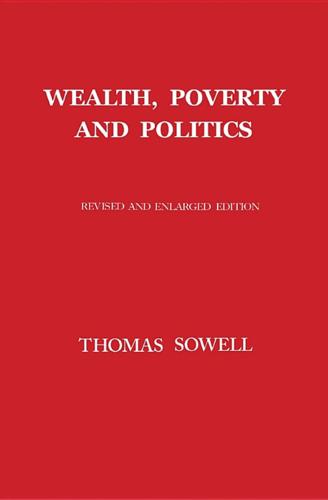
Wealth, Poverty and Politics
by
Thomas Sowell
Published 31 Aug 2015
PROGRESS AND RETROGRESSIONS Black Americans, a group often identified as beneficiaries of the welfare state in America, made considerable economic progress in the twentieth century but much, if not most, of it was prior to the massive expansion of the American welfare state, beginning with the “war on poverty” programs of the 1960s. This is just one of many possible empirical tests of the social vision behind the creation and expansion of the welfare state. Testing the Prevailing Vision Progress, for most blacks, can be measured from the time of the Emancipation Proclamation of 1863.d That progress was slow but steady.
…
As of 1940, 87 percent of black families in the United States lived below the poverty line. But this declined to 47 percent by 1960, as black education and urban job experience increased in the wake of the mass migrations of blacks out of the South. This 40 percentage point drop in the black poverty rate occurred prior to both the civil rights laws and the “war on poverty” social welfare programs of the 1960s. Over the next 20 years, from 1960 to 1980, the black poverty rate dropped an additional 18 points21— significant, but the continuation of a preexisting trend at a slower pace, rather than being a new result from new civil rights laws and welfare state policies, as so often claimed.
…
However plausible, or even inspiring, it might seem that a lagging minority needs to unite in solidarity behind political leaders representing their interests to the larger society, in order to get ahead, the historical record shows no such pattern of economic success for politics, as compared to education, job skills and intact families. Social pathology in black ghettos is often assumed to be due to poverty, discrimination or the larger society’s neglect. But the decade in which there was the greatest emphasis on government social programs to help blacks— the 1960s “war on poverty” and civil rights legislation under President Lyndon Johnson— saw the greatest number and severity of ghetto riots in history, while the 1980s Reagan administration, which opposed welfare state programs, saw very few ghetto riots. Similarly, despite the ease with which many people use the “legacy of slavery” argument to explain negative features of black communities today, there is seldom any attempt to examine the facts as to whether whatever is complained of— whether fatherless families, high crime rates or other social pathology— was in fact worse among blacks in the first hundred years after slavery or in the first generation after the triumph of the welfare state vision in the 1960s.
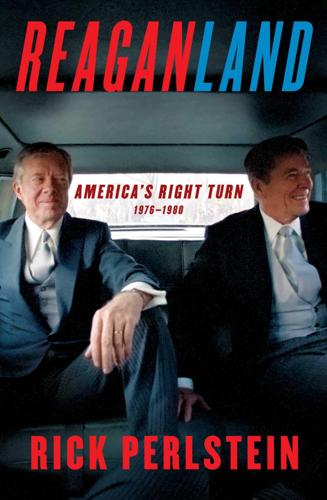
Reaganland: America's Right Turn 1976-1980
by
Rick Perlstein
Published 17 Aug 2020
The sonorous, authoritative voice of NBC anchorman David Brinkley: “The pool broadcasters in Philadelphia have lost the audio. It’s not a conspiracy against Governor Carter or President Ford… they will fix it as soon as possible.” For hadn’t American know-how always fixed everything? Hadn’t it beat Hitler, delivered the world its first mass middle class, rebuilt Europe, put a man on the moon, fought a war on poverty? It had, once upon a time. O upon a time, the voices of such authoritative gray-haired white men reassured us, soothed us, guided us through the trauma of assassination and riot and Watergate and war, explained the inexplicable to us. Not now. The sound of a phone dialing. Carter gesticulating silently onscreen.
…
In the early 1960s, he helped found the conservative youth group Young Americans for Freedom—and proved himself a shrewd enough politician to win office as student body president at liberal Harvard. In 1971 he was appointed by President Nixon to head the Office of Economic Opportunity, which administered the federal war on poverty. Phillips loaded it up with so many young conservatives that veteran OEO bureaucrats started referring to Phillips’ “YAFia.” Then, however, in 1973, Phillips was let go after the press got wind of what Nixon had actually hired him to do at OEO: dismantle it. Phillips believed Nixon had given up without a fight.
…
Experts began calling this the “American consensus.” * * * AT THE SAME TIME, HOWEVER, a separate anti-liberal backlash was taking root. It was spurred by summer after summer of race riots, and its political base was not business but middle-class homeowners, who blamed civil rights and the War on Poverty for a civilization-threatening breakdown in law and order. Business was largely on the liberal side of this issue—like the author of a 1966 article in the Harvard Business Review predicting “riots and arson and spreading slums” if “the businessman does not accept his rightful role as leader in the push for the goals of the ‘Great Society’ (or whatever tag he wants to give it).”
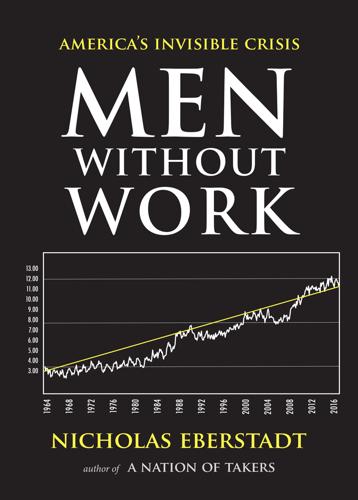
Men Without Work
by
Nicholas Eberstadt
Published 4 Sep 2016
But a key study on that earlier success concluded that macroeconomic conditions played only a relatively small role in getting women back in the labor force, with changes in incentives accomplishing most of that feat instead.1 TWO FINAL COMMENTS IN RESPONSE TO HENRY First, his observation about the role of the draft in augmenting skills and training for young men in the early postwar era, while politically incorrect, may be very much on target. Remember, though, that the “selective service” was indeed selective—and as late as the Kennedy administration, one-third of the young men tested failed either physical or cognitive requirements for service. (That finding was ammunition, so to speak, for the Johnson administration’s “war on poverty.”) Thus, the most disadvantaged were also the least likely to avail themselves of such employment-enhancing experience as military conscription could provide. And I am in violent agreement with Henry’s lament that available data can “tell us that a man is disconnected” from the labor force, but “tells us nothing about the mindset of the men who are disconnected.”

9-11
by
Noam Chomsky
Published 29 Aug 2011
Since the answers to these questions are rather clear, and are inconsistent with preferred doctrine, it is better to dismiss the questions as “superficial” and “insignificant,” and to turn to “deeper causes” that are in fact more superficial, even insofar as they are relevant. Should we call what is happening now a war? There is no precise definition of “war.” People speak of the “war on poverty,” the “drug war,” etc. What is taking shape is not a conflict among states, though it could become one. Can we talk of the clash between two civilizations? This is fashionable talk, but it makes little sense. Suppose we briefly review some familiar history. The most populous Islamic state is Indonesia, a favorite of the United States ever since Suharto took power in 1965, as army-led massacres slaughtered hundreds of thousands of people, mostly landless peasants, with the assistance of the U.S. and with an outburst of euphoria from the West that is so embarrassing in retrospect that it has been effectively wiped out of memory.
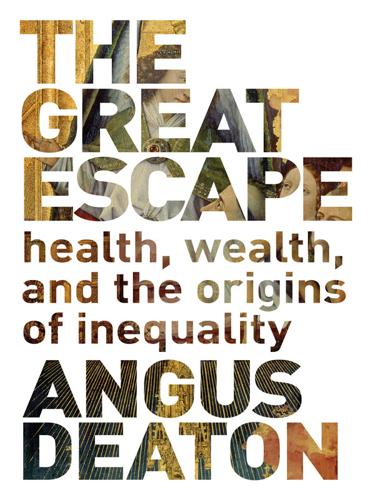
The Great Escape: Health, Wealth, and the Origins of Inequality
by
Angus Deaton
Published 15 Mar 2013
Instead, the 1963 line has been retained, adjusted only for inflation. Orshansky’s “scientific” derivation of the poverty line—based on the superficially sensible and rhetorically appealing idea of nutritional needs—was little more than a smoke screen. Economists in the Johnson administration, preparing for what was to become the War on Poverty, needed a poverty line, and they were using $3,000 because it seemed like a sensible number. Orshansky’s task was to provide something more readily defensible than a number plucked out of the air around the water cooler. Her first, and preferred, calculation was based on the Department of Agriculture’s “low-cost food plan” and came in just above $4,000.
…
That would mean that inflation is being overstated, because some of the increase in prices comes from better things, not just from dearer things. If so, the poverty line is being increased too fast, and an ever-increasing proportion of the poor are not poor at all. If we buy this argument—and there is no way of knowing by how much the poor are benefiting from unmeasured quality improvements—we might be winning the war on poverty after all.9 Working in the same direction is the failure of the official measure to incorporate taxes and transfers that are designed to benefit the poor. Doing so not only moderates upticks during recessions, as we have seen for the recent recession, but also would have resulted in a larger decline in poverty over the longer run.10 However, if you believe, as I do, that the poverty line should move up with the living standards of typical households in the population, poverty rates have increased over the past four decades, in stark contrast to the growth of the average economy.
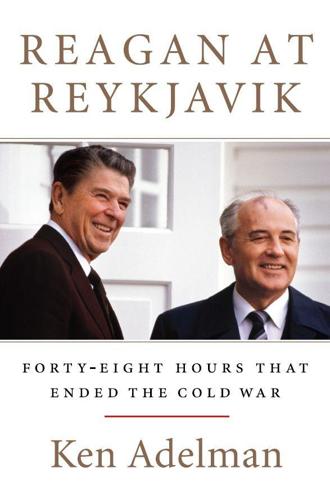
Reagan at Reykjavik: Forty-Eight Hours That Ended the Cold War
by
Ken Adelman
Published 5 May 2014
After getting a master’s in foreign service studies from Georgetown University, I had worked on legislation for a fabulous mentor, Hank Lieberman, in the Commerce Department. Then, by happenstance, in 1968 my father ran into fellow lawyer Don Lowitz on LaSalle Street in Chicago, which ended up with my landing a job in the “war on poverty” agency headed by a dashing young ex-congressman from the Thirteenth District of Illinois, Don Rumsfeld, with his even younger assistant from Wyoming, twenty-eight-year-old Dick Cheney. Two years later, my wife—a career foreign service officer with the foreign aid agency—took me along to Zaire as her “dependent husband.”
…
See Strategic Arms Limitations Talks Schabowski, Günter, 275–76 Schmemann, Serge, 32 Schorr, Daniel (NPR), 37 Schweid, Barry (AP), 37 Selleck, Tom, 339 September 11, 271, 273–74 Sestanovich, Stephen, 13 Sharansky, Natan and Avital, 125 Shevardnadze, Eduard adviser to Gorbachev, 77, 228 expectations for Reykjavik, 33–34, 36, 41 named foreign minister, 17, 24–25 negotiations on strategic defense, 150–51, 158–59, 170 as president of Georgia, 329 relationship with Shultz, 242–43 resignation as foreign minister, 284–85 at Reykjavik, 85–86, 93–95, 328–29 role in ending Cold War, 273, 313–14, 321 Washington summit, 237, 243–53 Shultz, George negotiations on strategic defense, 150–51, 158–59 reflections on Reykjavik, 4–5, 298 at Reykjavik, 12–14, 21, 85–86, 93–97, 328–29 Shevardnadze relationship, 242–43 tenure in government service, 17–19 Washington summit of 1987, 243–53 Shushkevich, Stanislav, 293–94 Simons, Tom, 99 Soderlind, Rolf, 41 Solzhenitsyn, Alexandr, 263, 264, 326, 341 Souza, Pete, 265 Soviet Union 70th anniversary celebration, 239 about collapse, 3–4, 268 beginning of secessions, 283–85 bugging of U.S. embassy, 221 Chernobyl nuclear accident, 79 disbands Communist Party, 292–93 economic and technology weaknesses, 110, 315–17, 320–21 formation of Confederation, 293 formation of Federation, 293–95 glasnost and perestroika, 228–30, 239–40, 262, 263–64, 317–18 Gorbachev on need for reform, 24–25, 28–33, 75–77, 79 invasion of Afghanistan, 60, 97, 124, 256, 258, 325 Jewish emigration, 116, 124–25, 228 manufacture of missiles, 236 Reagan goal to delegitimize, 38, 73, 77, 79, 154, 235, 319, 321, 323 Reagan’s “evil empire” speech, 64–68, 93, 145, 233, 256, 265, 338 U.S. intelligence assessment, 77, 330–31, 363n320 Yeltsin and the coup, 285–89 See also Gorbachev, Mikhail; individual states; Moscow summit of 1988 Spassky, Boris, 33 Speakes, Larry, 34, 92, 186 Spencer, Stuart, 64–65 Stalin, Joseph, 25–26, 33, 163, 228, 239–40, 245, 260, 266, 283 Stanford University, 297, 308 Steele, Jonathan, 328 Strategic Arms Limitations Talks (SALT I and II), 59–60, 116–18, 207–8, 305 Strategic Arms Reductions Talks (START I, II, and III), 60, 116, 304 Strategic Defense Initiative (SDI, “Star Wars”) announcement by Reagan, 61–64 criticisms, 175–76, 201–3, 215–16 Gorbachev reaction to, 105–8, 208–9 intelligence failures, 330–31 linkage to ABM, 148–49 Reagan commitment to, 38, 57, 109–11, 205–6, 315 Reykjavik negotiations, 86–89, 99–101, 136–43, 148–51, 198 role ending Cold War, 4 sharing with Soviets, 87, 94, 107, 110, 154 summit insights, 92–94, 108–11, 151–56, 310–12 trying to salvage summit, 168–75 Suslov, Mikhail, 31 Sveinsson, Asmundur, 82 Talbott, Strobe, 67, 215–16, 319 Tarasenko, Sergey, 71 Tchaikovsky, Pyotr Ilich, 236 “Tear down the Wall” speech, 232–35 terrorism, responding to, 311–12 Thatcher, Margaret, 38–39, 61, 93, 157, 199, 221, 318–19, 337–38, 341 “the mice,” 16 Things Fall Apart (Achebe), 216 “A Threat Mostly to Ourselves” (Nitze), 308 Time (magazine), 49, 58, 147, 177, 186–87, 215, 233, 235, 259, 304, 319 Gorbachev as “Man of the Decade,” 328 Gorbachev as “Man of the Year,” 328 Reagan as “Man of the Year,” 66–67 Tory, Peter, 32 Tower Commission, 225, 232 translation and notetaking, 14, 29, 35, 99, 106–7, 121, 140, 172, 212, 351n84, 352n89 Treaty of Björkö of 1905, R Trotsky, Leon, 326 Trudeau, Pierre, 12 Truman, Harry, 16, 26, 56, 260, 341 Trump, Donald, 250 Turmoil and Triumph: My Years as Secretary of State (Shultz), 235 Ukraine, 79, 284, 285, 292–93 United Nations Adelman at, 376 Kirkpatrick at, 20, 120, 197 Shevardnadze visit to, 33–34 Truman and, 56 urinal diplomacy, 69, 162–63 Velikhov, Evgeny, 300 Victoria (queen of England), 203–4 Vietnam War, 88, 314, 327 Vlasov, Albert, 187 Wałęsa, Lech, 268, 280, 337 Wall Street Journal, 20, 308 Walpole, Horace, 186 Walters, Barbara, 250, 337 “war on poverty,” 19 Washington Post, 2, 28, 73, 98, 166, 210, 251, 277, 289 Washington summit of 1987 Gorbachev agreement to, 73, 75 Gorbachev “walkabout,” 251–52 INF signing ceremony, 247–50 Reagan eagerness, 85, 232, 241 Reykjavik as prelude to, 8 summit insights, 261 Weinberger, Caspar, 61, 217–20, 226–27 Weinraub, Bernard, 114 White House East Room history, 246–47 INF signing ceremony, 247–49 Oval Office and Resolute desk, 203–4 Reagan departure for Iceland, 7–9 Reagan departure for Moscow, 256 Reagan final good-bye to, 270–71 Williams, Carol, 259 Williamsburg G-7 Economic Summit (1983), 11–12 Woodward, Bob, 267 “A World Free of Nuclear Weapons” (Wall Street Journal), 308 “A World Without Nuclear Weapons” (conference), 309 World Factbook (CIA), 320 World War II actions leading to, 55 Hofdi House use, 52–53 Reagan experiences in, 179 Soviet experiences, 114, 244–45 U.S. experiences, 15, 117–18, 180 U.S.

Betrayal of Trust: The Collapse of Global Public Health
by
Laurie Garrett
Published 15 Feb 2000
In 1964 President Johnson pushed passage of two other massive initiatives that would profoundly affect public health: his War on Poverty program and Medicare. LBJ’s overall goal was to create what he called the Great Society through a federal effort akin to Roosevelt’s New Deal. A key difference, however, was that while Roosevelt pushed large-scale federal spending during a time of tremendous economic deprivation in America, LBJ wanted a similar level of spending for social programs at a time when most Americans were enjoying tremendous prosperity. That was a hard sell. When Johnson declared his War on Poverty, twenty-one million people in the United States were living below the administration’s poverty line.
…
The Health Transition in post-World War II America somewhat blurred the demographic picture, as cancer and heart disease initially appeared to strike equally across social classes, perhaps even tilting a bit toward wealthier Americans. By the mid-sixties, however, most of the chronic diseases were also displaying a social gradient that brought the greatest grief to the poorest Americans. It might have been wise to combine the War on Poverty programs with Medicare and Medicaid, creating a single strategic approach to upgrading the health and well-being of Americans.256 The 1965 Medicare Act was a two-part law that placed authority for the health care program under the Social Security Administration—nor under HEW. Under Part A, hospitals were allowed to designate a third agency or nongovernmental organization to oversee their budgets and negotiate with the Social Security Administration.
…
Between 1968, when LBJ’s programs were in full swing, and 1975, when budget cuts had whittled such programs to the bone, the overall U.S. annual death rate had dropped 14 percent.323 Every health indicator had shown remarkable improvement. Cardiovascular deaths: down by 23 percent. Infant mortality: dropped 38 percent. Maternal mortality: plummeted an astounding 71 percent. That was the legacy of an aggressive war on poverty and expansion of health services for the poor. It occurred in a period that was denounced by the AMA and American Hospital Association as “regulated,” a code word meaning “very bad” or even “socialistic” in the New Right circles of rising political superstar California governor Ronald Reagan.

The Wrecking Crew: How Conservatives Rule
by
Thomas Frank
Published 5 Aug 2008
For modern purposes, the model for this style of governing was established by the remarkable Howard Phillips, who served as director of the Office of Economic Opportunity (OEO) for five crazy months in 1973. As we have seen, this man Phillips is renowned for the purity of his right-wing views. The OEO, on the other hand, was set up to administer Lyndon Johnson’s very liberal “War on Poverty”; it included a legal aid program that made lawyers available to people who could not afford them and which had thus led to thousands of lawsuits against landlords, banks, employers, and so on. Johnson had appointed Sargent Shriver to run the OEO. Nixon chose Howard Phillips. What happened next is the stuff of right-wing legend.
…
See Agriculture, Department of utilities Vanderbilt family Van Scoyoc Associates Vienna, Virginia Vietnam War Viguerie, Richard Vioxx scandal Virginia. See also Loudoun County Statute for Religious Freedom suburbs Virgin Islands “voluntary compliance” wages. See also minimum wage “pay gap” Walker, Robert S. Waller, J. Michael Wallop, Malcolm Wall Street Journal Wal-Mart War on Poverty Warsaw Pact Washington, D.C. conservative railing vs. conservative rule and boom of New Deal and Washington Post Washington Times Watergate scandal Watt, James Wealth and Poverty (Gilder) wealthy We Are the Government (Elting) Weber, Vin welfare policy welfare state.
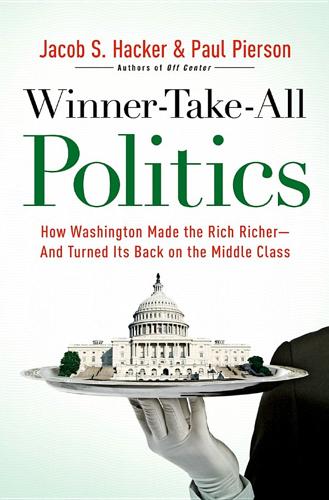
Winner-Take-All Politics: How Washington Made the Rich Richer-And Turned Its Back on the Middle Class
by
Paul Pierson
and
Jacob S. Hacker
Published 14 Sep 2010
Over more than two decades, both the geographic and organizational bases of the party shifted in ways that reinforced its commitment to an extreme economic platform. Eisenhower, Nixon, and, more ambivalently, even Reagan had felt obliged to accept the New Deal while picking battles with Democrats elsewhere. Now many Republicans revealed a thinly veiled desire to do more than combat LBJ’s War on Poverty. Their ambitions included repeal of huge swaths of not only the New Deal but the Progressive Era: no Social Security, no effective minimum wage, no progressive taxation, no support for employer-provided health care, almost no financial regulation. They sought, in short, to reestablish the policies of the Gilded Age to mirror the emerging Gilded Age economy.
…
Lee, Jr., 64 Securities and Exchange Commission (SEC), 197, 219, 228, 246–47 Senate, U.S., 53, 58, 65, 79, 84–86, 98, 99, 109, 110–12, 121–32, 134, 159–60, 165–67, 172–73, 183–84, 196, 213, 220, 227, 229, 232, 237–44, 245, 258, 260–61, 265, 267–71, 278–87, 294–98, 303, 305–6, 339n Banking Committee of, 197, 226 Filibusters in, 53, 58, 85, 99, 109, 130–31, 213, 237–44, 245, 268, 280, 285, 287, 295, 303, 339n Finance Committee of, 125, 216, 238–39, 260, 267, 273–74 Human Resources Committee of, 131 Seventeenth Amendment, 294 Shapiro, Ian, 218 shareholders, 57, 63, 65, 120–21, 219, 221, 229, 293 Shelby, Richard, 282 Shinn, James, 63 Sierra Club, 144–45 Silicon Valley, 240, 247 Simon, William, 123, 135 Simons, James, 51 Sinclair, Barbara, 242, 243–44, 255 Sixteenth Amendment, 201, 266 skill-biased technological change (SBTC), 34–40, 41 skills, workplace, 4, 12–13, 34–40, 41, 56, 70, 289 Skocpol, Theda, 143 Smith, Adam, 70–71, 82, 87 Smith, Al, 222, 223 Smith, Mark, 234 Snowe, Olympia, 263, 265, 267, 268, 280 social conservatives, 203–4, 211, 234–35 social investments, 212–13, 224, 231 Social Security, 20, 96–97, 98, 139, 140, 144, 151, 165, 182, 187–88, 189, 200, 201, 302, 312n Southern realignment, 58, 88, 95–96, 138, 180, 186, 190–91, 196–97, 200–201, 210–11, 234–35, 255, 265, 297 Soviet Union, 109, 164 special interests, 53–58, 83–84, 101, 104, 105, 106–7, 113–14, 152, 167, 169, 184, 238, 279–82, 306 Specter, Arlen, 209, 258, 263, 267, 280 speculation, 2, 68–69, 88, 197, 248–49, 253 Spirit of the Laws, The (Montesquieu), 75 Squandering of America, The (Kuttner), 68 Steed, Michael, 176 Stein, Herbert, 33 Steinbeck, John, 108, 286 Stevens, Ted, 131 Stockman, David, 134 stock market, 15–16, 17, 27, 29, 46, 64, 69–70, 87–88 stock market crash (1929), 15–16, 69–70, 87–88 stock options, 2, 15–16, 61–62, 63, 64, 69–70, 87–88, 198, 246–47 Storming the Gates (Balz and Brownstein), 192 subprime loans, 2, 197–98, 301 Summers, Lawrence, 249, 261 “sunset” provisions, 215 Supplemental Security Income (SSI), 97 supply-side economics, 49, 187, 191, 208, 217, 233, 267 Supreme Court, U.S., 80, 81, 88, 89, 109, 242, 293 swaps, equity, 198, 249 Sweeney, John, 276 Switzerland, 38, 63, 198 Taft-Hartley Act (1947), 128, 129 taxes: audits of, 50 brackets for, 133, 187, 216 capital gains, 14, 16, 18, 39, 46, 50–51, 99–100, 133–34, 151, 214, 228–30, 312n code for, 14, 49–50, 55, 107, 132, 134, 228–30 corporate, 47, 49, 50, 64, 106–7, 124–25, 132–34, 177, 179–80, 187, 312n credits, 50, 52, 71, 155 cuts in, 5, 20, 34, 49, 50, 53, 54, 109, 124, 133, 134, 151, 157, 168, 177, 179, 183, 184, 187–88, 191–93, 196–97, 199, 204, 205, 207–15, 233, 234, 236, 238–41, 244–46, 262, 266, 267, 280, 284, 301 deductions, 133, 214, 216 deferment of, 2, 64 on dividends, 151, 214, 312n on earnings, 49, 50, 52, 71 enforcement for, 50, 187 on equity, 228–30 estate, 47, 214, 218, 239, 240, 245–46 evasion of, 254 exemptions from, 77, 106–7, 117, 119, 134, 155, 202–3 federal, 14, 47–48 flat, 209 income, 3, 14, 17, 20–24, 42–43, 45, 49, 50, 52, 54–55, 70, 71, 77, 134, 194, 210–18, 266, 306, 311n–12n, 317n increases in, 2, 96, 99–100, 182, 184, 187–88, 191–93, 208, 213, 217–18, 241 on interest, 216, 228–30 legislation on, 49–50, 52, 71, 106–7, 134, 179–80, 208, 215–18 loopholes for, 50–51, 107, 134, 180, 188, 228–30 for lower class, 50, 77, 214 for middle class, 43, 134, 212–13, 214, 215–18 minimum, 49–50, 215–18 payroll, 47, 99–100, 214, 312n progressive, 47, 48–49, 98, 133, 200, 214, 301 property, 77–79 rate of, 47–48, 48, 50–51, 88, 98, 106–7, 134, 151, 187, 228–29, 311n–12n, 319n reform of, 44, 89, 99, 105–7, 132–34, 179–80, 187–88, 208, 212–14, 218, 229 on religious groups, 202–3 returns filed for, 20–24, 45 revenue from, 188, 203, 208, 212, 213, 245–46 shelters for, 50–51 for upper class, 3, 5, 14, 20–24, 34, 47–48, 133, 134, 157, 187, 212–13, 215–17, 243–46, 266, 290 wealth redistributed by, 43, 49–50, 54–55, 56, 77, 100, 101 Tax Reform Act (1986), 106–7, 208 Tea Party movement, 283–85, 294 technology, 4, 5, 34–40, 41, 45, 46, 51, 68, 182, 213, 219, 290, 303–4 television, 103, 106, 121, 140, 156–57, 171, 251, 303–4 Temin, Peter, 58 think tanks, 123–24, 208–9 Thompson, Michael J., 75 Thompson, Robert T., 130 Thune, John, 283 Thurber, James, 274 Tocqueville, Alexis de, 75, 77, 79, 150 Toomey, Pat, 209 transparency, 63–64, 67, 246–47[jH1] transportation, 55, 74, 79, 100 Travelers, 249–50 Treasury Department, U.S., 123, 125, 195, 196, 198, 214, 249–50, 261 Troubled Asset Relief Program (TARP), 265, 274 Truman, Harry S., 165 UBS, 198, 254 unemployment insurance, 86, 89, 189 unemployment rate, 2, 27, 63, 86, 88, 125, 165, 235, 253, 281, 282, 287, 294–95 Unequal Democracy (Bartels), 151–52, 167 unions, labor: business opposition to, 55, 121–24, 127–32, 135, 219, 303 collective bargaining by, 98 decline of, 5, 56–61, 66, 127–32, 139–43, 164, 235, 248, 278, 303 Democrats supported by, 58, 89, 99, 121–24, 126, 129–32, 141, 164, 172, 178, 248, 278–79 financial resources of, 143 laws for, 44, 58, 78, 80, 125–32, 134, 189, 296 membership of, 57–58, 61, 140, 141–42, 248, 278–79, 318n organization by, 127–28, 204 PACs organized by, 121–22, 128, 172 picketing by, 128–29 political influence of, 89, 99, 121–24, 126, 127–32, 139–43, 144, 145, 146, 154, 204, 218, 275, 278–79, 293 in public sector, 56, 142, 278 Republican opposition to, 58–59, 129–32, 186–87 strikes by, 58–59, 60, 186–87, 191 upper class: income levels of, 3, 12–13, 16–18, 18, 20–25, 32, 39–40, 39, 46, 153–55, 194, 290, 311n political influence of, 72, 78–79, 112–14, 147–51, 157–58 Republicans supported by, 110–11, 147–49 taxation of, 3, 5, 14, 20–24, 34, 47–48, 133, 134, 157, 187, 212–13, 215–17, 243–46, 266, 290 wealth accumulated by, 16–17, 24–25, 31, 32, 43, 49–50, 54–55, 56, 74–77, 100, 101, 225–26, 256, 302–3, 306 upward mobility, 14n, 28–29, 152–53 Urofsky, Melvin, 81 Vanguard Group, 229 Verba, Sidney, 144 vetoes, presidential, 84, 85, 98–99, 126, 128, 213, 241, 298 Vietnam War, 95, 101, 216 Viguerie, Richard, 202 Vogel, David, 116 Volcker, Paul, 46, 256 voters: information for, 108–10, 154–58, 214–15, 236–37, 277, 295 median-voter model of, 77–78 misconceptions of, 151–55, 236–37 mobilization of, 107–10, 138–39, 140, 160, 248, 282 participation by, 77–78, 99, 107, 108–10, 113–14, 137–60, 167–68, 174–75, 252, 268, 287 registration of, 99, 140, 142, 203 swing, 109, 159 targeting of, 147–48, 174–75 “unmoored,” 139, 149–51 Wagner, Robert, 306 Wagner Act (1935), 129, 140 Walker, Charls, 120, 124–26, 133–34, 135 Wall Street, 1, 2, 6, 51, 66–68, 70, 104, 194, 195, 197, 209, 221–30, 232, 247–50, 256, 261, 274, 282, 290–91; see also financial services industry Wall Street Journal, 47, 59, 77, 275 Wal-Mart, 32, 64, 104, 240, 318n Walton family, 218, 240 War on Poverty, 200 Washington, George, 269–70 Watergate scandal, 98, 117 Waxman, Henry, 260 Wealth of Nations, The (Smith), 82 Weber, Vin, 190 Weill, Sanford, 71, 249–50 welfare, 52, 97, 107, 181, 182, 193 What a Party! (McAuliffe), 223–24 What’s the Matter with Kansas? (Frank), 204 White, Maureen, 225 White, William Allen, 79 Williams, Edward Bennett, 125 Williams, Harrison, 131 Wilson, Woodrow, 86, 89 winner-take-all politics: conservatism and, 5, 7, 41–42, 43, 54, 77, 115, 189, 204 Democratic vs.

Coming Apart: The State of White America, 1960-2010
by
Charles Murray
Published 1 Jan 2012
The precise shape of the legislation and regulatory regime to implement the revolution were probably different under Johnson than they would have been under Kennedy, but momentum for major change in 1963 was already too great to stop. Something resembling the War on Poverty would probably have been proposed in 1964, no matter what. Michael Harrington’s The Other America had appeared in the spring of 1962 proclaiming that 40 to 50 million Americans were living in poverty, and that their poverty was structural—it would not be cured by economic growth. Kennedy had read the book, or at least some laudatory reviews of it, and ordered the staff work that would later be used by Johnson in formulating his War on Poverty. How many programs Kennedy could have actually passed is another question, but Harrington’s thesis was already being taken up by the liberal wing of the Democratic Party and would have become part of the policy debate even without the assassination.
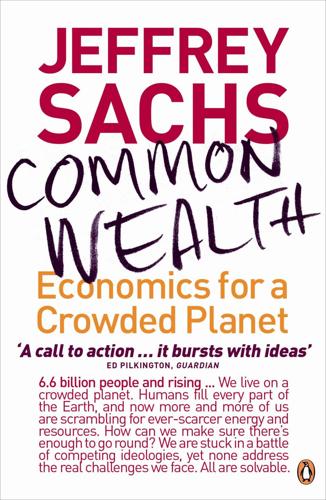
Common Wealth: Economics for a Crowded Planet
by
Jeffrey Sachs
Published 1 Jan 2008
Another recent and powerful book is Jacob Hacker’s The Great Risk Shift, which describes how the United States not only lacks an adequate social insurance system today but has also substantially dismantled the limited system that was in place during the past forty years (with the peak years of social insurance identified as the mid-1960s, during Lyndon Johnson’s War on Poverty). Hacker demonstrates the great rise in risk facing the American middle class as well as the poor and shows the remarkably high proportion of the middle class in the United States who are vulnerable to spells of poverty. He describes vividly and persuasively how a great right-wing attack on social insurance has systematically reduced the scope of the social-welfare system in health care, job protection, child support, housing support, and retirement security.
…
Figure 12.5: Views of American Influence Source: BBC-PIPA GlobeScan Poll (2007) The most basic norm of cooperation is reciprocity: I will assist you if you will assist me. But the U.S. attitude has been different: “You are either with us or against us,” as President Bush declared, with no recognition of the interests of the other country. The United States has demanded allegiance in the war on terror, without reciprocal support for the war on poverty, disease, or climate change. The UN has been attacked relentlessly by the American right wing as a threat to American sovereignty, as if American objectives could be accomplished unilaterally. This whole approach has by now imploded. PICKING UP THE PIECES The United States must take six steps to transform its security policy into a workable framework for the twenty-first century: Embrace multilateralism and international law Create a Department of International Sustainable Development Shift financing from the military to an international sustainable development budget Address demography and the environment Reinvigorate the framework for nuclear nonproliferation Understand the Middle East and respond appropriately Embrace Multilateralism The neoconservative mistake, at the core, is the misreading of U.S. power.

Geek Heresy: Rescuing Social Change From the Cult of Technology
by
Kentaro Toyama
Published 25 May 2015
Toms sells 50% stake to Bain Capital to fund sales growth. Bloomberg, Aug. 20, 2014, www.bloomberg.com/news/2014-08-20/toms-sells-50-stake-to-bain-capital.html. Sachs, Jeffrey. (2005). The End of Poverty: How We Can Make It Happen in Our Lifetime. Penguin. ———. (2008). The digital war on poverty. Project Syndicate, Aug. 20, 2008, www.project-syndicate.org/commentary/the-digital-war-on-poverty. Sachs, Jeffrey D., and Andrew M. Warner. (1999). The big rush, natural resource booms and growth. Journal of Development Economics 59(1):43–76, www.sciencedirect.com/science/article/B6VBV-3WMK4TP-3/2/7e2c0030bf45b0f9a0d8cd5b8cbec71e. Saez, Emmanuel. (2013).

World Cities and Nation States
by
Greg Clark
and
Tim Moonen
Published 19 Dec 2016
In the late 1940s, the federal tier began to direct money to cities in a targeted manner, with money flowing directly from Washington to New York City and others. The City was a major proponent of the new public housing system and succeeded in gaining almost a third of national grants between 1949 and 1964. Under the Johnson administration, New York proved to be a guinea pig for federal War on Poverty projects to tackle crime and cohesion by allowing communities to administer funds (for example, Mobilization for Youth and the Community Action Program). Later, funds from the Urban Development Action Grant passed during the Carter presidency were used to leverage private invest ment to stimulate urban renewal in areas of Lower Manhattan and Brooklyn (Berg, 2007).
…
Published 2017 by John Wiley & Sons, Ltd. 278 Index Egypt, 19 Europe, 15, 19, 20, 36, 46, 47, 52, 55, 127, 164, 234 European Investment Bank, 46 European Union, 15, 43, 220, 224, 227 Federal systems, 9–10, 13, 16, 30, 62, 95, 210, 237, 239 Federation of Canadian Municipalities, 143–144, 147, 237 Fiscal redistribution, 90, 225, 229 Forum for Consultations, 88, 93, 237 France, 8, 10, 20, 21, 55, 57, 58, 60–63, 66, 67, 211, 216, 222, 229, 231, 232, 236 performance of second cities, 231 Frankfurt, 7, 46 Friedmann, John, 23 Fukuyama, Francis, 23 Gatwick Airport, 50 Geneva, 7 Germany, 20, 230 Giuliani, Rudy, 113 Global cities, see World Cities Globalisation, 5–9, 18, 19, 25, 28–30, 36, 43, 75, 85, 100, 179, 181, 203, 216, 221, 224, 227, 231, 237, 239 Greater Manchester, 44, 52, 233, 236 Guangzhou, 21, 155, 157, 159, 180, 184, 230, 231 Haddad, Fernando, 126 Hamburg, 11, 206 Hanseatic League, 20 Heathrow Airport, 50 High Speed 3 (HS3), 46, 234 Holland, 21 Hollande, Francois, 58, 60 Hong Kong, 7, 9, 11–14, 17, 24, 25, 29, 85, 91, 149–162, 184, 186, 190, 199, 204, 206, 208, 210, 211, 213–215, 220–222, 226, 227, 233, 234, 239 advocacy, 221 Chief Executive, 161–162 Closer Economic Partnership Arrangement (CEPA), 155 Consultative Committee on Economic and Trade co-operation, 161 density, 13, 157 economic sector output, 25 economic transformation, 154–155 empowerment and centralisation, 211 Financial Services Development Council, 161 future political arrangements, 159 government system, 9, 208 growth and performance data, 152 national tradition in globalisation, 29 in One Belt, One Road initiative, 158 one country, two systems, 152 Pearl River Delta (PRD), 154, 156, 157, 159 population and visitor growth, 204 regional governance, 213 relationship with Beijing, 154–156 size, 12 India, 10, 16, 30, 98–108, 134, 166, 210, 231, 234, 236 Jawaharlal Nehru National Urban Renewal Mission (JNNURM), 103–104 Make in India Week, 103 performance of second cities, 231 Indus Valley, 19 Inter‐governmental conflict, 13, 235 Istanbul, 21, 50, 227 Italy, 20 Japan, 10, 71, 82–94 Meiji era, 83 National Planning Act, 85 performance of second cities, 231 Jinping, Xi, 185 Johannesburg, 8 Johnson, Boris, 41, 42, 92 Khan, Sadiq, 49, 51 King James I, 38 Korea, 69–80, 183, 192, 210, 212, 216, 228, 229, 231, 232, 233, 235 performance of second cities, 16, 231 Lahore, 20 Lastman, Mel, 210 Latin America, 4, 21, 123, 128, 133, 134, 238 Leiden, 21 Lisbon, 21 Lister, Sir Edward, 48 Livingstone, Ken, 41, 210 London, 5, 6, 9, 11–15, 21–27, 29, 30, 33–53, 59, 63, 67, 69, 92, 93, 108, 123, 134, 145, 154, 155, 204–208, 210–216, 220–222, 226–229, 231, 233, 234, 236, 238 Abercrombie Plan, 39 advocacy, 221 air capacity, 50 ‘Big Bang,’ 40 boroughs, 42, 45, 48, 236 Brexit, 36, 42, 46–48, 52, 220 business leadership, 93 Canary Wharf, 39 Channel Tunnel Rail Link, 40 city leadership, 220 Index City of London, 38, 40, 42 city‐state, 27 collaboration with other cities, 236 Crossrail, 1, 2, 37, 51, 205, 216, 221 Davies Commission, 50 de‐industrialisation, 39 density, 13 diversity, 227 Docklands regeneration, 40, 216 economic sector output, 25 empowerment and centralisation, 211 escalator region, 226 fiscal devolution, 48–49, 69, 145, 212, 216 fiscal outflows, 215 Government Office for London, 22, 36, 40 government system, 9, 208 Greater London Authority (GLA), 40, 41, 50, 209, 210 Greater London Council (GLC), 26, 39, 40 Greater South East, 36, 39, 50, 52, 213, 214 green belt, 39, 52 growth and performance data, 36 High Speed 2 (HS2), 46, 234 Home Counties, 39 housing, 49–50, 206 Jubilee Line, 37, 40 London Assembly, 37 London County Council, 39 London Development Agency, 41 London Docklands Development Corporation, 39 London Enterprise Panel (LEP), 42, 51 London Finance Commission, 48–49, 216 London First, 40, 108, 134, 221, 222 London Land Commission, 50 Mayor, 42, 51, 221, 236 mayoral system, 36, 210, 233 Metropolitan Board of Works, 39 Millennium projects, 37, 40 national tradition in globalisation, 29, 30 performance of second cities, 231 population and visitor growth, 204 regional governance, 50–51, 213 size, 12, 211 South Bank, 40 system of cities, 13, 229–230 Transport for London (TfL), 41, 51 2012 Olympics, 37, 215, 218 world city literature, 23, 24, 27 Los Angeles, 7, 23, 195, 231 Luzhkov, Yuri, 166, 210 Lyon, 21, 61, 231, 232 Madrid, 7, 13 Masuzoe, Yoichi, 92–93 McLoughin, Patrick, 51 279 Mediterranean, 19, 20 Melbourne, 8 Mercantilism, 21 Merv, 20 Mesopotamia, 19 Metropolitan areas, 7, 53, 61, 76, 104, 106, 108, 115, 133, 135, 234, 236 Metropolitan government, 9, 15, 16, 36, 52, 56, 67, 72, 123, 208, 212 Milan, 13, 227 Modi, Narendra, 103 Montreal, 8, 14, 138, 139, 143, 231 Moscow, 9, 11, 13, 14, 17, 18, 24, 25, 29, 30, 163–176, 204, 205, 208, 210, 212, 215, 216, 220, 221, 226, 229, 236, 237, 239 Central Federal District, 175, 237 city and federal government relationship, 165–169 density, 13, 172 economic sector output, 25 empowerment and centralisation, 211 financial services, 168 geopolitical tensions, 168 government system, 9, 208 growth and performance data, 164 higher education, 166 mayoral system, 210 Moscow River, 172 Moscow Urban Forum (MUF), 175, 237 national tradition in globalisation, 29, 30 New Moscow, 167, 173 oblast, 166 1980 Olympic Games, 166 patterns of development, 164 population and visitor growth, 204 Rail and road investments, 172 regional governance, 213 Russian spatial hierarchy, 170 size, 12 Skolkovo innovation district, 165, 172 Soviet model, 165–167 tax revenue, 164, 167 transition after 1991, 166–169 transport, 205 2018 football World Cup, 165, 174 Mughal Empire, 20 Mumbai, 14, 16, 30, 97–109, 123, 206, 207, 210, 212, 217, 226, 227 advocacy, 221 Bollywood, 98 Bombay First, 103, 106, 108 Delhi Mumbai Industrial Corridor (DMIC), 106 density, 13, 101 economic sector output, 25 empowerment and centralisation, 211 280 Index Mumbai (cont’d) fiscal imbalances, 102 fragmented governance, 105–106 government system, 9, 208 Greater Mumbai, 98 Greater Mumbai Development Plan, 102–103 growth and performance data, 98 High Powered Expert Committee, 101 intergovernmental conflict, 101 investment capacity, 106 Maharashtra state government, 98, 100–102 Mumbai Metropolitan Regional Development Authority (MMRDA), 99, 214 Municipal Corporation of Greater Mumbai (MCGM), 99, 100 national tradition in globalisation, 29, 30 Navi Mumbai, 107 constitutional amendment, 100 population and visitor growth, 204 regional governance, 213 relationship with higher tiers of government, 99–101 size, 12, 14 Smart City Mission, 103, 105 Transit Oriented Development, 104 weak growth management, 98, 100 Munich, 7 crime, 113 density, 13 economic sector output, 25 empowerment and centralisation, 211 fiscal crisis, 113 government system, 9, 208 growth and performance data, 111 housing, 118 Housing Authority (NYCHA), 114 Hurricane Sandy, 114, 119 immigration, 116 Metropolitan Transportation Authority (MTA), 113 national tradition in globalisation, 29, 30 New York State, 111, 115 9/11, 112, 114 performance of second cities, 231 population and visitor growth, 204 regional governance, 213 Regional Plan Association (RPA), 120 size, 12 transport infrastructure, 117 tri-state area, 111, 119–120 Urban Development Action Grant, 113 New Zealand, 10 North America, 4, 17, 19, 107, 137, 146, 227 Northern Powerhouse, see North of England North of England, 21, 229 North East, 236 Northern Powerhouse, 45, 228, 234 National Conference of Cities (ConCidades), 128, 134, 237 National frameworks, 29–30, 207, 231–237 National governments, 4–6, 8, 10, 11, 22, 25–32, 46–51, 57–58, 62–64, 70, 72–74, 76–79, 86–92, 99–100, 102–107, 116–119, 130–134, 143–147, 167, 168, 171–175, 183–187, 204, 220–224, 227–229, 231–239 National urban policy, 7, 67, 103, 112, 128, 157, 165, 171, 233, 237 Nation states, 3–4, 6–8, 13, 14, 20–32, 38, 48, 196, 204, 210–212, 220, 225, 229, 231, 236 age of, 3, 6 century of, 6, 239 Netherlands, see Holland New York City, 5, 7, 10, 14, 16, 24, 26, 27, 30, 63, 67, 92, 93, 110–121, 123, 137, 155, 206, 210, 212, 214, 215, 220, 222, 227, 229, 239 advocacy, 221 airport system, 117–118 Bloomberg, Michael, 114, 119 city and nation state relationship, 113–115 Ohmae, Kenichi, 23 One country, two systems, 11, 52, 152, 155, 210 Organisation for Economic Co-operation and Development (OECD), 22, 26, 30, 74, 75 Osborne, George, 45, 222, 236 Ottoman Empire, 20 Paris, 13, 15, 22, 23, 25, 27, 32, 46, 50, 54–67, 92, 205–207, 211, 212, 214–218, 222, 232, 238 advocacy, 221 APUR (Paris Urban Planning Agency), 67 Chirac, Jaques, 57 density, 13 division of responsibilities, 60 economic sector output, 25 empowerment and centralisation, 211 fragmentation, 56, 62 government system, 9, 208 Grand Paris Express, 56, 59, 64–66 growth and performance data, 204 Ile de France (Regional Council), 56–58, 60, 64 Law for Solidarity and Urban Renewal, 59 Index Maptam law, 61, 66 mayoral system, 210 Metropole du Grand Paris, 56, 59–60, 62 Mobilisation Plan for Development and Housing, 63 national tradition in globalisation, 29 NOTRe bill, 64 Paris‐Saclay, 56, 59 population and visitor growth, 204 regional governance, 213 relationship with national government, 57–60 size, 12 state-region contracts, 63 territorial development contracts, 59, 63, 66 Pearl River Delta, 7, 11, 12, 17, 152, 157, 159, 161, 211, 213 Persia, 20 Provincial governments, see State governments Putin, Vladimir, 167 Rayy, 20 Regional policies, 22, 28 Republic of Ireland, 10 Rio de Janeiro, 6, 123, 129, 130, 231 Russia, 8, 17, 18, 21, 30, 31, 164–172, 174–176, 210, 212–213, 229, 236–237 Rust Belt, 21 Samarkand, 20 San Francisco, 7, 231 São Paulo, 13, 14, 17, 30, 122–135, 206, 207, 212, 215–217, 220, 226, 229, 231, 235 advocacy, 221 business climate, 132–133 density, 13, 124, 133 economic sector output, 25 empowerment and centralisation, 211 fiscal constraints, 130–132 fiscal outflows, 215 government system, 9, 209 growth and performance data, 123 housing, 133 Minha Casa Minha Vida, 126 national tradition in globalisation, 29, 30 performance of second cities, 231 Plano de Aceleracao de Crescimiento, 129 population and visitor growth, 204 regional governance, 213 relationship with its nation state, 125–127 revenue sources, 129–130 São Paulo 2040, 126–127 São Paulo State, 123, 125 size, 12 Urban Mobility Pact, 126 281 Sassen, Saskia, 24 Seoul, 6, 9, 13, 15, 24, 27, 68–80, 85, 210, 215, 218, 227, 231, 235, 238 advocacy, 221 capital region, 69 Cheonggyechoen River regeneration, 72, 73 de-concentration, 68, 71, 75, 76, 80 density, 13 economic sector output, 25 empowerment and centralisation, 211 fiscal devolution, 77–78 fiscal outflows, 215 government system, 9, 209 growth and performance data, 69 jaebol, 71, 72, 76 mayoral system, 210 metropolitan government, 73, 78 national tradition in globalisation, 29 1988 Summer Olympics, 72 population and visitor growth, 204 regional governance, 213 relationship with central government, 70–74 segyehwa, 72 self‐government, 72 Seoul Republic, 71 size, 12 Shanghai, 7, 11, 14, 18, 27, 153, 154, 157, 159, 160, 177–188, 207, 216, 217, 220, 226, 227, 230, 233, 239 advocacy, 221 bond issuance programme, 184 de-centralisation, 181 density, 13, 184 economic sector output, 25 empowerment and centralisation, 211 free trade zones, 182, 186 government system, 9, 209 growth and performance data, 178 hukou, 184–185 internationalisation, 181–182 land leasing, 183 national tradition in globalisation, 29 performance of second cities, 231 population and visitor growth, 204 Pudong New Area, 181 region, 7 regional governance, 213 relationship with central government, 179–183 revenues, 187 size, 12 state owned enterprises, 180 treaty port, 180 2010 World Expo, 182, 218 Yangtze River Delta (YRD), 178, 181, 184 282 Index Sheffield, 43, 45, 52, 231, 236 Silk Road, 20, 158 Singapore, 11, 18, 30, 85, 91, 189–200, 206, 207, 215, 219 advocacy, 221 Civil Service, 196 Concept Plan, 192 density, 13, 198, 200 Economic Development Board (EDB), 191, 194 economic development model, 198 economic sector output, 25 empowerment and centralisation, 211 governance history, 191–193 government linked companies, 194–195 government system, 9, 209 growth and performance data, 191 Housing Development Board (HDB), 191 independence, 191–192 internationalisation, 191–192 land management, 195 Ministry of National Development (MND), 195–196 National Trade Unions Congress (NTUC), 193 national tradition in globalisation, 29 National Wages Council, 193 People’s Action Party (PAP), 191, 195–196 performance of second cities, 231 population and visitor growth, 204 regional governance, 213 self‐rule, 191 size, 12 water management, 195 Smith, Adam, 21 Sobyanin, Sergei, 167 Soon, Cho, 210 South Africa, 8, 134 Sovereignty, 15, 16, 19, 20, 26, 152 Soviet Union, 23, 166 Special cities, 9, 17, 239 State governments, 7, 10, 100–103, 105, 111, 114, 124, 127, 216, 217, 234 St Petersburg, 21, 164, 168, 170, 175, 236 Sun Yat‐Sen, 154 Switzerland, 7, 20 Sydney, 8, 25 Systems of Cities, 4, 7, 13–14, 28 Taylor, Peter, 21 Territorial development, 8, 22, 73 30 Years’ War, 20 Tokyo, 5, 6, 11, 16, 23–25, 27, 74, 77, 81–94, 207, 210, 215, 220, 226, 227, 235, 238 advocacy, 221 aging population, 92 business climate, 91–92 de‐centralisation, 84, 85 de‐concentration, 84, 88 density, 13 devolution, 89 economic sector output, 25 empowerment and centralisation, 211 fiscal redistribution, 90 government system, 9, 209 growth and performance data, 82 industrialisation, 84–85 metropolitan government, 82, 84, 87, 89, 93 National Strategic Special Zones, 86, 90 national tradition in globalisation, 29 population and visitor growth, 204 regional governance, 213 relationship with central government, 83–88 size, 12 Tokyo Metropolitan Government, 84–85, 88 Tokyo Problem, 88 2020 Olympics, 86, 87, 91 2002 Urban Regeneration Law, 85–86 Urban Renaissance HQ, 87 Toronto, 8, 13, 14, 17, 23, 25, 136–149, 207, 210, 212, 215, 216, 218–220, 222, 227, 231, 234 advocacy, 221 density, 13 economic sector output, 25 empowerment and centralisation, 211 fiscal vulnerability, 145 government system, 9, 209 Greater Toronto Area, 137 Greater Toronto Civic Action Alliance, 147 growth and performance data, 137 immigration, 141, 146 infrastructure investment, 144–146 mayoral system, 210 Metrolinx, 140 national tradition in globalisation, 29 1998 City of Toronto Act, 139, 140 Ontario, 137 population and visitor growth, 204 regional governance, 213 relationship with the nation state, 138–143 size, 12 Smart Track, 140 Toronto Board of Trade, 147–148 universities, 137, 141 US–Canada Auto Pact, 139 Waterfront Toronto, 141–142 Trade, 5–7, 20–22, 99, 128, 146, 152, 161, 186, 205, 225–226 Index Travers, Tony, 49 Treaty of Westphalia, 20 Trudeau, Justin, 143 Turkmenistan, 20 UKIP, 46 Unitary systems, 9–10, 15, 21, 238 United Kingdom, 10, 21, 24, 36, 37, 154, 210, 231, 238 United Nations, 21 United States, 7, 10, 21, 24, 26, 71, 112, 231, 235 Advisory Commission on Intergovernmental Relations (ACIR), 115 US federal reserve, 24 War on Poverty, 113 Uzbekistan, 20 Wallerstein, Immanuel, 24 Washington, 27, 113, 114, 116–117, 119–120, 231 The West, 27, 69 Western liberal democracy, 23 West Midlands, 52, 228, 236 Won-sun, Bak, 74 World Bank, 30–31, 157, 174, 196 World cities advantages and disadvantages, 225–231 age of, 5–6, 203–223 collaboration between world cities and other cities, 236–237 definition, 3–4 in the future, 237–239 literature, 22–24, 27–28 typology, 29–31 Xiaoping, Deng, 180 Valls, Manuel, 66 Vancouver, 8, 143, 231 Zurich, 7, 227 283
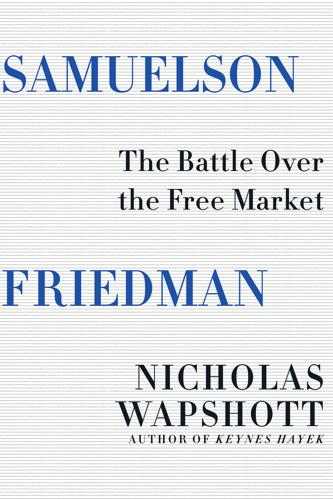
Samuelson Friedman: The Battle Over the Free Market
by
Nicholas Wapshott
Published 2 Aug 2021
Kennedy, from 1961 until Kennedy’s assassination in November 1963, and then as the thirty-sixth president of the United States, from 1963 to 1969. 21.John Kenneth Galbraith (October 15, 1908–April 29, 2006). 22.The Affluent Society (1958) described how the U.S. private sector had become more prosperous since World War II but the public sector lacked adequate social and physical infrastructure, which caused intolerable income disparities; the book anticipated President Lyndon Johnson’s “War on Poverty.” 23.John Fitzgerald “Jack” Kennedy (May 29, 1917–November 22, 1963), the thirty-fifth president of the United States, from January 1961 until his assassination in November 1963. 24.The brief, glamorous presidency of John F. Kennedy was widely likened to the idyllic world of King Arthur’s Camelot, portrayed in 1960 in an eponymous Lerner and Loewe musical, then a 1967 movie starring Richard Harris and Vanessa Redgrave. 25.Paul Anthony Samuelson (May 15, 1915–December 13, 2009), the first American to win the Nobel Memorial Prize in Economic Sciences.
…
Gottesman, eds., Samuelsonian Economics and the Twenty-First Century (New York, Oxford University Press, 2006), p. xxv. 62.The post was eventually taken by the Keynesian economist Walter Heller (August 27, 1915–June 15, 1987), who is credited with suggesting to Lyndon Johnson that he wage a “war on poverty.” CHAPTER 3: PARADISE LOST 1.Friedman’s biographical note for the Nobel Prize committee. http://www.nobelprize.org/nobel_prizes/economic-sciences/laureates/1976/friedman-bio.html. 2.John B. Taylor interview with Friedman. http://web.stanford.edu/~johntayl/Onlinepaperscombinedbyyear/2001/An_Interview_with_Milton_Friedman.pdf. 3.Interview with Friedman for the WGBH economics series Commanding Heights, 2002. https://www.pbs.org/wgbh/commandingheights/shared/minitext/int_miltonfriedman.html. 4.Aaron Director inspired a generation of conservative jurists, including Robert Bork, Richard Posner, Antonin Scalia, and Chief Justice William Rehnquist. 5.Friedman’s biographical note for the Nobel Prize committee. http://www.nobelprize.org/nobel_prizes/economic-sciences/laureates/1976/friedman-bio.html. 6.David Friedman (born February 12, 1945), American economist, physicist, legal scholar, and anarcho-capitalist theorist, followed his parents into economics, sharing their belief in free markets and libertarian thinking.
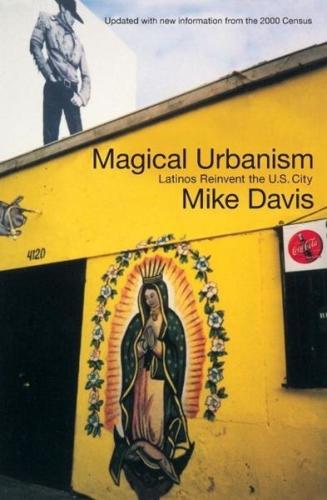
Magical Urbanism: Latinos Reinvent the US City
by
Mike Davis
Published 27 Aug 2001
Institute, East Lansing, Mich. 1999, p. 2. MAGICAL URBANISM 160 Transnational Suburbs Chapter 8 Miguel Szekely, "Economics of Poverty, Inequality and Wealth Accumulation in 119. Mexico," Inter-American Development Bank study cited in Los Angeles Times, 7 Jan. 1999. Moguel, "SaUnas' Failed 120. Julio Quly/Aug. 121 War on Poverty," NACLA Report on the Americas 28:1 1994), p. 39. For a summary of the changed dynamics of emigration, see Wayne Cornelius, "From . Sojourners to States," in J. The Changing Settlers: Profile of Labor Market Interdependence, Stanford, Calif. 1992, pp. 122. Monsivais, "Dreaming of Utopia," 123.
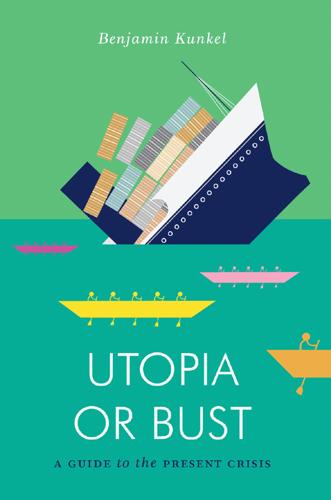
Utopia or Bust: A Guide to the Present Crisis
by
Benjamin Kunkel
Published 11 Mar 2014
In this sense, the fatally overpaid workers of the past forty years, as they have been conceived of across the political spectrum, might be reconceived as fatally underpaid, not just from their own point of view but from the standpoint of systemic requirements for sustained growth. To draw this consequence from Brenner’s argument is to turn the received idea of the Golden Age on its head. After all, even in the legendary days of “full employment” joblessness in the US was often three or four times higher than in Sweden, and Johnson’s War on Poverty hardly named a phantom enemy; it was never the case that all who wanted a job could get one, or that fear of hardship had ceased to exert its discipline. Might it be that the era’s fatal flaw lay not in excess compensation for workers and over-full employment, but in insufficient wage growth and not-full-enough employment?

A Framework for Understanding Poverty
by
Ruby K. Payne
Published 4 May 2012
Jack Levine, who is with the Florida Center for Children and Youth, said, "'None of us is immune to the concerns of children who aren't ready for education, whose health needs are served in emergency rooms and who do not have the family support to keep them out of trouble.' " In the 1964 State of the Union address, the war on poverty was declared. The President's Council of Economic Advisors reported there was "an inverse relationship between the extent of education of family heads and the incidence of poverty." Causes of poverty include poor education, obsolete skills, ill health, divorce, desertion, alcohol, and drugs.

The Working Poor: Invisible in America
by
David K. Shipler
Published 12 Nov 2008
“You bet,” the president-elect replied: “that people who work hard and make the right decisions in life can achieve anything they want in America.”2 The myth has its value. It sets a demanding standard, both for the nation and for every resident. The nation has to strive to make itself the fabled land of opportunity; the resident must strive to use that opportunity. The ideal has inspired a Civil Rights Movement, a War on Poverty, and a continuing search for ways to ease the distress that persists in the midst of plenty. But the American Myth also provides a means of laying blame. In the Puritan legacy, hard work is not merely practical but also moral; its absence suggests an ethical lapse. A harsh logic dictates a hard judgment: If a person’s diligent work leads to prosperity, if work is a moral virtue, and if anyone in the society can attain prosperity through work, then the failure to do so is a fall from righteousness.
…
The individual is a victim of great forces beyond his control, including profit-hungry corporations that exploit his labor. In 1962, Michael Harrington’s eloquent articulation of the Anti-Myth in his book The Other America heightened awareness; to a nation blinded by affluence at the time, the portrait of a vast “invisible land” of the poor came as a staggering revelation. It helped generate Lyndon B. Johnson’s War on Poverty. But Johnson’s war never truly mobilized the country, nor was it ever fought to victory. Fifty years later, after all our economic achievements, the gap between rich and poor has only widened, with a median net worth of $1,589,000 among the top 10 percent and minus $4,900 for the bottom 25 percent, meaning that they owe more than they own.3 Life expectancy in the United States is lower, and infant mortality higher, than in Japan, Hong Kong, Israel, Canada, and all the major nations of Western Europe.4 Yet after all that has been written, discussed, and left unresolved, it is harder to surprise and shock and outrage.

Woman On The Edge Of Time
by
Piercy, Marge
Published 1 Jan 1976
If too many in a village cut off, the neighboring villages send for a team of involvers.” “Years ago I was living in Chicago. I got involved that way. Meetings, meetings, meetings! My life was so busy, my head was boiling! I felt such hope. It was after my husband Martín … He got killed. I was young and naïve and it was supposed to be a War on Poverty … . But it was just the same political machine and us stupid poor people, us … idiots who thought we were running things for a change. We ended up right back where we were. They gave some paying jobs to so-called neighborhood leaders. All those meetings. I ended up with nothing but feeling sore and ripped off.”
…
She herself could be such a person here. Yes, she would study how to fix the looted landscape, heal rivers choked with filth. Doctor the soil squandered for a quick profit on cash crops. Then she would be useful. She would like herself, as she had during the brief period she had been involved in the war-on-poverty hoax. People would respect her. There’s Consuelo, they’d say, doctor of soil, protector of rivers. Her children would be proud of her. Her lovers would not turn from her, would not die in prison, would not be cut down in the streets, like Martin. How she had stood over him in the morgue, shaking with rage—yes, rage—because he was dead without reason.
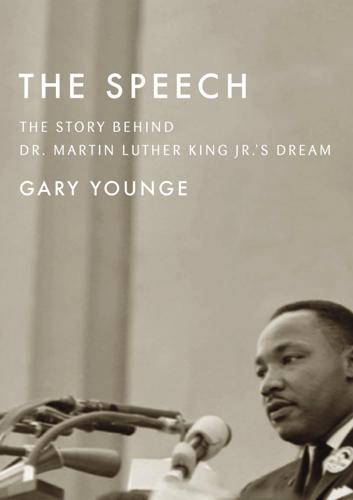
The Speech: The Story Behind Dr. Martin Luther King Jr. S Dream
by
Gary Younge
Published 11 Aug 2013
Who can say that turkeys are against Thanksgiving? They participate in it!” One may argue about the degree to which, on the domestic front, Obama has attempted to shift the balance in the direction King would have endorsed. But given that King stepped up his campaigning for the poor at the very point when President Johnson was launching his War on Poverty and creating the Great Society, it is unlikely that King would have found the pace and scale of Obama’s reforms sufficient. Meanwhile, the views of King and Obama on foreign policy are quite different. In King’s acceptance of the Nobel Prize in 1964, he said: “Violence never brings permanent peace.

The Populist Explosion: How the Great Recession Transformed American and European Politics
by
John B. Judis
Published 11 Sep 2016
As the party of Abraham Lincoln, Republicans had traditionally been receptive to black civil rights, and the Republican leadership in Congress supported Lyndon Johnson’s Civil Rights and Voting Rights acts of 1964 and 1965. Barry Goldwater was an early dissenter, but in the 1964 presidential election, Johnson easily defeated him. Johnson’s victory did not, however, signal widespread support for his civil rights initiatives, and after he passed the Voting Rights Act and launched the War on Poverty, a popular backlash grew. Wallace turned the backlash into a populist crusade. Wallace was raised in a rural small town in Alabama. His father and grandfather dabbled in politics. They were New Deal Democrats under Roosevelt’s spell. Wallace would eventually make his name as an arch-segregationist, but he was initially a populist Democrat like Long for whom race was strictly a secondary consideration.
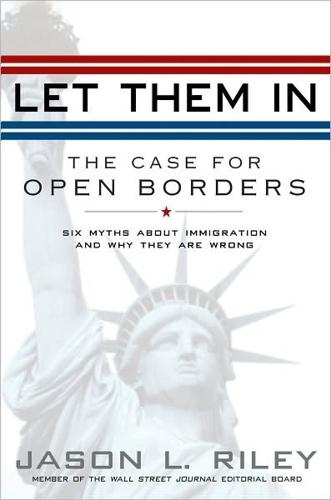
Let Them In: The Case for Open Borders
by
Jason L. Riley
Published 14 May 2008
And although a Democratic president, Lyndon Johnson, gave us the Great Society, its programs expanded exponentially during the Republican administrations of Richard Nixon and Gerald Ford. Welfare becomes a problem when people become habituated to it, when dependency isn’t kept to a minimum and benefits become more attractive than a paycheck. The historical tendency to keep immigrants out of welfare programs began to fade during the War on Poverty in the 1960s. Means-tested programs were added and enhanced but legislation was usually silent on whether citizenship was required to participate. Some states moved to bar noncitizens from public assistance, but a 1971 Supreme Court decision, Graham v. Richardson, reversed those efforts, holding that only the federal government could regulate immigrants’ use of welfare.
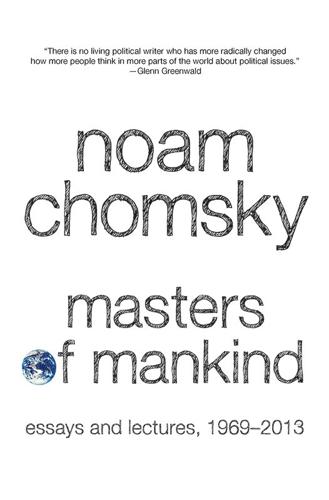
Masters of Mankind
by
Noam Chomsky
Published 1 Sep 2014
Similarly, it may be true, in the abstract, that “the techniques of economic stimulation and stabilization are simply neutral administrative tools capable of distributing national income either more or less equitably, improving the relative bargaining position of either unions or employers, and increasing or decreasing the importance of the public sector of the economy.56 But in the real world, as the same author points out, these “neutral administrative tools” are applied “within the context of a consensus whose limits are defined by the business community.” The tax reforms of the “new economics” benefit the rich.57 Urban renewal, the war on poverty, expenditures for science and education, turn out, in large measure, to be a subsidy to the already privileged. There are a number of ways in which the intellectual who is aware of these facts can hope to change them. He might, for example, try to “humanize” the meritocratic or corporate elite or the government bureaucrats closely allied to them, a plan that has seemed plausible to many scientists and social scientists.

How Everything Became War and the Military Became Everything: Tales From the Pentagon
by
Rosa Brooks
Published 8 Aug 2016
But I was dismayed when President Bush declared that America was now in a “global war on terror.” By this time, I had left the State Department and become a member of the law faculty at the University of Virginia, where I taught and wrote about international legal issues and human rights, and I understood immediately that the war on terror was no mere metaphor—no “War on Poverty” or “War on Illiteracy.” A global war on terror, I intuitively knew, was a war that could, by its nature, have no boundaries: no geographic limits, no limits on who could be targeted, captured, or killed, and no end. All the same: if there was going to be war and struggle, I wanted somehow to be part of it.
…
We can denounce U.S. government practices and legal interpretations that undermine human rights and the rule of law, and insist that the root of the problem is a simple category mistake: the United States has labeled as “war” too many things that should correctly be labeled “crime” or “social problems,” and labeled as “military” too many tasks that should properly be labeled “civilian.” If the root of our current problems is a category mistake, the way to remedy these problems is to urge politicians, policymakers, military leaders, and judges to recognize that counterterrorism should not truly be conceived of as war, any more than the “war on drugs” or the “war on poverty” led us to apply the law of armed conflict to those efforts. Similarly, this argument would suggest that we should stop viewing cyber threats, economic threats, and a dozen other threats through the lens of war, and return to our pre-9/11 understanding of the world. This is the approach that has been taken by many in the human rights and civil rights communities since 9/11.

Tailspin: The People and Forces Behind America's Fifty-Year Fall--And Those Fighting to Reverse It
by
Steven Brill
Published 28 May 2018
Harrington’s book, written at the peak of American post-war prosperity and optimism, declared that there were forty to fifty million Americans living in poverty, but that “The millions who are poor in the United States tend to become increasingly invisible. Here is a great mass of people, yet it takes an effort of the intellect and will even to see them.” Harrington’s description of the other America moved a nation. President Kennedy read it, and mapped plans to eradicate poverty. His successor, Lyndon Johnson, seized on it and declared a war on poverty with a parade of programs—Medicare, food stamps, Medicaid, Head Start, legal services for the poor. He also increased funding for a welfare program, Aid to Families with Dependent Children, or AFDC, begun in 1935 and aimed at children in the country’s poorest households. Kennedy’s brother Robert traveled through Appalachia as a senator and presidential candidate making the poor visible to the journalists who followed him as he vowed to surge Johnson’s war.
…
The converse would also be true: Higher middle-class wages would trickle down to help the poor. However, a safety net of special programs to help the poor has always been there, too. Support for these programs in the 1960s and first half of the 1970s was mostly bipartisan. After Presidents Kennedy and Johnson began the war on poverty following Harrington’s book, President Nixon followed up in ways that might shock the next generation of Republicans. Even before he took office in January 1969, Nixon approved a proposal from his transition staff that called for a guaranteed national income—a set amount to be paid to every American as a floor of available funds to protect them from poverty.*1 He was unable to get Congress to approve it, but he did initiate a variety of other programs.

Evil Geniuses: The Unmaking of America: A Recent History
by
Kurt Andersen
Published 14 Sep 2020
But nearly all the big 1960s changes, the various different varieties of new, had a common source, in addition to the deep-seated national predisposition: after twenty-plus years of exceptional prosperity and increasing economic equality that were both still going strong, a critical mass of Americans felt affluent and secure, which made their native self-confidence and high expectations for the next new thing still more intense. That run of shared affluence allowed the grown-ups in charge to decide we could afford Medicare and Medicaid and the various War on Poverty experiments, and it eased the way for more people to obey the better angels of their nature concerning equality for African Americans and women. After a generation of Depression and world war, the thriving new political economy also inclined people to have lots more children. Those children were raised almost as if they were a special new subspecies who required more tenderness and understanding than previous humans, the new approach famously codified by Dr.
…
He disparaged liberals who thought that “if there is a problem, [you] create an agency and throw money at the problem,” who “clung to the Roosevelt model long after it ceased to relate to reality”—and to that he added some sexist shade, calling them “the Eleanor Roosevelt wing” of the party. “The ballyhooed War on Poverty” of the 1960s, the Democratic programs that included Medicaid and food stamps, “succeeded only in raising the expectations, but not the living conditions, of the poor,” he said inaccurately. “This nation desperately needs a new breed of thinkers and doers who will question old premises and disregard old alliances.”

There Is No Place for Us: Working and Homeless in America
by
Brian Goldstone
Published 25 Mar 2025
And yet, seeing co-workers in their thirties and forties who toiled constantly and still couldn’t make ends meet, she feared getting trapped at the fast-food franchise. So she decided, at the beginning of her junior year, to take a drastic step: she dropped out of school to join Job Corps, the nation’s largest vocational program for low-income young adults. Launched in 1964 as part of the federal War on Poverty, the program offered eligible students free tuition and, crucially for Kara, covered her room and board at its campus in Brunswick, Georgia. But it turned out to be plagued with problems—a series of scathing government audits would document widespread mismanagement, safety issues, and a persistent failure to “demonstrate beneficial job training outcomes”—and she soon left for a job with Walden Security, using the money she’d saved to rent a studio apartment.
…
Maxx, 34 Toler, Lynn, 104 Toyota Avalon, 65, 339 Toyota Camry, 96–97, 125, 144–45, 353 Travis, 78, 165, 197, 223–24, 250–51, 253, 257, 275, 278, 279, 283 Trisha, 53, 60, 110–11, 176, 287 Trump, Donald, 111, 142, 266–67, 284 Turbo (Christopher), 162 Twelve Hotel, 173 21 Savage, 37 Tyler Perry Studios, 103–4 Tyneria, 109 Tyson, Cicely, 334 U Uber, 27, 198–88, 273, 296, 298, 309, 326 Uber Eats, 125, 127, 151, 155, 229 Ultimate Medical Academy, 29–30 unemployment, 183, 359 United Inn, 71–72 United Way, 74, 168, 257 Universal Declaration of Human Rights, 361 University Homes, 56 University of Illinois-Springfield, 186 University of South Florida, 11 “unlock value,” 126 “unsheltered,” 166 UPS, xviii Urban Outfitters, 92 “urban pioneers,” 116 V Val, 235–36 Valdosta State University, 177 Valencia, 204–6, 251–52, 274, 275, 283 Vanderbilt University, 357 Vernando, 278, 284 Vero Beach, 68–71 Veronica, 277–78, 280 Victoria Heights, 26–27, 122, 155, 243 Villages of East Lake, 6, 175 virtual schooling, 146, 153, 236 Vulnerability Index-Service Prioritization Decision Assistance Tool (VI-SPDAT), 85–86 W Waffle House, 39 Walgreens, 218 Walker, Celeste, xxi, 37–47, 77–87, 234–39, 245–48, 283 cancer of, 77–79, 80, 83–84, 86, 143–44, 149, 225 childcare business of, 148–49, 153–55 COVID-19 pandemic and, 147–49, 237, 246–47 debt, 79–80 at Dixie Hills rooming house, 301–5, 306–7 at Efficiency Lodge, 37–38, 44–47, 78–82, 147–49, 154–55, 162–68, 204–6, 224–25, 274–75, 280, 353 Gateway Center and, 82–87, 245–46, 356 at Howard Johnson, 40, 41, 236–37, 245, 248 KFC job, 143–44, 149 Novem job of, 39, 41 Passion Foods business of, 45–46, 306 Pink and, 162–68, 274–75, 278 ProLogistix job of, 41, 45 in Tampa, 305–7 Westover Drive house fire, 39–42, 43, 79–80 Walker, Jalen, 38–42, 44, 46, 79, 149, 153–54, 205, 234–38, 302, 306–7, 356 Walker, Micah, 38, 39, 41–42, 44, 47, 77, 79, 84, 149, 153, 154, 205, 224, 234–38, 302, 304–7, 356 Walker, Nyah, 38–42, 44, 46, 79, 154, 205, 224, 236–39, 246, 249–50, 251, 257, 274–75, 304, 306–7, 353 Wall Street, 126 Walmart, 45, 75–76, 120, 191, 225–26, 311, 365 War on Poverty, 18 Washington, D.C., xvii, 25, 91–93, 239–40 Washington High School, 53 Washington Post, 57 water feature, 58 welfare, 136–39 welfare reform, 137–39, 175 WeLive, 303 Wells, Carla, 184–91 background of, 186–87 as Kara’s case manager, 185–86, 187–91, 193, 211, 231, 348–49 Wells, Kyle, 186, 190–91 Wells, Leon W., 118 Wells, Naomi, 187 Wells, Nia, 187 Wellswood Apartments, 118–19 Westover Drive, 39–42, 43 WhatsApp, 277, 279, 283, 285 white flight, 25, 56, 118–19 Whitlock Avenue, 282 Whitney, The, 99–100, 122–29, 155, 240, 243, 244, 310, 316 Wilbourn Sisters Designs, 180 Wilkinson, Aaliyah, 60, 110–12, 113, 173, 175, 269, 334, 335–36 Wilkinson, Alonzo, 174, 295–99 Wilkinson, Brittany “Britt,” xxi, 3–12, 110–20, 169–79, 325–37, 355–56 airport job of, 3–4, 6–7, 10–12 background of, 5–6 COVID-19 pandemic and, 169–70 early life of, 173–77, 331–32 at East Lake Meadows, 5–6, 10, 55, 170 eviction, 259–61, 266, 268–70, 286–88 at Gladstone Apartments, 112–14, 117–20, 169–72, 178–79 housing voucher, 7–9, 10, 51–52, 54–55, 59, 60–63, 110, 116, 178, 295 at Janeka’s apartment, 268–69, 296, 325–26, 327–31 Milwaukee trip, 294–98 at QLS Gardens Apartments, 51–55, 59–63, 113, 169–70, 178 at The Skylark, 266–68 Thanksgiving dinner, 110–11 Wilkinson, Cassandra “Cass,” 4–6, 9–10, 11–12, 57, 60, 110–12, 173, 269–70, 295–96, 333–34 eviction, 259–61, 287–88 Wilkinson, Desiree, 3–4, 9, 10–12, 51–54, 59–61, 110–11, 170, 177–79, 258–59, 268–69, 295–98, 326, 327, 329–36, 365 Wilkinson, Devin, 110–12, 173, 174, 331 Wilkinson, Josiah, 11, 110–11, 175, 176, 287–88 Wilkinson, Kyrie, 3–4, 8, 9, 11, 51–54, 59–61, 110–11, 113, 170, 178–79, 258–59, 268, 270, 294–98, 326, 327, 329–36, 365 Williams, Phyllis, 67 Willy’s Mexicana Grill, 150, 151 Wonder, Stevie, 30–31 Woodland Middle School, 141–42 Woodruff Park, 160 WoodSpring Suites, 241 work ethic, 17, 86 working homeless, use of term, xvii World of Coca-Cola, 194 Y Yasmine, 178, 328, 331–32 Yelp, 70, 341 Young Entrepreneur Convention, 11 Youth Guidance, 186 Yung Mal, 37 Z Zacharias, Ravi, 181 Zack, 268–69 Zelle, 216 Zillow, 54, 225 Zimbabwe Sculpture: A Tradition in Stone, 11 Zipcar, 25 zoning, 190, 264–67, 303, 363 ZRS Management, 127 Zyniah, 198–99, 200, 204–6, 223 A B C D E F G H I J K L M N O P Q R S T U V W X Y Z About the Author Brian Goldstone is a journalist whose longform reporting and essays have appeared in Harper’s Magazine, The New Republic, The California Sunday Magazine, and Jacobin, among other publications.
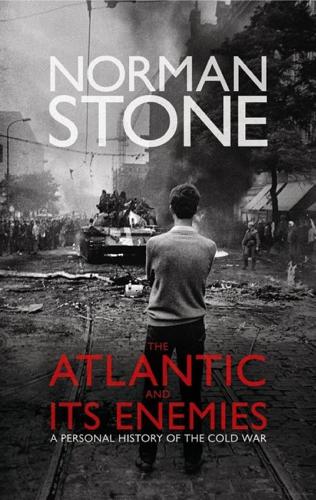
The Atlantic and Its Enemies: A History of the Cold War
by
Norman Stone
Published 15 Feb 2010
It was all rather good politics, in the sense that it made the Republicans appear to be in favour of poverty, which, said Johnson’s rival, Hubert Humphrey, would, if allowed to go on, become hereditary. It turned out, despite his efforts, that that indeed happened, the inheritance being from the lone-maternal side: a later book, by Allen Matusow, had the title How Not to Fight Poverty (1985). As Ronald Reagan later put it, ‘We declared war on poverty, and we lost.’ But such discoveries were a good decade in the future. Roosevelt had had much trouble with the Supreme Court in the later 1930s. Johnson found that he could get around this, because he had an astute legal ally, Abe Fortas, and he could in effect ‘pack’ the Court. States’ rights were overborne, and so too, on occasion, were the provisions of Congress.
…
There were other ideas around at this time, often of great interest, and reflecting the disillusion of men and women who had regarded the sixties as a time of hope. Much of the inspiration, and even some of the money, came from North America. There, the disillusion had also run deep, and Johnson’s idea of a ‘Great Society’ had disintegrated: as Ronald Reagan put it, ‘We declared war on poverty, and we lost.’ Daniel Moynihan, originally a New Dealer and a Democrat, made himself very unpopular at Harvard (they threatened to burn down his house) because he said that welfare was causing black girls just to do without husbands, and bringing about the disintegration of the black family; that was producing an ‘underclass’ of hopeless misfits who, again through welfare, were paid to reproduce themselves.
…
Then there was the extraordinary deterioration of the conditions in which big-city Americans lived: squalid housing, grotesque crime rates. Myron Magnet, a scholar of English literature who knew his nineteenth century, wrote (in 1993) The Dream and the Nightmare and it was easy for him to catalogue the failures of the ‘Great Society’: as Reagan said, ‘We declared war on poverty, and we lost.’ There was also a failure, though a more complicated one, as regards America’s racial problem. ‘School bussing, more public housing projects, affirmative action, job-training programs, drug treatment projects . . . multi-cultural curricula, new textbooks, all-black college dorms, sensitivity courses, minority set-asides, Martin Luther King Day, and the political correctness movement at colleges’ had only led, all in all, to rather greater apartheid than before.

Capitalism 3.0: A Guide to Reclaiming the Commons
by
Peter Barnes
Published 29 Sep 2006
After World War II, America went on an almost uninterrupted growth binge. Per capita economic output, adjusted for inflation, tripled between 1950 and the end of the century. The stock market rose about fortyfold. Mutual funds and tax-sheltered retirement accounts spread stock ownership to the masses. In the 1960s, the federal government launched an all-out War on Poverty. And yet, at the end of the century, the distribution of private wealth was more unequal than it had been in 1950. In cold numbers, the top 5 percent owned more than the bottom 95 percent (see figure 2.3). Figure 2.3 WEALTH DISTRIBUTION IN THE UNITED STATES, 2001 P E R C E N T O F W E A LT H O W N E D 100 75 Top 5% 50 25 Next 15% Bottom 80% 0 Poorest 2 3 4 Richest F I F TH S O F U.
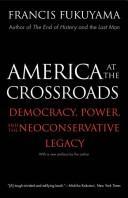
America at the Crossroads: Democracy, Power, and the Neoconservative Legacy
by
Francis Fukuyama
Published 20 Mar 2007
American politics had shifted dramatically by the late 1960s: as a result of the civil rights movement and the Vietnam War, the old communist and fellow- n The Neoconseiuative Legacy traveling Left of the 1930s had been replaced, temporarily at least, by the New Left of Tom Hayden and the Students for a Democratic Society. This was also the period of the revival of large-scale social engineering on the part of the U.S. government, in the form of Lyndon Johnson's War on Poverty and Great Society programs. Figures like Bell, Glazer, and Lipset were by now all ensconced in universities and found themselves in opposition to a new generation of student radicals who, in addition to supporting a progressive social agenda with which their professors were vaguely sympathetic, attacked the university itself as a handmaiden of American capitalism and imperialism.

The Lights in the Tunnel
by
Martin Ford
Published 28 May 2011
At the same time, reserves of oil, natural gas, and in the longer run even coal, are going to be depleted. How can we hope to face these challenges if our economy is in decline and the bulk of our population is focused almost exclusively on the continuity of individual incomes? A similar point can be made regarding the global war on poverty. How can we hope to win this war, if we ourselves are not prosperous? We know that poverty is one of the primary drivers of war, conflict and terrorism. In a long-term stagnant or declining economic environment, these problems will only grow. The answer cannot be to attempt to halt technological progress.

The Relentless Revolution: A History of Capitalism
by
Joyce Appleby
Published 22 Dec 2009
They saddled their companies with costs that kept growing when the burden might have been spread through public funding, as was the New Deal’s Aid to Families with Dependent Children. Aside from the expansion of higher education, the engine of social reform had an uphill push in the 1960s. Progressive income tax rates and rising wages shrank the gap between rich and poor for twenty years while the economy moved ahead at full tilt. President Lyndon Johnson declared war on poverty, but the real war in Vietnam undercut many of his domestic goals. The quest for acknowledgment of labor has been made more difficult by the language of economic analysis that depersonalizes workers. Labor is bundled with land and capital as the principal components of enterprise. In a subtle way, this has a dehumanizing effect, for it obscures the enormous difference between the human and material elements in production.
…
A contender with Warren Buffett and Bill Gates for the title of the world’s wealthiest person, Slim has been a great benefactor. He has poured money into foundations, but as a monopoly owner of many sectors of the economy he is also part of the problem of Mexican poverty. He employs a quarter of a million men and women. Like Yunus, he has declared war on poverty and is turning his attention to helping fund Mexican health and education programs. “My new job,” Slim says, “is to focus on the development and employment of Latin America.” Critics ask if he intends to pay a working wage commensurate with the rest of North America.27 Yunus understands that one of the underpinnings of poverty is the widespread conviction that it is an ineradicable evil, like dying.

A Generation of Sociopaths: How the Baby Boomers Betrayed America
by
Bruce Cannon Gibney
Published 7 Mar 2017
From the 1930s onward, the state guaranteed against disaster. In 1966, Medicare debuted, providing funds for senior health care, so the elderly were supplied with both a modest income and a certain minimum level of medical care and insurance against catastrophic illness. As part of the Great Society and the War on Poverty, funds were also extended regardless of age to poor populations for both health care and income assistance—welfare, in short. So, the bulk of what we think of as the social safety net was therefore in place by 1966, along with growing protections to ensure that classes of people other than comfortable whites could participate, at least in a partial way, in national prosperity and politics.
…
Some failed to remit only the temporary 10 percent tax enacted as part of war policy, which while self-serving and illegal was at least tailored to the political issue; others, like the singer Joan Baez (who provided some theme music to antiwar protests), refused to pay the majority of their bills, even though at most a quarter or so went to defense and the rest to benign enterprises like the War on Poverty (apparently, “antiwar” was a fairly expansive concept). The widespread manufacture, distribution, and use of recreational drugs was, of course, also plainly illegal, and more aggressive and less successful than the efforts of later generations to legalize marijuana through the conventional political process.

The World's Banker: A Story of Failed States, Financial Crises, and the Wealth and Poverty of Nations
by
Sebastian Mallaby
Published 24 Apr 2006
By the end of the 1970s, McNamara’s rural development projects had ended in failure, and the Bank’s project managers were grumbling behind his back. After more than three decades of continuous expansion—in staff numbers, loan volumes, and ambition—the World Bank had begun to seem overextended. The institution’s war on poverty, like America’s war on communism in Vietnam, was proving all too much for it. Without pressure from outside, McNamara might have soldiered on, preaching the cause of development at the Bank’s annual meetings each autumn, and driving his staff to come up with new ways of advancing it. But outside pressure did arrive—in the form of two successive oil shocks.
…
Development would be sustainable only if it included political and institutional progress; and it must advance on all fronts. Roads, education, legal reform, women’s emancipation, corruption fighting, a sound banking system, environmental protection, child inoculation: all were essential. In the absence of a silver bullet, only a broad war on poverty could help the Ugandan woman he remembered, who baked green banana skins into charcoal briquettes. “Mr. Chairman,” Wolfensohn declared portentously, “we need a new development framework.” Wolfensohn’s speech attracted modest attention in the following day’s headlines. The world was understandably more interested in Brazil’s immediate instability than in Wolfensohn’s musings about long-run “holistic” development.
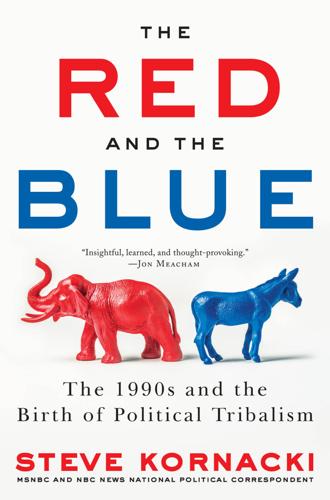
The Red and the Blue: The 1990s and the Birth of Political Tribalism
by
Steve Kornacki
Published 1 Oct 2018
The key, he believed, was in nationalizing congressional politics through confrontations with the ruling Democrats that would clarify the differences between the two parties. A liberal consensus had dominated Washington since the Depression, when FDR combated economic crisis with a massive expansion of the federal safety net. In the sixties, LBJ added to it with Medicare and his “war on poverty,” but his presidency coincided with explosive civil strife, including riots in Detroit, Newark, Los Angeles, and other cities; waves of antiwar protests; and the rise of a counterculture. A backlash was building in blue-collar and middle-class white America, which Nixon nodded to with his talk of “the great silent majority.”
…
Technically speaking, “welfare” was a catchall term for an array of programs aimed at helping the impoverished meet their basic needs. As a political issue, though, the action revolved around Aid to Families with Dependent Children, which was conceived during the New Deal and expanded dramatically under LBJ’s “war on poverty.” AFDC provided monthly cash assistance to households with children in which the principal earner was either absent or jobless. It was the largest single component of the welfare system. The surge in spending on AFDC since the 1960s coincided with alarming cultural trends. By the early nineties, the rate of violent crime was four and a half times what it had been three decades earlier, and out-of-wedlock births had jumped sixfold.
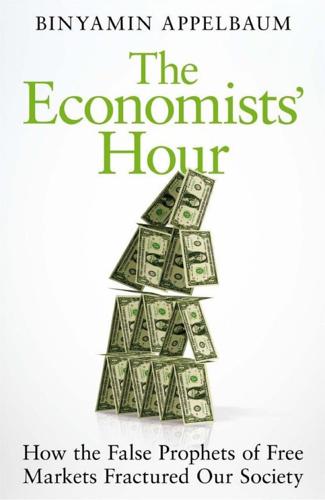
The Economists' Hour: How the False Prophets of Free Markets Fractured Our Society
by
Binyamin Appelbaum
Published 4 Sep 2019
But Johnson privately assured Heller that it would be easy to increase spending after the votes were counted. “Once you have the tax cut,” Johnson said, “you can do what you want.”37 Johnson did. With the tax cut in hand, federal spending rose sharply as the administration pursued a war in Vietnam and what Johnson called an “unconditional war on poverty.” About a fifth of the American population, some 30 million people, then lived in destitution with little prospect of betterment. Both liberal and conservative administrations had taken the view that poverty was best treated by pursuing broad economic growth.38 But by the early 1960s, scholars and journalists were focusing public attention on the inadequacy of this strategy — a project intertwined with the rise of the civil rights movement, since deprivation was concentrated in minority communities.
…
But we have not banished air crashes from the land, and it is not clear that we have the wisdom or the ability to eliminate recessions.” See Okun, The Political Economy of Prosperity (Washington, D.C.: Brookings Institution, 1970), 33–34. 42. In 2014, on the fiftieth anniversary of Johnson’s declaration of war on poverty, Wisconsin Republican Paul Ryan, then chairman of the House Budget Committee, declared that the war had “failed.” The available evidence suggests a different conclusion. See Christopher Wimer et al., “Trends in Poverty with an Anchored Supplemental Poverty Measure,” December 2013, Columbia Population Research Center, Columbia University. 43.
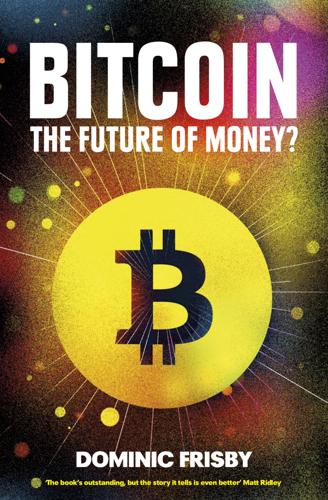
Bitcoin: The Future of Money?
by
Dominic Frisby
Published 1 Nov 2014
In 1913 income tax was introduced and the Federal Reserve Bank was created to manage the dollar. In 1932, to generate the funds he wanted for his New Deal, Roosevelt confiscated Americans’ gold, gave Americans dollars in exchange and then devalued the dollar. In the 1960s, under the presidency of Lyndon Johnson, the American state grew even further. Johnson’s War on Poverty saw the Social Security Act, the Food Stamp Act, the Economic Opportunity Act and the Elementary and Secondary Education Act signed into law. But these reforms, together with America’s involvement in the Vietnam War, cost money. The US began printing dollars – many more dollars than its gold supply could back.

The Nation City: Why Mayors Are Now Running the World
by
Rahm Emanuel
Published 25 Feb 2020
But a compromise was achieved, and subsequent Republican presidents—Richard Nixon and Gerald Ford—ended up expanding the programs during their terms. (This prompted Nixon’s famous “I am now a Keynesian in economics” line.) There was the formation of Medicare and Medicaid, and the Clean Air and Clean Water Acts, and the War on Poverty. All of them were worked on as compromises. In 1986, Ronald Reagan’s Tax Reform Act was sponsored by Dan Rostenkowski, who was a Democratic representative. The art of compromise—really, the art of the executive branch of government working with the legislative one to conquer evil, fix problems, and respond to constituents—continued all the way into Bill Clinton’s second term.

Working
by
Robert A. Caro
Published 8 Apr 2019
Another proof of the speech’s power I got from Busby and Goodwin: when the limousine was coming back to the White House and turned in to the White House gates, the turn was made in silence. The pickets were gone. In that year Lyndon Johnson passed Medicaid, Medicare, a slew of education bills, Head Start, the immigration bill, many War on Poverty bills. So how do you write about the Sixties? You could say that if you were just going up to July, 1965, it was a decade of great strides toward social justice. That it was sort of a decade of hope, and of the song that embodied that hope, “We Shall Overcome.” * * * — BUT THAT WAS NOT all the Sixties were.
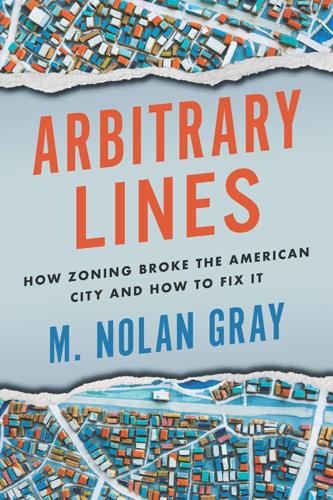
Arbitrary Lines: How Zoning Broke the American City and How to Fix It
by
M. Nolan Gray
Published 20 Jun 2022
While hardly glamorous, manufactured housing is often a substantial step up from the alternative, which in rural areas is often an informal shack. The Appalachian trailer that my mother grew up in was hardly luxury, but compared to the shacks that much of the Fletcher clan lived in, it was a clear improvement. President Lyndon Johnson would use one such Fletcher clan shack for a photo opportunity announcing the War on Poverty in 1964. 18. See Charles Haar, “Zoning for Minimum Standards: The Wayne Township Case,” Harvard Law Review 66, no. 6 (April 1953). 19. Shoup, High Cost of Free Parking. 20. Lexington-Fayette Urban County Government Planning Office (2021), Sections 8-21, 8-33, and 8-39. 21. Assuming two standard 8'6" by 18'4" parking spaces and an adjacent 12' travel lane, the total space consumed is roughly 650 square feet.
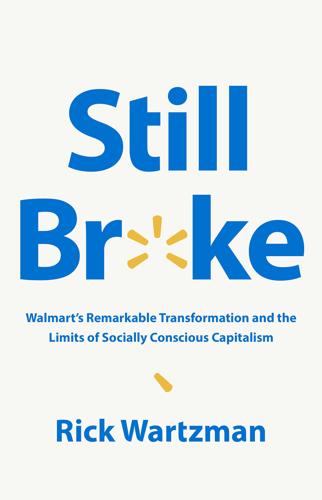
Still Broke: Walmart's Remarkable Transformation and the Limits of Socially Conscious Capitalism
by
Rick Wartzman
Published 15 Nov 2022
Kennedy and then Lyndon Johnson to put together an ambitious anti-poverty agenda. A. H. Raskin, a veteran labor reporter for the New York Times, said that Harrington’s book was nothing less than “a scream of rage and a call to conscience.” In the end, it fell mostly on deaf ears. The government’s War on Poverty “never truly mobilized the country, nor was it ever fought to victory,” David Shipler concluded in his 2004 book, The Working Poor: Invisible in America. “Forty years later,” he wrote, “after all our economic achievements, the gap between rich and poor has only widened.… Yet after all that has been written, discussed, and left unresolved, it is harder to surprise and shock and outrage.”
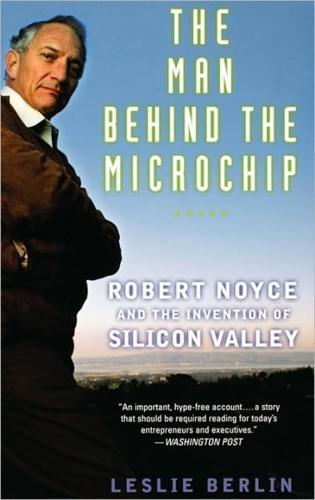
The Man Behind the Microchip: Robert Noyce and the Invention of Silicon Valley
by
Leslie Berlin
Published 9 Jun 2005
By 1970, many people familiar with the industry believed the semiconductor market was fully saturated.45 In the summer of 1968, however, life was so good for most electronics companies that firms up and down the Pacific Coast, flush with success, feeling generous, and hungry for employees, trained “young people from disadvantaged minorities” and “hard-core unemployed” as part of President Johnson’s War-on-Poverty programs. In Europe, student protests turned violent. In Chicago, police clubbed Vietnam War protesters at the Democratic National Convention, while in Washington, the United States Army, citing the “large number of civil disturbances” around the country, began construction on an “emergency action headquarters” anchored by a series of computers running on integrated circuit technology and designed to coordinate military action at as many as 25 domestic “hot spots” simultaneously.
…
Failures of companies: “Electronics Industry Failures Fall to Lowest Level Ever,” Electronic News, 10 June 1968. Age of Electro-Aquarius: “The Splintering of the Solid-State Electronics Industry.” Notes to Pages 168–172 341 45. The last year: “Where the Action is in Electronics,” Business Week, Oct. 1969, 86. Market fully saturated: Jackson, Inside Intel, 47. 46. Participation in War on Poverty: Neil Kelly, “Coast Firms Eager in Poverty Fight,” Electronic News, 22 July 1968. Army’s computerized facility: Heather M. David, “Army Opens Riot Control Center,” Electronic News, 14 July 1969. 47. Knew Intel would lose money: “Intel Corp $2,500,000 Convertible Debentures,” IA. More aggressive: Gordon Moore, interview by author. 48.
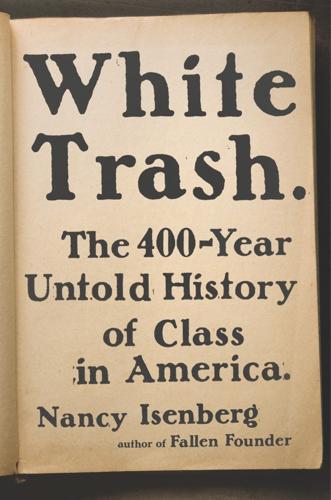
White Trash: The 400-Year Untold History of Class in America
by
Nancy Isenberg
Published 20 Jun 2016
In the end, the Johnson administration secured passage of the Appalachian Regional Development Act, providing infrastructure, schools, and hospitals. The president subsequently stated that seeing the poverty there firsthand had convinced him of the necessity of the Medicare Act. And so fighting rural poverty remained a central plank in Johnson’s overall “War on Poverty.” But even these bold policies proved inadequate to manage the massive devastation that the blighted regional economy had already experienced.81 Lyndon Johnson was aware of every detail as he went about fashioning his public image. The hat he wore was not a ten-gallon cowboy, but a modified five-gallon version with a narrower brim.
…
On poor white images, also see “Johnson’s Great Society—Lines Are Drawn,” New York Times, March 14, 1965; and John Ed Pearce, “The Superfluous People of Hazard, Kentucky,” Reporter 28, no. 1 (January 3, 1963): 33–35; Homer Bigart, “Kentucky Miners: A Grim Winter,” New York Times, October 20, 1963; Robyn Muncy, “Coal-Fired Reforms: Social Citizenship, Dissident Miners, and the Great Society,” Journal of American History (June 2009): 72–98, esp. 74, 90–95; and Ronald Eller, Uneven Ground: Appalachia Since 1945 (Lexington: University Press of Kentucky, 2008), 20, 23–25, 30–32, 36–39; David Torstensson, “Beyond the City: Lyndon Johnson’s War on Poverty in Rural America,” Journal of Policy History 25, no. 4 (2013): 587–613, esp. 591–92, 596, 606. 82. On Johnson’s hat, see “Random Notes from All Over: Johnson Says Aye to LBJ Hats,” New York Times, February 17, 1964. On the poor, see Marjorie Hunter, “President’s Tour Dramatized Issue” and “Johnson Pledges to Aid the Needy,” New York Times, April 26, 1964, and September 21, 1964; Franklin D.

The Vietnam War: An Intimate History
by
Geoffrey C. Ward
and
Ken Burns
Published 4 Sep 2017
THE ABLEST MEN TRAGEDY HAD BROUGHT Lyndon Johnson to the presidency in November 1963. And he would not feel himself fully in charge until he had faced the voters the following year. But his ambitions for his country were as great as those of his hero, Franklin Roosevelt. In his first State of the Union address he declared “unconditional war on poverty,” and during his years in the White House he would lead the struggle to win passage of more than two hundred important pieces of legislation—the Civil Rights Act of 1964, the Voting Rights Act of 1965, federal aid to education, Head Start, Medicare, and a whole series of bills aimed at ending poverty in America—all components of what he called the “Great Society.”
…
He never forgot the care with which Shade calmed him down or the skill with which he tended to the wounds in his arm and hand. A STEP FORWARD LIKE LE DUAN, Lyndon Johnson found himself in trouble during the summer of 1967. He had always maintained that the United States was “rich enough and strong enough” simultaneously to fight both the Vietnam War and the War on Poverty. That no longer seemed to be true. The steadily climbing cost of the war had sparked worrisome inflation. To offset it, Johnson proposed a 10 percent income tax surtax. Before conservatives in Congress would approve it, they forced him to accept cuts in the antipoverty programs that meant the most to him.
…
Vong Tang Vo Nguyen Giap, 1.1, 1.2, 1.3, 1.4, 1.5, 1.6, 1.7, 1.8, 1.9, 1.10, 1.11, 1.12, 1.13, 5.1, 5.2, 6.1, 6.2, 10.1, 10.2 Voting Rights Act of 1965, 3.1, 3.2, 4.1, 5.1 Vung Ro Bay Vung Tau, 10.1, 10.2, 10.3 Wallace, George, 2.1, 7.1, 7.2, 9.1, 9.2, 9.3 Wallace, Mike, 8.1, 8.2 Wall Street Wall Street Journal Walt, Lewis W., 4.1, 4.2, 4.3, 6.1 Walter, Sonny War of 1812, itr.1, 4.1, 10.1 War on Poverty War Powers Act (1973), 9.1, 10.1 Warren, Earl War Resisters League War Within: The: America’s Battle over Vietnam (Wells) Washington, D.C., 1.1, 8.1, 8.2, 8.3, 9.1, 9.2, 9.1 antiwar protests in, 3.1, 3.2, 9.1, 9.2, 9.3, 9.4, 9.1 October 21, 1967, antiwar rally in, 5.1, 5.2 post-King assassination riots in, 6.1, 6.2, 6.3 Washington Mall Washington Monument Washington Post, 2.1, 4.1, 5.1, 9.1, 9.1 Washington Star Watergate scandal, 9.1, 9.1, 10.1 Watts, William Wayne, John Weathermen (Weather Underground), 8.1, 8.2, 9.1, 9.1 Weigl, Bruce Weiss, Cora Welch, Raquel Wells, Tom Wesak Day West, Philip West Berlin West Germany, 2.1, 6.1 Westmoreland, William, 3.1, 3.2, 3.3, 4.1, 4.2, 4.3, 4.4, 4.5, 4.6, 4.7, 4.8, 4.9, 4.10, 5.1, 5.2, 5.3, 5.4, 5.5, 5.6, 5.7, 6.1, 6.2, 6.3, 6.4, 6.5, 6.6, 6.7, 6.8, 6.9, 7.1, 8.1, 8.2, 8.3 additional troops requested by, 3.1, 3.2, 3.3, 4.1, 6.1 appointed MACV commander congressional speech of, 4.1, 4.2 Khe Sanh as focus of, 6.1 optimistic statements by, 4.1, 5.1, 5.2, 5.3, 5.4, 5.5, 6.1, 6.2, 6.3, 6.4, 6.5 pacification program and, 3.1, 4.1 in recall from Vietnam Tet Offensive and, 6.1, 6.2, 6.3, 6.4, 6.5 three-phase strategy of, 3.1, 4.1 U.S. troops requested by, 3.1, 3.2 West Point, U.S.

After the New Economy: The Binge . . . And the Hangover That Won't Go Away
by
Doug Henwood
Published 9 May 2005
Now, the population Hving below the poverty Hne is disproportionately urban, and hving in families headed by single women (Levy 1998, chap. 2)—though poverty now, hke the rest of America, has recently been moving out of the cities and into the suburbs. The U.S. didn't get an official poverty line until 1965, as part of the target practice for the Johnson administration's War on Poverty, but the concept has a long history.'^ The broad project of studying the household budgets of the poor and working class goes back at least to the 1870s, a project motivated in large part by fear of unrest from below. In the U.S., immigrants w^ere bringing radical ideas w^ith them, which fermented dangerously in urban slums; unions were being organized and strikes being conducted—with the nationwide riots following the railway strike of 1877 having a particularly great impact.

Financial Market Meltdown: Everything You Need to Know to Understand and Survive the Global Credit Crisis
by
Kevin Mellyn
Published 30 Sep 2009
If the Great Inflation had a single author, his name is Lyndon Baines Johnson. A New Dealer to the bone and a master of getting things done in Congress, he believed there was no excuse for persistent poverty amidst plenty in a country as rich as the United States. So, he launched the Great Society and the War on Poverty, vastly increasing the size and spending of the federal government in the process. At the same time, he expanded the war in Vietnam, which he inherited from Kennedy. This explosion in federal spending was unlike those of the Roosevelt years in one key aspect. They were not nearly as fully financed by taxation.
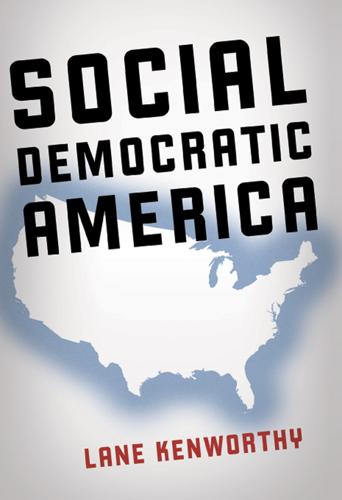
Social Democratic America
by
Lane Kenworthy
Published 3 Jan 2014
Fluctuating Fortunes: The Political Power of Business in America. New York: Basic Books. Waldfogel, Jane. 2006. What Children Need. Cambridge, MA: Harvard University Press. Waldfogel, Jane. 2009. “The Role of Family Policies in Antipoverty Policy.” Focus 26(2): 50–55. Waldfogel, Jane. 2010. Britain’s War on Poverty. New York: Russell Sage Foundation. Waldfogel, Jane and Elizabeth Washbrook. 2011. “Income-Related Gaps in School Readiness in the United States and the United Kingdom.” Pp. 175–207 in Persistence, Privilege, and Parenting: The Comparative Study of Intergenerational Mobility. Edited by Timothy M.
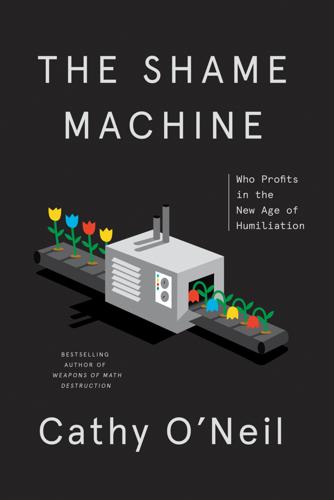
The Shame Machine: Who Profits in the New Age of Humiliation
by
Cathy O'Neil
Published 15 Mar 2022
Skip Notes *1 The more extreme gastric bypass surgery reroutes the tubing, bypassing the shrunken stomach altogether. *2 Critical question, after being utterly polite: “What would you do if you were me?” CONCLUSION WHEN OUR GRANDEST dreams went up in smoke, they left behind shame machines. Consider a few of the various “wars” our political leaders have declared over the past decades: the war on poverty, the war on drugs, the war on obesity. Each was launched with great fanfare and the hope that with resolute leadership, intelligence, and sufficient funds, these evils could be vanquished. If we could send a man to the moon, the thinking went, of course we could fix these scourges. Once the complexity and cost of these problems became apparent, though, we had a change of heart.
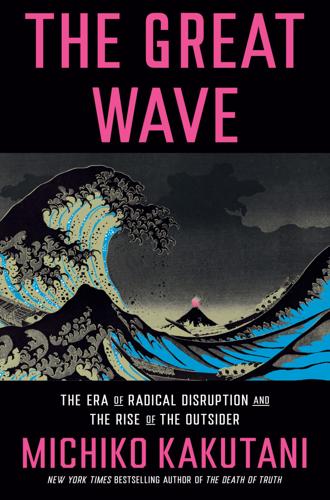
The Great Wave: The Era of Radical Disruption and the Rise of the Outsider
by
Michiko Kakutani
Published 20 Feb 2024
Johnson took office in the wake of the assassination of John F. Kennedy and used the national sense of crisis—combined with his own masterful understanding of Capitol Hill—to pass his predecessor’s stalled tax-cut bill and civil rights legislation and to lay the groundwork for his own ambitious War on Poverty. When the levees in New Orleans failed during Hurricane Katrina, some 80 percent of the city was flooded; 1.2 million residents were evacuated and 200,000 were displaced. Recovery efforts were slow, but when Mitch Landrieu took office as mayor in 2010, he implemented ambitious rebuilding plans that not only included the rebuilding of critical infrastructure (from levees and roads, to schools and hospitals) but also aimed at making the city more resilient in the future—better prepared for future storms and climate change, better organized to grapple with long-term problems of poverty and crime, and with a more diversified economy including lots of new tech start-ups.
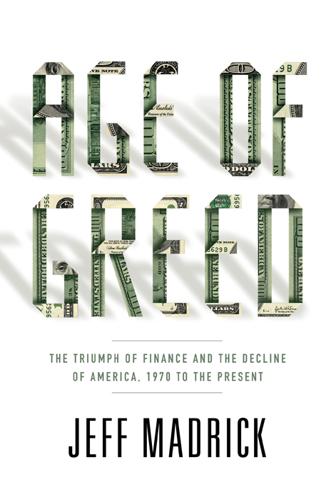
Age of Greed: The Triumph of Finance and the Decline of America, 1970 to the Present
by
Jeff Madrick
Published 11 Jun 2012
Edwin Meese, Reagan’s key legal staffer and his future attorney general, had known Uhler at Boalt Hall, and in 1968 invited him to join Reagan’s gubernatorial staff. Uhler’s first major assignment was to challenge California Rural Legal Assistance, a nonprofit organization established by Lyndon Johnson as part of the War on Poverty to provide legal aid to the poor, mostly agricultural workers, regarding housing, wages, and health care. The program was a thorn in the side of Reagan’s backers, and especially the politically powerful farm community. Uhler wrote a report charging the program’s legal staff with serious improprieties.
…
His political future, indisputably bright to that point, was now uncertain, as was the conservative political movement itself. Nixon, who became president in 1969, signed legislation to start the Environmental Protection Agency, the Occupational Safety and Health Agency, and the Consumer Product Safety Commission, froze prices and wages, provided generous funds to the War on Poverty, aggressively expanded Social Security, and spent federal funds prodigiously to stimulate economic growth. Even though he tried to limit civil rights in the South, Nixon was still not the conservative Uhler had hoped for as the next Republican president. But Reagan, like the army of the committed of which Uhler was a tireless member, kept sowing the truly conservative fields.
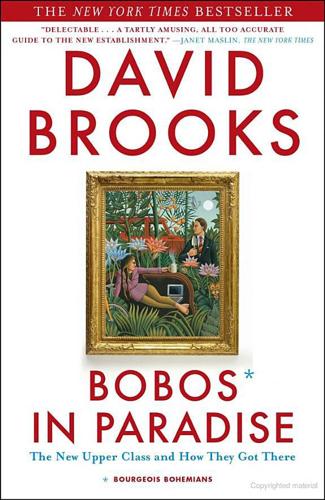
Bobos in Paradise: The New Upper Class and How They Got There
by
David Brooks
Published 1 Jan 2000
That was an era of consolidation, when small entities seemed to be drawn ineluctably together to form big entities—big trusts, big bureaucracies, big cities. But we no longer feel we are living in an age of consolidation; on the contrary, deconsolidation seems to be the order of the day. So upscale Americans, like most Americans, show little desire to launch a new set of massive political enterprises, whether it is another liberal War on Poverty or a grand conservative War on Cultural Decay. They tend to distrust formal hierarchies that are imposed from above and Olympian lawgivers who would presume to govern from glorious heights. They are generally disenchanted with national politics. They tend not to see it as a glorious or capital R Romantic field of endeavor, the way so many people did earlier in the century.
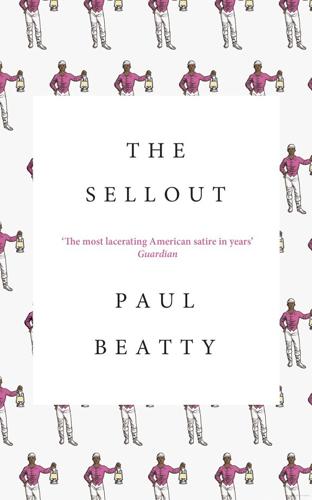
The Sellout: A Novel
by
Paul Beatty
Published 2 Mar 2016
The county reluctant to cite me with anything more than vandalism of state property and me trying to convince them that even if crime had gone down in the neighborhood since the Wheaton Academy went up, what I did was still a violation of the First Amendment, the Civil Rights Code, and, unless there’s been an armistice in the War on Poverty, at least four articles of the Geneva Convention. The paramedics arrived. Once I’d been stabilized with gauze and a few kind words, the EMTs went through the standard assessment protocol. “Next of kin?” As I lay, not exactly dying but close enough, I thought about Marpessa. Who, if the position of the sun high in the gorgeous blue sky was any indication, was at the far end of this very same street taking her lunch break.

The Global Minotaur
by
Yanis Varoufakis
and
Paul Mason
Published 4 Jul 2015
The Great Society will be remembered for its effective dismantling of American apartheid, especially in the southern states. Between 1964 and 1966, four pieces of legislation saw to this major transformation of American society. Moreover, the Great Society had a strong Keynesian element that came to the fore as Johnson’s unconditional war on poverty. In its first three years, 1964–66, $1 billion were spent annually on various programmes to boost educational opportunities and to introduce health cover for the elderly and various vulnerable groups. The social impact of the Great Society’s public expenditure was mostly felt in the form of poverty reduction.

Rethinking Money: How New Currencies Turn Scarcity Into Prosperity
by
Bernard Lietaer
and
Jacqui Dunne
Published 4 Feb 2013
This bright idea started at the weekly Tilba Growers Market in Central Tilba, located in the southeast of New South Wales province, and has now spread to other regions. TIME DOLLARS—TIME- BACKED CURRENCY The time dollars system was created by attorney Edgar Cahn. As a Fulbright scholar, cofounder of the National Legal Ser vices, a speechwriter and counsel to former Attorney General Robert F. Kennedy, and a close associate of Sargent Shriver on the War on Poverty and the Peace Corps, Cahn has dedicated much of his life to those less fortunate than himself. He had the idea for the time dollar program while recuperating from an illness. “There were two separate forces coming together at the time. It was less a matter of coping with my convalescence, but more of my reaction to feeling useless and helpless.

The Authoritarian Moment: How the Left Weaponized America's Institutions Against Dissent
by
Ben Shapiro
Published 26 Jul 2021
But the added ambitions of the LBJ administration taxed the resources of the American democratic socialist ideal to the breaking point. President Lyndon Baines Johnson doubled down on FDR’s commitments, now suggesting that America could become a “Great Society” only by launching a multiplicity of major government spending initiatives, fighting a “war on poverty.” Government encroached into nearly every arena of American life, offering subsidies and threatening prosecutions and fines. Government promised housing; it offered instead government-run projects, which quickly degraded into dystopian hellholes. Government promised welfare; it offered instead the prospect of intergenerational poverty through sponsorship of single motherhood.

The Slow Fix: Solve Problems, Work Smarter, and Live Better in a World Addicted to Speed
by
Carl Honore
Published 29 Jan 2013
As you might expect, the first group proofread much more accurately and solved five times as many puzzles. But the twist is they never once pushed the button. Simply knowing they could, that they were in charge, was enough to help channel their problem-solving mojo. Empowering the little people can also help in the war on poverty. Many traditional aid projects fail because they are conceived, developed and implemented by experts based in air-conditioned offices hundreds or even thousands of miles away, leaving the poor as little more than bystanders, or pawns on a chessboard. When drought ravaged the Horn of Africa in the 1980s, killing livestock and threatening famine, Norway’s development agency came to the rescue with what looked to outsiders like a clever fix.
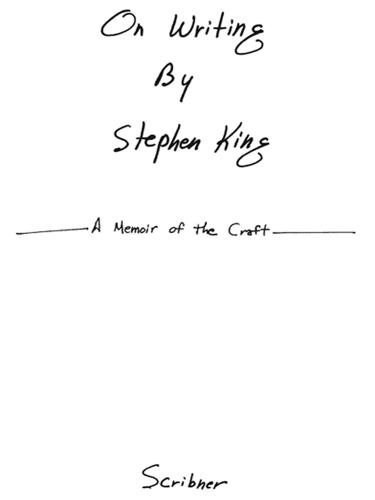
On Writing: A Memoir of the Craft
by
Stephen King
Published 1 Jan 2000
Durham and Lisbon Falls and the University of Maine at Orono were part of a small world where folks neighbored and still minded each other’s business on the four- and six-party lines which then served the Sticksville townships. In the big world, boys who didn’t go to college were being sent overseas to fight in Mr. Johnson’s undeclared war, and many of them were coming home in boxes. My mother liked Lyndon’s War on Poverty (“That’s the war I’m in,” she sometimes said), but not what he was up to in Southeast Asia. Once I told her that enlisting and going over there might be good for me—surely there would be a book in it, I said. “Don’t be an idiot, Stephen,” she said. “With your eyes, you’d be the first one to get shot.
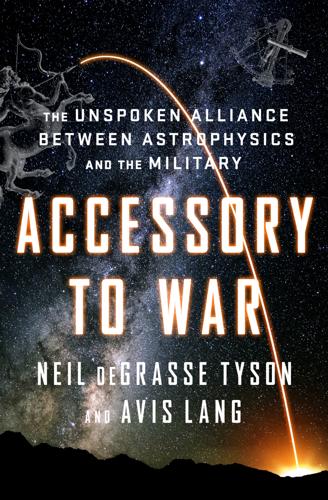
Accessory to War: The Unspoken Alliance Between Astrophysics and the Military
by
Neil Degrasse Tyson
and
Avis Lang
Published 10 Sep 2018
A senior airpower advocate and Reader’s Digest editor called the US space program too peaceable and “the wrong race with Russia.”137 Goldwater lost, overwhelmingly. Once elected, Johnson—an arm-twisting, New Deal kind of Democrat and as anti-Communist as his predecessors—presided over the passage of the 1964 Civil Rights Act, the 1964 Food Stamp Act, the 1965 Voting Rights Act, and the 1968 Fair Housing Act, all part of his “War on Poverty.” On his watch, Medicare and Medicaid were introduced, the federal minimum wage was increased, thirty-five national parks were established, and the National Endowment for the Arts and the Corporation for Public Broadcasting were created. Also on his watch, the country would witness the escalation of the Vietnam War, the ostracizing of Cuba by nearly every nation in Latin America, eruptions in America’s cities and on America’s campuses, and, shortly before the end of his term in office, the successful launch and return of the Apollo 8 spacecraft and its three-astronaut crew, who became the first humans ever to orbit the Moon—the first humans ever to leave Earth for another destination.
…
arms control treaties, 273, 289, 500n cooperation promoted at United Nations, 280 laws and programs during presidency, 287, 288–89 militarization of space, 273–74, 287, 291 nuclear weapons and, 287 Outer Space Treaty, 273, 292–93, 501n peaceful uses of space, 291–92 Senate hearings after Sputnik, 270, 279–80, 287–88, 490n, 495n space budget, 289–90, 500–501n space control as “ultimate position,” 157, 279–80 space program during presidency, 286–87, 289–91 vice presidency, 286 Vietnam War and, 289, 290, 500n War on Poverty, 288 Joint Direct Attack Munition (JDAM), 335, 336 Joint Standoff Weapon (JSOW), 335, 336 Joint Vision 2020 (Joint Chiefs of Staff), 302, 505n Jones, Alexander, 44, 422n Judt, Tony, 386 Jung, Carl, 426n Jupiter’s moons discovered, 52, 103, 109–10 K-2 and K-3 chronometers, 97 Kalhu, Iraq (Nimrud), 33, 34 Kalic, Sean, 290 kalpa, 40 kamal, 75, 339 kavengas, 68 Kazakhstan, 362, 522–23n KBR, 11 Kendall, Frank, 481n KENNAN (KH-11) satellites, 204, 205, 343, 471n Kennedy, Anthony, 53 Kennedy, John F.
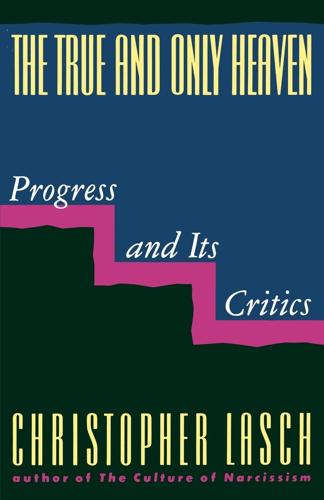
The True and Only Heaven: Progress and Its Critics
by
Christopher Lasch
Published 16 Sep 1991
Most of those elected in this Democratic resurgence at the state and congressional level—politicians like Gary Hart, John Culver, Dale Bumpers, Jerry Brown, Ella Grasso, Richard Lamm, Tom Downey, Christopher Dodd, Toby Moffett, Paul Simon, Paul Tsongas, Les AuCoin, James Blanchard, and Tim Wirth—came out of the "new politics" of the sixties and early seventies. They were graduates of the Peace Corps, the War on Poverty, the antiwar movement, and the McGovern campaign. Their opposition to the war in Vietnam, their commitment to feminism and civil rights, their impatience with the "special interests" that allegedly controlled the party (including labor), their enthusiasm for advanced technology, and their emphasis on professional competence as opposed to ideology distinguished them from older liberals like Edward Kennedy and Hubert Humphrey.
…
Wagar, Warren: on critics of progress, 44 wage labor, 64, 66, 180, 191 n., 192, 200 -201, 203-8, 212 -16, 221, 223, 224, 225, 302, 321, 326, 329, 330, 333, 337, 339, 459 Walker, Mack: on state and society, 140 Walker, Wyatt: on power of media, 398 Wallace, George C., 117, 217, 408 n., 495, 505, 525; on "pseudo-intellectuals," 38 Walling, William English: on syndicalism and revolutionary socialism, 332 -36; on syndicalism in France, 330 Wall Street Journal, 516, 522 Walpole, Horace, 195 Walsh, David, 419 Walsh, Mike: on wage labor, 203 Walzer, Michael: on social criticism, 423 -24 Warner, Lloyd: on working-class culture, 488 War on Poverty, 507 War over the Family, The (Bergers), 517 Warren, Donald, 506 Warren Report, 471, 472, 473, 474 n. Watergate, 30 Watson, Thomas E., 223, 543 Way to Wealth, The (Franklin), 256 n. "Wealth" (Emerson), 271, 272, 273, 274 Wealth of Nations, The (Smith), 54, 56 Webb, Beatrice: on syndicalism, 317 -18 Webber, Charles: on frontiersmen, 95, 97 Weber, Max, 153, 528 ; on disenchantment of the world, 144 ; on scientific and political vocations, 148 -49; on sociological concepts, 162 Webster, Samuel: on infant damnation, 247 -590- welfare state, 179, 207, 328, 340, 343 -44, 428-29, 517 Wendell, Barrett, 353 West: industrial conditions in, 336 -37; symbolism of, in popular culture, 92 -100, 299, 301 Western Federation of Miners, 336 Weyl, Walter: on distributive democracy, 342-44 Weyrich, Paul: on populism of new right, 505-6 Wharton, Edith, 281 n.
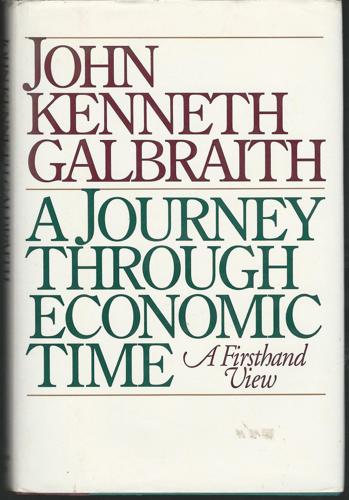
World Economy Since the Wars: A Personal View
by
John Kenneth Galbraith
Published 14 May 1994
[back] *** 3 "The Relation of Taxes to Economic Growth." Address by Ernest L. Swigert, before the National Association of Manufacturers, December 6, 1956. [back] *** 4 Alice Bourneuf, Norway: The Planned Revival (Cambridge, Mass.: Harvard University Press, 1958). [back] *** 5 The so-called war on poverty of the Johnson administration was instructive: income redistribution was to be limited to the very poor. The more important improvement in the incomes of the poor was to come from the increased productivity of that group. The ability of all shades of political opinion to endorse aspects of this program suggests the mildness of the effort.

The Great Divergence: America's Growing Inequality Crisis and What We Can Do About It
by
Timothy Noah
Published 23 Apr 2012
Panel Study of Income Dynamics brochure at http://psidonline.isr.umich.edu/Guide/Brochures/PSID.pdf; and PSID video at http://psidonline.isr.umich.edu/videos.aspx. The PSID was created as an outgrowth of some research undertaken by the Office of Economic Opportunity, the short-lived federal agency tasked with conducting President Lyndon Johnson’s War on Poverty. But where the OEO research had focused on low-income families, the PSID expanded the sampling group to include households at all income levels. 7. Interview with Isabel Sawhill, Feb. 4, 2011. 8. Chul-In Lee and Gary Solon, “Trends in Intergenerational Income Mobility” (Cambridge, MA: NBER, 2006), 16. 9.
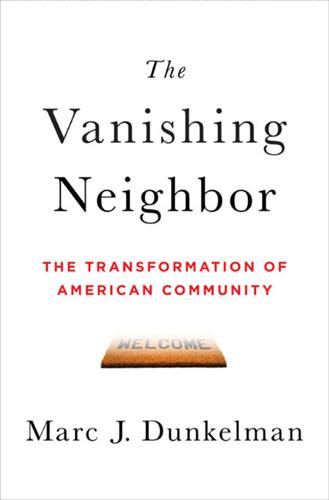
The Vanishing Neighbor: The Transformation of American Community
by
Marc J. Dunkelman
Published 3 Aug 2014
“Poverty Status of People by Family Relationship, Race, and Hispanic Origin: 1959 to 2012” by the U.S. Census Bureau, accessed on December 13, 2013. It’s worth noting that poverty rates since the Great Society have fluctuated—as Eduardo Porter pointed out (http://www.nytimes.com/2013/12/18/business/economy/in-the-war-on-poverty-a-dogged-adversary.html?ref=economicscene). But even during that period, the figure has fluctuated, falling by nearly a quarter during the Clinton years, then rising by more than 15 percent during George W. Bush’s presidency, http://www.dlc.org/documents/TheLostDecade.pdf. 9Lizabeth Cohen, A Consumer’s Republic: The Politics of Mass Consumption in Postwar America (New York: Vintage Books, 2003), 123-24. 10Fareed Zakaria, The Post-American World (New York: W.

The Weightless World: Strategies for Managing the Digital Economy
by
Diane Coyle
Published 29 Oct 1998
Even so, in the old industrial- The End of Welfare 127 ised countries we seem to have an inefficient welfare state. What it provides by way of a safety net comes at a high price, with high government spending and high taxes but at the same time declining social cohesion and no sign of an end to the war on poverty. The excess baggage that we are paying for now consists for the most part of additional entitlements not included in the original vision. Of course, high unemployment in Europe is costing governments large amounts in benefit. However, the greater long-term financial burden is concentrated in pensions, health and social security benefits of various types.

Hothouse Kids: The Dilemma of the Gifted Child
by
Alissa Quart
Published 16 Aug 2006
The lessons of Sesame Street, were strongly influenced by the educational philosophy of Maria Montessori, and from the beginning Sesame Street’s producers, the Children’s Television Workshop, made a huge effort at outreach to young children and their families in low-income areas. The show was, in fact, considered to be an extension of the 1960s “War on Poverty,” funded in part by the Department of Health, Education and Welfare, as if it were a social program. But in a certain sense, the early debates that swirled around Sesame Street are echoed today in the debates over the Baby Edutainment Complex. Sesame Street’s critics argued that young children benefit from imaginary play rather than watching television.

Randomistas: How Radical Researchers Changed Our World
by
Andrew Leigh
Published 14 Sep 2018
The societal gains massively outweighed the cost. Even the government came out ahead, with the participants paying more in additional taxes than the housing vouchers cost to provide. In the United States, large-scale social experiments date back to the 1960s. As President Lyndon Johnson announced a ‘war on poverty’, policymakers considered whether providing a guaranteed income equal to the poverty line might discourage people from working. From 1968 to 1982, experiments across nine sites randomly assigned families into treatment and control groups, and then surveyed their work patterns. The experiments showed that providing a guaranteed income reduced time spent working, but the impact was smaller than many critics expected – around two to three weeks per year.12 In coming years, the experiments helped shape reforms to the welfare system, including a massive expansion to wage subsidies in the 1990s under President Bill Clinton.13 Promising that ‘If you work, you shouldn’t be poor’, Clinton doubled the size of the Earned Income Tax Credit, pointing to the strong economic evidence that the program helped the poorest families.
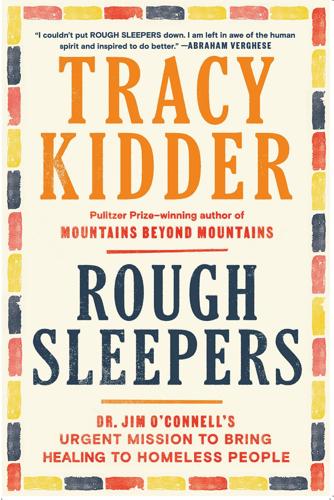
Rough Sleepers: Dr. Jim O'Connell's Urgent Mission to Bring Healing to Homeless People
by
Tracy Kidder
Published 17 Jan 2023
On one of those occasions, he cited large population studies about the tight connection between health and educational status. If he had the power, he said, he’d pay public school teachers $200,000 a year and maybe thirty years later homelessness would become a rarity. Maybe what he called “the faucet” would be turned off. More often, he spoke of a more general solution—“What we need is a new war on poverty.” In Los Angeles and many other locales, the chasm was widening between those who could afford the necessities of life and those left in poverty. But the problem of homelessness had become too large, too visible, too offensive to be ignored. And it was clear that public support for remedies could be marshaled.

Ayn Rand and the World She Made
by
Anne C. Heller
Published 27 Oct 2009
She also named him an editor of The Objectivist and of its scaled-down successor publication, The Ayn Rand Letter, until late 1974, when the Letter was discontinued. “I am tired of saying ‘I told you so,’” she wrote. The essays she contributed to almost every issue were not the sweeping policy statements of the 1960s; they were sometimes illuminating, more often bitter assessments of current events. She published position papers against the war on poverty, “selfless” hippies, affirmative action, government funding of the arts, international relief aid, the Watergate Committee—as well as in opposition to the Vietnam War and a wave of 1970s anti-obscenity legislation. She crafted a brilliant and farsighted critique of B. F. Skinner’s 1971 behaviorist manifesto, Beyond Freedom and Dignity, in which she aptly quoted Victor Hugo: “And he [the student Marius in Les Misérables] blesses God for having given him these two riches which many of the rich are lacking: work, which gives him freedom, and thought, which gives him dignity.”
…
The ring had forty rubies, one for each year she had been married to Frank, and she told the family that he had given it to her for their wedding anniversary in April. On Rand’s return to New York, Barbara Weiss reflected that she had never seen the great woman in a better frame of mind. And yet there was unremitting anger. “Those who suggest we substitute a war on poverty for the space program should ask themselves whether the premises and values that form the character of an astronaut would be satisfied by a lifetime of carrying bedpans and teaching the alphabet to the mentally retarded,” she wrote in The Objectivist. This, like her praise, was a scrap of old rhetoric, and was unseemly.
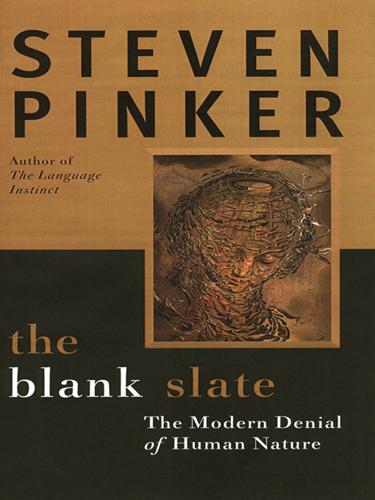
The Blank Slate: The Modern Denial of Human Nature
by
Steven Pinker
Published 1 Jan 2002
As the conservative philosopher Michael Oakshott wrote, “To try to do something which is inherently impossible is always a corrupting enterprise.” The two kinds of visionaries thereby line up on opposite sides of many issues that would seem to have little in common. The Utopian Vision seeks to articulate social goals and devise policies that target them directly: economic inequality is attacked in a war on poverty, pollution by environmental regulations, racial imbalances by preferences, carcinogens by bans on food additives. The Tragic Vision points to the self-interested motives of the people who would implement these policies—namely, the expansion of their bureaucratic fiefdoms—and to their ineptitude at anticipating the myriad consequences, especially when the social goals are pitted against millions of people pursuing their own interests.
…
People also enjoy watching the stylized combat we call “sports,” which are contests of aiming, chasing, or fighting, complete with victors and the vanquished. If language is a guide, many other efforts are conceptualized as forms of aggression: intellectual argument (to shoot down, defeat, or destroy an idea or its proponent), social reform (to fight crime, to combat prejudice, the War on Poverty, the War on Drugs), and medical treatment (to fight cancer, painkillers, to defeat AIDS, the War on Cancer). In fact, the entire question of what went wrong (socially or biologically) when a person engages in violence is badly posed. Almost everyone recognizes the need for violence in defense of self, family, and innocent victims.

Currency Wars: The Making of the Next Gobal Crisis
by
James Rickards
Published 10 Nov 2011
Despite the persistence of Bretton Woods into the 1970s, the seeds of Currency War II were sown in the mid- to late 1960s. One can date the beginning of CWII from 1967, while its antecedents lie in the 1964 landslide election of Lyndon B. Johnson and his “guns and butter” platform. The guns referred to the war in Vietnam and the butter referred to the Great Society social programs, including the war on poverty. Although the United States had maintained a military presence in Vietnam since 1950, the first large-scale combat troop deployments took place in 1965, escalating the costs of the war effort. The Democratic landslide in the 1964 election resulted in a new Congress that convened in January 1965, and Johnson’s State of the Union address that month marked the unofficial launch of the full-scale Great Society agenda.
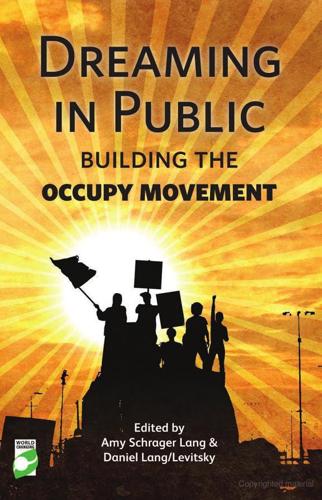
Dreaming in Public: Building the Occupy Movement
by
Amy Lang
and
Daniel Lang/levitsky
Published 11 Jun 2012
Guilty of being skint The story seemed so absurd that, when I awoke this morning ready to write about it, I wondered if I had simply dreamt it. During my fact checking, it not only proved true, but worse. When the story started, I assumed that it was part of a drive to prevent homelessness: Outlaw Homelessness, like a War on Poverty. However, this is not the case. Hungarian capital Budapest has circa 10,000 homeless people attempting to survive in it. The Conservative government has declared this too much for Budapest to bear, and therefore banned it. The law has been passed. Its implications? If you are found homeless in Hungary, you get a warning.
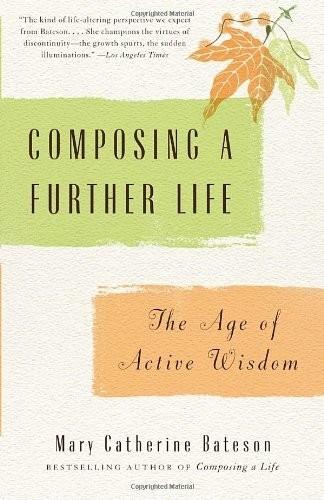
Composing a Further Life: The Age of Active Wisdom
by
Mary Catherine Bateson
Published 13 Sep 2010
“I mean, there was a belief that it was really going to be possible to fix the things that were wrong.” “Absolutely!” Jim said. “That was before cynicism.” “We really believed things were going to be fixed.” “And then everybody got killed. There was a loss of courage and a loss of hope that things could change. The War on Poverty—that was a big sign of hope, hope, hope, and then the tremendous amount of internal graft and sloppy stuff—very few of those projects really did much good.” After the assassination of John Kennedy in 1963, a series of events began that gradually changed the atmosphere. Malcolm X was assassinated in 1965.
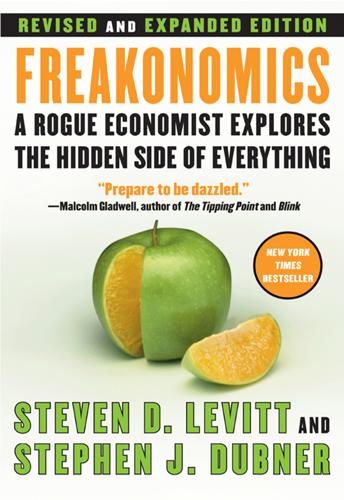
Freakonomics: A Rogue Economist Explores the Hidden Side of Everything
by
Steven D. Levitt
and
Stephen J. Dubner
Published 11 Apr 2005
THE SHRINKING OF VARIOUS BLACK-WHITe GAPS, PRE-CRACK: See Rebecca Blank, “An Overview of Social and Economic Trends by Race,” in America Becoming: Racial Trends and Their Consequences, ed. Neil J. Smelser, William Julius Wilson, and Faith Mitchell (Washington, D.C.: National Academy Press, 2001), pp. 21–40. / 103 Regarding black infant mortality, see Douglas V. Almond, Kenneth Y. Chay, and Michael Greenstone, “Civil Rights, the War on Poverty, and Black-White Convergence in Infant Mortality in Mississippi,” National Bureau of Economic Research working paper, 2003. THE VARIOUS DESTRUCTIVE EFFECTS OF CRACK are discussed in Roland G. Fryer Jr., Paul Heaton, Steven D. Levitt, and Kevin Murphy, “The Impact of Crack Cocaine,” University of Chicago working paper, 2005. 4.
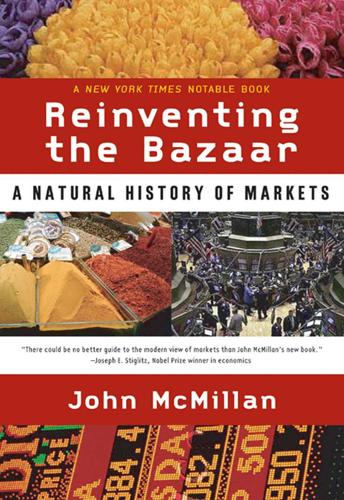
Reinventing the Bazaar: A Natural History of Markets
by
John McMillan
Published 1 Jan 2002
American Economic Review 81, 1068–1095. Rothschild, Michael, and Stiglitz, Joseph E. 1976. “Equilibrium in Competitive Insurance Markets: An Essay on the Economics of Imperfect Information.” Quarterly Journal of Economics 90, 629–650. Rozelle, Scott, Zhang, Linxiu, and Huang, Jikun. 1999. “China’s War on Poverty.” Typescript, University of California, Davis. Ruhm, Christopher J. 1996. “Alcohol Policies and Highway Vehicle Fatalities.” Journal of Health Economics 15, 437–456. Russell, Marcia. 1996. Revolution: New Zealand from Fortress to Free Market. Auckland, Hodder Moa Beckett. Sachs, Jeffrey. 1992.

Tightrope: Americans Reaching for Hope
by
Nicholas D. Kristof
and
Sheryl Wudunn
Published 14 Jan 2020
In 1962, a young writer named Michael Harrington wrote an enormously influential book called The Other America, pulling back the curtain on poverty in the United States. Harrington laid bare misery, writing not as a scold but as someone who believed in the capacity for change. Though we disagree with some of Harrington’s political views, his book opened eyes and galvanized a national debate about injustice and poverty; it helped midwife the War on Poverty a few years later. Likewise, we hope in this book to remind fellow citizens that there is another America where people are struggling and dying unnecessarily, often invisibly. “That the poor are invisible is one of the most important things about them,” Harrington noted, and as long as that remains true their problems simply won’t be addressed.
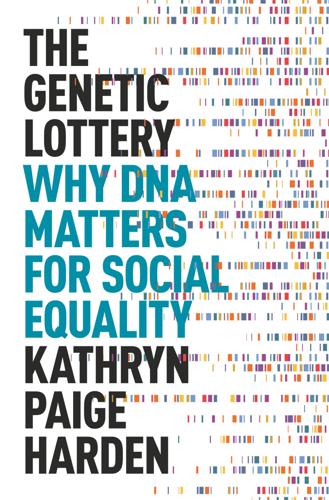
The Genetic Lottery: Why DNA Matters for Social Equality
by
Kathryn Paige Harden
Published 20 Sep 2021
Nathaniel Comfort, “How Science Has Shifted Our Sense of Identity,” Nature 574, no. 7777 (October 2019): 167–70, https://doi.org/10.1038/d41586-019-03014-4. 8. “Excuse Me, Mr Coates, Ctd,” The Dish, December 13, 2014, http://dish.andrewsullivan.com/2014/12/23/excuse-me-mr-coates-ctd/. 9. Ibram X. Kendi, How to Be an Antiracist (New York: One World, 2019). 10. Douglas Almond, Kenneth Y. Chay, and Michael Greenstone, “Civil Rights, the War on Poverty, and Black-White Convergence in Infant Mortality in the Rural South and Mississippi,” MIT Department of Economics Working Paper no. 07-04, SSRN (Rochester, NY: Social Science Research Network, February 7, 2007), https://papers.ssrn.com/abstract=961021. 11. “Flint, Michigan, Decision to Break Away from Detroit for Water Riles Residents,” CBS News,” March 4, 2015, https://www.cbsnews.com/news/flint-michigan-break-away-detroit-water-riles-residents/. 12.
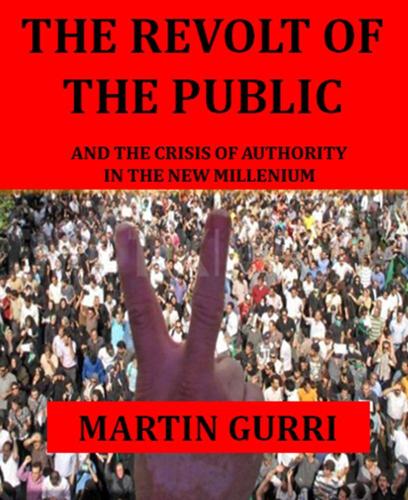
The Revolt of the Public and the Crisis of Authority in the New Millennium
by
Martin Gurri
Published 13 Nov 2018
The president never followed up on the premise of a new start for the nation, never engaged in epic combat against the dead hand of history. His mode of governing was wordy, tactical, splintered among many objectives. He wanted every deserving cause to get a donation. The stimulus never came close to matching the razzle-dazzle of Brasilia or the war on poverty, and it attracted a fierce, determined opposition from the start. The president pitched his rhetoric on an ambitious high modernist plane, but he directed the actions of his administration with late modernist timidity, constrained, to be sure, by pressure from a restless public. The profound disconnect between talk and action gives the game away.

MegaThreats: Ten Dangerous Trends That Imperil Our Future, and How to Survive Them
by
Nouriel Roubini
Published 17 Oct 2022
In 2022 the misery index was back to double digits in spite of a low unemployment rate as inflation got above 8 percent. We are due for lasting turmoil. Remembering the past can help us predict what will happen in the future. The seventies began on the heels of robust economic growth after World War II, tempered by two ultra-expensive initiatives: the war in Vietnam and the war on poverty along with the expansion of the welfare state. Investors who expected the seventies to resemble the two previous decades soon experienced disappointment. Economists Charles Goodhart and Manoj Pradhan label the period from the end of the Korean War until 1973 “a golden age for macroeconomics.” Monetary and fiscal strategies produced expected results.

Enlightenment Now: The Case for Reason, Science, Humanism, and Progress
by
Steven Pinker
Published 13 Feb 2018
An analysis by the economist Gary Burtless has shown that between 1979 and 2010 the disposable incomes of the lowest four income quintiles grew by 49, 37, 36, and 45 percent, respectively.51 And that was before the long-delayed recovery from the Great Recession: between 2014 and 2016, median wages leapt to an all-time high.52 Even more significant is what has happened at the bottom of the scale. Both the left and the right have long expressed cynicism about antipoverty programs, as in Ronald Reagan’s famous quip, “Some years ago, the federal government declared war on poverty, and poverty won.” In reality, poverty is losing. The sociologist Christopher Jencks has calculated that when the benefits from the hidden welfare state are added up, and the cost of living is estimated in a way that takes into account the improving quality and falling price of consumer goods, the poverty rate has fallen in the past fifty years by more than three-quarters, and in 2013 stood at 4.8 percent.53 Three other analyses have come to the same conclusion; data from one of them, by the economists Bruce Meyer and James Sullivan, are shown in the upper line in figure 9-6.
…
Why the United States doesn’t have a European welfare state: Alesina, Glaeser, & Sacerdote 2001; Peterson 2015. 51. Rise in disposable income in lower quintiles: Burtless 2014. 52. Income rise from 2014 to 2015: Proctor, Semega, & Kollar 2016. Continuation in 2016: E. Levitz, “The Working Poor Got Richer in 2016,” New York, March 9, 2017. 53. C. Jencks, “The War on Poverty: Was It Lost?” New York Review of Books, April 2, 2015. Similar analyses: Furman 2014; Meyer & Sullivan 2011, 2012, 2016, 2017; Sacerdote 2017. 54. 2015 and 2016 drops in the poverty rate: Proctor, Semega, & Kollar 2016; Semega, Fontenot, & Kollar 2017. 55. Henry et al. 2015. 56.
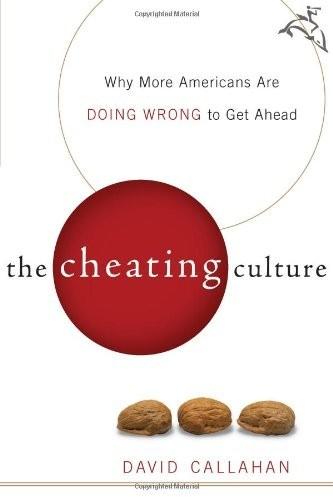
The Cheating Culture: Why More Americans Are Doing Wrong to Get Ahead
by
David Callahan
Published 1 Jan 2004
Not surprisingly, blacks and Latinos tend to be less trusting of government, corporations, and the media, as well as less trusting of other people. At the same time, many whites see some minority Americans as not doing their part to uphold the social contract. The powerful white backlash following the Civil Rights movement and the war on poverty was partly rooted in plain racism; but it was also rooted in concerns about higher crime in communities of color and a perception of a lax work ethic, low levels of personal responsibility, and little commitment to self-improvement. Carol Swain's book The New White Nationalism in America provides a troubling look at how these sentiments are playing out today in different ways than in the past.12 While there is much evidence that the racial polarization of American society is ebbing, vast divisions persist.
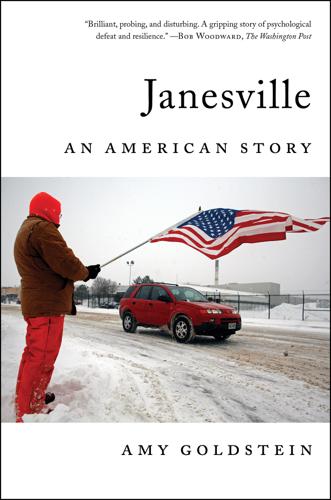
Janesville: An American Story
by
Amy Goldstein
Published 17 Apr 2017
This year, ECHO is giving away 1.4 million pounds of food—nearly twice as much as two years ago and six times as much as the year before that. For the first time, a few people who have been ECHO’s donors are standing with shame in its early-morning line to get bread and meat and canned goods. Marv knows that need has been showing up, too, at Community Action, Inc., part of a string of antipoverty nonprofits born in the federal War on Poverty of the mid-1960s. This need seems different than the kind that Community Action staffers have grown accustomed to seeing walk into their Milwaukee Street office over the decades. The staffers are now seeing new poor who, unlike the old poor, don’t want to hear about FoodShare, as food stamps are called in Wisconsin, or BadgerCare, as Medicaid is called, or any other kind of government help for people low on money.

Break Through: Why We Can't Leave Saving the Planet to Environmentalists
by
Michael Shellenberger
and
Ted Nordhaus
Published 10 Mar 2009
The baby-boom generation’s dramatic move away from traditional forms of authority—the patriarchal family, militaristic government, authoritarian schooling, and corporate hierarchy—in search of authenticity, spirituality, personal creativity, and a connection to the nonhuman world was made possible by the fact that those young people had not only met their basic material needs but had overcome the first level of postmaterialist desires for self-esteem, status, and recognition. By the time President Lyndon Johnson declared a war on poverty in 1964, America was well on its way to becoming what sociologists call a postscarcity society. In 1964 and 1965 the government established Medicare and Medicaid, created a food-stamp program, extended greater assistance to schools in poor communities, and expanded job training. In the late sixties, President Nixon proposed laws giving automatic cost-of-living adjustments for Social Security and expanding welfare.

Fortunes of Change: The Rise of the Liberal Rich and the Remaking of America
by
David Callahan
Published 9 Aug 2010
The early 1960s were the heyday of “welfare capitalism,” an era of benign big business when many executives felt an obligation to a wide range of stakeholders, including workers and the communities in which they operated. Friedman would have none of it. He kept up his attack during the 1960s, as some businesses moved in an even more liberal direction, heeding calls by President Lyndon B. Johnson to join the war on poverty with voluntary actions to lift up the poor and minorities. It would not be until the early 1970s that a real opening emerged for Friedman’s arguments. This period saw rising foreign competition, a falling U.S. stock market, and new regulations around the environment and consumer product safety.

Free to Choose: A Personal Statement
by
Milton Friedman
and
Rose D. Friedman
Published 2 Jan 1980
Allen Wallis put it in a somewhat different context, socialism, "intellectually bankrupt after more than a century of seeing one after another of its arguments for socializing the means of production demolished—now seeks to socialize the results of production." 2 In the welfare area the change of direction has led to an explosion in recent decades, especially after President Lyndon Johnson declared a "War on Poverty" in 1964. New Deal programs of Social Security, unemployment insurance, and direct relief were all expanded to cover new groups; payments were increased; and Medicare, Medicaid, food stamps, and numerous other programs were added. Public housing and urban renewal programs were enlarged. By now there are literally hundreds of government welfare and income transfer programs.
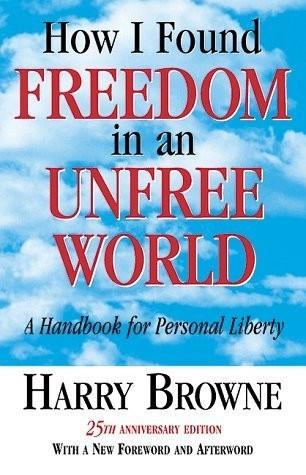
How I Found Freedom in an Unfree World: A Handbook for Personal Liberty
by
Harry Browne
Published 1 Jan 1973
Back in 1964, the government started promising an "early end" to the Vietnam War, but the promises and realities were far, far apart. At home, look at the many housing projects that were going to do away with slums. Where can a government point to a slum-free big city as proof of its effectiveness? Remember the War on Poverty? The Alliance for Progress? The Full Employment Act of 1946? Grand dreams, lots of money spent, no success. Governments have a consistent record of failure in their endeavors. Even if you're willing to force others to pay for what you want, no government is going to solve the ecology problems, make women professional equals, prevent monopolies, or fulfill any other objective you may have in mind.

Hard Times: The Divisive Toll of the Economic Slump
by
Tom Clark
and
Anthony Heath
Published 23 Jun 2014
But the real point of the story about what Washington allowed to happen to the minimum wage is what it betrays about the official attitude to poverty since the 1970s. Withholding from the smallest pay packets all the benefit of the last 60 years of economic growth indicates a malign passivity towards the lowliest living standards – an attitude that has prevailed ever since Ronald Reagan shrugged off the activism of the 1960s with the claim ‘we fought a war on poverty, and poverty won’.9 Such defeatism has gone on to infect the range of public policy. Ever since the 1970s, the real value of the American safety net, such as it was – always strictly limited to families with children – was allowed to sag steadily as prices rose, losing as much as 40% of its purchasing power by the mid-1990s.10 The most devastating damage, however, was done with the welfare ‘reform’ legislation signed by President Clinton in 1996.
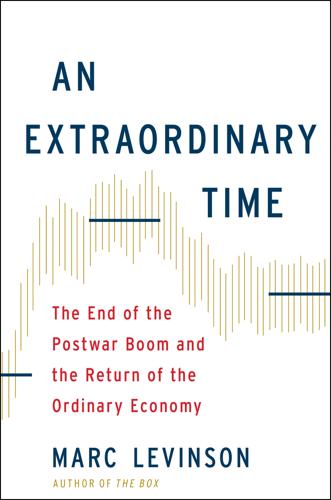
An Extraordinary Time: The End of the Postwar Boom and the Return of the Ordinary Economy
by
Marc Levinson
Published 31 Jul 2016
A year later, Italy granted all older people state-funded pensions, even if they had paid little or nothing into the pension schemes. France and Great Britain boosted child allowances much faster than inflation.13 The universal welfare state did not stop with direct payments. In January 1964, just six weeks after the assassination of President John F. Kennedy, his successor, Lyndon Johnson, declared war on poverty. Congress responded by enacting food assistance for the poor and taxpayer-funded medical care for the poor and the elderly. The United States, Great Britain, and several other countries debated the virtues of a “negative income tax,” which would have ensured each household a basic level of income, funded by the government, without requirements or restrictions.
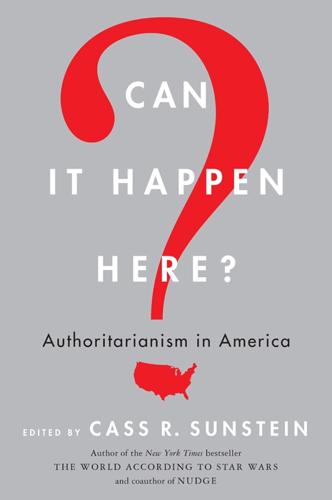
Can It Happen Here?: Authoritarianism in America
by
Cass R. Sunstein
Published 6 Mar 2018
Almost two centuries ago, Andrew Jackson was famously making war on the Bank of the United States, indulging in legally problematic uses of executive power to withdraw federal deposits from The Enemy, headed by the evil one, Nicholas Biddle. To be sure, the “war on terrorism” isn’t as much of a stretch, say, as the “war on poverty” or the “war on drugs.” Classical wars traditionally involve sovereign states attacking one another’s territorial integrity, and it may seem a small matter to expand the paradigm to cover non-state actors engaging in similar assaults: is there really such a big difference between December 7th and September 11th?
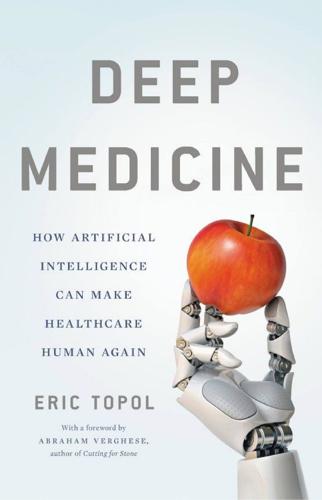
Deep Medicine: How Artificial Intelligence Can Make Healthcare Human Again
by
Eric Topol
Published 1 Jan 2019
McKinsey Global Institute. 2017. https://www.mckinsey.com/~/media/mckinsey/featured%20insights/future%20of%20organizations/what%20the%20future%20of%20work%20will%20mean%20for%20jobs%20skills%20and%20wages/mgi-jobs-lost-jobs-gained-report-december-6-2017.ashx. 69. Mason, E. A., “A.I. and Big Data Could Power a New War on Poverty,” New York Times. 2018. 70. Nedelkoska, L., and G. Quintini, “Automation, Skills Use and Training,” in OECD Social, Employment and Migration Working Papers No. 202. 2018: OECD, Paris. 71. Gibney, E., “AI Talent Grab Sparks Excitement and Concern.” Nature News & Comment, 2016. 532(7600); Metz, C., “N.F.L.

Transaction Man: The Rise of the Deal and the Decline of the American Dream
by
Nicholas Lemann
Published 9 Sep 2019
Bill Hoffman, the parent with whom Reid lived for most of his childhood, wound up working for a prominent corporate law firm, but he stayed fixed in Reid’s mind as the Berkeley-dwelling firebrand who had represented Black Panthers and spent time as a legal foot soldier in the waning days of the federal government’s War on Poverty. Reid liked to think of himself, too, as a crusader on behalf of the outsider and the underdog, but he found quite a different channel for those impulses than his father had. At the age of eight or nine, he became a devoted player of fantasy board games, especially Dungeons & Dragons. One of his classmates at Martin Luther King Jr.

The Ransomware Hunting Team: A Band of Misfits' Improbable Crusade to Save the World From Cybercrime
by
Renee Dudley
and
Daniel Golden
Published 24 Oct 2022
Only on a rare occasion did Ryuk stray from its usual brevity to explain why it was hammering Western businesses. “À la guerre comme à la guerre,” it wrote to a victim, quoting a seventeenth-century French idiomatic expression: in times of hardship, make the best of what you have. The phrase is also the title of a 1920 essay by Vladimir Lenin, urging a war on poverty, hunger, and disease. * * * Michael first encountered Ryuk when someone uploaded to ID Ransomware a file encrypted by an unfamiliar strain that had just struck three large corporations, including two in the United States. The gang was demanding six-figure payments. He and the Ransomware Hunting Team immediately recognized that they were up against a dangerous adversary.
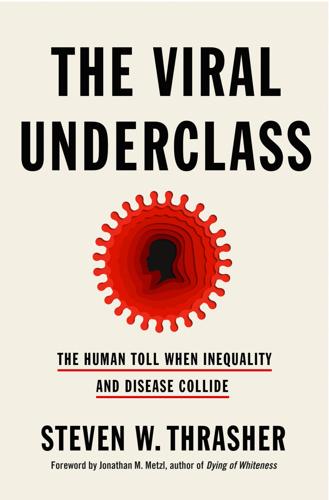
The Viral Underclass: The Human Toll When Inequality and Disease Collide
by
Steven W. Thrasher
Published 1 Aug 2022
COVID-19 hot spot Rikers Island jail: Nick Pinto, “If Coronavirus Deaths Start Piling Up in Rikers Island Jails, We’ll Know Who to Blame,” Intercept, March 23, 2020, https://theintercept.com/2020/03/23/coronavirus-rikers-jail-de-blasio-cuomo/. including Harry Truman: Naomi Murakawa, The First Civil Right: How Liberals Built Prison America (New York: Oxford University Press, 2014). Truman, Lyndon Johnson: Elizabeth Hinton, From the War on Poverty to the War on Crime: The Making of Mass Incarceration in America (Cambridge, MA: Harvard University Press, 2016). “action to end the AIDS crisis”: ACT UP, last modified 2019, https://actupny.org/. according to the New York Times: Philip Hilts, “Clinton’s Director of Policy on AIDS Resigns Under Fire,” New York Times, July 9, 1994, https://www.nytimes.com/1994/07/09/us/clinton-s-director-of-policy-on-aids-resigns-under-fire.html.
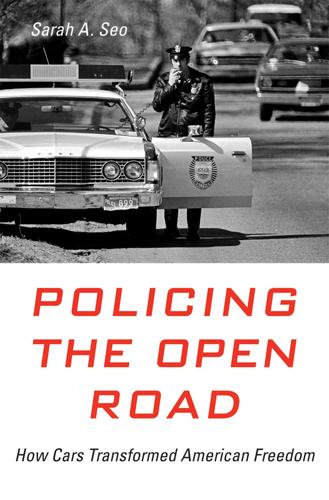
Policing the Open Road
by
Sarah A. Seo
On Judge Simeone, see “Remembering Joe Simeone,” Saint Louis University School of Law, May 5, 2015, https://perma.cc/2C3K-NAGW. 13. Franklin E. Zimring, “Continuity and Change in the American Gun Debate,” in Guns, Crime, and Punishment in America, ed. Bernard E. Harcourt (New York: New York University Press, 2003), 29–30; see also Elizabeth Hinton, From the War on Poverty to the War on Crime: The Making of Mass Incarceration in America (Cambridge, MA: Harvard University Press, 2016); Michael W. Flamm, Law and Order: Street Crime, Civil Unrest, and the Crisis of Liberalism in the 1960s (New York: Columbia University Press, 2005). On gun control laws in the 1930s, see Adam Winkler, Gunfight: The Battle over the Right to Bear Arms in America (New York: W.
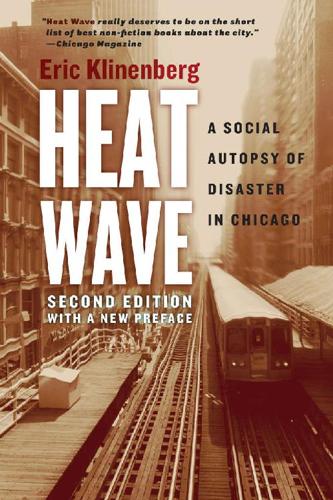
Heat Wave: A Social Autopsy of Disaster in Chicago
by
Eric Klinenberg
Published 11 Jul 2002
According to 1990 census figures, roughly 396,000 Chicagoans lived in tracts with a poverty rate of 40 percent or above, making the city the third-largest site of concentrated deprivation in the United States. It was impossible for the city government to adequately address such inequality with the resources made available to it by the federal and state governments, and it would be unreasonable to expect Daley’s administration to wage a full-fledged war on poverty on its own. But, according to studies by the Neighborhood Capital Budget Group, a local organization that monitors the use of the city budget and works on other issues of redistribution, during the 1990s the city government proved unwilling to make the fiscal contributions to the urban poor that it could have afforded.
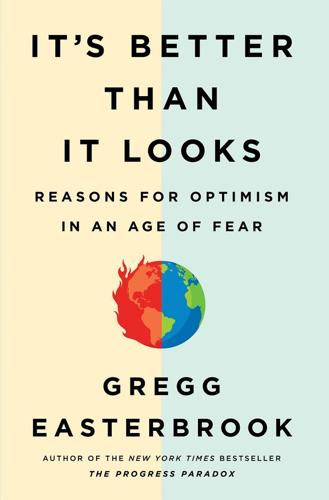
It's Better Than It Looks: Reasons for Optimism in an Age of Fear
by
Gregg Easterbrook
Published 20 Feb 2018
Versions of this concept have bounced around public policy circles for many decades. President Richard Nixon asked Congress to legislate what he called a Family Assistance Plan, an annual cash income guarantee: the House and Senate, then both Democratic, said no. A reader of Friedman, Nixon thought eliminating the complex War on Poverty regulatory bureaucracy and simply giving cash to the disadvantaged would end dependency while encouraging new businesses in run-down urban areas. At the time, big cities were viewed as about to become ungovernable, if not uninhabitable, owing to crime, drugs, unemployment, pollution, and the continuing influx of rural residents who were leaving the countryside as automation in agriculture eliminated farmhand jobs.
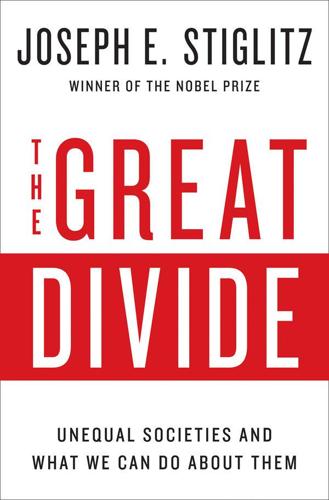
The Great Divide: Unequal Societies and What We Can Do About Them
by
Joseph E. Stiglitz
Published 15 Mar 2015
In the relief that many felt when the Supreme Court did not overturn the Affordable Care Act, the implications of the decision for Medicaid were not fully appreciated. Obamacare’s objective—to ensure that all Americans have access to health care—has been stymied: 24 states have not implemented the expanded Medicaid program, which was the means by which Obamacare was supposed to deliver on its promise to some of the poorest. We need not just a new war on poverty but a war to protect the middle class. Solutions to these problems do not have to be newfangled. Far from it. Making markets act like markets would be a good place to start. We must end the rent-seeking society we have gravitated toward, in which the wealthy obtain profits by manipulating the system.
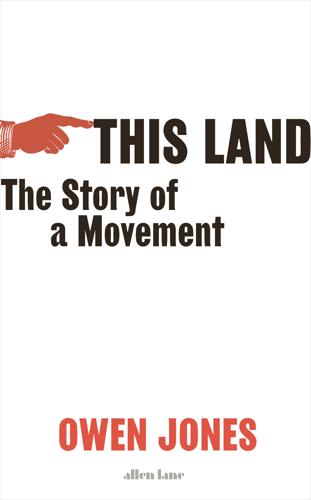
This Land: The Struggle for the Left
by
Owen Jones
Published 23 Sep 2020
Undoubtedly, the Conservative government had no choice but to enact the most dramatic expansion of the state in peacetime, which included paying the wages of half the country’s workforce. Yet this move was designed to preserve the existing failed model of capitalism, not to lay the foundations of a better alternative. A Corbyn premiership would have transformed the lives of the struggling and the insecure: from a war on poverty, to the provision of affordable housing, to the scrapping of tuition fees, to the Green Industrial Revolution which would have combatted the climate emergency, created skilled jobs and raised people’s standard of living. More to the point, it would have done all this without being compelled by an unprecedented national trauma, but out of conviction.

The Bookshop: A History of the American Bookstore
by
Evan Friss
Published 5 Aug 2024
Booksellers read, in character, from African folktales. Richardson reprised her role—fully decked out—on school visits. Schoolteachers and librarians were among Drum & Spear’s best customers. The Library Services and Construction Act (1964) and the Elementary and Secondary Education Act (1965), both part of Lyndon Johnson’s “War on Poverty,” sent millions of dollars to neighborhood and school libraries in lower-income areas. Drum & Spear’s expertise paid off at book fairs catering to public school buyers and caucuses of black librarians. The focus on children’s literature was unique within the small world of Black bookstores.
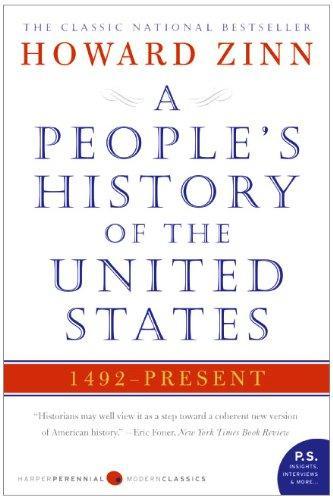
A People's History of the United States
by
Howard Zinn
Published 2 Jan 1977
The Democratic party was more responsive to these Americans, on whose votes it depended. But its responsiveness was limited by its own captivity to corporate interests, and its domestic reforms were severely limited by the system’s dependency on militarism and war. Thus, President Lyndon Johnson’s War on Poverty in the sixties became a victim of the war in Vietnam, and Jimmy Carter could not go far so long as he insisted on a huge outlay of money for the military, much of this to stockpile more nuclear weapons. As these limits became clear in the Carter years, a small but determined movement against nuclear arms began to grow.
…
Steel, 257, 331, 350, 363, 381 Van Buren, Martin, 130, 146, 148, 217, 224 Vandenberg, Arthur, 415 Vanderbilt, Cornelius, 262 Vanderbilt family, 242 Van Every, Dale, 135–36, 137, 138–39, 142, 143, 146 Vanzetti, Bartolomeo, 376 Vesco, Robert, 544, 547 Vesey, Denmark, 171, 173–74 Vietnam/Vietnam war, 9, 366–67, 411, 469, 472–501, 542, 549–54, 556, 558, 563, 618, 618–19, 631, 652 opposition to, 461, 484–94, 500–01, 516, 518, 523, 541, 542, 554, 567 Pentagon Papers, 412, 470, 472, 473, 474, 476, 481, 488, 499, 500 War Powers Act, 588 Vincent, Henry, 286 Vinson, Fred, 434, 435 Virginia (Colonial era), 12, 13, 18, 25, 41–47 passim, 50, 55, 56, 68, 78, 82, 84, 86 Bacon’s Rebellion, 37, 39–42, 45, 54, 55, 59 House of Burgesses, birth of, 43 slavery, 25, 30, 32–38 passim, 47, 72 see also Jamestown Vogel, Virgil, 15 voting: blacks, 65, 88–89, 198, 199, 203, 207, 291, 449, 454–55, 456, 458, 459, 461, 465–66, 610 Constitution, 96 15th Amendment, 198, 449 Indians, 65, 96 low voter turnout, 563 1960s and 1970s, 562 property qualifications, 49, 65, 83, 96, 214–16, 291 women, 65, 96, 110, 114, 123, 342, 343, 344–45, 384, 503 see also civil rights/civil rights movement Wadsworth, James, 359 Wake Island, 312 Walker, Charles R., 394 Walker, David, 180, 184 Walker, Margaret, 446 Wall, John, 618 Wallace, Henry, 428, 449 Wampanoag Indians, 15–16, 40 War of 1812, 127 War on Poverty, 601 War Powers Act, 553, 588 War Resister’s League, 437 Washburn, Wilcomb, 40 Washington, Booker T., 208, 209, 348 Washington, George, 85, 91, 95, 97, 125, 126 Revolutionary War, 79–80, 81, 82, 145 Washington, Mrs. George (Martha), 110 Watergate, 488, 542–49 passim, 554, 558, 631 Watergate scandal, 563, 618 Watson, Tom, 291–92 Wayland, Francis, 156 Wayne, Anthony, 81, 87 wealth distribution, 571, 612, 629, 662–64, 668 Weatherby, William, 404 Weaver, James, 289 Webster, Daniel, 142, 145, 181, 216 Weems, John, 162, 166, 167 Weil, Simone, 420 Weinberger, Caspar, 584, 585, 605 Wiener, Jon, 595 Weinstein, James, 351, 353, 365 welfare, attack on, 578–79, 647–50 Welles, Sumner, 412 Welter, Barbara, 112 West Germany, 591 Westmoreland, William, 500, 550 Wheeler, Burton, 385 White, Walter, 419 Whitman, Walt, 154 Wicker, Tom, 521, 566 Wiebe, Robert, 350 Willard, Emma, 117–18 Williams, Roger, 16–17 Williams, William Applernan, 301–02 Wilson, Charles E., 425 Wilson, Darryl B., 530 Wilson, Edmund, 237–38 Wilson, James, 70, 80 Wilson, James Q., 587 Wilson, Woodrow, 347, 349, 350, 356, 362, 381 World War I, 361, 362, 364, 365 Winthrop, John, 13, 14, 48, 108–09 Winthrop, Robert, 158 Witt, Shirley Hill, 533 Wittner, Lawrence, 419, 425 Wollstonecraft, Mary, 111 women: abolitionists, 117, 120, 121, 122, 124 abortion, 509–10, 511 blacks, 32, 103, 105–06, 184–85, 193, 202, 347, 504 change in status, 503–14 Colonial Era, 43, 44, 49, 72, 73, 102, 104–11 passim Declaration of Independence and Constitution, 72, 73, 96, 102 education, 110, 115, 118, 123, 509 exploitation and oppression, 9, 103–24 passim feminist movements: 19th century, 117, 119–23 passim, 184–85, 202; early 20th century, 342–46, 349; 1960s and 1970s, 504–14; 1980s and 1990s, 616 Indians, 5, 7, 19, 20, 104 in antinuclear movement, 603 labor, 10, 32, 43, 44, 103, 104–05, 110, 111, 114–15, 123, 228–31, 234–35, 240–41, 253, 257, 267–68, 324–27 passim, 336, 338–39, 347, 406, 504, 506–11 passim; see also labor, factory and mill system property ownership denied, 114, 123 rape, 510, 511 socialists, 341–46 passim voting, 65, 96, 110, 114, 123, 342, 343, 344–45, 384, 503 World War II, 416 Wood, Leonard, 311, 312 Woodford, Stewart, 304 Woodward, C.

Microtrends: The Small Forces Behind Tomorrow's Big Changes
by
Mark Penn
and
E. Kinney Zalesne
Published 5 Sep 2007
And after a couple months, they could be U.N. translators, if their current jobs don’t work out. Or books on tape. Extreme Commuters are the transportation equivalent of speed readers. They could get through War and Peace in twelve days, or The Da Vinci Code in five. Lyndon Johnson said he was declaring war on poverty and beginning massive urban renewal because, he predicted, 95 percent of Americans were going to live in cities. But in fact, people have spread out across the country to suburbs and exurbs faster than anyone could have predicted. (This just proves how hard it is to make assumptions about what America will look like fifty years from now—while you’re focused on a few big trends, other microtrends seep in and upset your expectations.)
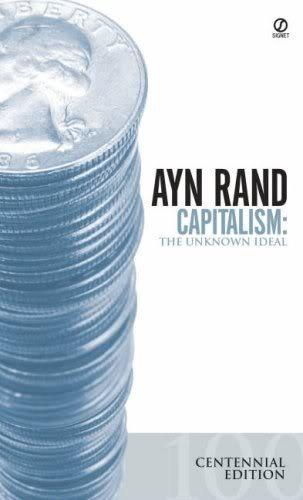
Capitalism: the unknown ideal
by
Ayn Rand
Published 15 Aug 1966
So they scream their defiance against “The System,” not realizing that they are its most consistently docile pupils, that theirs is a rebellion against the status quo by its archetypes, against the intellectual “Establishment” by its robots who have swallowed every shopworn premise of the “liberals” of the 1930’s, including the catch-phrases of altruism, the dedication to “deprived people,” to such a safely conventional cause as “the war on poverty.” A rebellion that brandishes banners inscribed with bromides is not a very convincing nor very inspiring sight. As in any movement, there is obviously a mixture of motives involved: there are the little shysters of the intellect, who have found a gold mine in modern philosophy, who delight in arguing for argument’s sake and stumping opponents by means of ready-to-wear paradoxes—there are the little role-players, who fancy themselves as heroes and enjoy defiance for the sake of defiance—there are the nihilists, who, moved by a profound hatred, seek nothing but destruction for the sake of destruction—there are the hopeless dependents, who seek to “belong” to any crowd that would have them—and there are the plain hooligans, who are always there, on the fringes of any mob action that smells of trouble.
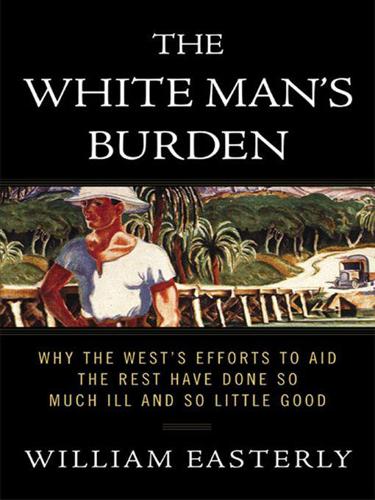
The White Man's Burden: Why the West's Efforts to Aid the Rest Have Done So Much Ill and So Little Good
by
William Easterly
Published 1 Mar 2006
Montalvo, and Marta Reynal-Querol, “The Curse of Aid,” World Bank mimeograph, April 2005. 42.Nancy Birdsall, Adeel Malik, and Milan Vaishnav, “Poverty and the Social Sectors: The World Bank in Pakistan 1990–2003,” prepared for the World Bank’s Operations Evaluation Department, September 2004. 43.World Bank Ethiopia report, 2001. 44.OECD, Poor Performers: Basic Approaches for Supporting Development in Difficult Partnerships, Paris: OECD, 2001. 45.World Bank PRSP Sourcebook 2001. 46.Interim Poverty Reduction Strategy Paper, Joint Staff Assessment, Ethiopia, 2001. 47.http://www.state.gov/g/drl/rls/hrrpt/2003/27716.htm. 48.http://web.worldbank.org/WBSITE/EXTERNAL/COUNTRIES/AFRICAEXT/0,, menuPK:258652~pagePK:146732~piPK:146828~theSitePK:258644,00.html. 49.http://lnweb18.worldbank.org/news/pressrelease.nsf/673fa6c5a2d50a67852565 e200692a79/6b834179b3fd616b85256b990077a8a7?OpenDocument. 50.Daniel Patrick Moynihan. Maximum Feasible Misunderstanding: Community Action in the War on Poverty, New York: Free Press, 1969. 51.Ronald Herring, “Making Ethnic Conflict: The Civil War in Sri Lanka,” in Milton Esman and Ronald Herring, eds., Carrots, Sticks and Ethnic Conflict: Rethinking Development Assistance, Ann Arbor: University of Michigan Press, 2001. 52.Sara Grusky, ed., “The IMF and World Bank Backed Poverty Reduction Strategy Papers.”
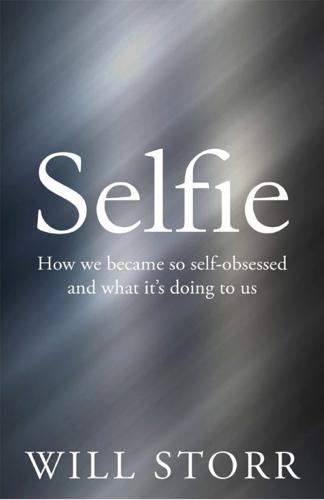
Selfie: How We Became So Self-Obsessed and What It's Doing to Us
by
Will Storr
Published 14 Jun 2017
Weren’t those noble undertakings for the common good of the kind that could only be provided by a collective organization such as the state? ‘Those ideas have been tried and some would say they didn’t work out as planned,’ he said, with a smile. ‘In what way didn’t they work?’ ‘Well, we had a so-called war on poverty in the US. Poverty is still there.’ ‘But isn’t it also simply about giving people on the bottom of the socio-economic pile a basic standard of living? There doesn’t have to be an end goal beyond making sure they’re not completely miserable.’ ‘But we still have that, to some extent.’ He seemed functionally unable to accept what I was saying, as if the continuing existence of poverty and misery was an argument against trying to altruistically lessen their effects.

The Making of an Atlantic Ruling Class
by
Kees Van der Pijl
Published 2 Jun 2014
Of Johnson, on the other hand, Hunt in 1964 said that he ‘wouldn’t mind seeing him in there for three terms’.77 If in the meantime the Vietnam war had not been decided upon by the remaining liberals in Washington, this wish might well have been fulfilled. ‘Liberalism’ at home, embodied in such programmes as the ‘War on Poverty’ which particularly infuriated conservatives, was in fact necessary to allow the offensive turn of foreign policy. The outward thrust of the Kennedy policy was based firmly in domestic reforms and expansionary measures, even if it was often left to his successor to win final congressional approval.

The Divide: American Injustice in the Age of the Wealth Gap
by
Matt Taibbi
Published 8 Apr 2014
When he was in the middle of a tough primary fight in 1992 and came out with a speech promising to “end welfare as we know it,” he could immediately smell the political possibilities, and it wasn’t long before this was a major plank in his convention speech (and soon in his first State of the Union address). Clinton understood that putting the Democrats back in the business of banging on black dependency would allow his party to reseize the political middle that Democrats had lost when Lyndon Johnson threw the weight of the White House behind the civil rights effort and the War on Poverty. If you dig deeply enough in America, the big political swings always have something to do with race. And Clinton’s vacillating but cleverly packaged campaign to “end welfare as we know it” was a brilliant ploy by the man Toni Morrison called the “first black president” to take back the southern white voters the Democrats had seemingly lost forever when they sent the FBI into Alabama and Mississippi in the 1960s.
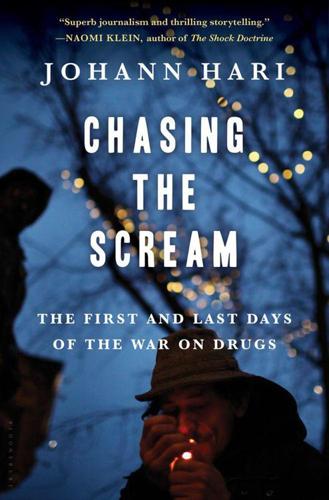
Chasing the Scream: The First and Last Days of the War on Drugs
by
Johann Hari
Published 20 Jan 2015
You can only lose it yourself.” He had a deeper ambition, one he kept to himself and told to nobody. He hoped that one day, he might write one poem that did for another human being what their poetry had done for him. Bud volunteered for VISTA, one of the antipoverty programs set up by Lyndon Johnson as part of his War on Poverty, before it was replaced by Richard Nixon’s War on Drugs. He arrived at his posting in East Harlem a year after rioters had tried to burn it down, and the block he was assigned to—at the very top of Central Park—consisted of five stories of narrow apartments with long, snaking fire escapes, and stoops facing the street that were always thrumming with people.
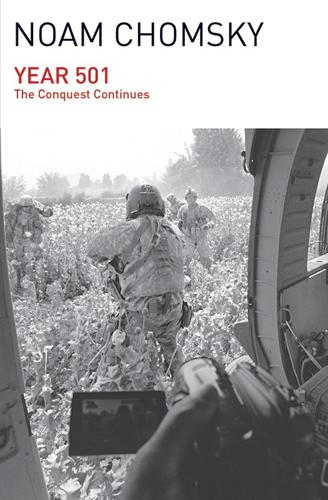
Year 501
by
Noam Chomsky
Published 19 Jan 2016
This “new wave of democracy” has “shifted politicians’ priorities” from the days when they “traditionally represented the established order.” The proof is that they have now dedicated themselves to serving the poor with an imaginative new approach: “Central Americans to use Trickle-down Strategy in War on Poverty,” the headline reads. “Committed to free-market economics,” the Presidents have abandoned vapid rhetoric about land reform and social welfare programs, adopting at last a serious idea: “a trickle-down approach to aid the poor.” “The idea is to help the poor without threatening the basic power structure,” a regional economist observes.

A Paradise Built in Hell: Extraordinary Communities That Arise in Disaster
by
Rebecca Solnit
Published 31 Aug 2010
He argued that a permanent peacetime was only viable in a society devoted to something more than pleasure, that there must be causes, hardships, demands, common struggles. He had been born into pleasure and had to struggle for meaning himself. He proposed something akin to the Peace Corps or the War on Poverty—if “there were, instead of military conscription, a conscription of the whole youthful population to form for a certain number of years a part of the army enlisted against Nature,” then even privileged youths would understand “man’s relations to the globe he lives on, and to the permanently sour and hard foundations of his higher life.

People, Power, and Profits: Progressive Capitalism for an Age of Discontent
by
Joseph E. Stiglitz
Published 22 Apr 2019
Fortunately, there was a governmental response to these grave inequities: Progressive Era legislation and the New Deal curbed the exploitation of market power and tried to address the failures of the market that had been exposed—including the unacceptable levels of inequality and insecurity to which it had given rise.28 Under President Franklin D. Roosevelt, the US passed its public old age and disability program (Social Security, officially called OASDI, Old Age, Survivors, and Disability Insurance). Later in the century, President Lyndon B. Johnson provided health care for the aged and waged a war on poverty. In the UK and most of Europe, the State ensured that all had access to health care, and the US became the only major advanced country not to recognize access to medical care as a basic human right. By the middle of the last century, the advanced countries created what were then called “middle-class societies,” in which the fruits of that progress were shared, at least to a reasonable degree, by a majority of citizens—and were it not for exclusionary labor market policies based on race and gender, even more would have shared in this progress.

Fulfillment: Winning and Losing in One-Click America
by
Alec MacGillis
Published 16 Mar 2021
A California food company needed help in getting payment for $200,000 in ingredients for the federal school lunch program, and paid a $10,000 retainer in return; Kellogg Company wanted to get its cereals into school cafeterias and paid $5,000 for assistance; the National Livestock and Meat Board paid $25,000 for a report on how congressional nutrition policy might affect the cattle industry; Mead Johnson paid $10,000 for insights into the new food program for women and infant children, which bought a lot of its baby formula. Soon, Pillsbury, Nabisco, and General Mills came knocking as well. Like that, Schlossberg and Cassidy were making enough money lobbying for businesses around War on Poverty programs to be able to afford a proper, albeit small, office at L’Enfant Plaza. The pair’s real breakthrough came in a different realm: higher education. The new president of Tufts University, nutritionist Jean Mayer, was eager to raise the profile of a college in the shadow of bigger Boston-area institutions.

The Future Won't Be Long
by
Jarett Kobek
Published 15 Aug 2017
We’re a militaristic society, born in battle, defining our historical periods through war. Bloody G. W. enthroned as our first president, the War of 1812, Baby’s idée fixe of Mr. Lincoln’s agony, WWI, WWII, Vietnam. Our silly little history ain’t much but war history. Our entire dialogue is a reference to war. The War on Drugs. The War on Poverty. Link that with our present-day empire in decline, our high point hit around 1963, and armies of animated corpses begin to make a semiotic sense. I’m not a girl who holds much truck with allegory, intentional or otherwise, but one can’t miss the equation. War culture + societal death trip = a nation enthralled with images of the walking dead.

War and Gold: A Five-Hundred-Year History of Empires, Adventures, and Debt
by
Kwasi Kwarteng
Published 12 May 2014
‘This Nation is mighty enough,’ he thundered, ‘its society is healthy enough, its people are strong enough, to pursue our goals in the rest of the world while still building a Great Society here at home.’12 None of the Congressmen present could have doubted the strength of the President’s conviction or the vigour of his idealism. In the course of his address, Johnson challenged Americans to ‘prosecute with vigor and determination our war on poverty’. He urged them to ‘rebuild completely, on a scale never before attempted, entire central and slum areas of several of our cities’. But his address acknowledged the continuing effects of the Vietnam War. Despite his enthusiasm for the Great Society, the war meant that he could not achieve ‘all that we should’, or indeed all that ‘we would like to do’.
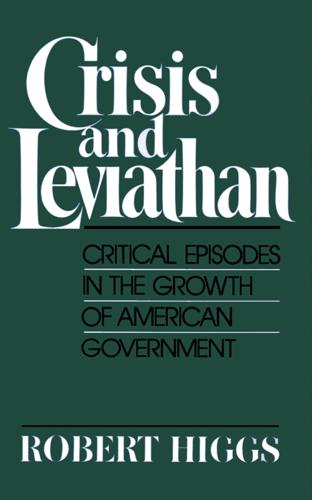
Crisis and Leviathan: Critical Episodes in the Growth of American Government
by
Robert Higgs
and
Arthur A. Ekirch, Jr.
Published 15 Jan 1987
In such an event "simple causes seem to be evident for all to see, ... simplistic Crisis and Leviathan 251 solutions lie near at hand and command consensus, and ... the upper and middle classes of the population can identify with efforts to solve someone else's problems." In Brown's view the urban crisis of the sixties exemplifies a good crisis: its causes were taken to be poverty and racism; a "war" on poverty and racial discrimination would eliminate them once and for all; both the legislators and the poverty fighters liked this kind of war. 37 (By such criteria World War II was an even "better" crisis.) Whether one views the twin crises of the mid-sixties as especially "good" or not, they were clearly fundamental in the creation of sociopolitical conditions favorable to the regulatory outburst that began then.
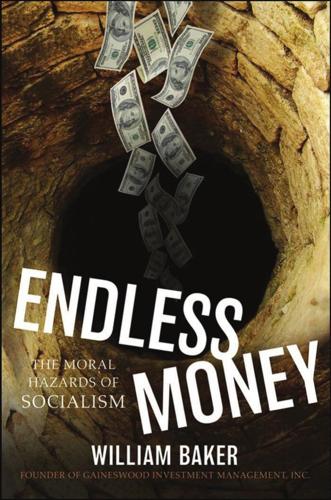
Endless Money: The Moral Hazards of Socialism
by
William Baker
and
Addison Wiggin
Published 2 Nov 2009
By watching two outcomes, real growth and inflation, the central bank might pursue a flexible path that responds to market conditions, 76 ENDLESS MONEY yet telegraphs to market participants that credit growth might be restrained within a friendly channel. Thus, in periods such as the 1960s when President Johnson pressured the Fed to monetize government spending for the war on poverty and the Vietnam conflict, the central bank might defend maintaining a prudent stance with this institutionalized formula. But a larger theoretical question gnaws at the accepted convention of inflation targeting, even if it is improved through considering real growth as well. Is the primary outcome being targeted—inflation—really the underlying problem, or is it a symptom?

More: The 10,000-Year Rise of the World Economy
by
Philip Coggan
Published 6 Feb 2020
The US had $13.2bn of gold reserves, but only $3bn of that was available to pay foreigners; the rest was needed to back the domestic money supply.71 At the time, the US was pursuing an expansionary fiscal policy (with spending outstripping tax revenues), as President Lyndon Johnson tried to finance both the Vietnam War and his “war on poverty”, including the Medicare and Medicaid health insurance programmes. The American authorities tried various expedients to stop the dollar outflow. In 1963 and 1964, they passed the Interest Equalisation Tax, making it less attractive for Americans to buy overseas assets. But that change merely encouraged the development of a new financial market, whereby foreigners lent and borrowed dollars from each other.
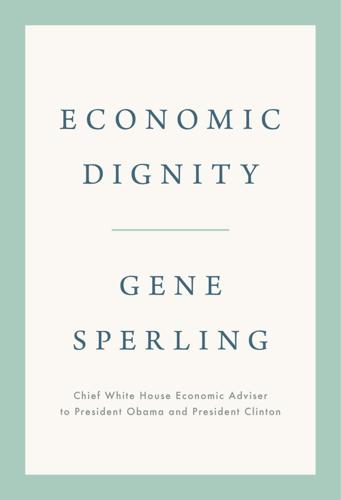
Economic Dignity
by
Gene Sperling
Published 14 Sep 2020
v=HytBikkoTyc; Isaac Shapiro et. al, “It Pays to Work: Work Incentives and the Safety Net,” Center on Budget and Policy Priorities, March 3, 2016, https://www.cbpp.org/research/federal-tax/it-pays-to-work-work-incentives-and-the-safety-net; Jordan Weissmann, “It’s a Trap! Paul Ryan’s Theory on Poverty Is Tricksy—and Wrong,” Slate, March 5, 2014, https://slate.com/business/2014/03/paul-ryan-war-on-poverty-federal-programs-are-not-a-poverty-trap.html; and “Read the House GOP’s Poverty Report,” Washington Post, March 2, 2014, http://apps.washingtonpost.com/g/page/politics/read-the-house-gops-poverty-report/850/. 20. Sharon Parrott, “Rubio Proposal to Replace EITC Would Likely Come at Expense of Working-Poor Families with Children,” Off the Charts (blog), Center on Budget and Policy Priorities, January 9, 2014, https://www.cbpp.org/blog/rubio-proposal-to-replace-eitc-would-likely-come-at-expense-of-working-poor-families-with. 21.

If Mayors Ruled the World: Dysfunctional Nations, Rising Cities
by
Benjamin R. Barber
Published 5 Nov 2013
More or less the entire urban population of Ethiopia lives under slum conditions, while sub-Saharan Africa is home to more of the world’s worst slums than any other region.8 While the absence of a baseline until recently makes it difficult to assess trends, U.N.-Habitat suggests there is little evidence that things are improving or that the underlying conditions are being addressed. The New York Times reported recently that since Lyndon Johnson’s War on Poverty fifty years ago, “despite the expenditure of more than $16 trillion on means-tested programs . . . the portion of Americans living beneath the poverty line, 15%, is higher than in the Johnson administration.”9 Depressing as these American statistics are, comparing figures from around the world with those from the United States suggests that there is not one planet of slums, but two.

Capitalism in America: A History
by
Adrian Wooldridge
and
Alan Greenspan
Published 15 Oct 2018
LBJ believed, with some justification, that Kennedy’s assassination required a grand gesture in response. He also believed, with less justification, that his own genius deserved to be memorialized in great legislation. Standing before Congress six weeks after the assassination, he declared “unconditional war on poverty.” “The richest nation on earth can afford to win it,” he said. “We cannot afford to lose it.” In the space of a single Congress, in 1965–66, LBJ passed a raft of laws committing America to create nothing less than a new society—“We have the opportunity to move not only toward the rich society, and the powerful society, but upward to the Great Society.”
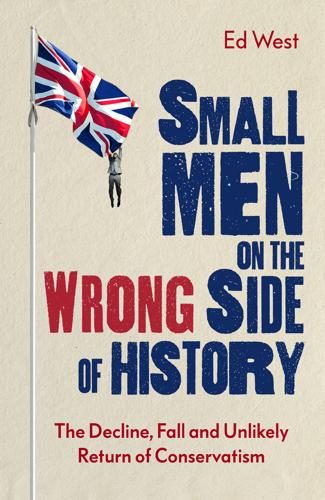
Small Men on the Wrong Side of History: The Decline, Fall and Unlikely Return of Conservatism
by
Ed West
Published 19 Mar 2020
But once you move the bulk of people out of destitution those who remain will be harder to help, and increasingly people still left in poverty are there largely because of their inability to function or make good decisions. In the US absolutely poverty declined from 25 per cent in 1950 down to 19.5 per cent in 1963 and 14.7 per cent in 1966, after which the Democrats launched the ‘War on Poverty’; in 2013, after $15 trillion had been spent on this war, the rate was 14.5 per cent.22 Diminishing returns are probably most keenly felt in attempts to achieve gender equality in employment, which conservatives believe to be literally impossible so long as people will keep having children. By allowing women freedom to work you will rapidly increase their share of the labour market from 0 per cent but that figure will increasingly slow down as it reaches 50 per cent, and in some professions will not get anywhere near that.

Ashes to Ashes: America's Hundred-Year Cigarette War, the Public Health, and the Unabashed Triumph of Philip Morris
by
Richard Kluger
Published 1 Jan 1996
Tobacco’s sway was no less apparent in the White House, where Lyndon Johnson had become the first President from a state of the old Confederacy since the antebellum era (not counting Wilson, a transplanted Virginian). Johnson was much in need of votes from his fellow Southerners to put across his ambitious social programs, including the broadening of civil rights, medical care for the elderly, and a war on poverty—none of them issues likely to stir an outpouring of affection in Dixie. A heavy smoker himself until he suffered a serious heart attack while serving as Senate majority leader in 1955 and was ordered by his doctors to quit the habit, the President told reporters a few months after the Surgeon General’s panel had reported, “I’ve missed it [smoking] every day, but I haven’t gone back on it, and I’m glad that I haven’t.”
…
In this age of domestic turbulence, there was no discrete “health lobby” with its champions in Congress—only a far-flung and unorganizable assortment of individual Americans worried about the cigarette habit. And there was no leadership on the issue from Lyndon Johnson’s administration, engaged in the fight for social justice and its war on poverty. “We were in monumental battles,” recalled Joseph A. Califano, Jr., then a key (and heavy-smoking) White House aide. “Our focus in the South was on desegregation—we were making enough enemies as it was,” and so to have pushed for regulation of the tobacco industry would likely have compounded the problems besetting the administration.

Days of Fire: Bush and Cheney in the White House
by
Peter Baker
Published 21 Oct 2013
Probably we were both right.” Cheney went to work instead for another Republican congressman, William Steiger. The next year, as Cheney’s family grew with the birth of another daughter, Mary, Rumsfeld was tapped by President Richard Nixon to run the Office of Economic Opportunity overseeing the war on poverty. Cheney took it upon himself to write a twelve-page memo with suggestions. Rumsfeld summoned him back with equal brusqueness but a different outcome. “You,” Rumsfeld barked at Cheney, never looking up. “You’re congressional relations. Now get the hell out of here.” An FBI background check later turned up Cheney’s drunk-driving arrests, which he had disclosed.
…
At the same time, he emphasized that Arab Americans should not be scapegoated. Tom Daschle grew concerned by the talk of war. Not that he did not regard what happened as a singular assault on the United States, but he noted that the term “war” had been used indiscriminately over the years—the war on poverty, the war on cancer, the war on drugs. Daschle felt they should avoid once again using a term that might not result in a tangible victory. “War is a very powerful word,” he told Bush. “This war is so vastly different. Take great care in your rhetorical calculations.” Some Bush advisers were quietly stunned.
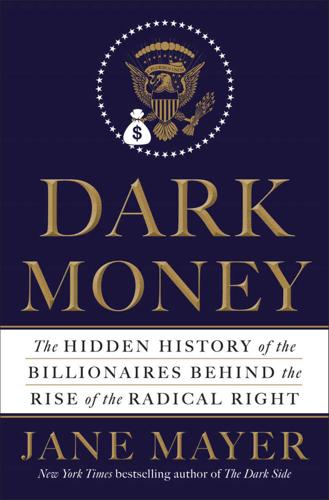
Dark Money: The Hidden History of the Billionaires Behind the Rise of the Radical Right
by
Jane Mayer
Published 19 Jan 2016
There, he assumed the title of dean. The school taught a revisionist version of American history in which the robber barons were heroes, not villains, and the Gilded Age was the country’s golden era. Taxes were denigrated as a form of theft, and the Progressive movement, Roosevelt’s New Deal, and Lyndon Johnson’s War on Poverty, in the school’s view, were ruinous turns toward socialism. The weak and poor, the school taught, should be cared for by private charity, not government. The school had a revisionist position on the Civil War, too. It shouldn’t have been fought; instead, the South should have been allowed to secede.
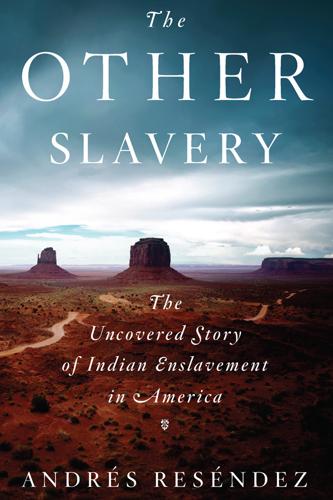
The Other Slavery: The Uncovered Story of Indian Enslavement in America
by
Andrés Reséndez
Published 11 Apr 2016
The plaintiff also claimed that he had been punished and threatened, charges the ranch owner denied. By way of context, Gonzales’s lawyer added that in some counties of northern New Mexico, as many as forty to fifty percent of rural workers lived in what he characterized as “a state of semi-peonage.” Not everyone agreed with such a high amount. The War on Poverty administrator in New Mexico, Alex Mercure, estimated the number of agricultural workers living in “economic peonage” to about 120,000 in the entire state.29 Epilogue IN THE LATE nineteenth century, as the United States emerged as an economic superpower and a magnet for workers from around the world, new forms of the other slavery arose all across the nation.

New Market Wizards: Conversations With America's Top Traders
by
Jack D. Schwager
Published 28 Jan 1994
I know what I’m going to say can be easily misconstrued, but if 1 could set up a system where I could make money off the poor, then I would have achieved my goal. I know that sounds crass. Of course, my objective is not to make money off the poor, but the point is that charity tends to spawn dependency. That’s why the Great Society war on poverty was such a failure. In contrast, if I can establish someone in a business where he can return my money, then I know his situation is stable. 338 / The New Market Wizard Would you mind saying roughly what percentage of your income you funnel into these efforts to help the poor? As a sweeping generalization, roughly one-third goes to Uncle Sam, onethird I put back into my account to increase my trading size, and one-third I dispense to these various projects.

Generations: The Real Differences Between Gen Z, Millennials, Gen X, Boomers, and Silents—and What They Mean for America's Future
by
Jean M. Twenge
Published 25 Apr 2023
As we saw in Chapter 2, these decades also saw substantial increases in Black Americans earning high school degrees. The passage of the Civil Rights Act of 1964, which outlawed job discrimination based on race, opened up more opportunities for Black people, particularly young Boomers. The same year, President Lyndon Johnson (b. 1908) declared a “War on Poverty,” introducing programs such as Medicare and Medicaid, food stamps, and the Head Start preschool program. Child poverty had already been falling in the early 1960s, and then dropped even more, with much of that decrease driven by a huge drop in poverty among Black Americans. In the space of just five years from 1965 to 1970, poverty among Black children dropped 37%, with poverty sinking from a shocking 66% of children to 40% (see Figure 3.16).

Never Let a Serious Crisis Go to Waste: How Neoliberalism Survived the Financial Meltdown
by
Philip Mirowski
Published 24 Jun 2013
Staged acts of everyday sadism do not seek to confront the audience with an inconvenient truth they refuse to recognize; rather, they promote the reign of a double truth by appealing to a convenient rationalization that the audience can feel under its skin: If the losers, the poor, the lost, the derelict, and the dissolute would only exit the stage after their fifteen seconds of notoriety, having abjectly accepted their status, never to be heard from again, the world would seem a much better place, wouldn’t it? To drive these lessons home, a spectacle must be made out of random outbreaks of misfortune. Thus the erstwhile war on poverty has become a guerrilla war on the poor in the contemporary theater of cruelty. Past standard harassment, there really would otherwise be very little point in subjecting the destitute to further irrational punishment, unless, of course, the purpose of the exercise was instead to exemplify, titillate, and instruct an audience.

Power and Progress: Our Thousand-Year Struggle Over Technology and Prosperity
by
Daron Acemoglu
and
Simon Johnson
Published 15 May 2023
Dwight Eisenhower had already moved in the same direction, defining himself as a “modern Republican,” meaning that he was going to maintain most of what was left of the New Deal. It was not just regulation. The 1960s witnessed the success of the civil rights movement and greater mobilization among left-wing Americans supporting civil rights and further political reforms. Lyndon Johnson initiated the Great Society program and the War on Poverty, adapting some key tenets of a European-style social safety net to the US context. Not everyone saw these changes as beneficial. Constraints on business conduct often benefited workers and consumers but were resented by business owners and executives. Segments of the business sector had been organizing against regulations and legislation strengthening labor unions since the beginning of the twentieth century.

Apollo
by
Charles Murray
and
Catherine Bly Cox
Published 1 Jan 1989
“I watched no television, read no newspapers, came to work at six in the morning and worked until nightfall, six or seven days a week for years.” The people of Apollo were barely aware that the Vietnam War was going on, barely aware that this was a Presidential election year, barely aware that there was such a thing as a War on Poverty or L.S.D. or Sgt. Pepper or race riots. Had one of Chris Kraft’s flight controllers been asked about the most important event so far of 1968, he would probably have said that it had occurred on January 22, when the unmanned Apollo 5 had carried a lunar module on its first test flight. Today, April 4, was going to be the next important date of 1968: the unmanned flight of Apollo 6, the second flight of a fully operational Saturn V.
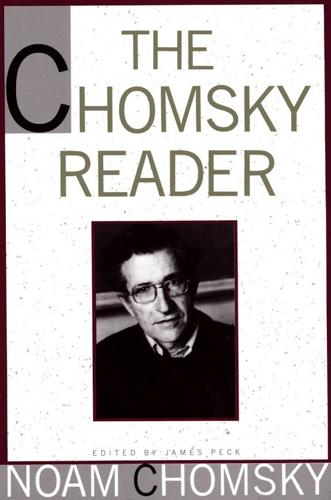
The Chomsky Reader
by
Noam Chomsky
Published 11 Sep 1987
As the “experiments in material and human resources control” collapse and “revolutionary development” grinds to a halt, we simply resort more openly to the Gestapo tactics that are barely concealed behind the facade of “pacification.” When American cities explode, we can expect the same. The technique of “limited warfare” translates neatly into a system of domestic repression—far more humane, as will quickly be explained, than massacring those who are unwilling to wait for the inevitable victory of the war on poverty. Why should a liberal intellectual be so persuaded of the virtues of a political system of four-year dictatorship? The answer seems all too plain. *The quoted testimony is from September 1, 1937; presumably, the reference is to September 1936. *Orwell had just returned from the Aragon front, where he had been serving with the POUM militia in an area heavily dominated by left-wing (POUM and anarchist) troops.

Cultural Backlash: Trump, Brexit, and Authoritarian Populism
by
Pippa Norris
and
Ronald Inglehart
Published 31 Dec 2018
In the mid-1950s, the Democratic Party started to shift its position on civil rights, a critical issue dividing Northern liberal representatives from Southern segregationists. In the 1960s, during the era of President Johnson, Congressional Democrats from Northern states moved in a more socially liberal direction on issues such as the War on Poverty, Civil Rights, and the Equal Rights Amendment. When the liberal wing of the Democratic Party pushed through the 1964 Civil Rights Act, it began shifting their core 334 Trump’s America base toward African-Americans, Hispanics, and other ethnic minorities. Segregationist white Southerners, who previously provided a solid bloc of support for the Democrats, increasingly shifted to the Republicans.13 During these years, the Republican Party remained fairly moderate and mainstream – with the notable exception of the 1964 Goldwater presidential campaign, in which the Republicans suffered a crushing defeat.

The Code: Silicon Valley and the Remaking of America
by
Margaret O'Mara
Published 8 Jul 2019
Eisenhower had always been anxious about the influence and expense of the defense complex, and he had ordered DOD to trim its budgets toward the end of his term. His Democratic successors accelerated the cost-cutting—less out of nervousness about the power of the generals, and more because they had so much else they wanted to do. Kennedy and Johnson had bold ambitions to wage war on poverty, deliver new social programs, go to the moon, and cut taxes at the same time. And then there was that increasingly expensive little war in Vietnam. Deficit spending could only go so far; more fiscal reshuffling needed to happen, particularly in the defense and aerospace budget, where uncapped, sole-source contracts had led to ballooning project costs that the military wasn’t well-equipped to control.
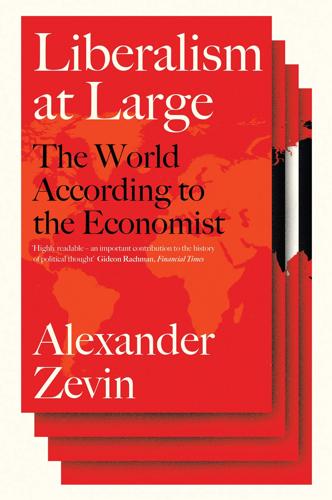
Liberalism at Large: The World According to the Economist
by
Alex Zevin
Published 12 Nov 2019
‘White Americans fear (probably rightly) that “black power” ideology may make some Negro youths feel that robberies and assaults on white women are almost a noble act of black revolution.’ White students egging on black comrades at protests, as well as the ‘temporary tolerance of violence by many American white liberals’, particularly incensed him. Stimulus was needed on a scale unimagined even by Johnson’s War on Poverty, to head off ‘mortal peril’. America ‘would be wise to give almost overstrained priority to maximum economic growth, even though this will mean tolerating more inflation than its middle classes will like’.58 But just as important was reassuring those middle classes by empowering police and suppressing locally elected community action programs, to ‘encourage an exodus from the ghettos at all deliberate speed’.59 Macrae’s strong feelings about law, order and local democracy in the US had a personal element, which he disclosed towards the end of the survey.
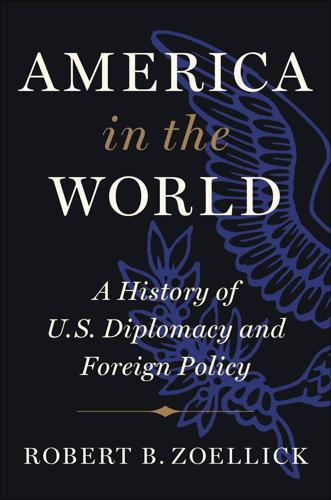
America in the World: A History of U.S. Diplomacy and Foreign Policy
by
Robert B. Zoellick
Published 3 Aug 2020
After the shocking assassination of President Kennedy the previous November, Johnson had skillfully redirected the nation toward fulfilling the martyred leader’s congressional agenda. LBJ had capably assumed the mantle of trustee for the country’s lost captain. Johnson had been a masterful majority leader of the Senate during the 1950s. He knew how to manipulate the levers of power in Washington, especially in the Congress. In January 1964, he called for a war on poverty and began mobilizing his social service vanguard through the Economic Opportunity Act. In February, the president steered JFK’s stalled tax bill to passage. That same month, the House passed LBJ’s far-reaching Civil Rights Act, and by May the president was maneuvering to end the Senate debate on the bill; early in June, Johnson overcame a filibuster on civil rights legislation for the first time in the Senate’s history.

Global Catastrophic Risks
by
Nick Bostrom
and
Milan M. Cirkovic
Published 2 Jul 2008
Few problems turned out to be as 'intolerable' as they seemed to people at the time, and many 'problems' were better than the alternative. Countries that 'did nothing' about poverty during the twentieth century frequently became rich through gradual economic growth. Countries that waged 'total war' on poverty frequently not only choked off economic growth, but starved. Along these lines, one particularly scary scenario for the future is that overblown doomsday worries become the rationale for world government, paving the way for an unanticipated global catastrophe: totalitarianism. Those who call for the countries of the world to unite against threats to humanity should consider the possibility that unification itself is the greater threat. 22.4 Totalitarian risk management 2 2 . 4 . 1 Tech n o logy Dwelling on technology-driven dystopias can make almost anyone feel like a Luddite.
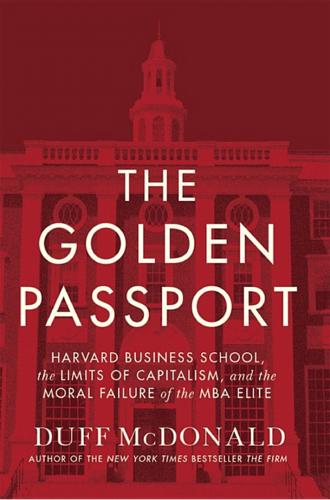
The Golden Passport: Harvard Business School, the Limits of Capitalism, and the Moral Failure of the MBA Elite
by
Duff McDonald
Published 24 Apr 2017
The “development of the modern business enterprise can be understood only as a comprehensive effort to reduce risk,” wrote economist John Kenneth Galbraith, who was also a notable dissenter from the prevailing opinion that government efforts to provide security for the broader public—via unemployment compensation or Social Security, to name just two—were contrary to the national ethos.20 Even a few ’49ers thought so. In 1968, Roger Sonnabend, who had taken the reins of his family’s hotel business (later renamed Sonesta International Hotels), signed on as regional chairman of the National Alliance of Businessmen, a rare corporate partner in Lyndon Johnson’s War on Poverty, and he explained his reasons in terms his fellow HBS grads could understand. “Social responsibility—and expanding profitability—are not intrinsically at odds with one another,” he said. “Quite the contrary—they are two faces of the same coin.”21 If the majority of those associated with HBS never stopped insisting that what was good for business was good for America, Sonnabend saw it the other way around, arguing that “what is best for America is best for business.”22 When David Callahan writes that the ’49ers “laid the groundwork for the great boom of the 1990s,” he has a point, but only insomuch as the ’39ers, ’29ers, and ’19ers did, too.

Basic Economics
by
Thomas Sowell
Published 1 Jan 2000
{649} Milton Friedman, Capitalism and Freedom (Chicago: University of Chicago Press, 1962), p. 14. {650} Tyler Cowen “Public Goods and Externalities,” The Fortune Encyclopedia of Economics, edited by David Henderson (New York: Warner Books, 1993), pp. 74–77. {651} Daniel P. Moynihan, Maximum Feasible Misunderstanding: Community Action in the War on Poverty (New York: The Free Press, 1969), p. xv. {652} Daniel Yergin and Joseph Stanislaw, The Commanding Heights, pp. 62–63. {653} Ibid., p. 63. {654} Herbert Stein, “Wage and Price Controls: 25 Years Later,” Wall Street Journal, August 15, 1996, p. A10. {655} Gurcharan Das, India Unbound, p. 313
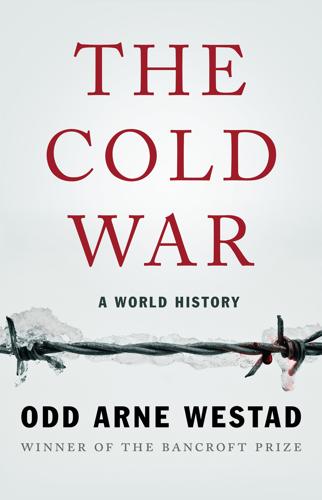
The Cold War: A World History
by
Odd Arne Westad
Published 4 Sep 2017
Entitled The Stove and the Cannibal: An Essay on the Connections Between the State, Marxism, and the Concentration Camps, the book argued that Marxism in any form led to totalitarianism. In the United States, too, former socialists—like Georgetown professor Jean Kirkpatrick, and radicals like Daniel Patrick Moynihan, one of the architects of Johnson’s War on Poverty—began stressing individual rights and choices over welfare provisions. Some of the reinvigorated preoccupation with personal liberties in the West linked up with the critique of Stalinist society coming from Soviets and east Europeans. The Soviet Nobel laureate Aleksandr Solzhenitsyn stood out as one of the bravest investigators of his government’s crimes.
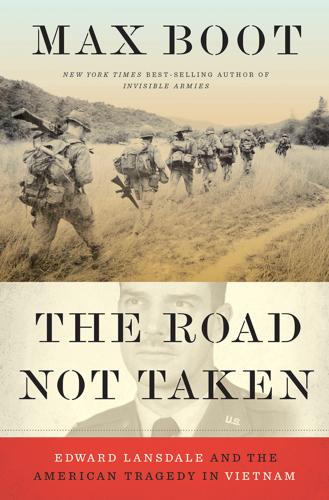
The Road Not Taken: Edward Lansdale and the American Tragedy in Vietnam
by
Max Boot
Published 9 Jan 2018
‘there was no flailing.’ ”20 Another aide, Bill Moyers, said after JFK’s assassination, “I’ve never seen him as controlled, as self-disciplined, as careful and as moderate as he’s been this week.”21 Johnson plunged into the presidency with “cyclonic vigor.”22 Determined to outdo his hero, Franklin Delano Roosevelt, he launched a “war on poverty” that was to result in the creation of the Job Corps, the Community Action Program, VISTA (Volunteers in Service to America), Head Start, Food Stamps, Medicare, Medicaid, and many other idealistic and costly initiatives designed to foster a “Great Society.” Johnson also won passage of the Civil Rights Act of 1964 and then of the Voting Rights Act of 1965, two landmark pieces of legislation that the less Machiavellian Kennedy had not been able to pass in the face of Southern filibusters.

Presidents of War
by
Michael Beschloss
Published 8 Oct 2018
Benefiting from his coattails, more Democrats dominated the Senate (68 to 38) and House (295 to 140) than under any President since Franklin Roosevelt. In his speech, opposite to Kennedy’s in 1961, he spoke exclusively of domestic affairs, for he planned to make fundamental changes in American life—with his War on Poverty, voting guarantees for all Americans, Medicare, aid to education, and other initiatives—that would install the architect of the Great Society in the record books. Three days after being sworn in, at 2:26 on Saturday morning, Johnson was hurried by ambulance from the White House to Bethesda Naval Hospital.

Palo Alto: A History of California, Capitalism, and the World
by
Malcolm Harris
Published 14 Feb 2023
Bobby Seale, for example, was an air force vet studying engineering and design at Merritt while he worked at Kaiser Aerospace.33 Huey Newton was in and out of prison as a kid, and he disdained the substandard Oakland schools until he made his way to Merritt, where he studied law and thrived. There they got pulled into the RAM milieu, from which Newton and Seale spun off their own, distinct local analysis. Democrats were not totally insensitive to the situation’s perilous dynamics. Johnson’s War on Poverty attempted to alleviate the urgent pressure in the ghetto as unemployment mounted, partly by hiring black college students and recent graduates to do community work. Critics on the right called the programs bribes to the black communities, while critics on the left said they were the state’s one step forward to go along with capitalism’s two steps back.

The Radical Fund: How a Band of Visionaries and a Million Dollars Upended America
by
John Fabian Witt
Published 14 Oct 2025
“uplift”: RNB, “Recollections of a Life in Civil Liberties,” Civil Liberties Review 39 (1975): 41. 19. city’s population… “squalid and dirty”: Walter S. Johnson, The Broken Heart of America: St. Louis and the Violent History of the United States (Basic Books, 2020), 181–215; James Neal Primm, Lion of the Valley: St. Louis, Missouri (Pruett, 1990), 357. “begging girls”: Robert H. Lauer and Jeanette C. Lauer, “Will a Private War on Poverty Succeed? The Case of the St. Louis Provident Association,” Journal of Sociology & Social Welfare 10 (1983): 12, 19. crowded with fights: Lamson, Roger Baldwin, 30. 20. “Whiskey Ring”: Primm, Lion of the Valley, 318–24. “been stealing elections”… “blacksmith-politician”: “The Trial of Edward Butler for Bribery, Columbia, Missouri, November, 1902,” in John D.
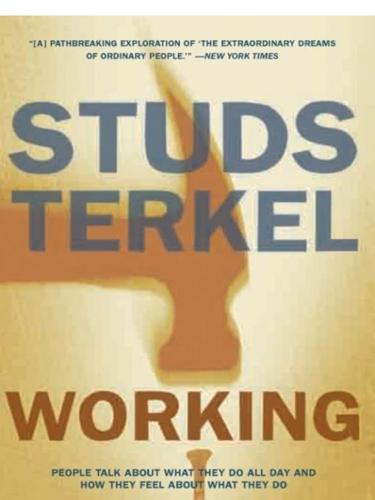
Working: People Talk About What They Do All Day and How They Feel About What They Do
by
Studs Terkel
Published 1 Jan 1974
We’re involved in picking up basic skills that others have neglected to teach the kids. Some of them have feelings of rage, undefined, and they’re acting it out in school—dangerously. We try to calm them down. In a neighborhood like ours it’s very dangerous. It’s low income and there are many ethnic groups. This community has experienced its war on poverty and hasn’t changed. The kids now don’t believe in politics. They don’t believe things will get better for them. There’s a feeling of hopelessness and despair. They’re from ages six to seventeen. The age difference doesn’t really . . . Certainly a fifteen-year-old kid is not going to see an eight-year-old as his equal.

Strategy: A History
by
Lawrence Freedman
Published 31 Oct 2013
A focus on direct action added to the polarization, alienating whites and “breeding despair and impotence” among blacks.14 He agreed with Martin Luther King that poverty and unemployment were significant triggers of race riots, but that led him to explore how blacks and whites could be united in struggle under the aegis of the labor unions. His conviction that the big issues were economic, requiring federal programs, meant that it was vital to support a government prepared to fund a “war on poverty.” This led to another disagreement, which included most of his former colleagues, over whether protest against the Vietnam War should be a priority. The case for coalitions was made with particular force and provocation in a February 1965 article. Rustin observed the “strong moralistic strain in the civil rights movement which would remind us that power corrupts, forgetting that the absence of power also corrupts.”
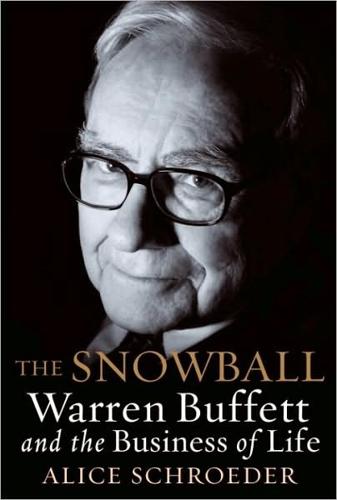
The Snowball: Warren Buffett and the Business of Life
by
Alice Schroeder
Published 1 Sep 2008
Dow one thousand! The market would not break through the barrier again that year, but the euphoria carried on anyway. Buffett had been worrying all year about disappointing his partners. Although he started his latest letter to them cheerily with the news about the huge profits on American Express—“Our War on Poverty was successful in 1965,” he wrote, alluding to President Johnson’s program to bring about a “Great Society” through a vast array of new social-welfare programs—he then delivered the real news in what would be the first of many similar warnings: “I now feel that we are much closer to the point where increased size may prove disadvantageous.”